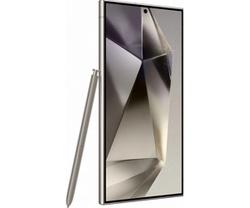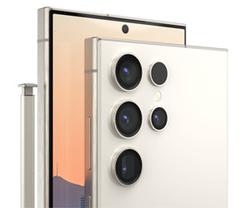Samsung's flagship smartphones are always particularly interesting due to the large number of additional features and functions, so the editorial team at gg could not help but review the company's most important smartphone to date, the Samsung Galaxy S24 Ultra, and tell our readers about their impressions of it. This year, the most significant innovation in Samsung's flagship Galaxy S24 lineup is the Galaxy AI platform based on AI technology, which adds a whole bunch of interesting, perhaps not critical, but very useful features. However, this does not mean that more traditional important aspects have been left out. From a technical point of view, everything is, of course, at the highest level. The screen has become even brighter (although there are now questions about the current firmware), has received stronger glass and a layer that reduces glare. The body now uses titanium, which is stronger than aluminium in previous generations. And the IP68 dust and water protection remains unchanged. Inside is traditionally one of the most powerful Qualcomm Snapdragon 8 Gen 3 processors to date. As always, the camera set will satisfy even the most demanding users. To this should be added a convenient shell and good battery life. Perhaps the only thing that is surprising is the low charging speed, which has not changed for several years. The smartphone supports a charging power of only 45W, while many mid-range smartphones already charge much faster.
6 reasons to buy Samsung Galaxy S24 Ultra:
- You want the most technologically advanced Android smartphone
- Bright AMOLED display with Gorilla Glass Armour and anti-reflective layer
- Top-of-the-line Qualcomm Snapdragon 8 Gen 3 processor
- Excellent cameras with a maximum range of features
- Digital S Pen with additional features
- A set of interesting and useful Galaxy AI features based on machine learning and neural networks
1 reasons not to buy Samsung Galaxy S24 Ultra:
- Slow charging speed, which has not improved in recent years
Quick Links:
- What does Samsung Galaxy S24 Ultra come with?
- What does Samsung Galaxy S24 Ultra look like?
- How good is the screen of Samsung Galaxy S24 Ultra?
- What are the ways to unlock Samsung Galaxy S24 Ultra?
- What about the performance, memory, sound, and battery life of Samsung Galaxy S24 Ultra?
- How user-friendly is the Samsung Galaxy S24 Ultra interface and what is Galaxy AI?
- What does the S Pen do in Samsung Galaxy S24 Ultra?
- How good are the Samsung Galaxy S24 Ultra cameras?
- In total
The price of the modification with 12 GB of RAM and 256 GB of internal memory is 1150 $. The competition is very simple. The closest competitors of Samsung Galaxy S24 Ultra in terms of technical capabilities are only Apple flagships. Although experience shows that users do not often decide to change the ecosystem from Android to iOS and vice versa. You can also mention Google Pixel, which has a slightly narrower audience of pure Android fans.
What's included with Samsung Galaxy S24 Ultra?
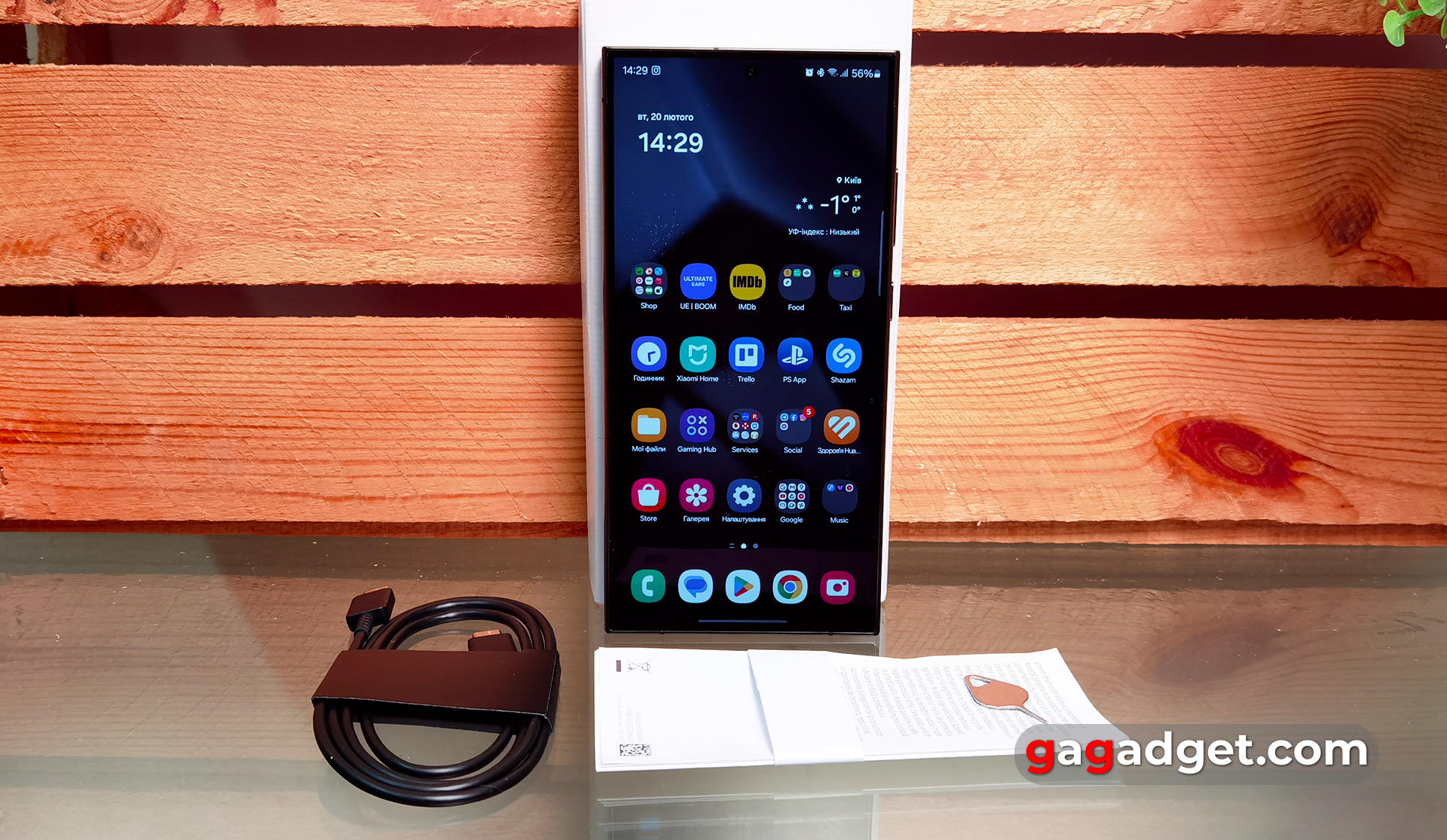
Samsung hasn't changed its minimalist principles in terms of flagship bundling over the past few years, so you won't find anything interesting with the Galaxy S24 Ultra. The box contains the smartphone itself, documentation, a tray eject tool, and a Type-C cable on both sides.
What does Samsung Galaxy S24 Ultra look like?
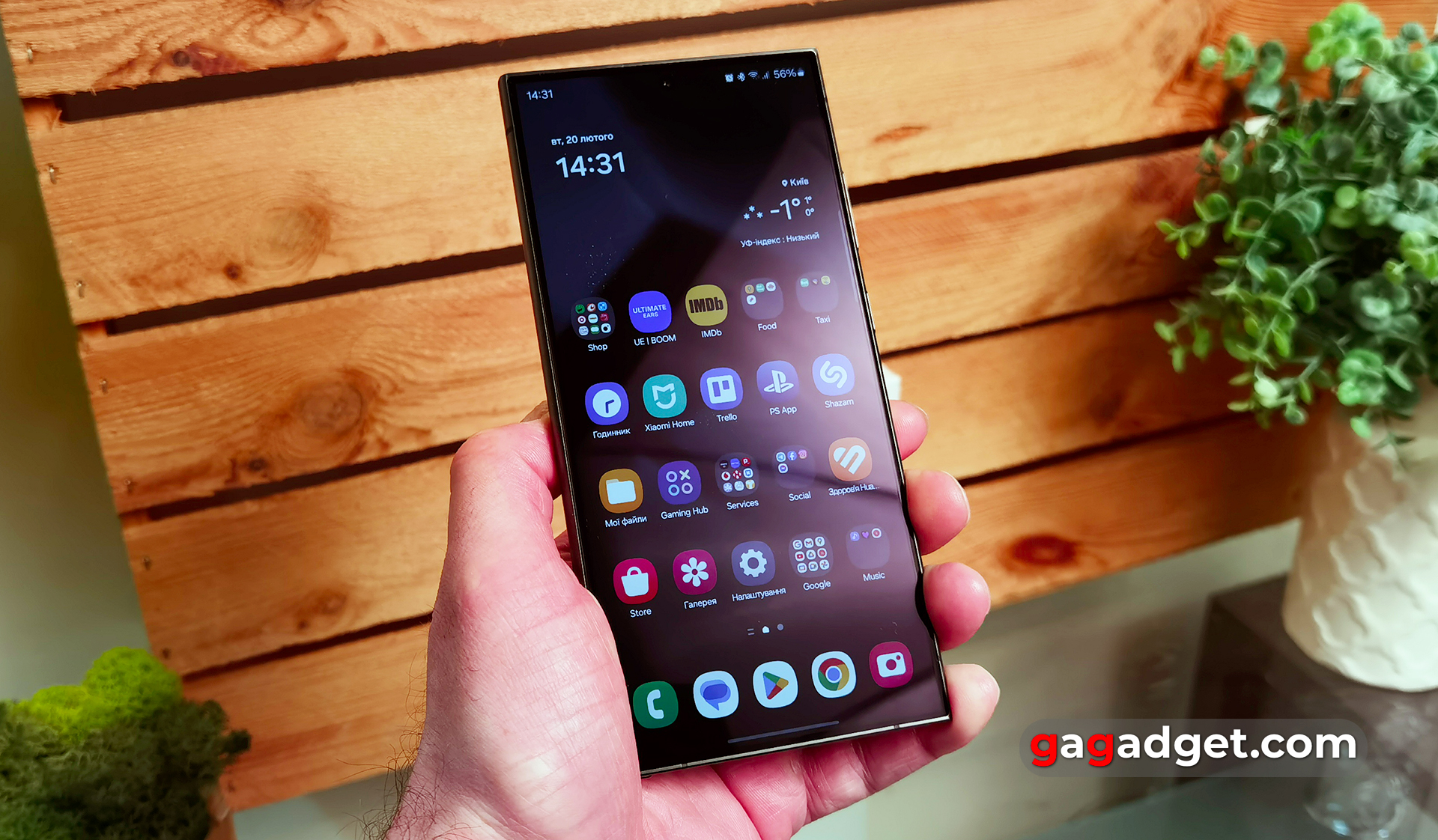
At first glance, the appearance and design are almost identical to last year's Galaxy S23 Ultra, everything is quite familiar. Rectangular shape with right angles, minimal bezels around the perimeter of the display and a camera in a small round hole. But there are still some differences, and they are quite significant. The display has slightly different, more elongated proportions, which we will discuss in more detail later. The display and the back are protected by a new glass Corning Gorilla Armour. Of course, it is stronger than last year's Corning Gorilla Glass Victus 2, more resistant to scratches and drops. But another of its features is that the new glass is much less glare. At least, that's what Samsung claims. There's no way to compare it with the previous model, so we'll have to trust the company's marketing. Another important difference is that Samsung has decided to make the screen completely flat. Surely many users will positively evaluate this step.

This year's frame is made of titanium. It is stronger than aluminium and feels a little different. Titanium has a nice matte texture. There are traditional plastic inserts around the perimeter for stable operation of wireless interfaces. The side edges have a slightly rounded shape, which has a positive effect on the ease of use of the smartphone. And this is especially important with such dimensions.

The layout of the elements on the edges remains the same, the differences are minimal. The buttons are located on the right side. They are large and relatively conveniently located. When used with the right hand, there are no complaints at all. With the left hand, you still have to reach the volume buttons a little bit.
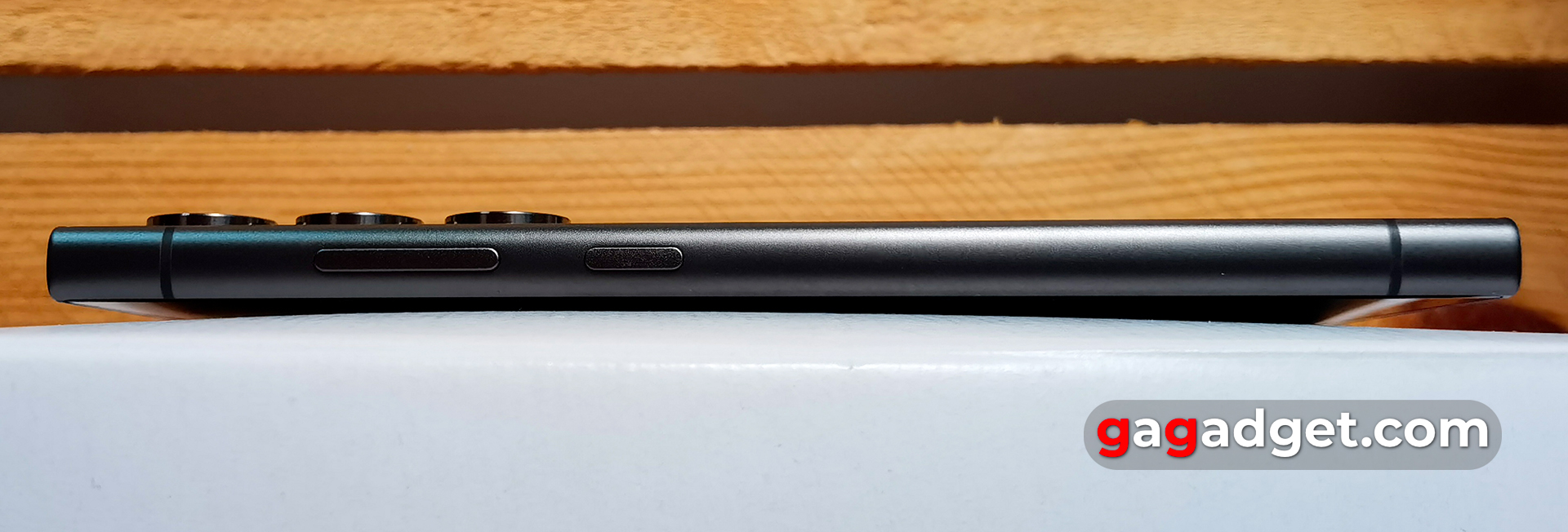
There are now two microphones on the top edge of the smartphone instead of one. In the previous generation, an additional microphone was placed on the bottom edge.
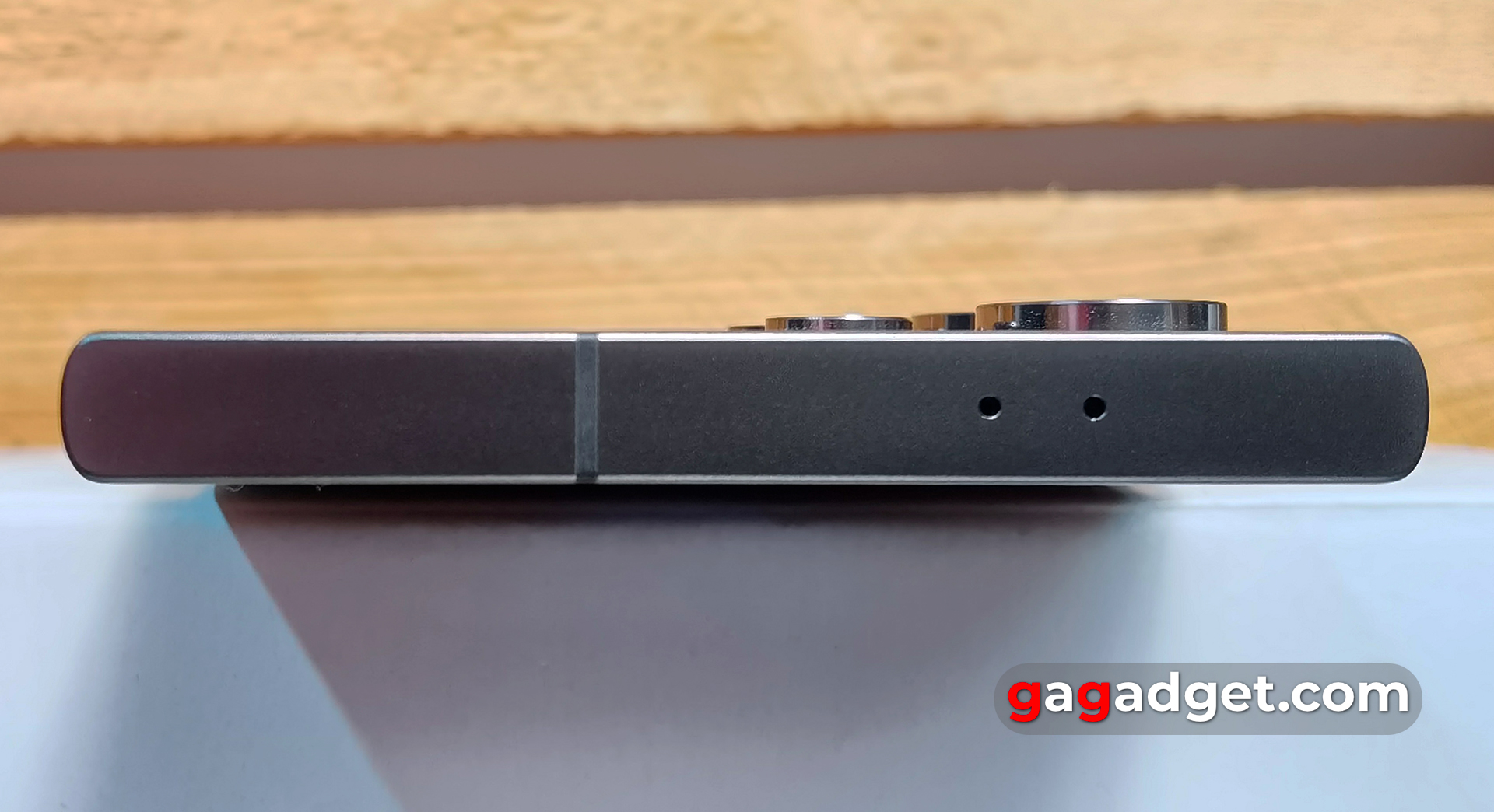
Below is a SIM card tray, the main external speaker, a USB Type-Cconnector, a microphone and an S Pen. The speaker is now designed as a thin hole instead of a series of small ones, as it was before. The S Pen is located in its usual place, conveniently accessible with the left hand. The button for its removal has become flatter.

The pen itself S Pen if changed, these changes are almost imperceptible. The shape and the single physical button are familiar from previous models.
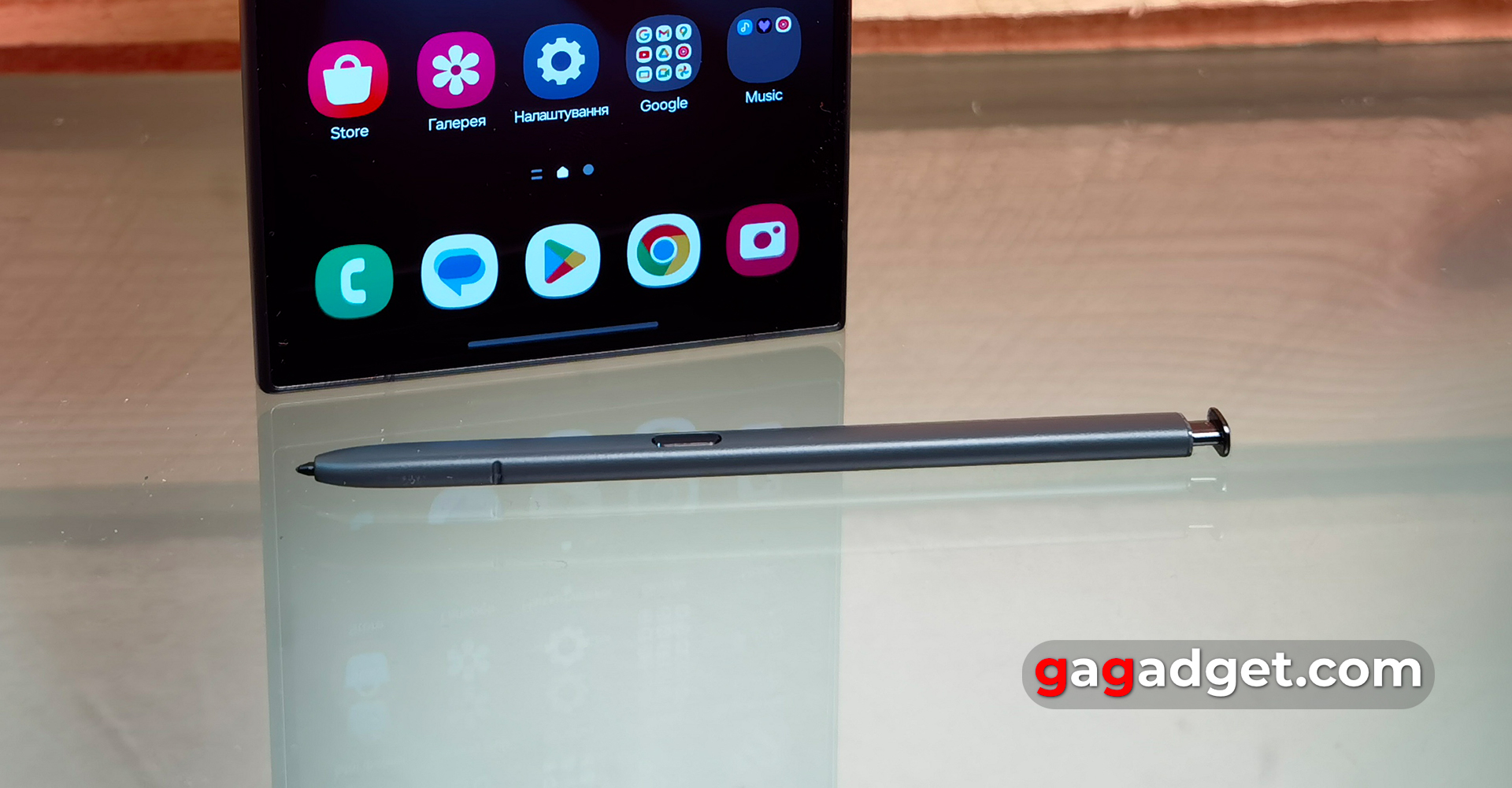
Two physical SIM cardscan be installed in the smartphone, and there is support for eSIM. Memory cards are not supported.

The back panel of the Samsung Galaxy S24 Ultra is also made of the new Corning Gorilla Armour glass. The coating is matte, fingerprints are almost invisible and it looks very aesthetically pleasing. Although it is extremely difficult to distinguish it from last year's Galaxy S23 Ultra. The smartphone is available in four colours: black, silver and more original yellow and purple. I reviewed the classic black one.
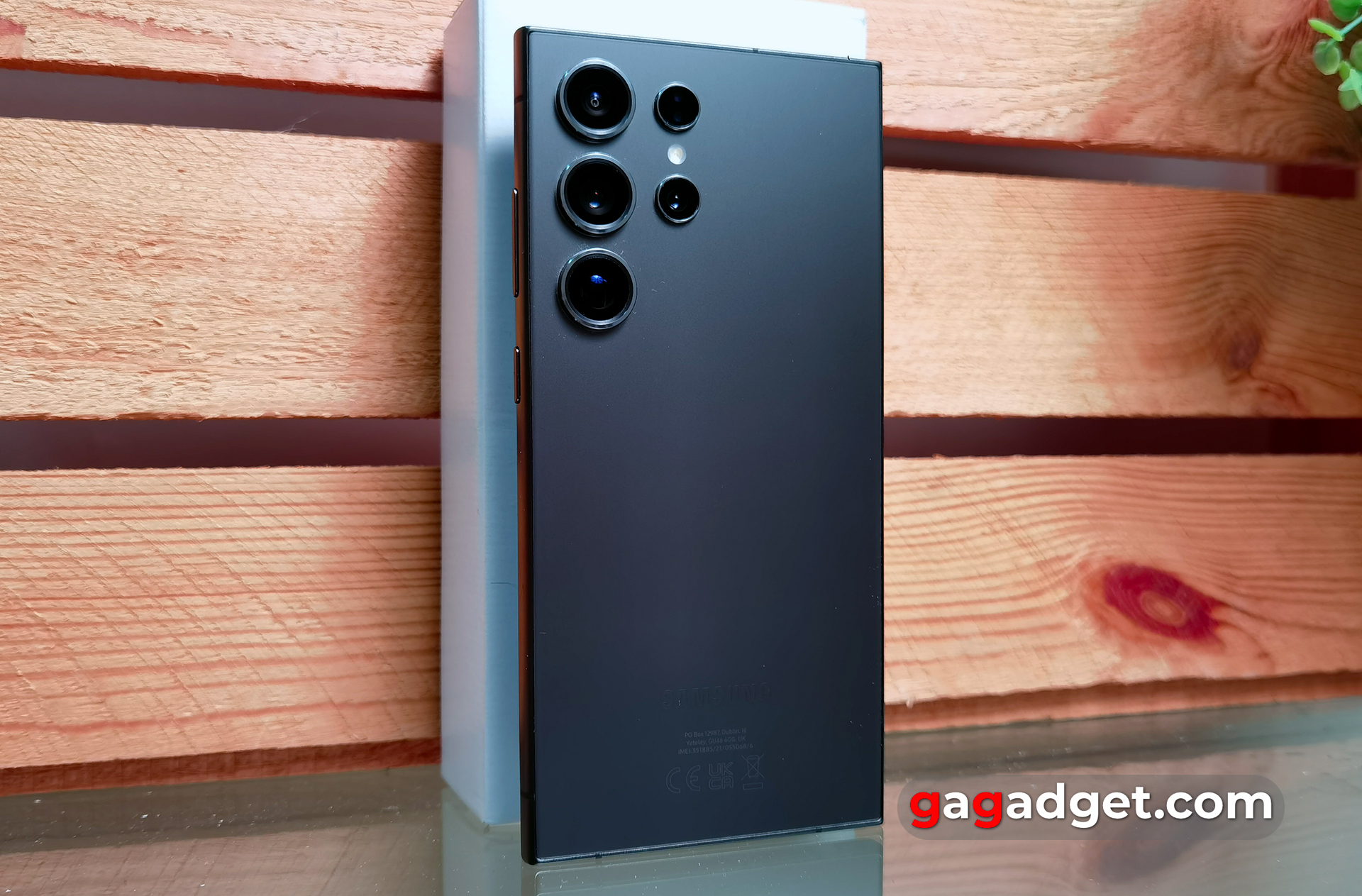
But it was the purple version that seemed most interesting to me:

The set of rear cameras looks exactly the same as last year: in the form of separate modules that protrude quite strongly above the rear glass. The solution is standard and looks quite nice, but dust constantly collects between the individual modules and the bezels can be damaged quite easily.

The dimensions are 162.3x79x8.6 mm, and the weight is 232 g. The smartphone is quite a bit shorter and thinner, but wider than the Samsung Galaxy S23 Ultra. The weight has decreased by only 2 g, so it will be extremely difficult to distinguish the smartphones by feel. The IP68 water and dust protection hasn't gone away.
How good is the Samsung Galaxy S24 Ultra's screen?
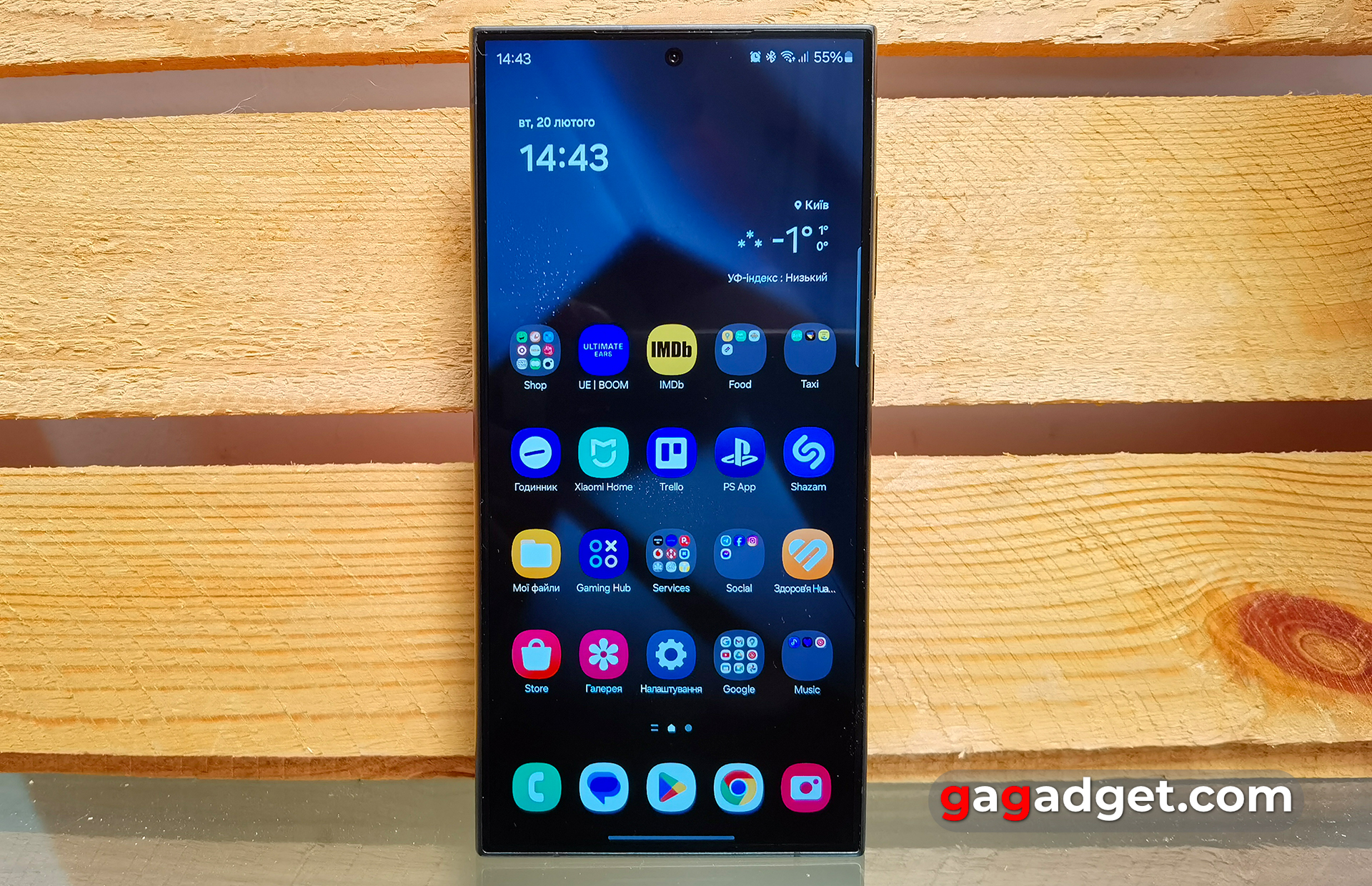
Samsung Galaxy S24 Ultra has an updated display that has a similar diagonal to the Galaxy S23 Ultra 6.8 inches, but uses a different matrix. It has a resolution of 3120×1440, a pixel density of 505 ppi, and an aspect ratio of 19.5:9. For comparison, the previous model had 3088×1440, 500 ppi, 19.3:9. The display is now completely flat. It uses a matrix Dynamic LPTO AMOLED 2X with an adaptive refresh rate from 1 to 120 Hz. The peak brightness has increased from 1750 cd/m² to 2600 cd/m². This, combined with the anti-reflective Gorilla Glass Armour layer, should give a great picture even in very bright sunlight. In bright display mode, the colour gamut should be DCI-P3. There is support for the standards HDR10, HDR10+, but no Dolby Vision. So far, the weather hasn't been very sunny, but overall, the impressions of using the display are very positive. In the display settings, you can choose between a dark and light theme (or activate automatic switching), adjust the brightness (there is a high-brightness mode), select the screen refresh rate (adaptive 1-120 Hz and standard 60 Hz), select the resolution (HD+, FHD+ or QHD+), enable the eye comfort function (blue level reduction), adaptive colour tone (automatic adjustment of colour temperature depending on the ambient light), colour display mode (saturated or natural sRGB), adjust the interface scale and font, and Always on Display. There are really a lot of settings, almost everything you can think of.
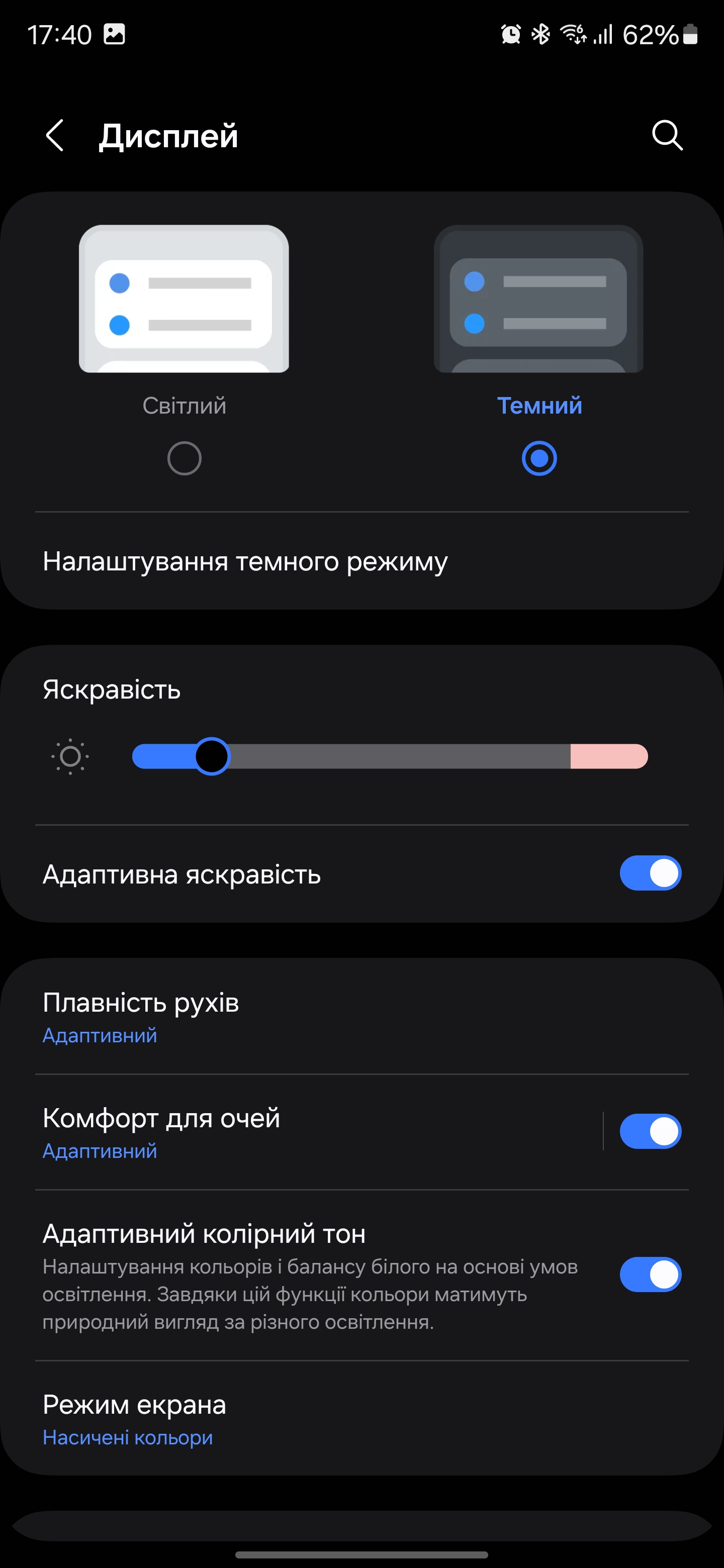
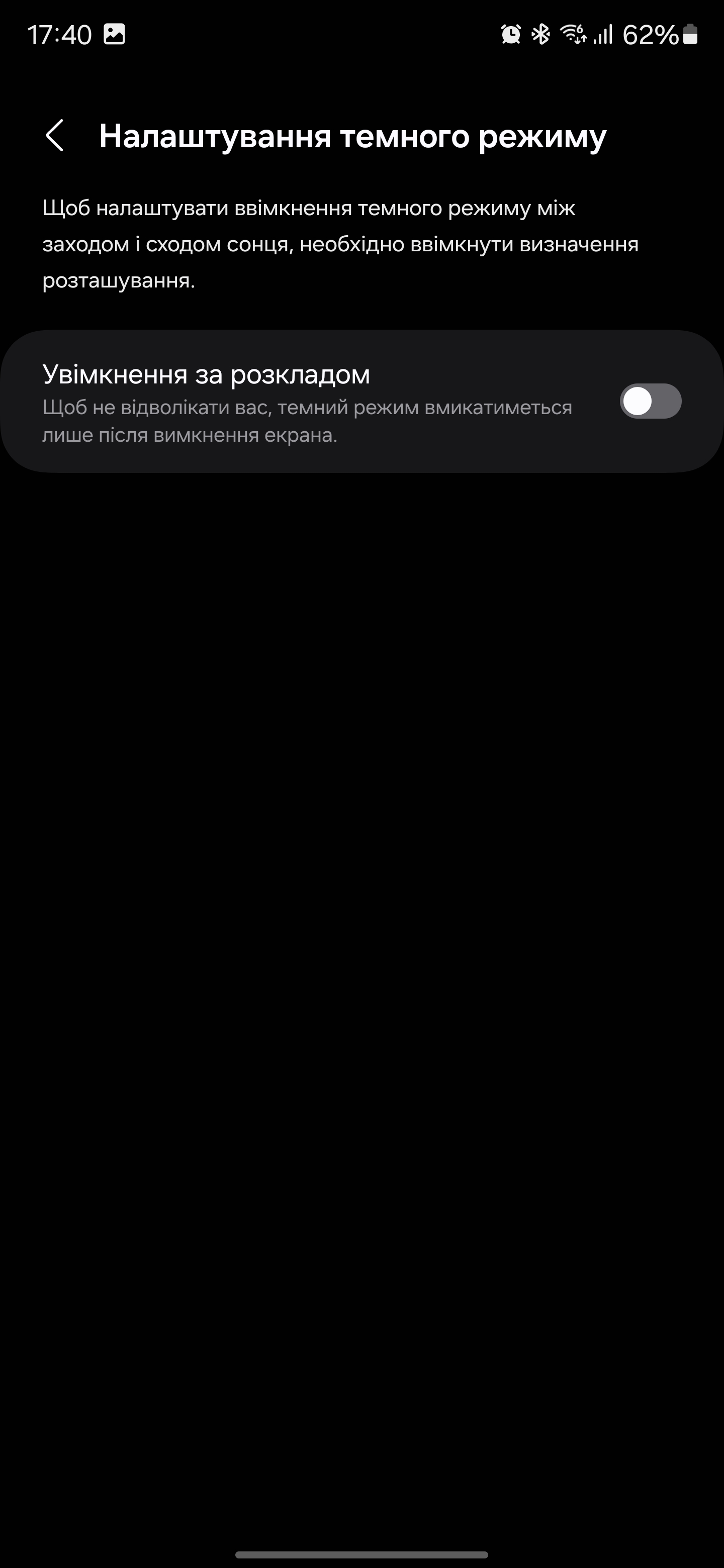
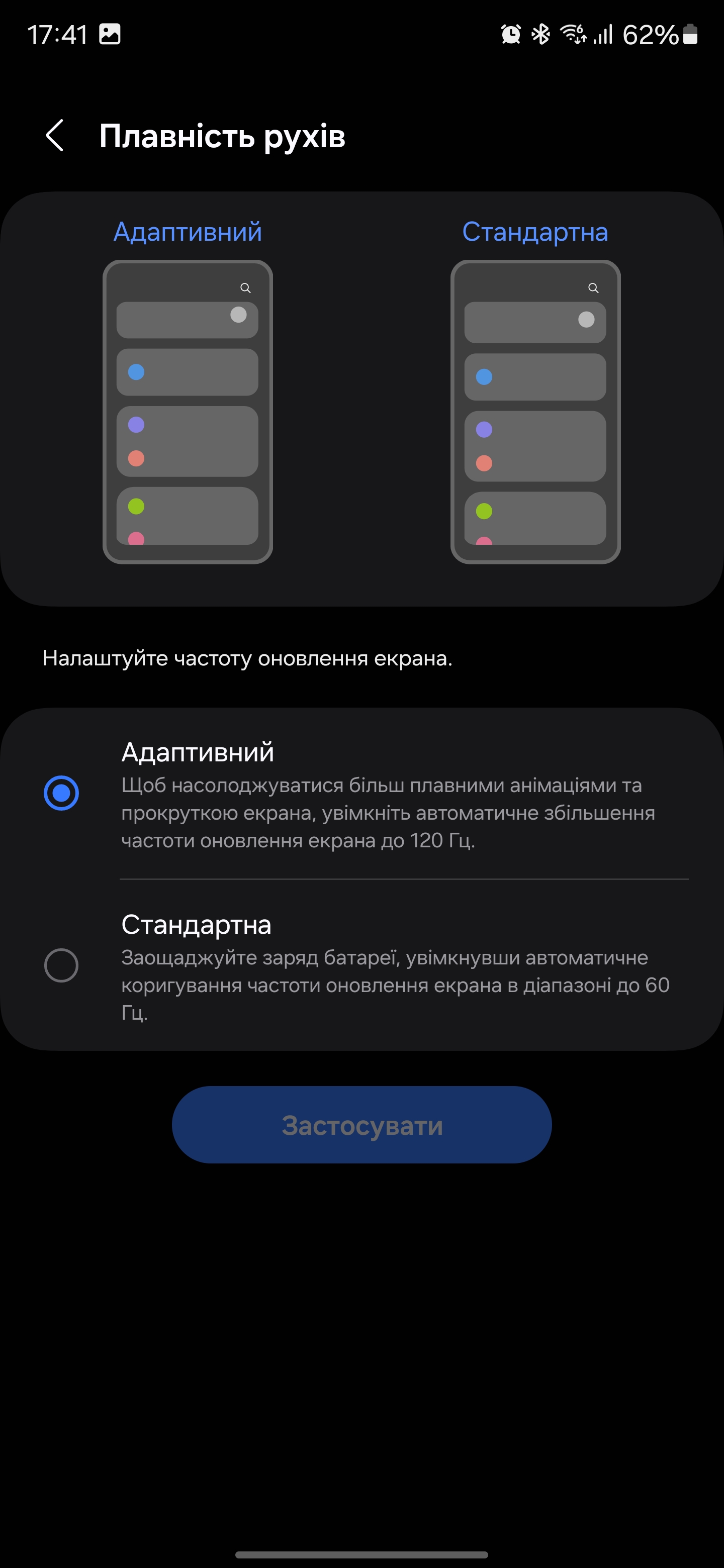
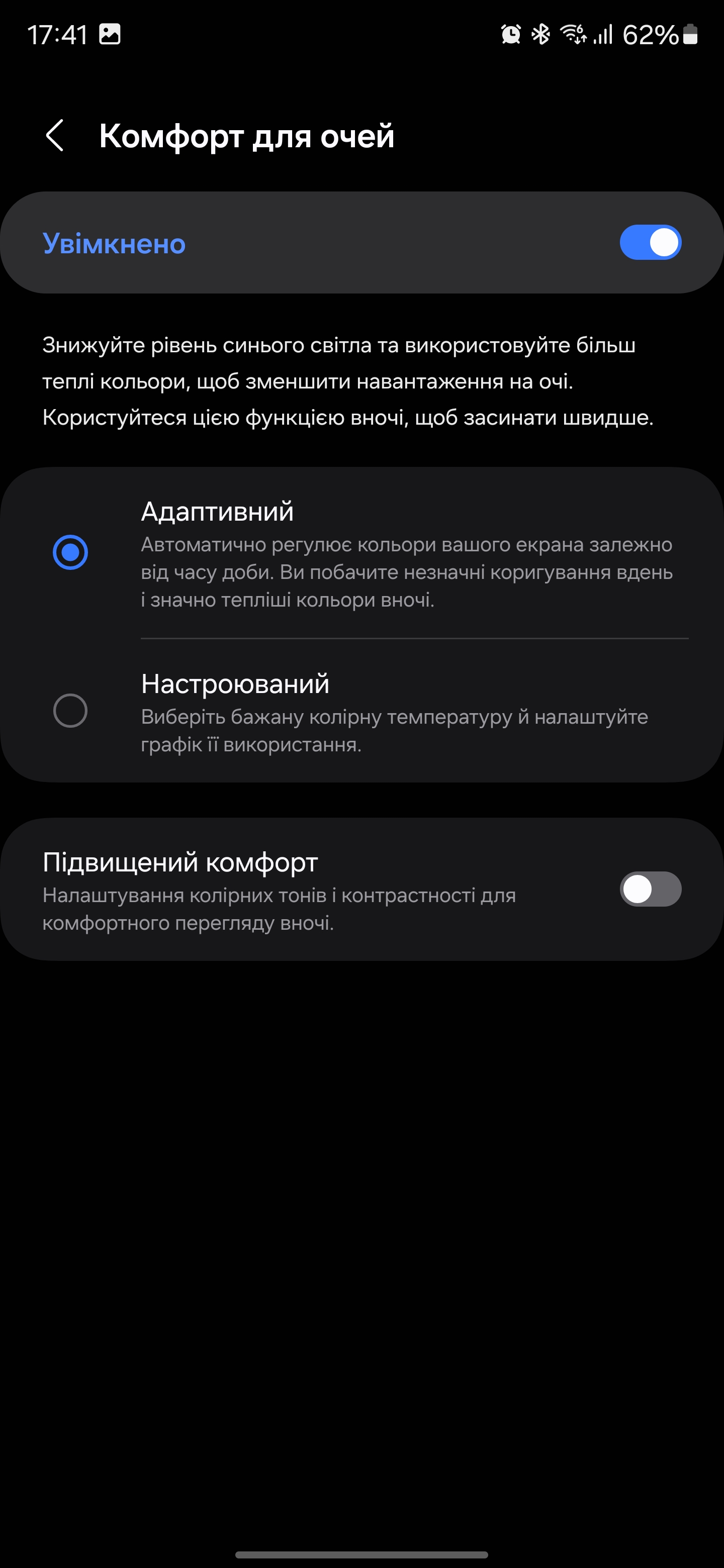
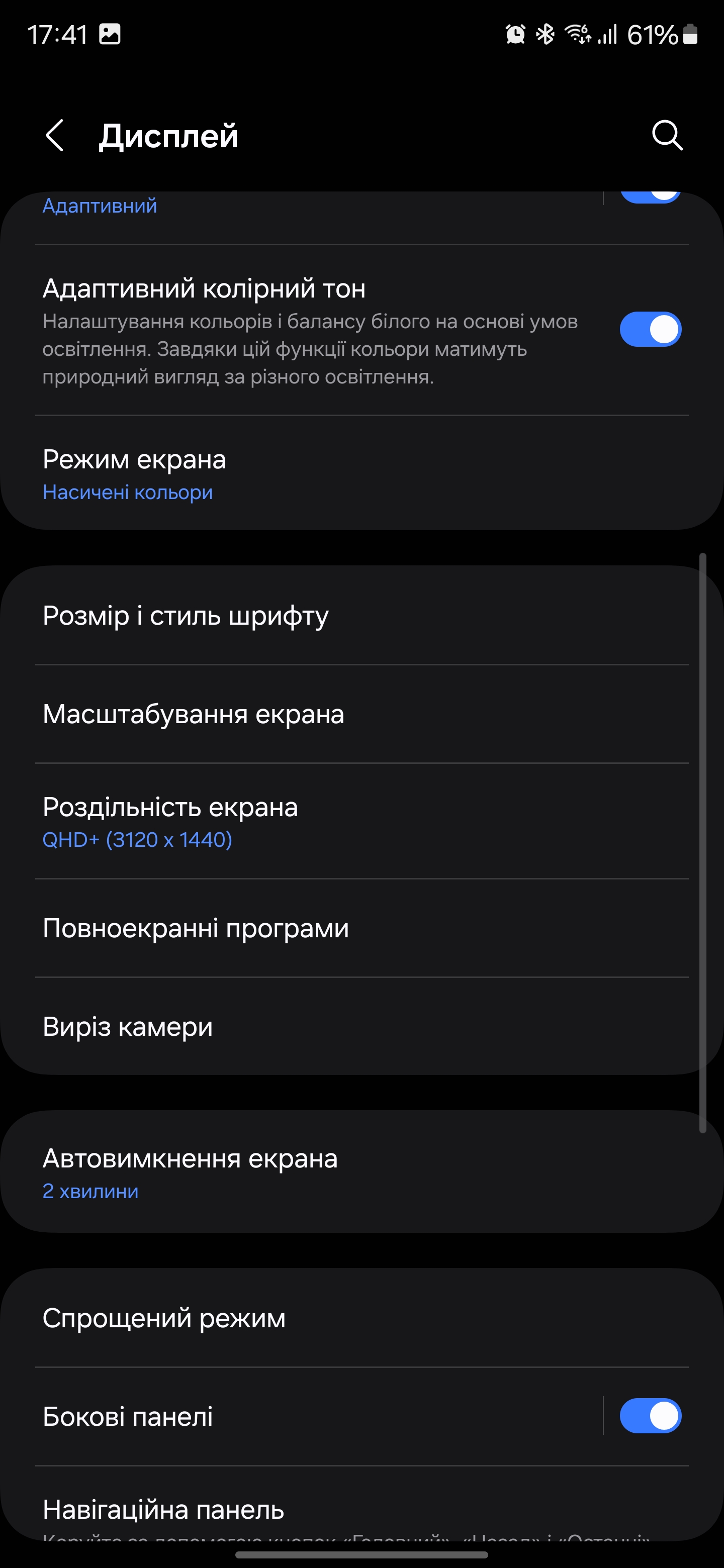



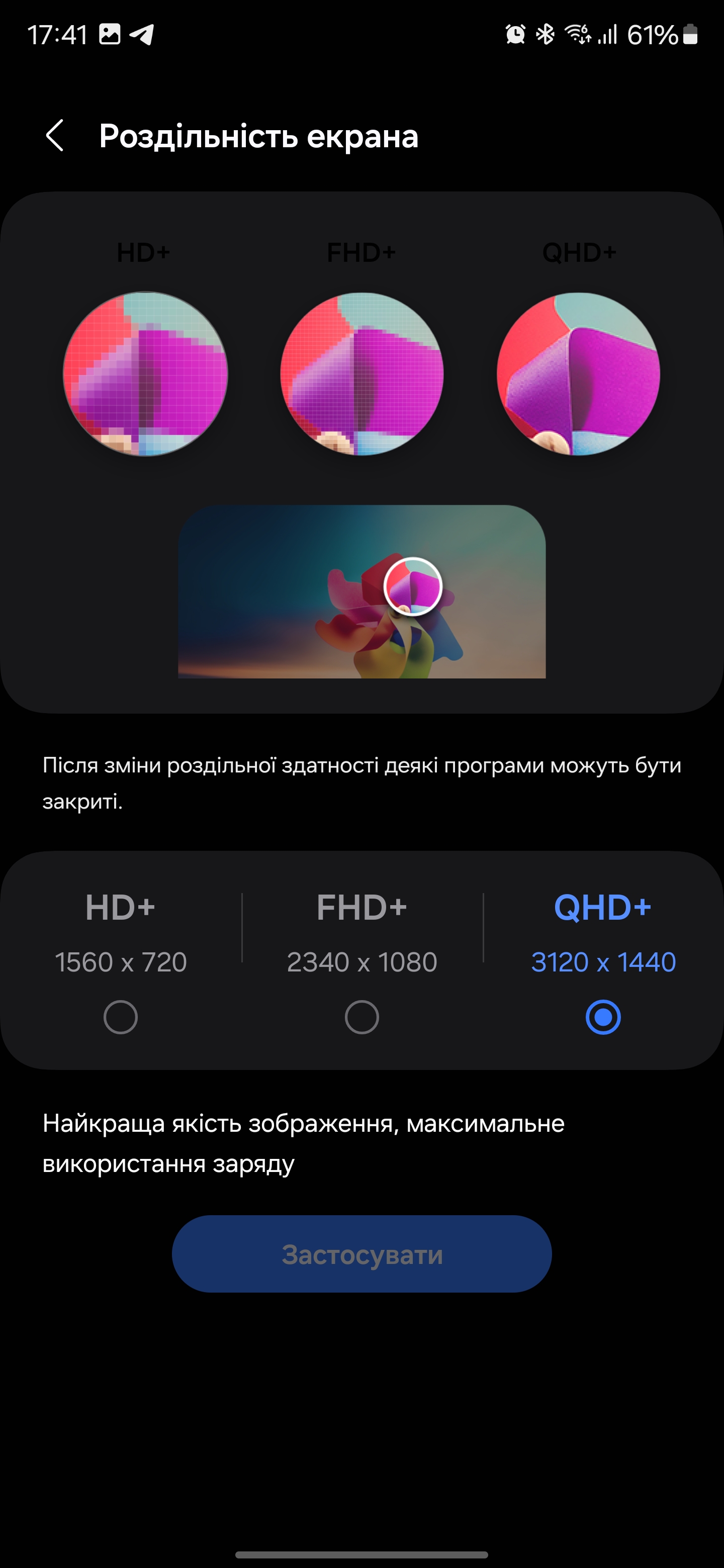
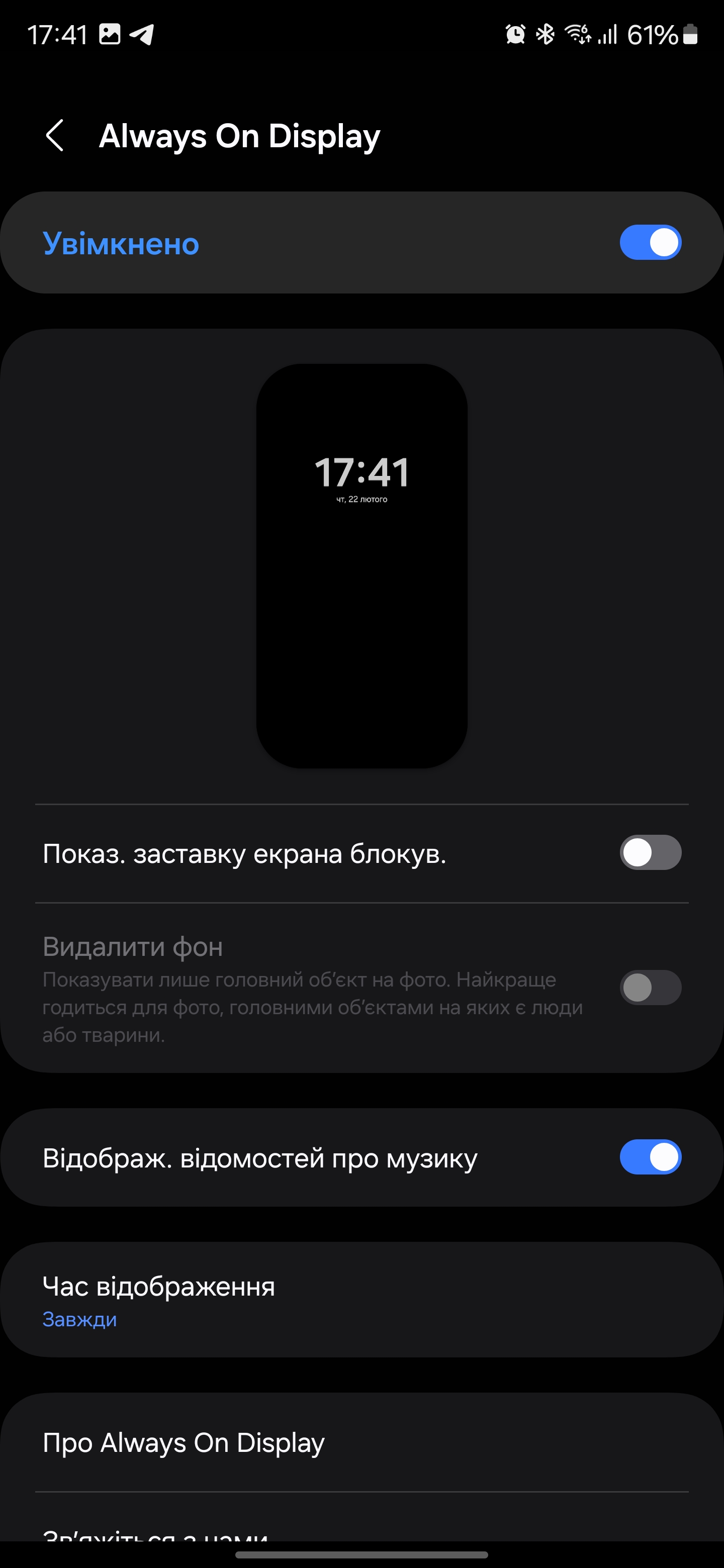






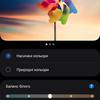





And now a few words about less pleasant things. There are some problems with the current firmware that affect the display. Firstly, in Saturated mode, the colour gamut is only slightly wider than sRGB. This is very strange: usually Samsung screens have a much wider colour gamut. Secondly, when switching modes, there is almost no difference in the colour display, and the adaptive colour tone function does not work. So we are waiting for an update, and the hardware measurements can be called intermediate for now. Mmaximum brightness in the Saturated mode was 721.58 cd/m2, the colour gamut is minimally higher than sRGB, the colours are slightly inclined towards cold shades.





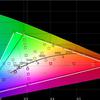


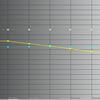

In the Natural mode, the colour gamut is close to sRGB, the shades, on the contrary, are slightly warmer than with the reference values. The brightness is slightly lower: 694.671 cd/m2.


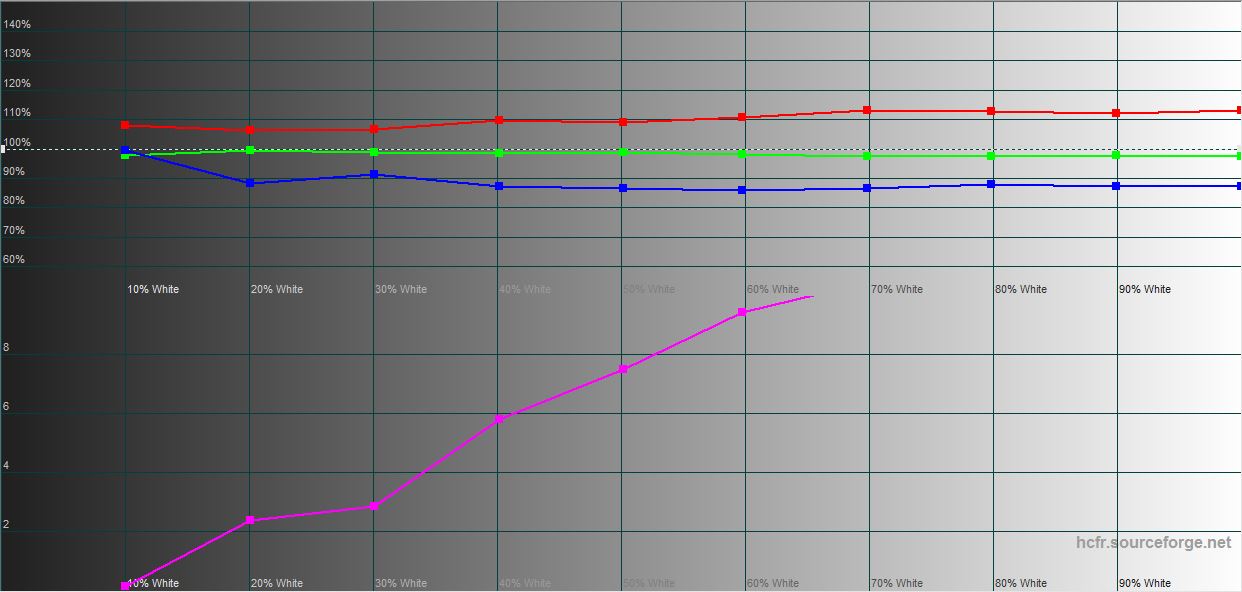

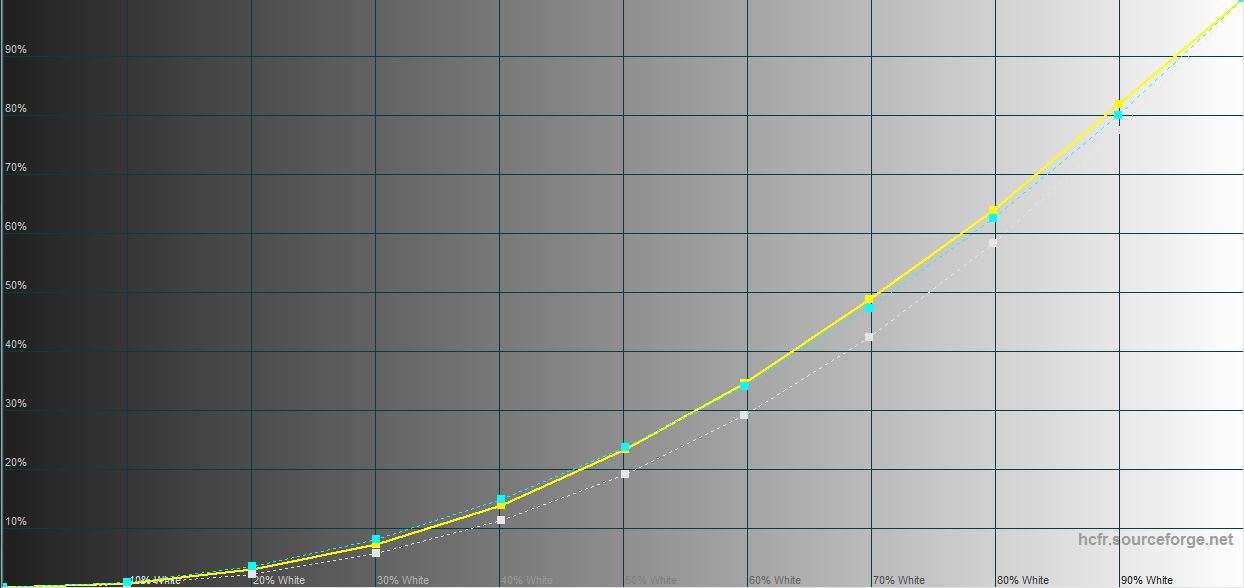





Comparison with other models:
| Device name | White field brightness, cd/m2 |
Black field brightness, cd/m2 |
Contrast |
|---|---|---|---|
| Samsung Galaxy S24 Ultra | 721.58 | 0 | ∞ |
| Samsung Galaxy S23 Ultra | 696.675 | 0 | ∞ |
| Samsung Galaxy Z Flip3 | 460.6 | 0 | ∞ |
| Samsung Galaxy Z Fold3 | 479.32 | 0 | ∞ |
| Xiaomi 11T Pro | 493.872 | 0 | ∞ |
| ASUS ROG Phone 5 | 482.347 | 0 | ∞ |
| Samsung Galaxy S21+ | 437.906 | 0 | ∞ |
| Sony Xperia 1 | 394.97 | 0 | ∞ |
| Huawei P30 Pro | 447.247 | 0 | ∞ |
What are the ways to unlock Samsung Galaxy S24 Ultra?

To identify the owner, Samsung Galaxy S24 Ultra uses a typical modern set of fingerprint scanner and face recognition using the front camera. With face recognition, everything is typical. It works quickly in sufficient light. Additional settings include preventing recognition when eyes are closed, increasing the brightness of the display in low light, and the ability to register additional facial features for faster recognition. A few words about the scanner are worth saying. As in the company's previous top smartphones over the past couple of years, the ultrasonic fingerprint scanner is used under thedisplay. It differs favourably from the optical one in that it works with wet fingers. It seems that Samsung has finally finalised the software, because it is the fastest in-display scanner I have ever used. In terms of speed, it's on par with classic capacitive scanners.
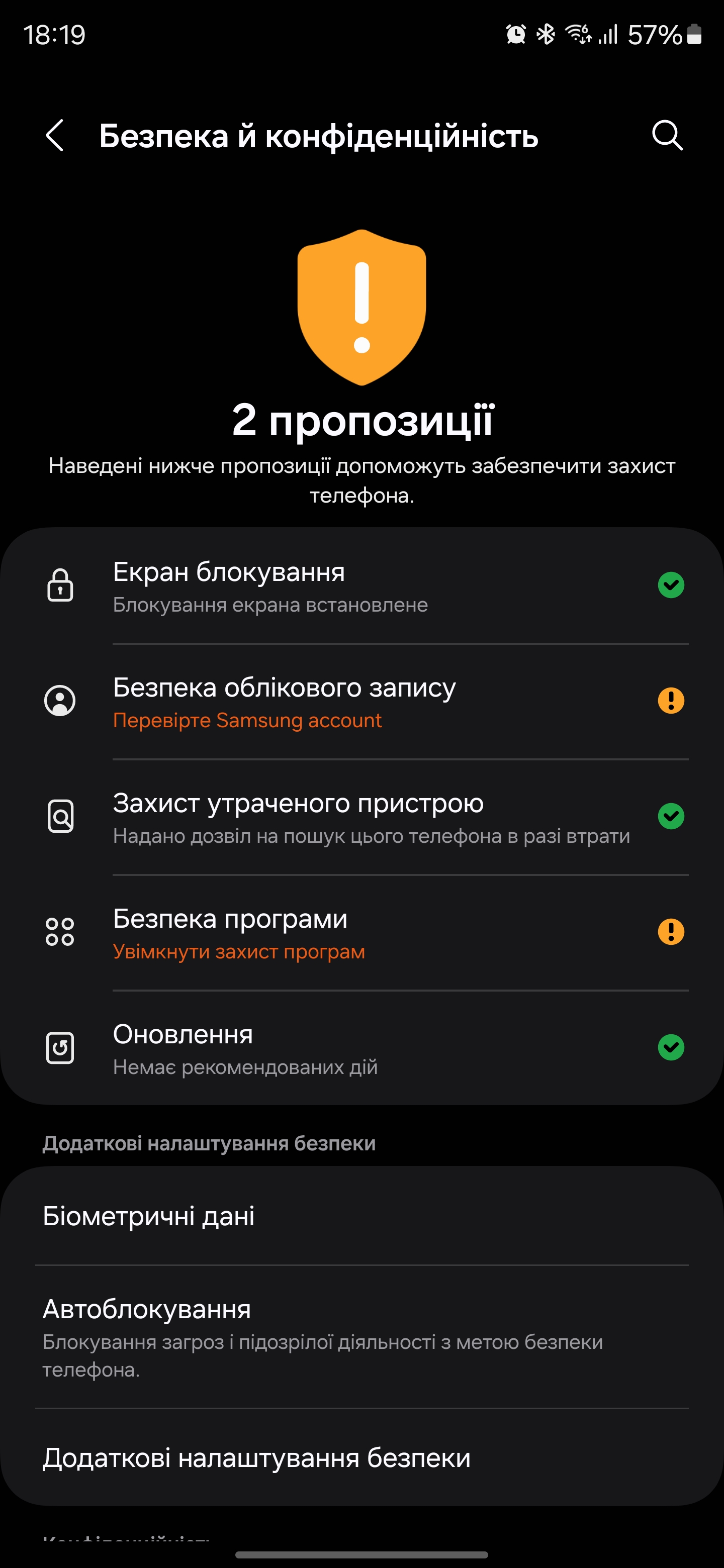








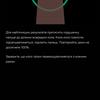
What about the performance, memory, sound, and battery life of the Samsung Galaxy S24 Ultra?
Previously, Samsung released the entire line of Galaxy S flagships with a single processor, Exynos or Snapdragon. This year, it turned out a little differently: the younger Samsung Galaxy S24 and Galaxy S24+ are equipped with a new branded processor Samsung Exynos 2400. And the main flagship Samsung Galaxy S24 Ultra received the top-end Qualcomm Snapdragon 8 Gen 3. This is one of the most powerful mobile processors available today. It is manufactured using a 4-nm process technology and has a very interesting configuration of cores 1+3+3+2. Namely: one powerful ARM Cortex-X4 core with a frequency of up to 3.39 GHz, three Cortex-A720 cores of 3.1 GHz, two Cortex-A720 cores of 2.9 GHz and two energy-efficient Cortex-A520 cores of 2.2 GHz. The graphics are handled by the Adreno 750 accelerator with a frequency of 1 GHz. It is complemented by 12 GB RAM LPDDR5X. The internal drive can have a capacity of 256/512 GB, or 1 TB, using fast memory UFS 4.0. The drive demonstrates speeds close to the top M.2 SSD PCIe 3.0x4: about 3400 MB/s when reading data and 3000 MB/s when writing.
Samsung Galaxy S24 Ultra Performance Tests
As expected, the Samsung Galaxy S24 Ultra demonstrates very high results in synthetic tests. The performance reserve of the smartphone will be enough for several years. There will be no problems with applications or heavy games.


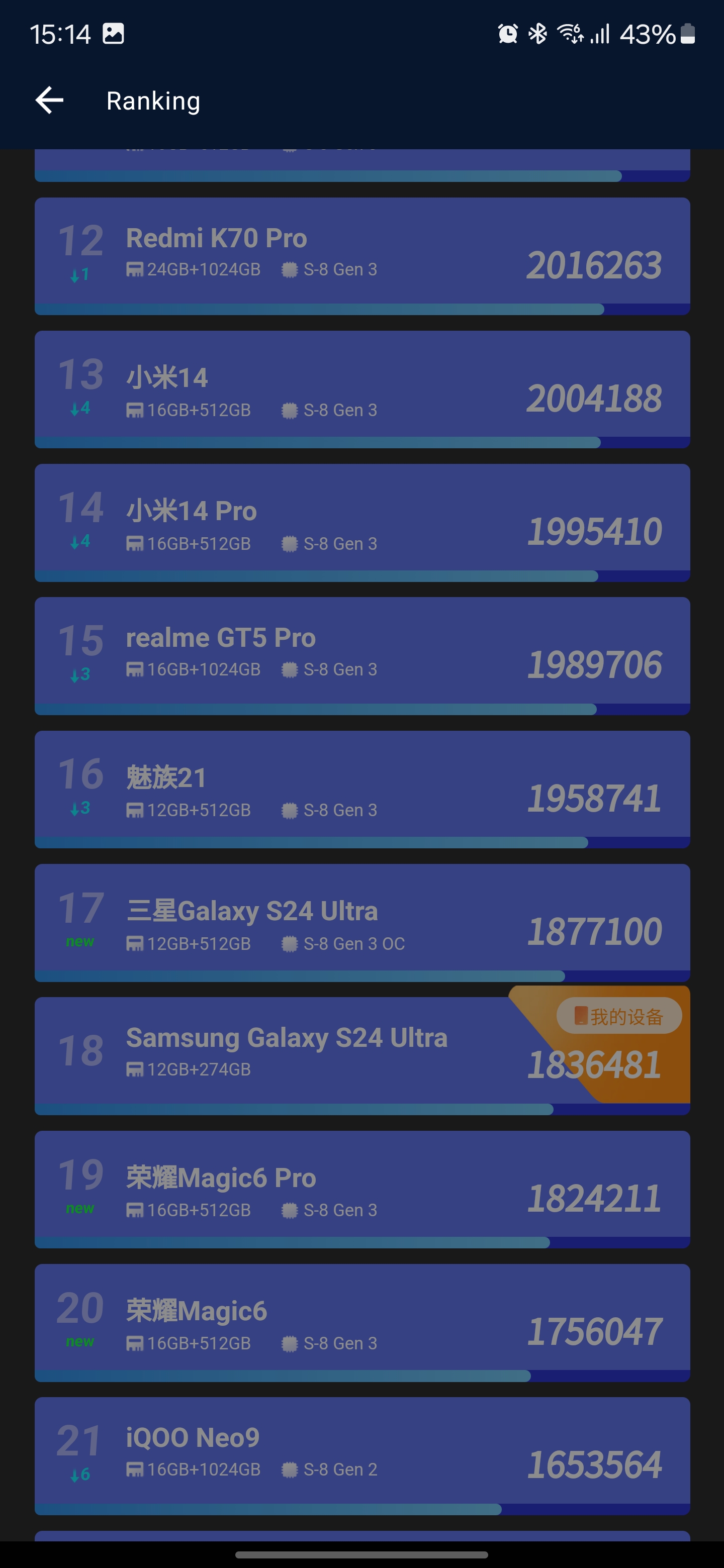

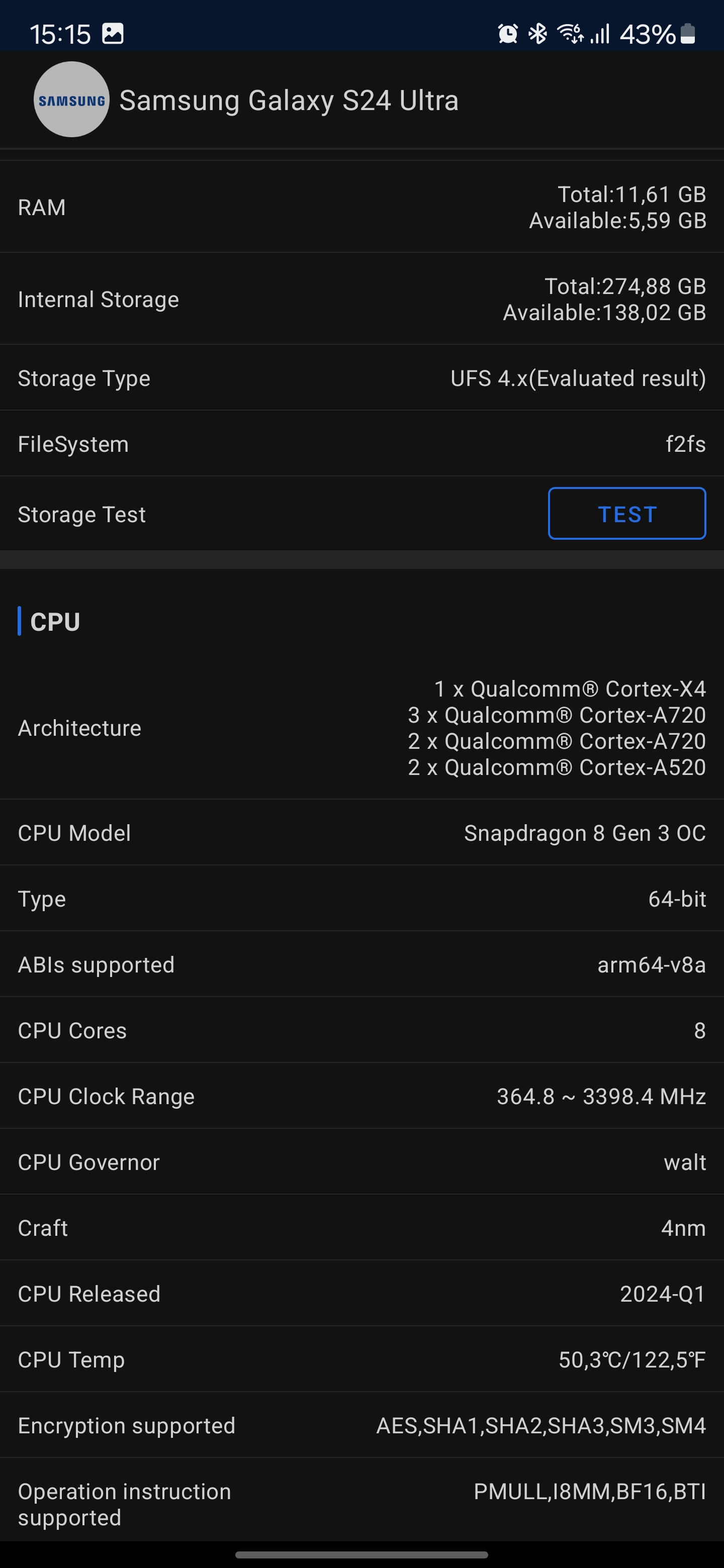

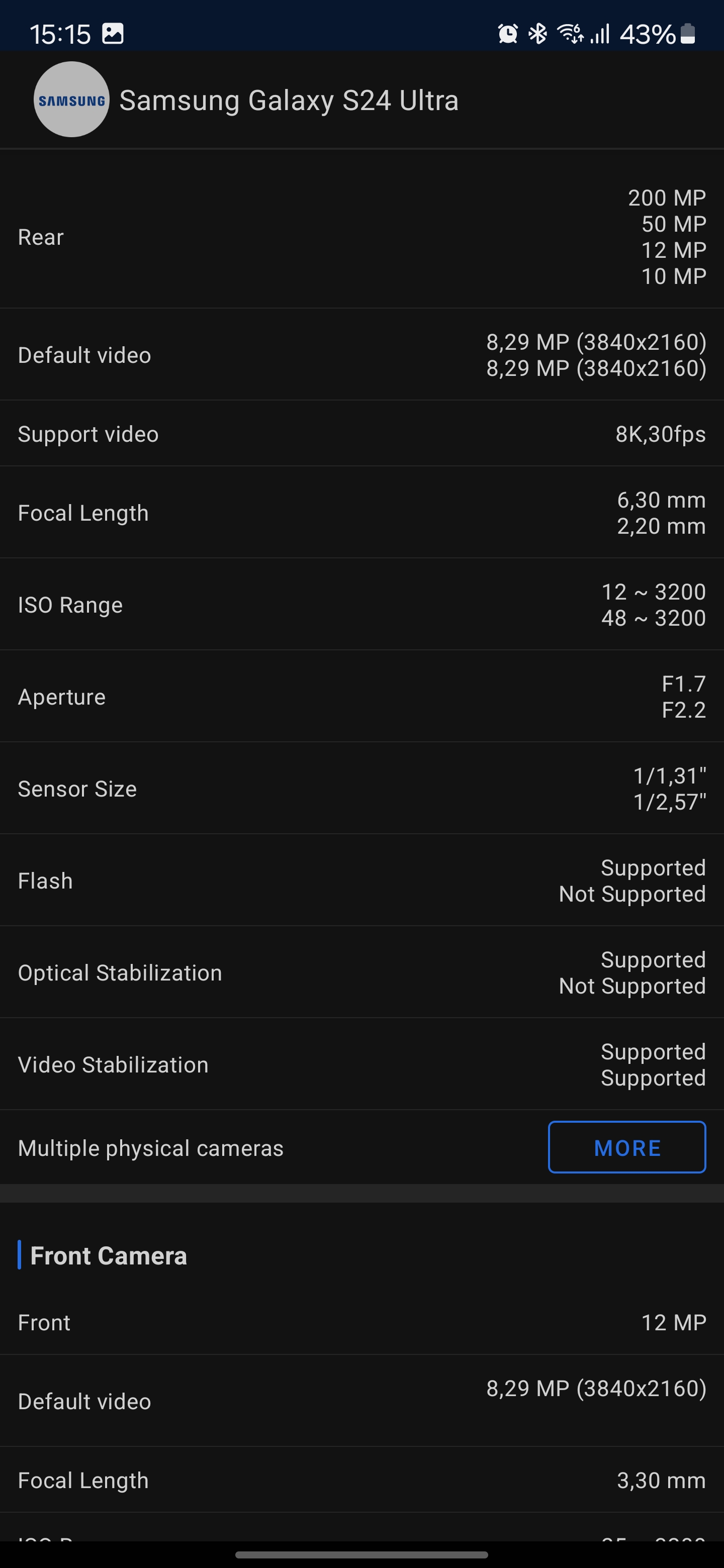
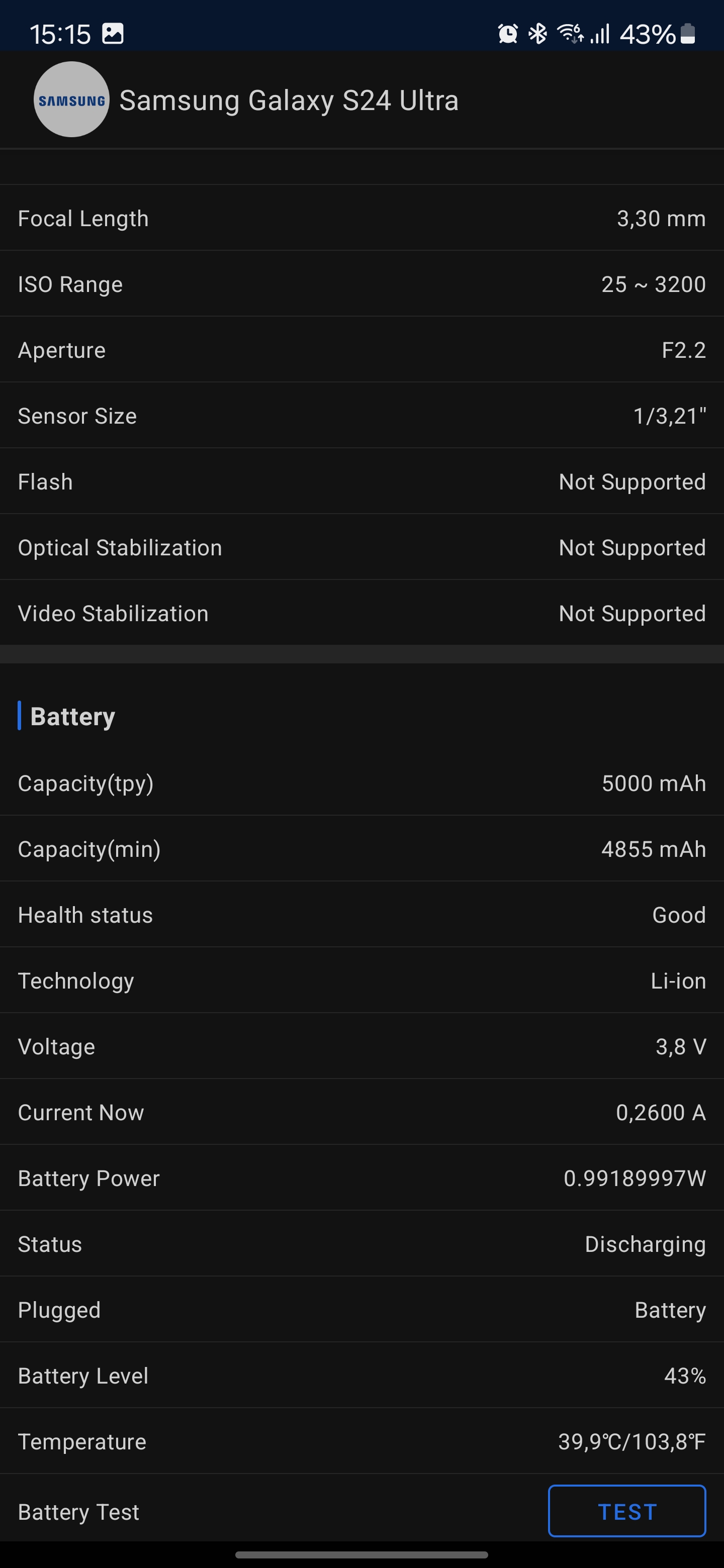
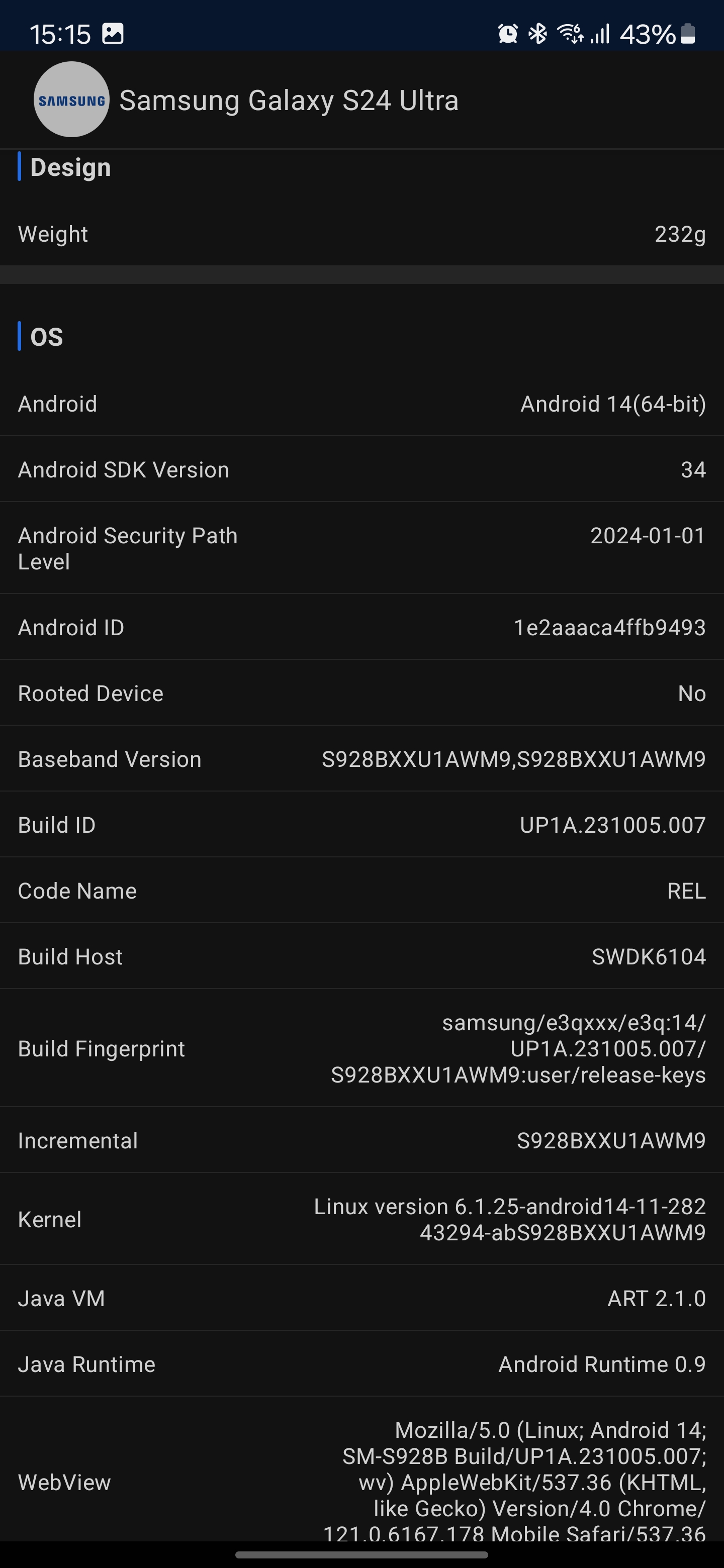
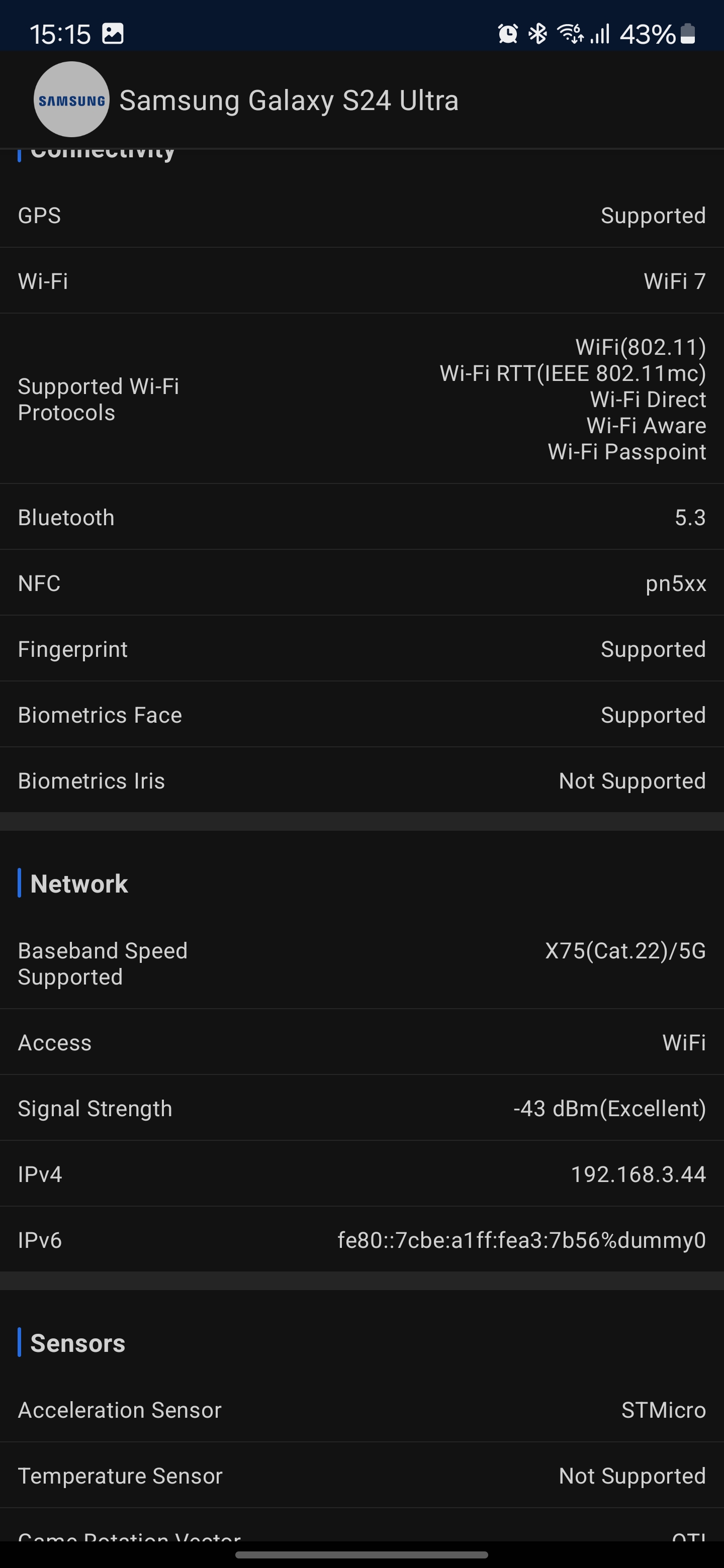
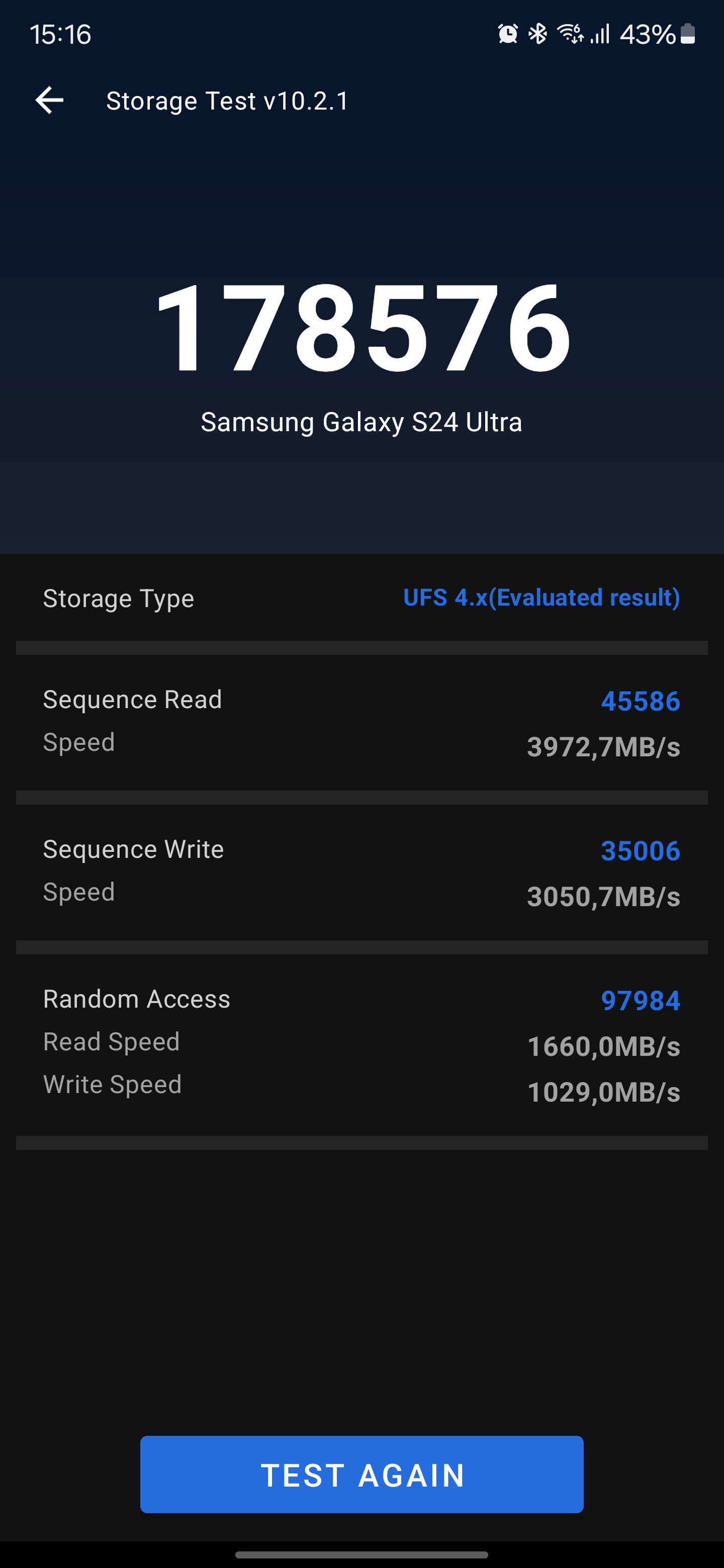

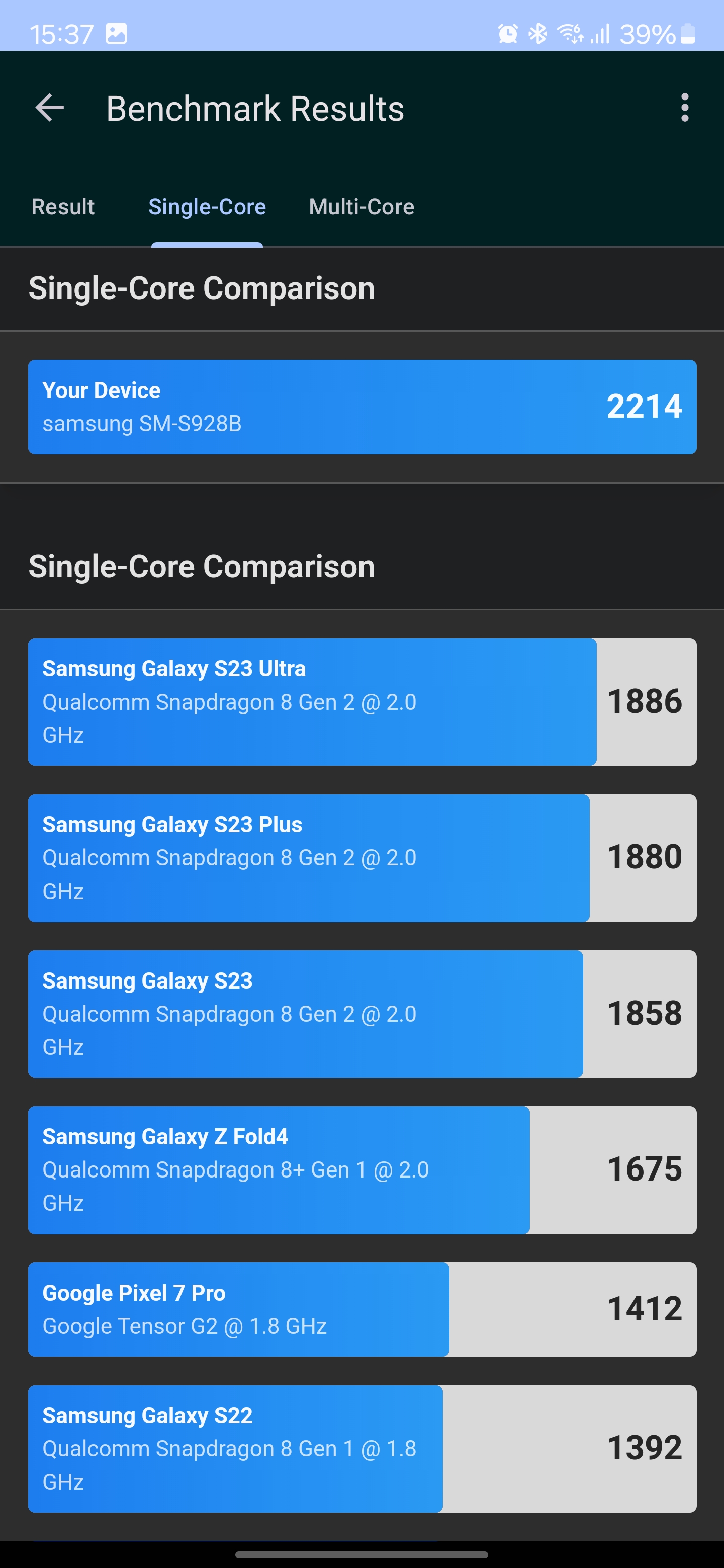

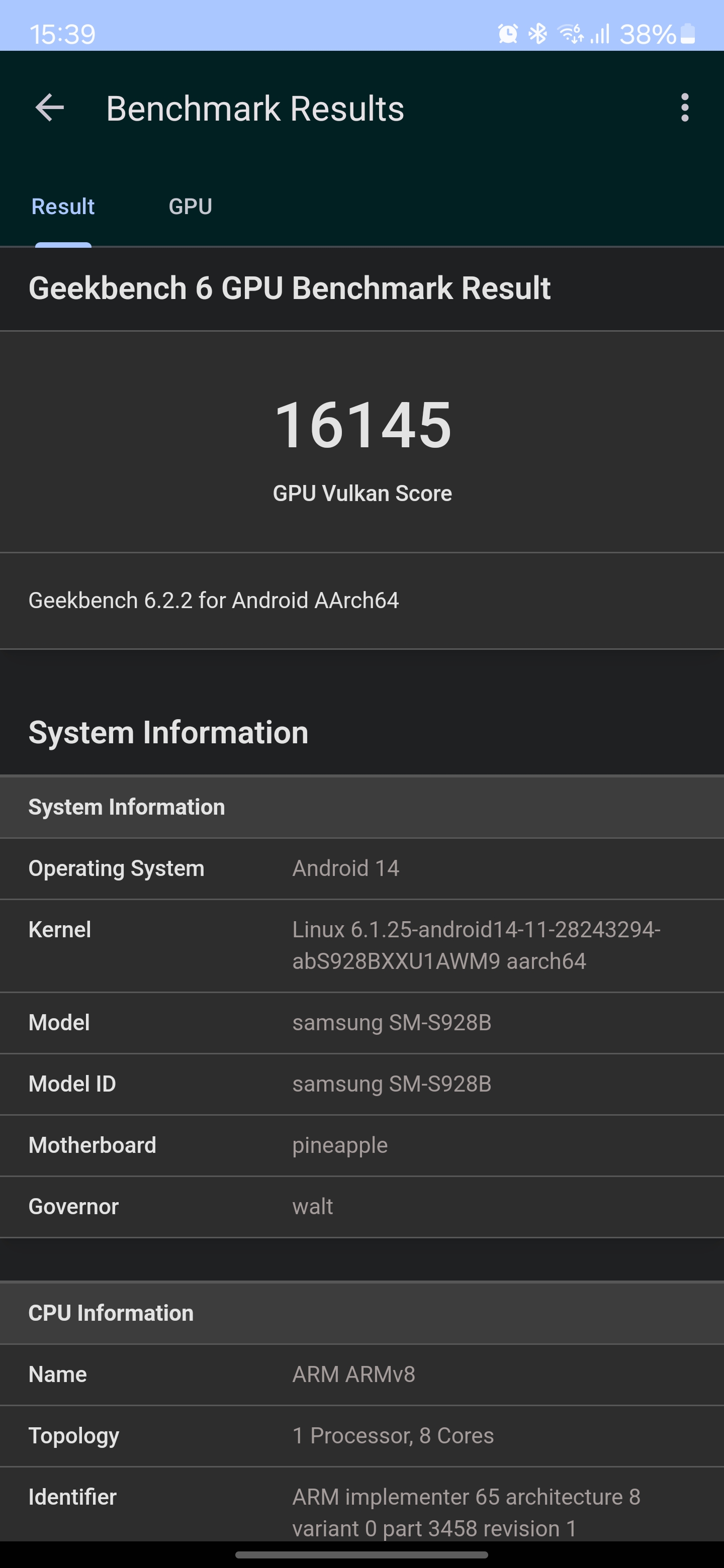

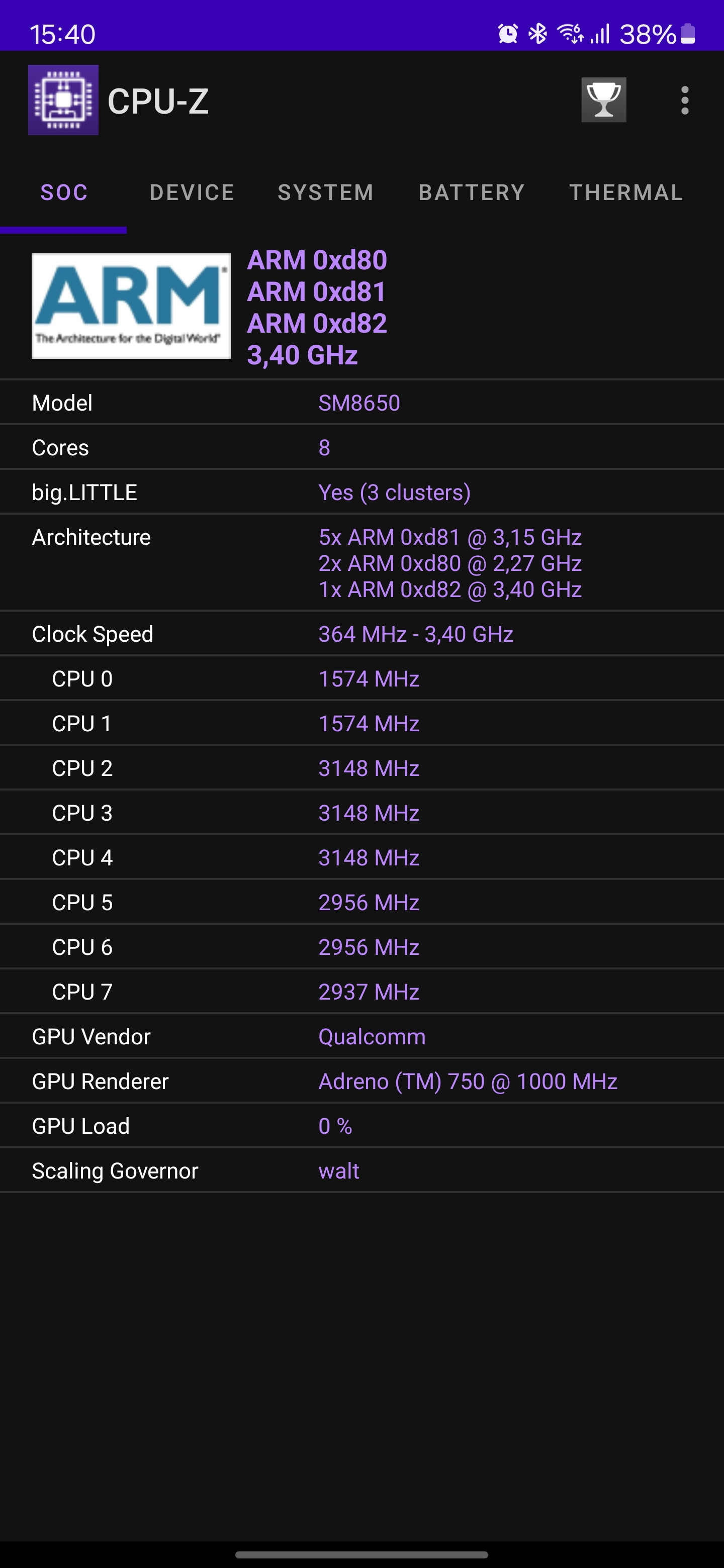
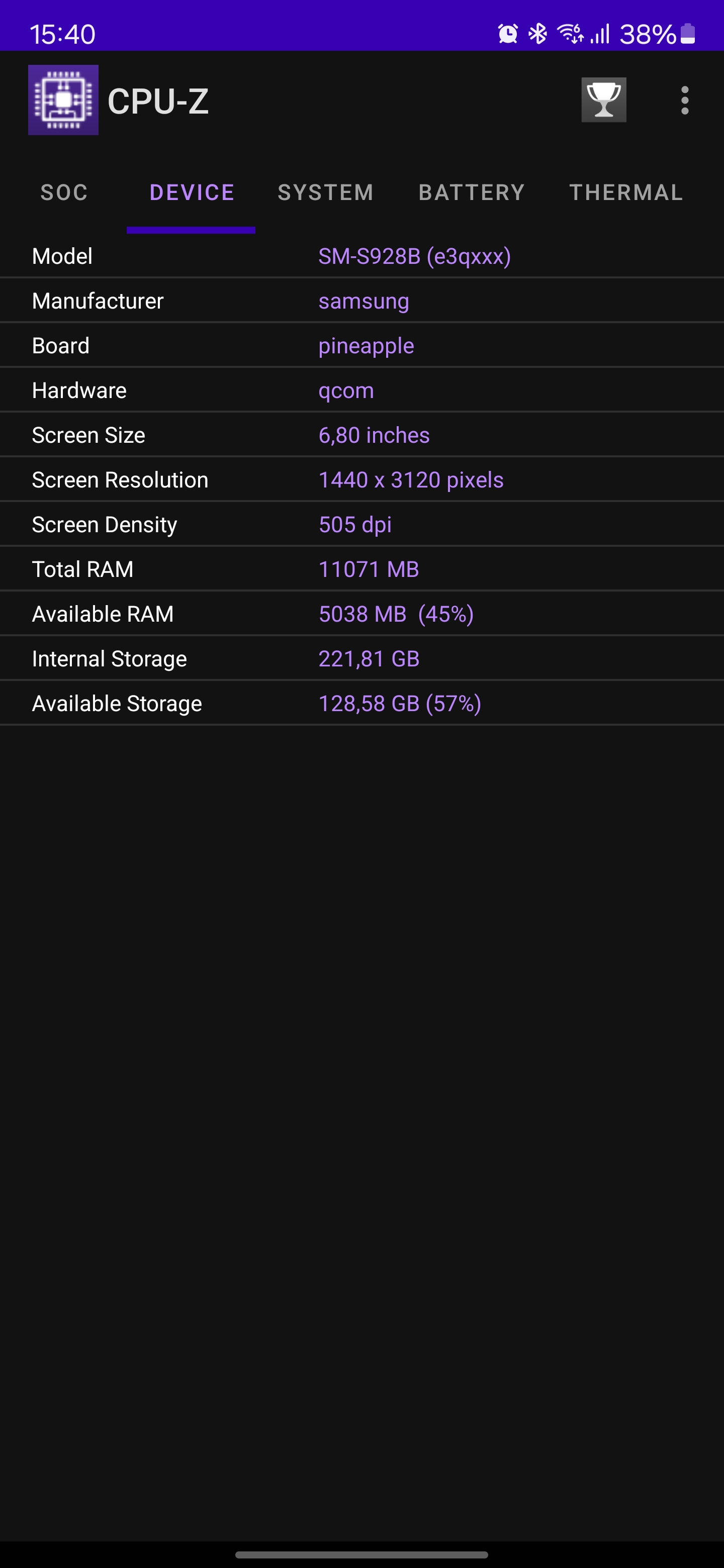

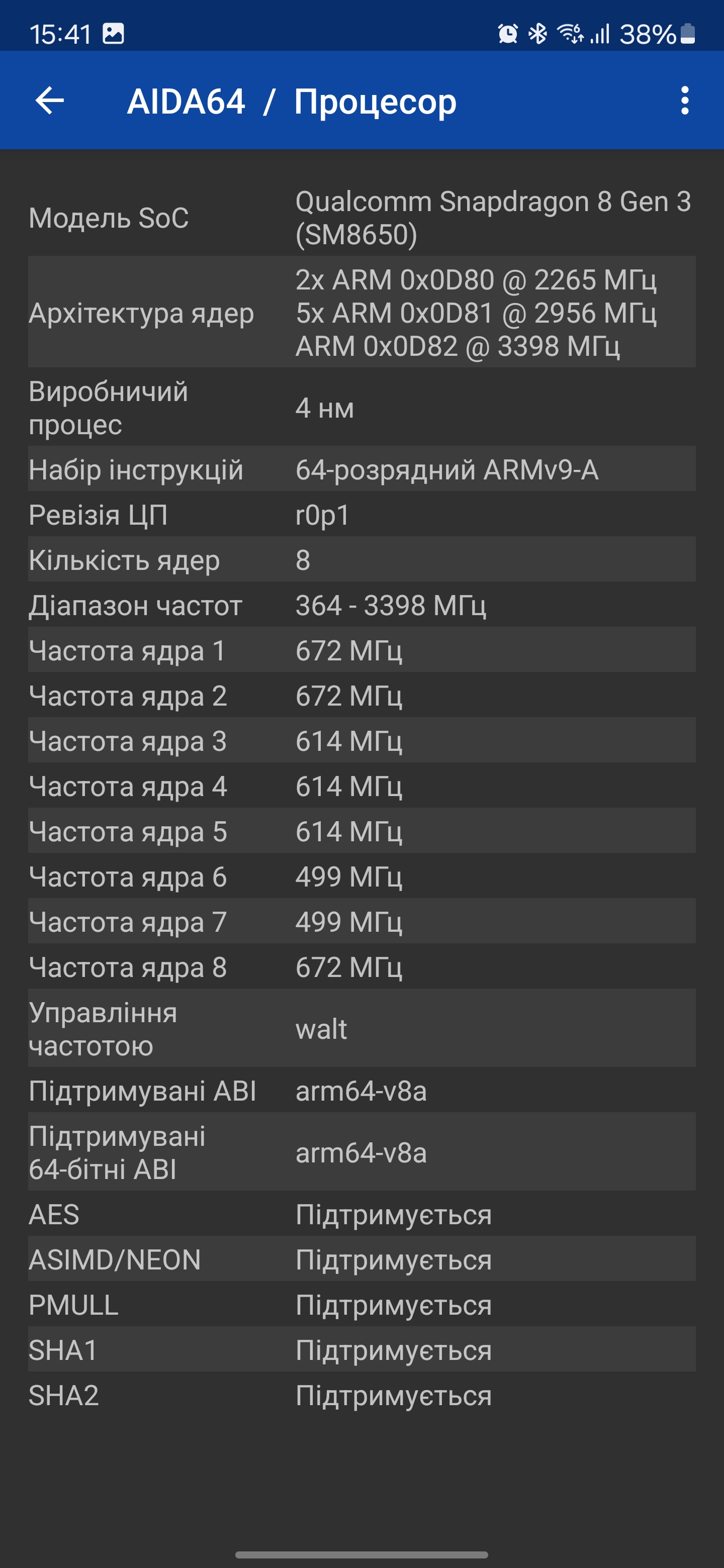

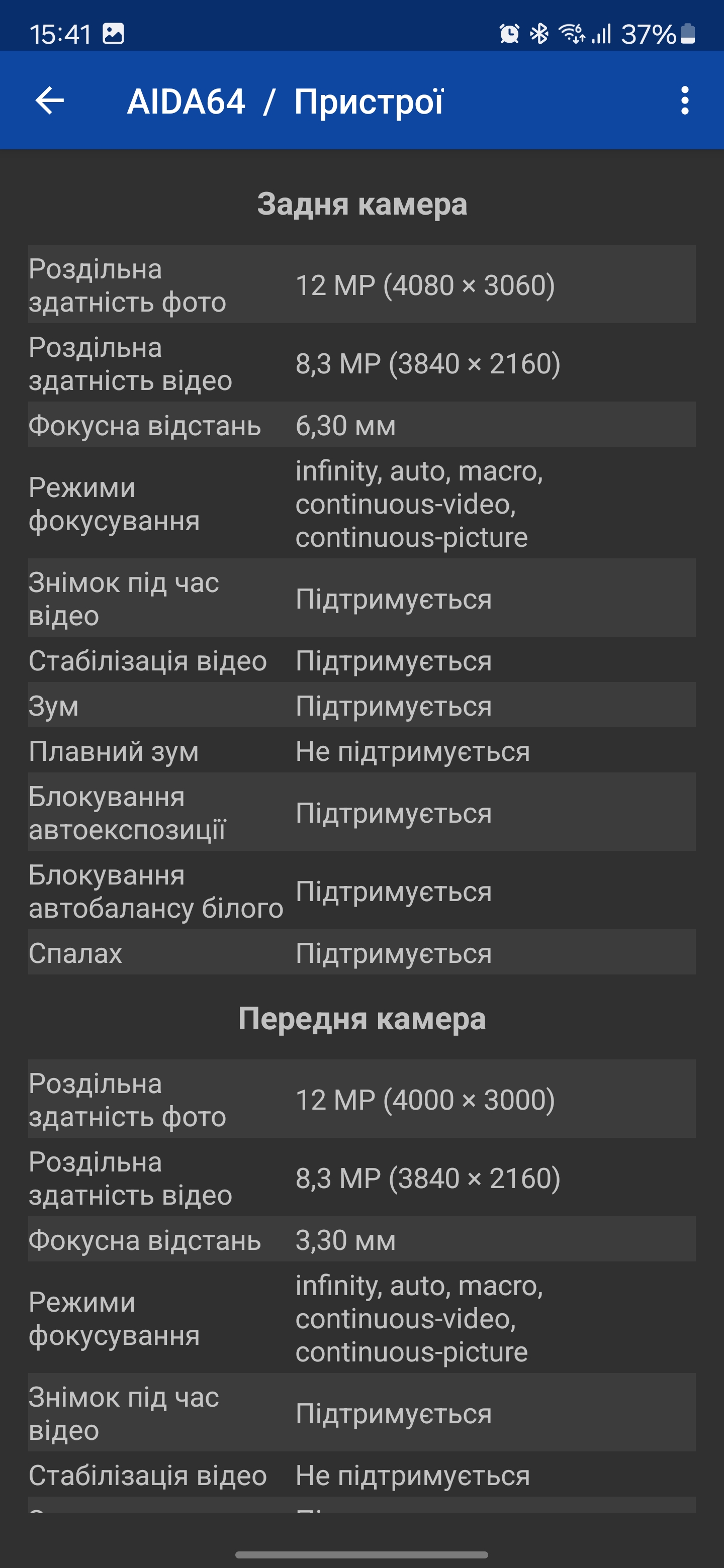



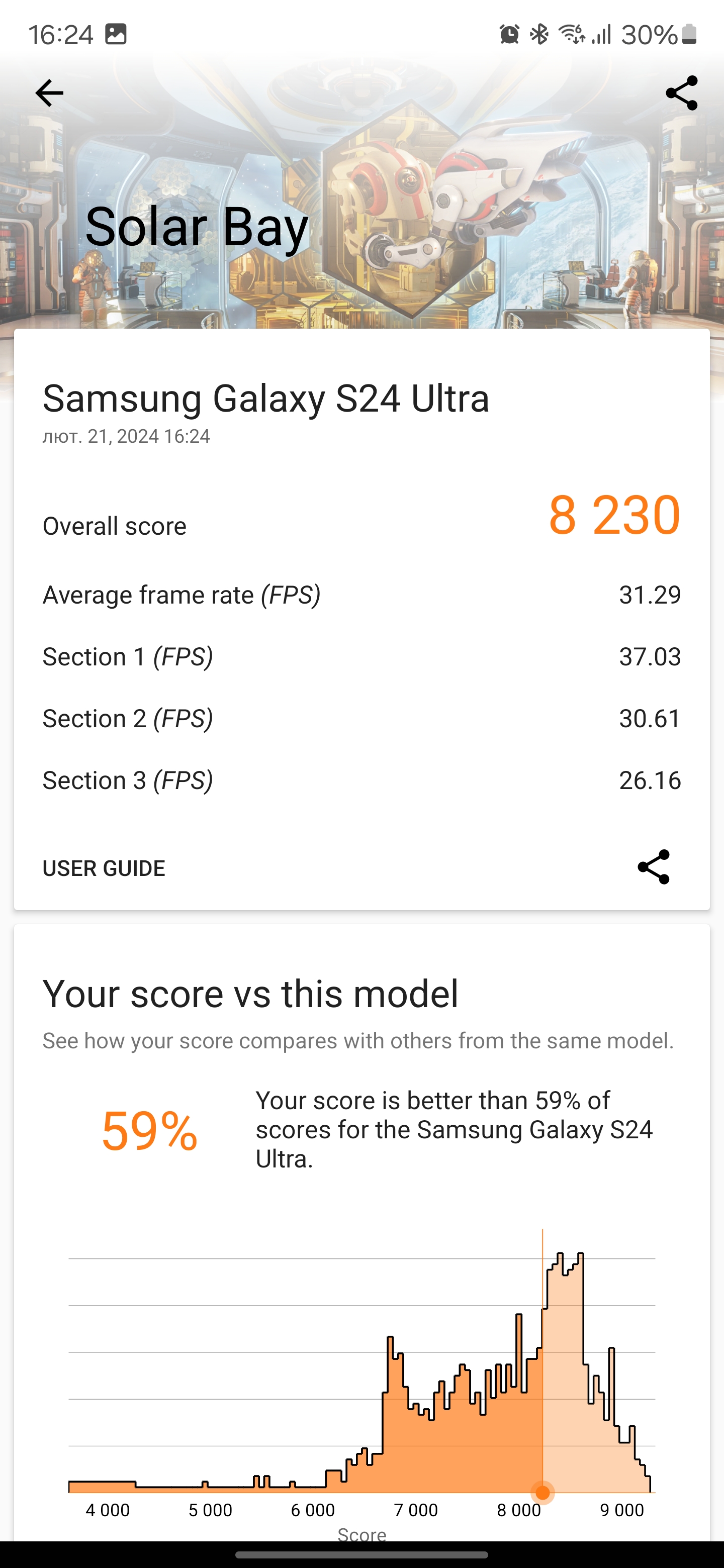

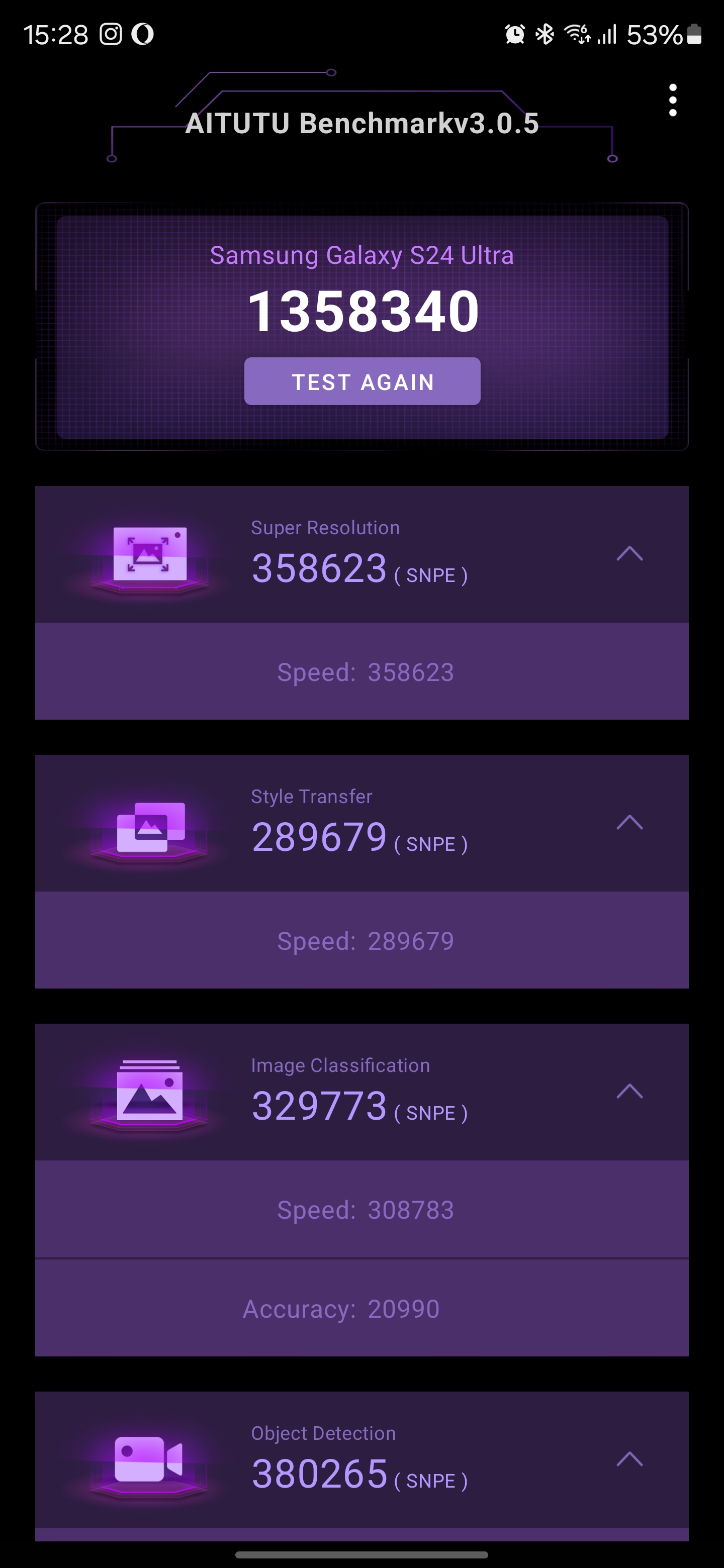


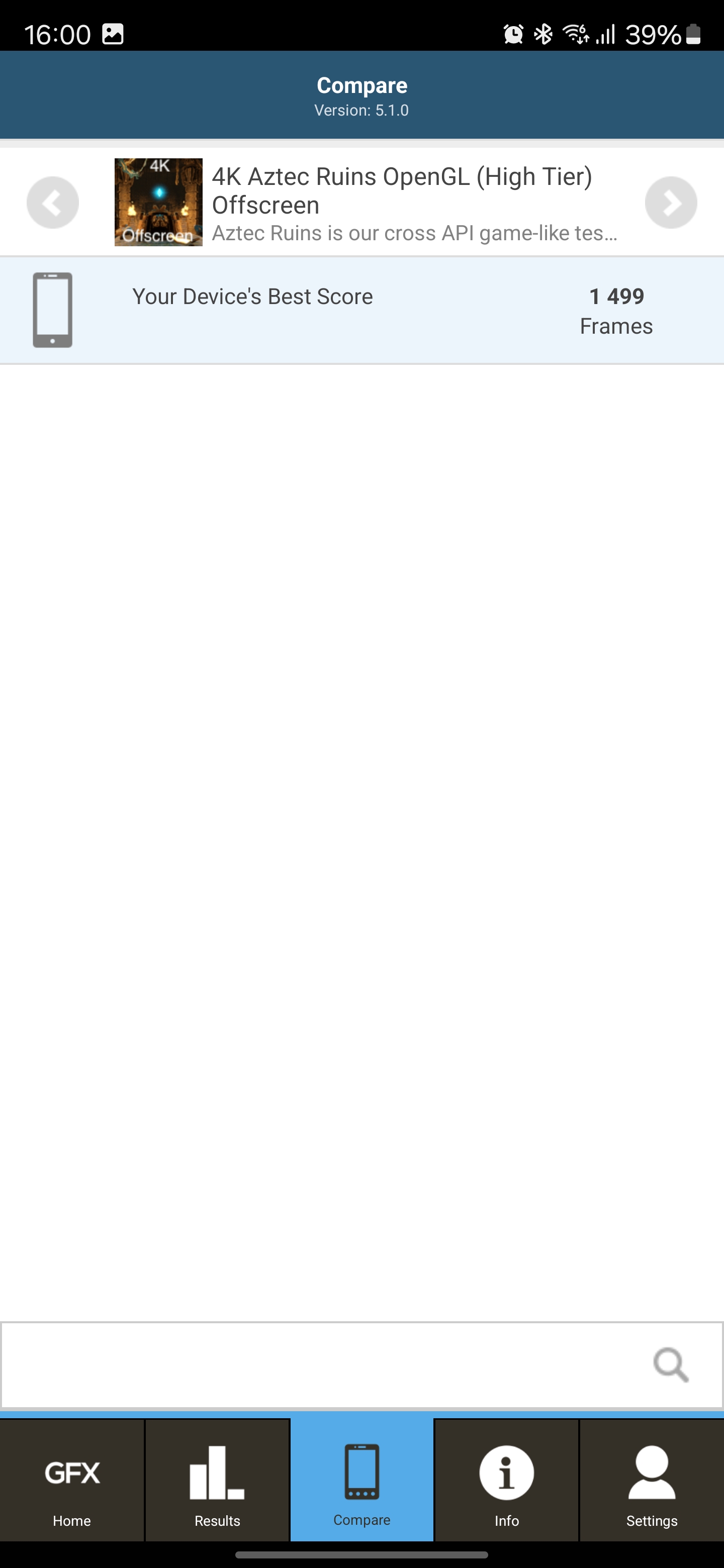
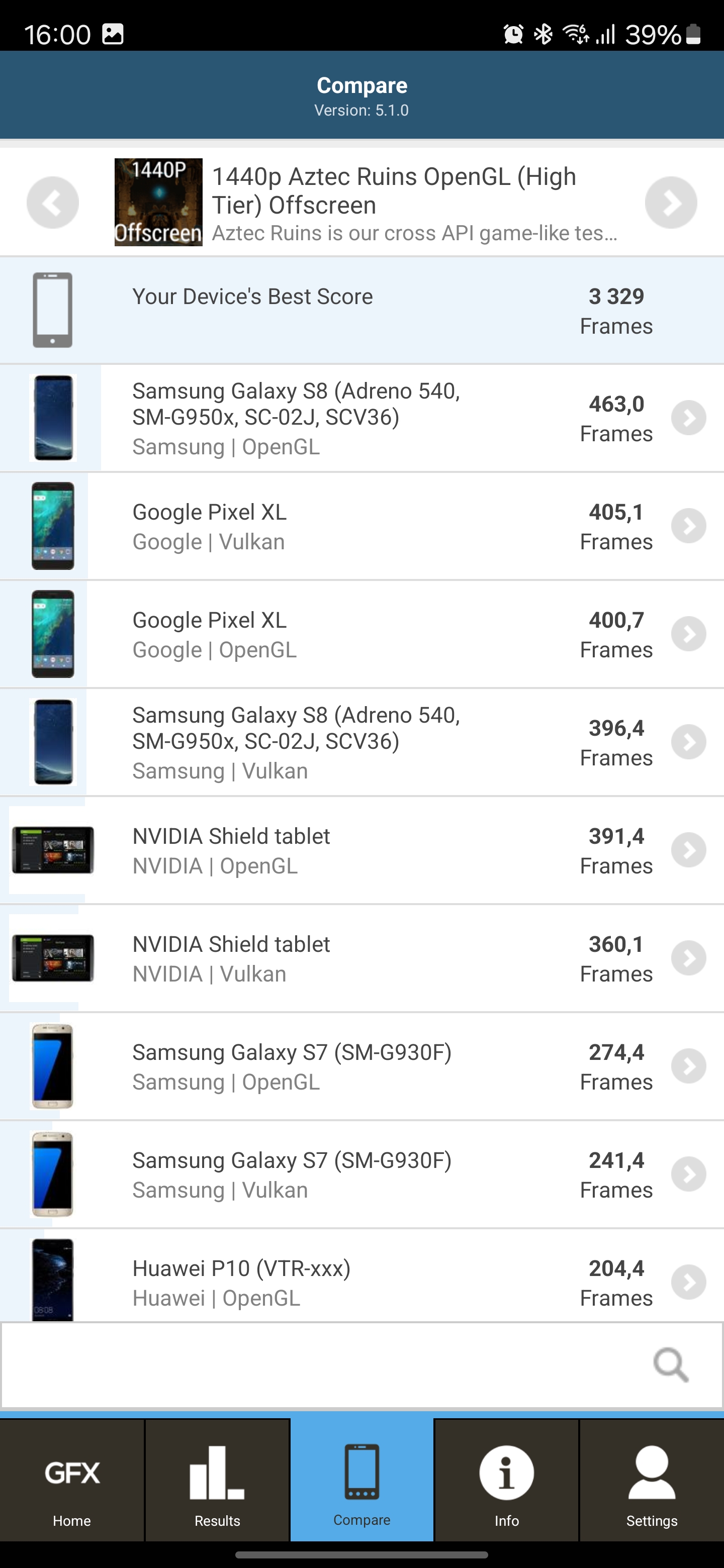
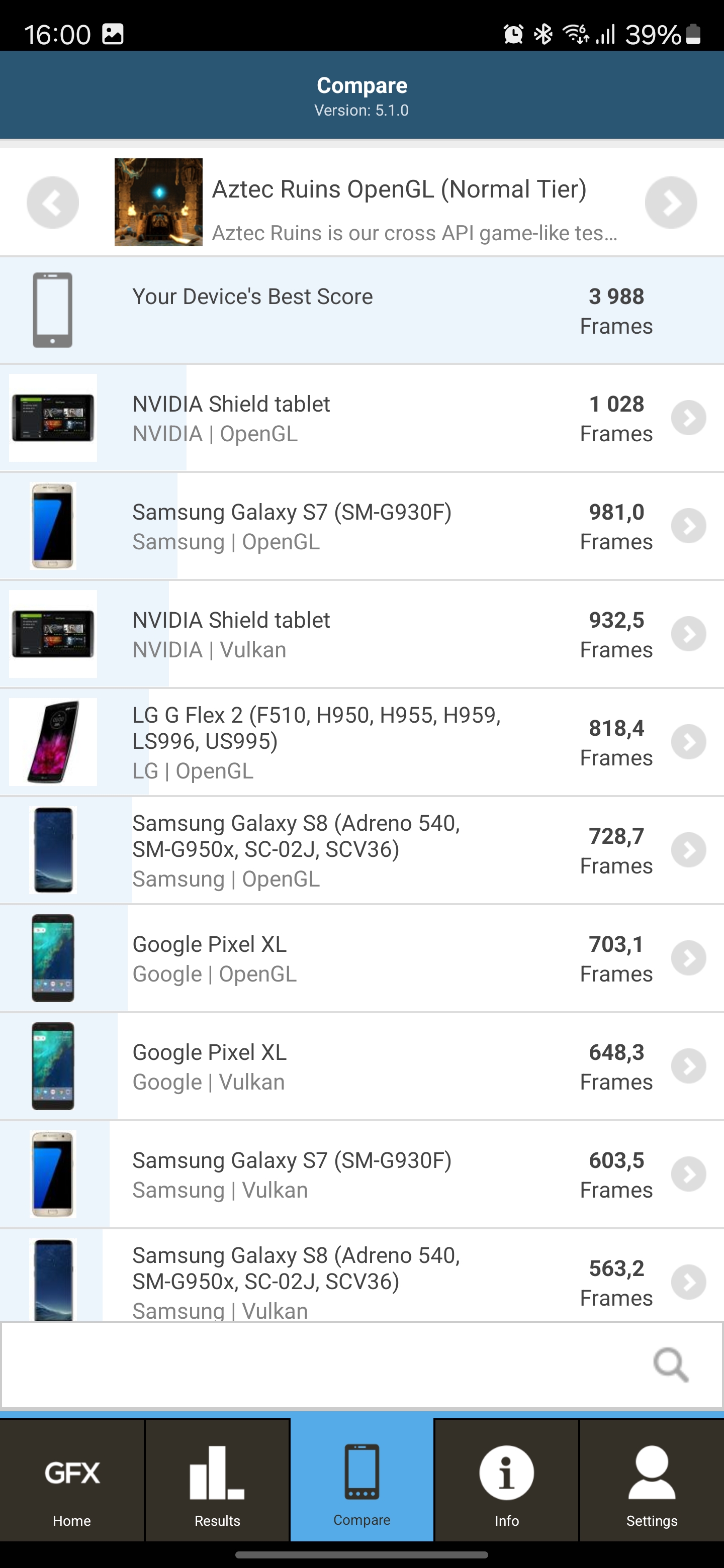

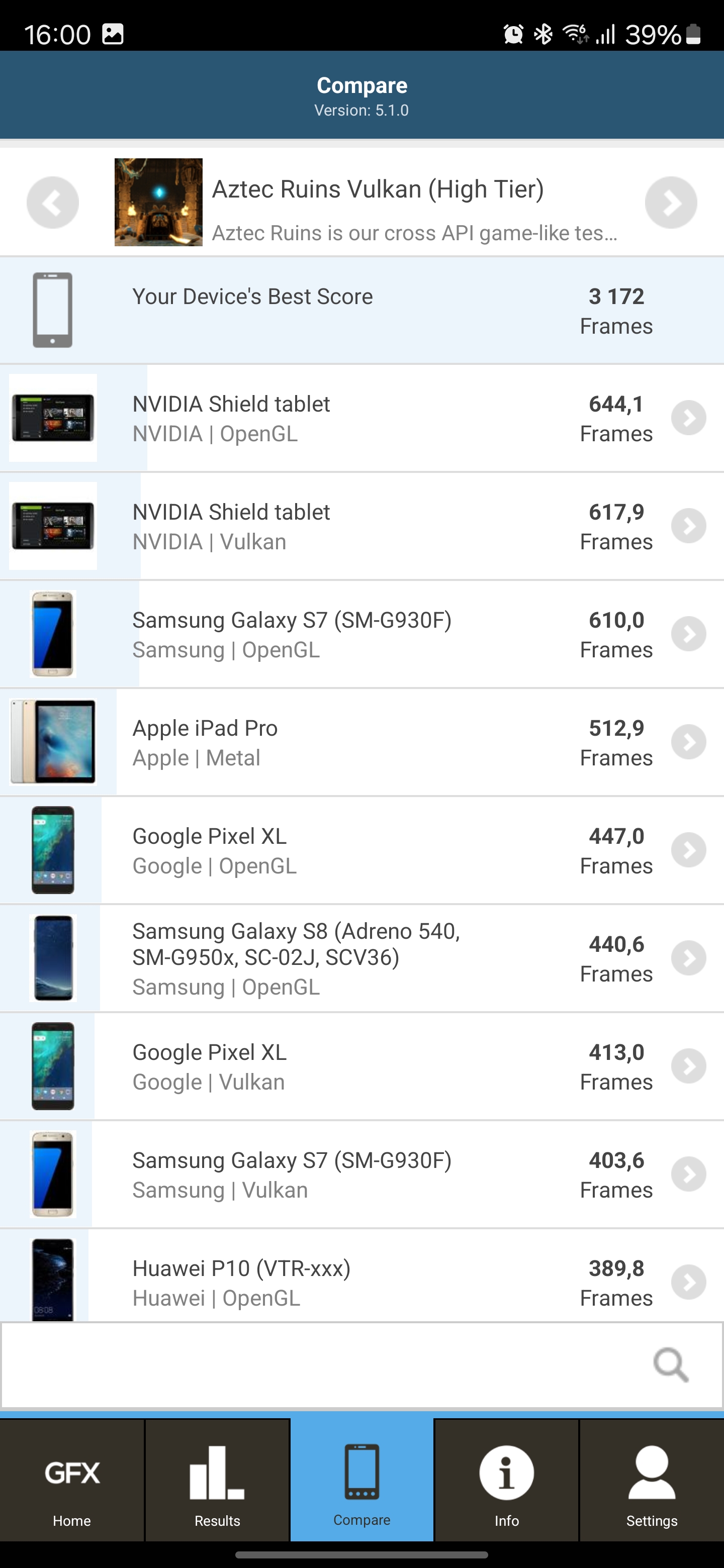


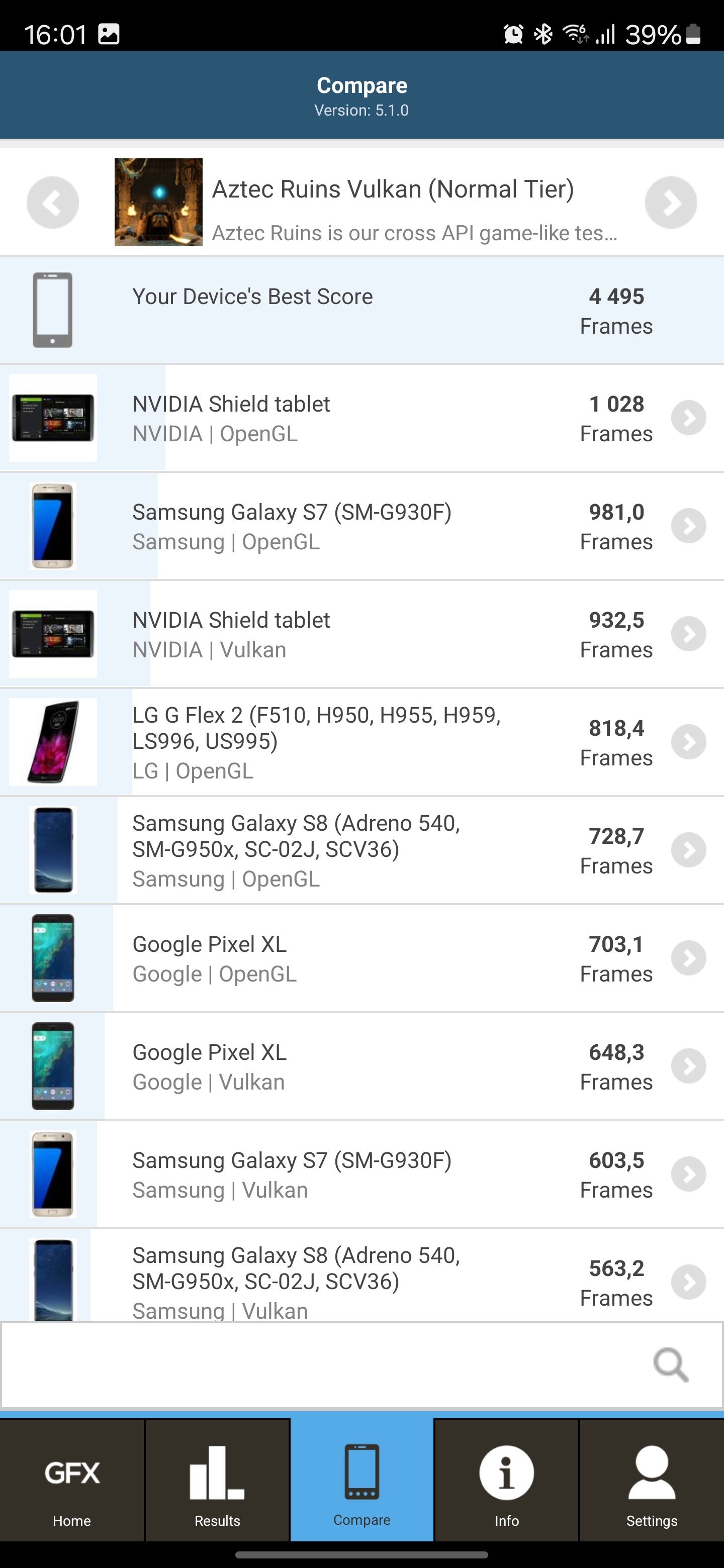
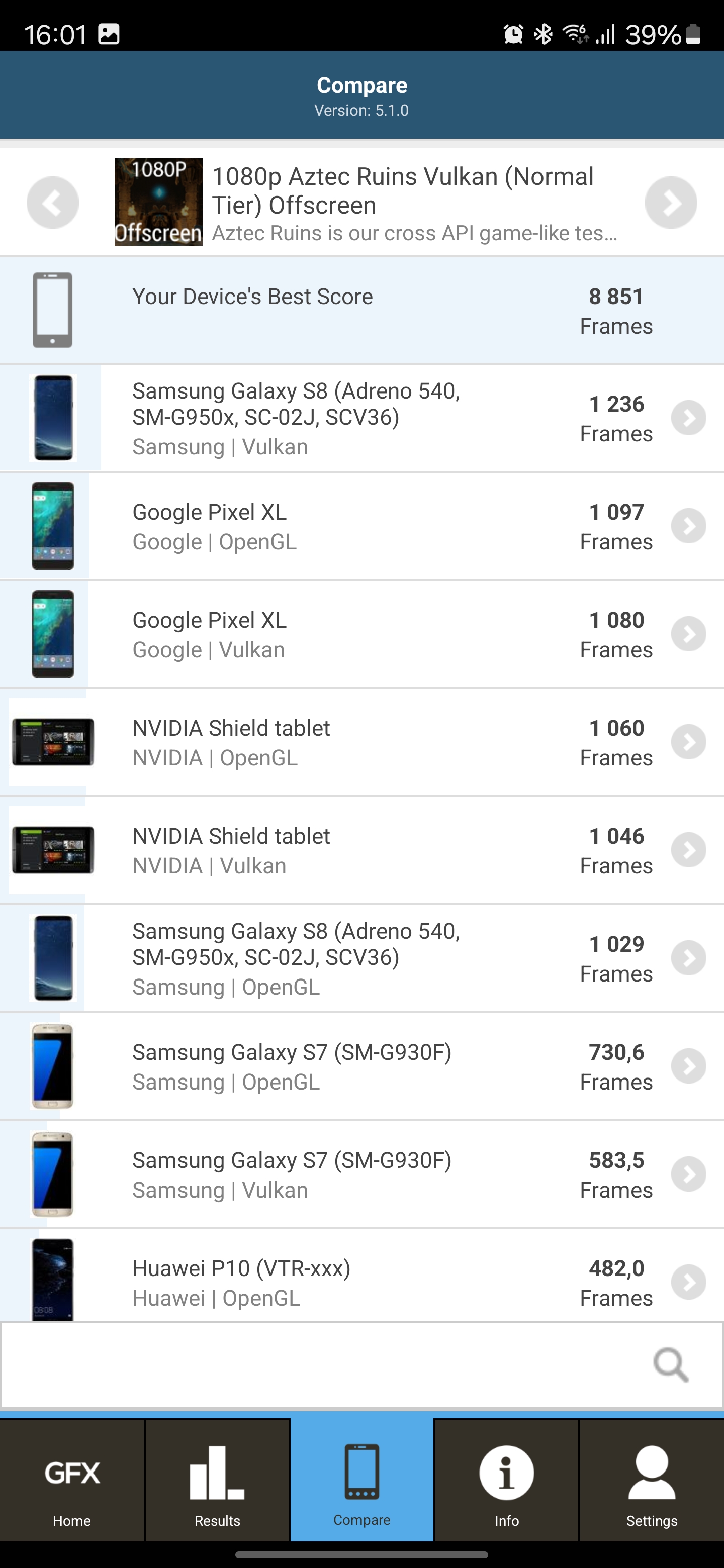


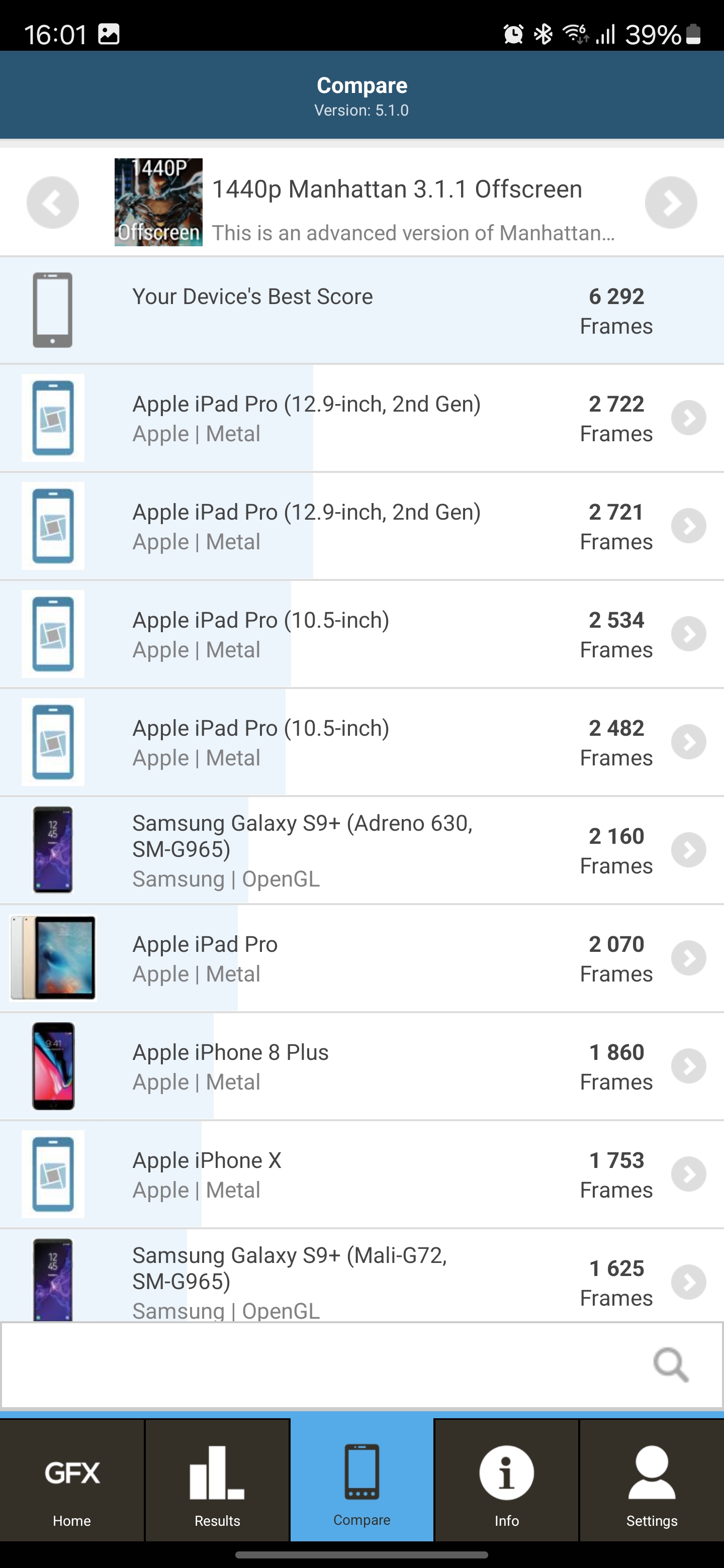
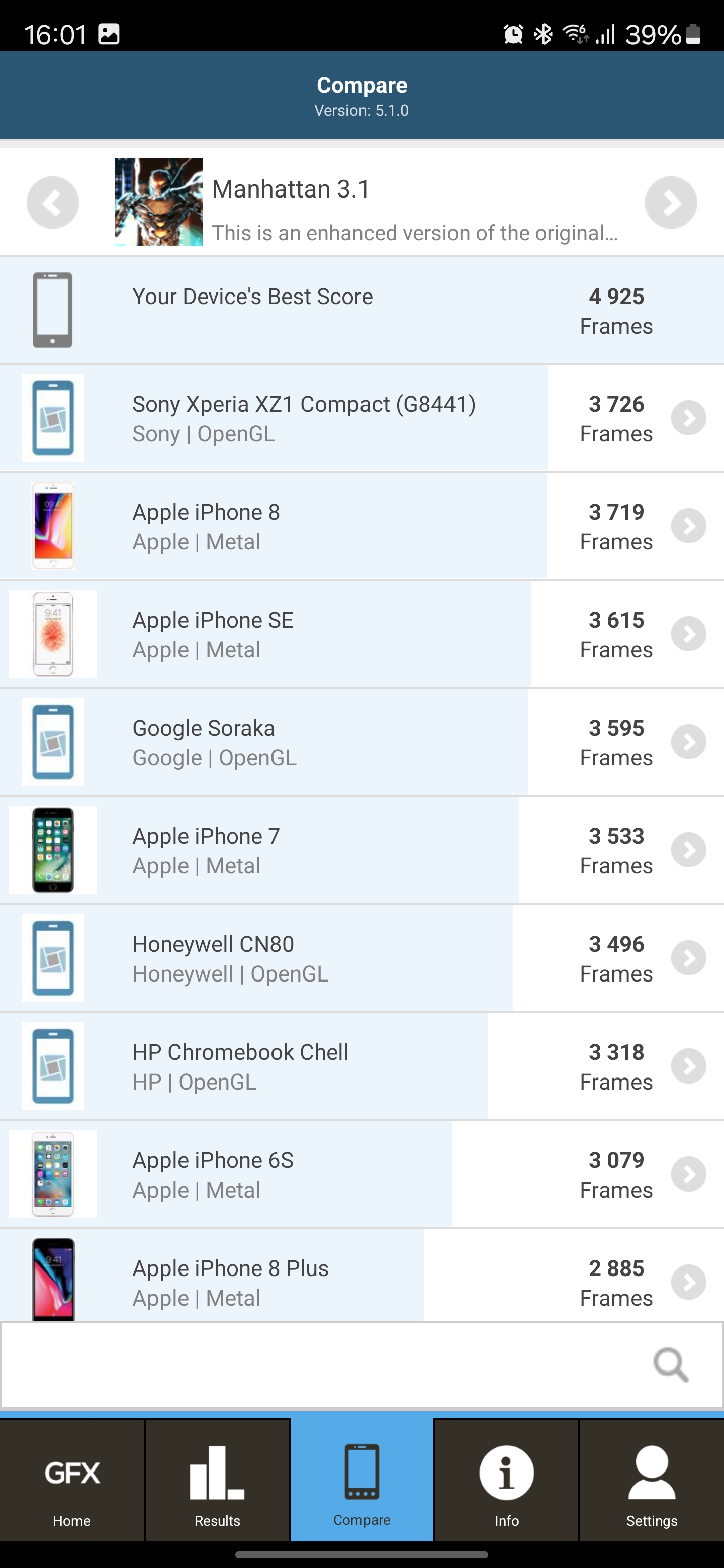

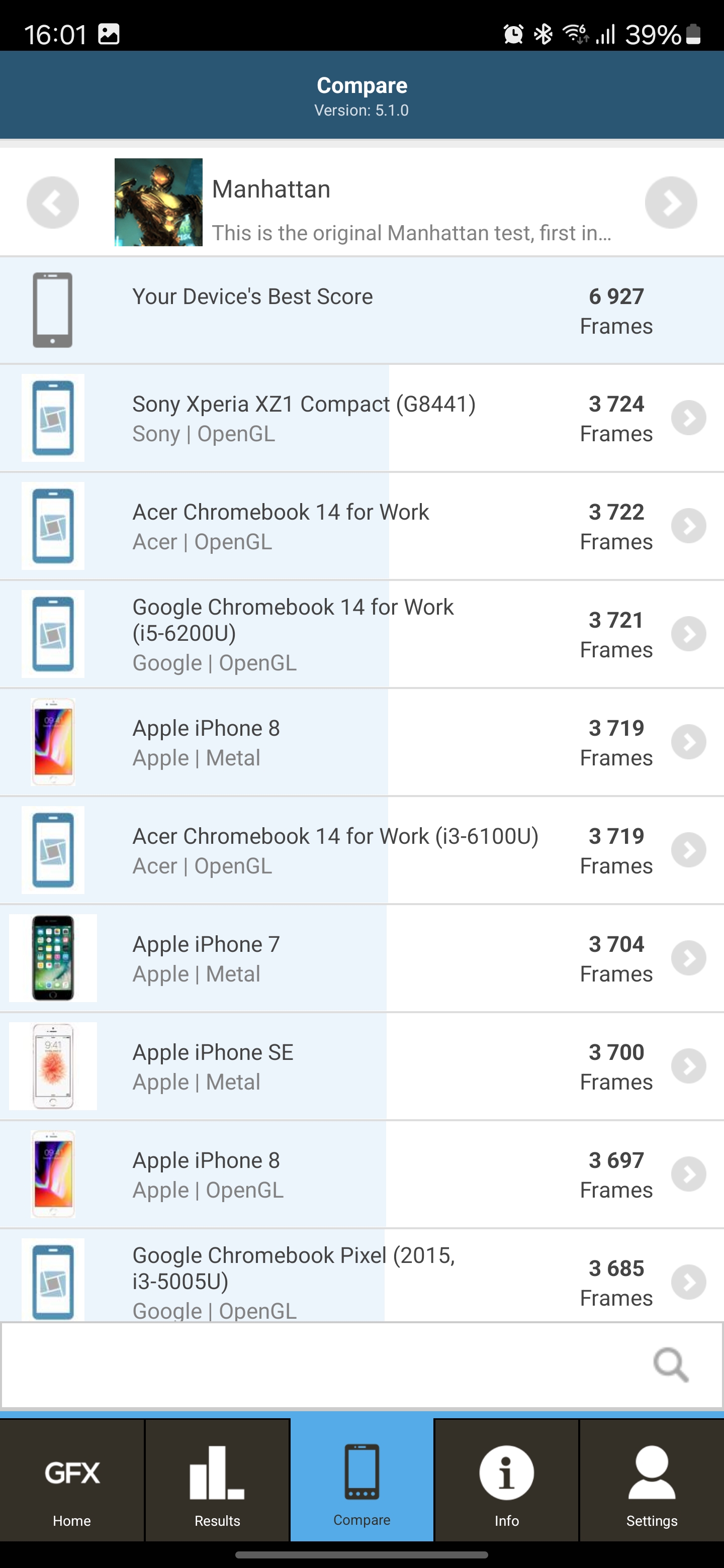
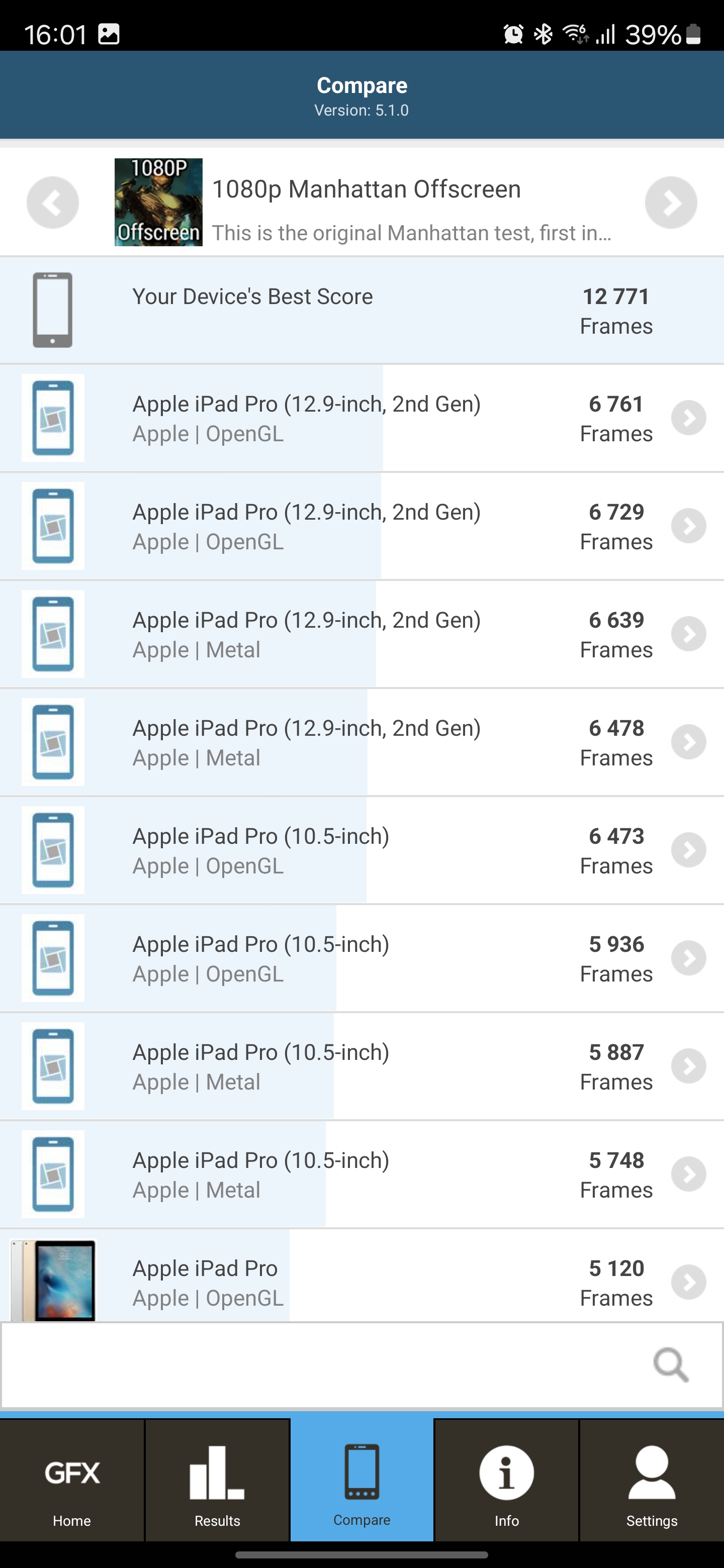



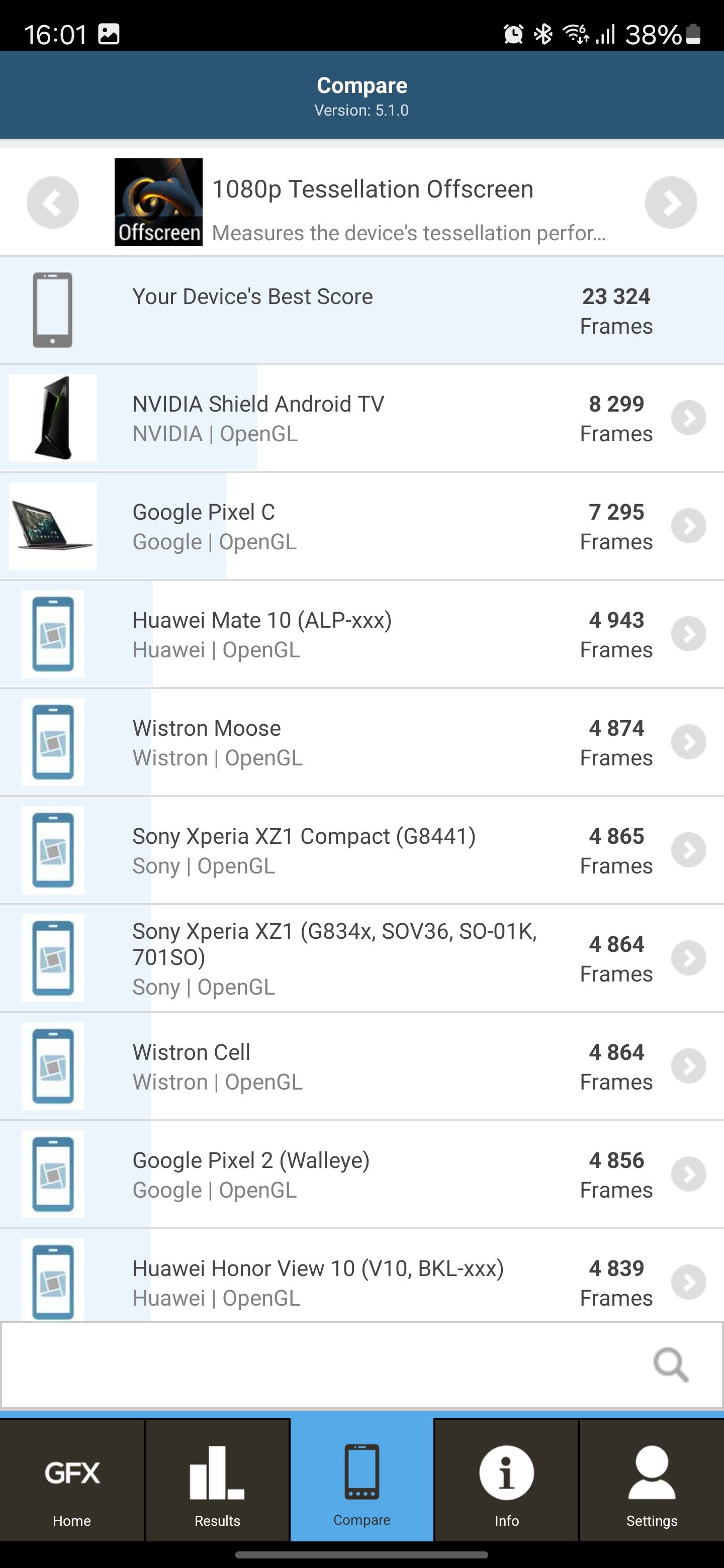
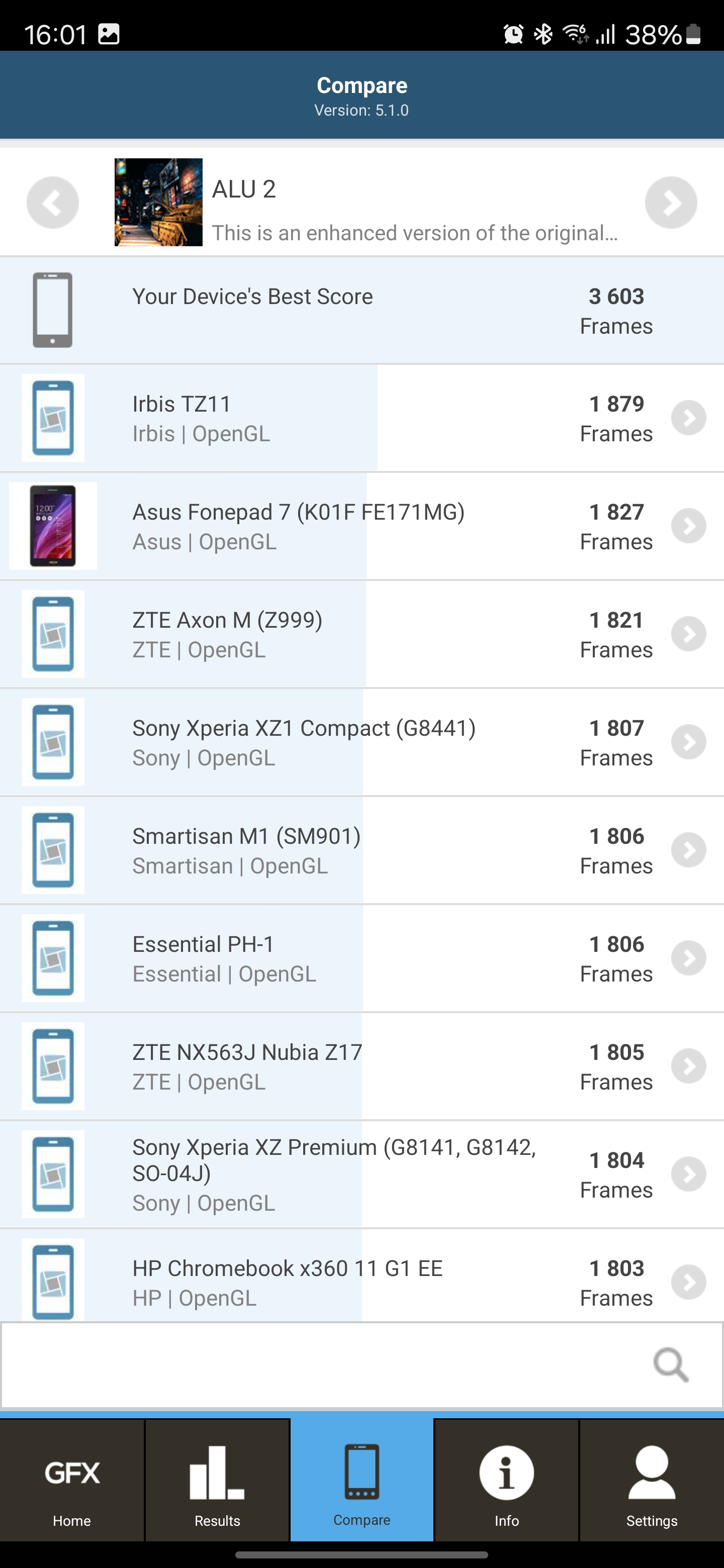
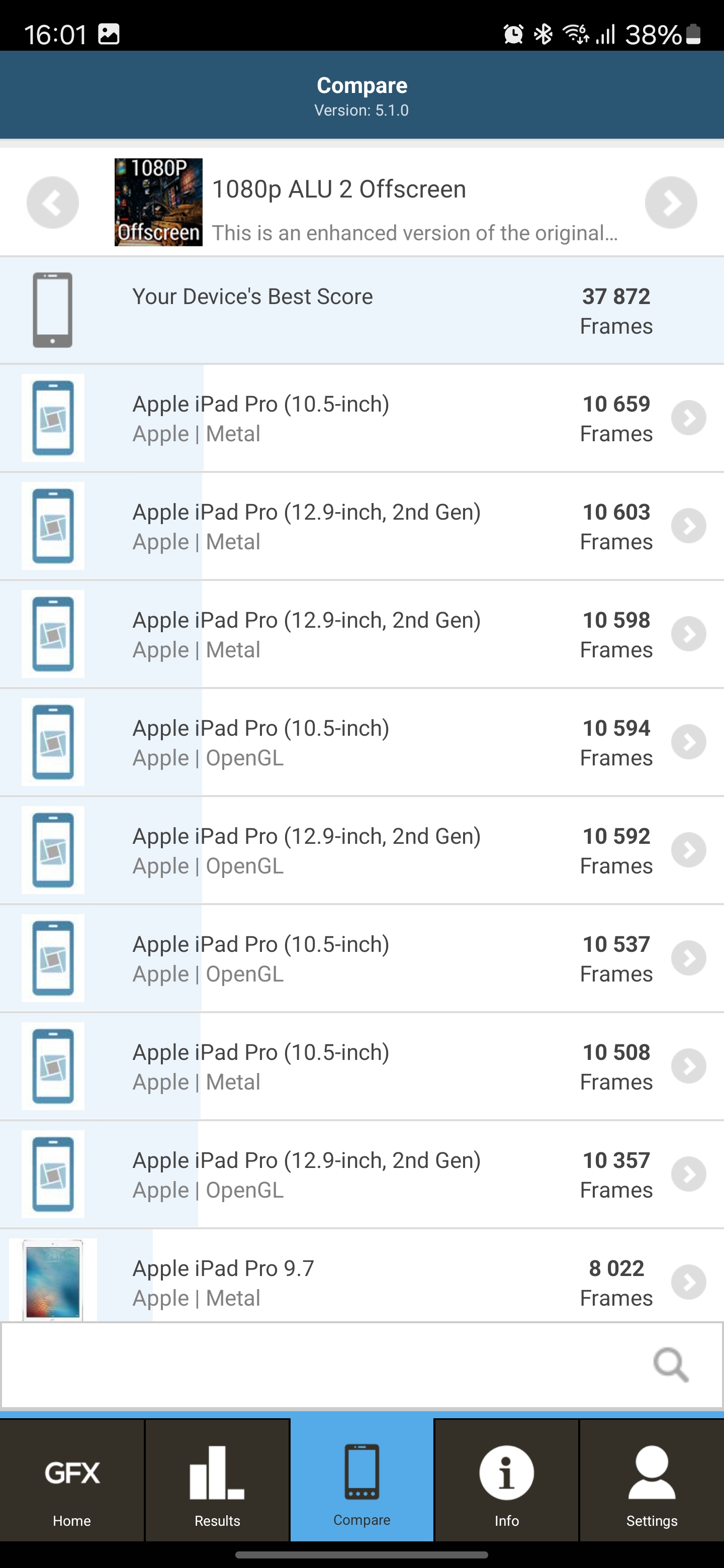
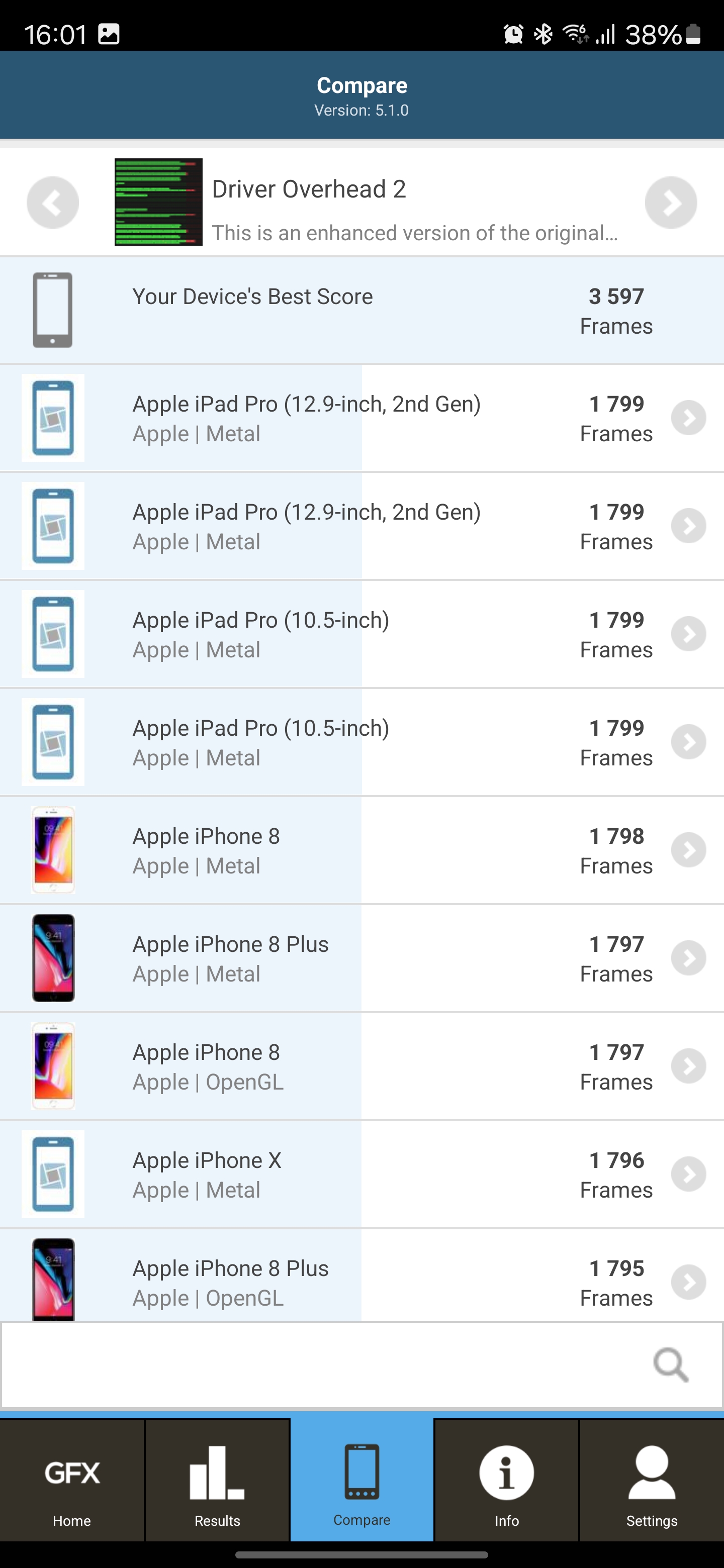
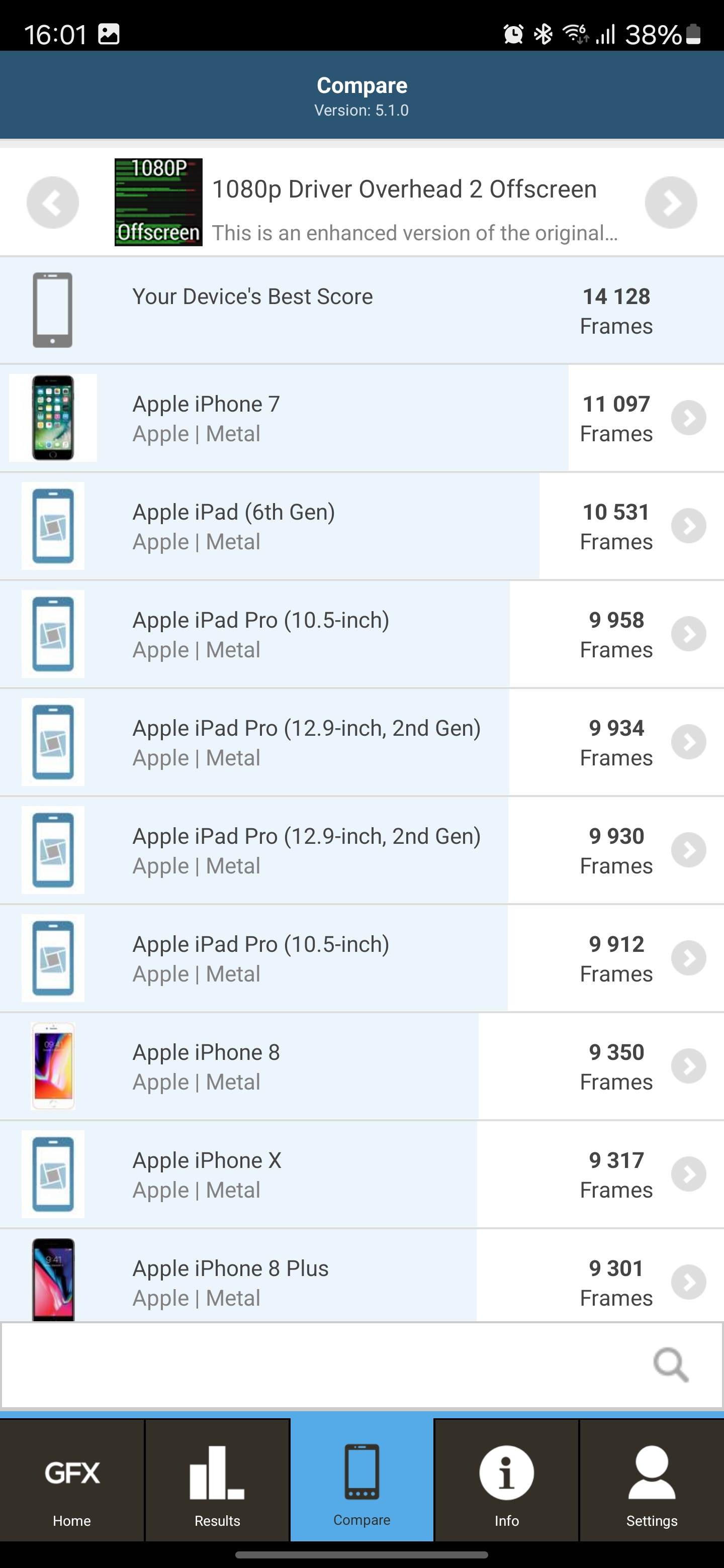
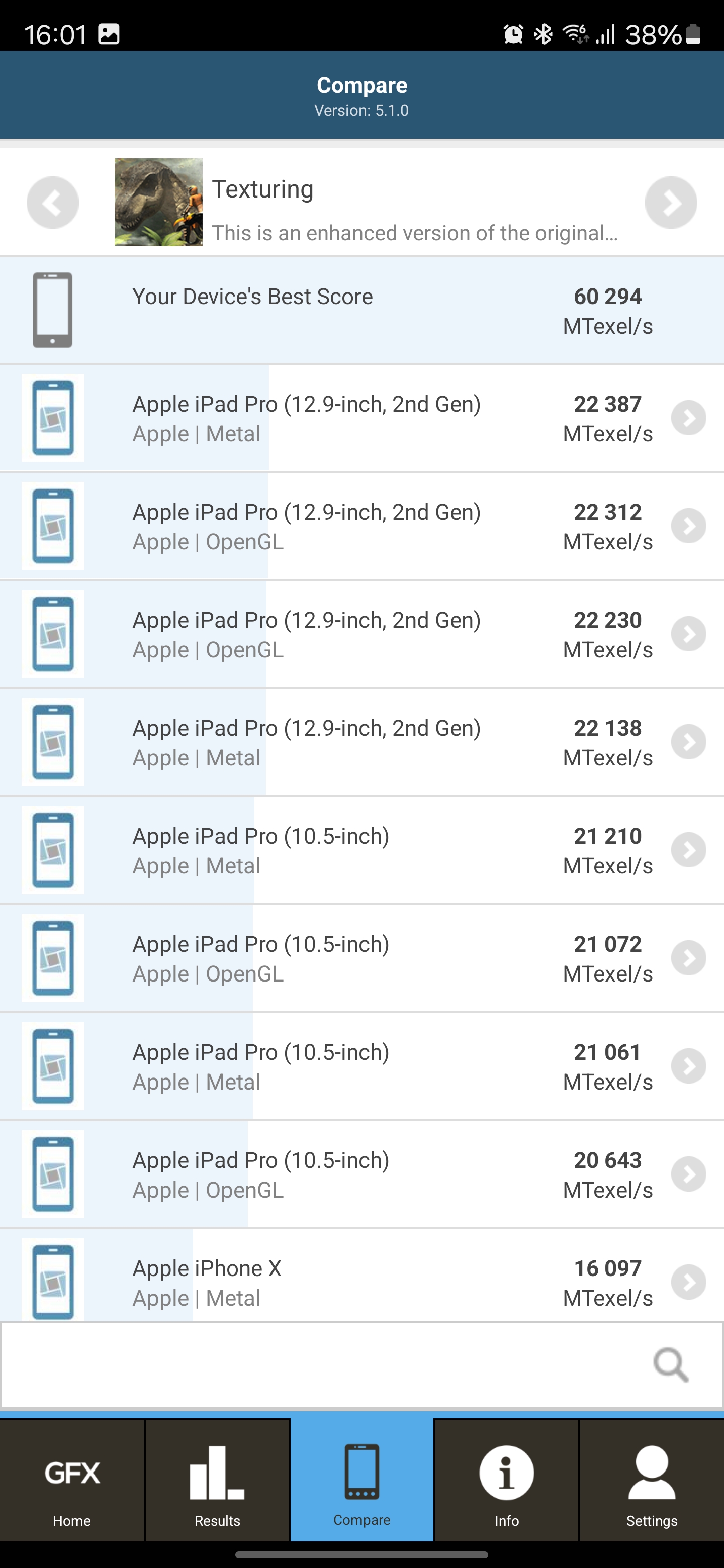

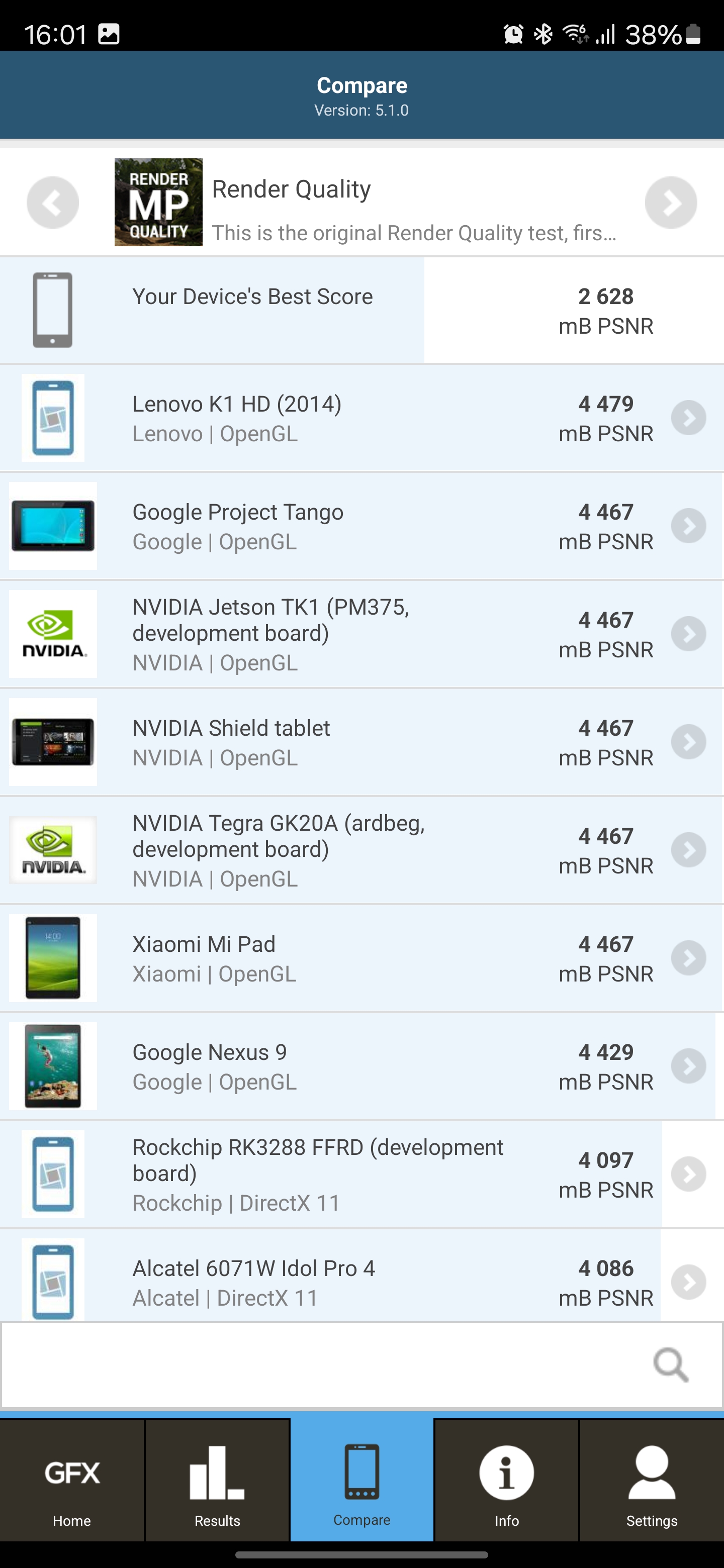












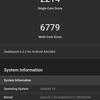



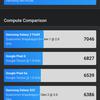








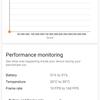








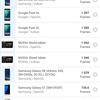
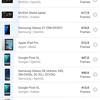



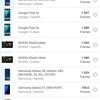




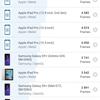




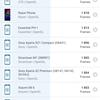









Stability and heating of the Samsung Galaxy S24 Ultra
Samsung Galaxy S24 Ultra has a 1.9x larger 1.9x larger evaporation chamber compared to the Galaxy S23 Ultra. But the Qualcomm Snapdragon 8 Gen 3 is slightly hotter than its predecessor. In the CPU Throttling Test stress test, performance drops to about 83% in 15 minutes, and the smartphone itself becomes warm, not hot. Although in real conditions it will be quite difficult to load the processor in such a way.

Samsung Galaxy S24 Ultra performance in games
As always, the smartphone has proprietary gaming utilities Game Launcher and Game Booster, which allow you to adjust performance, turn off notifications during the game, take screenshots and monitor key indicators, including frame rate. All modern games run seamlessly at high graphics settings with a stable frame rate of 60 FPS.

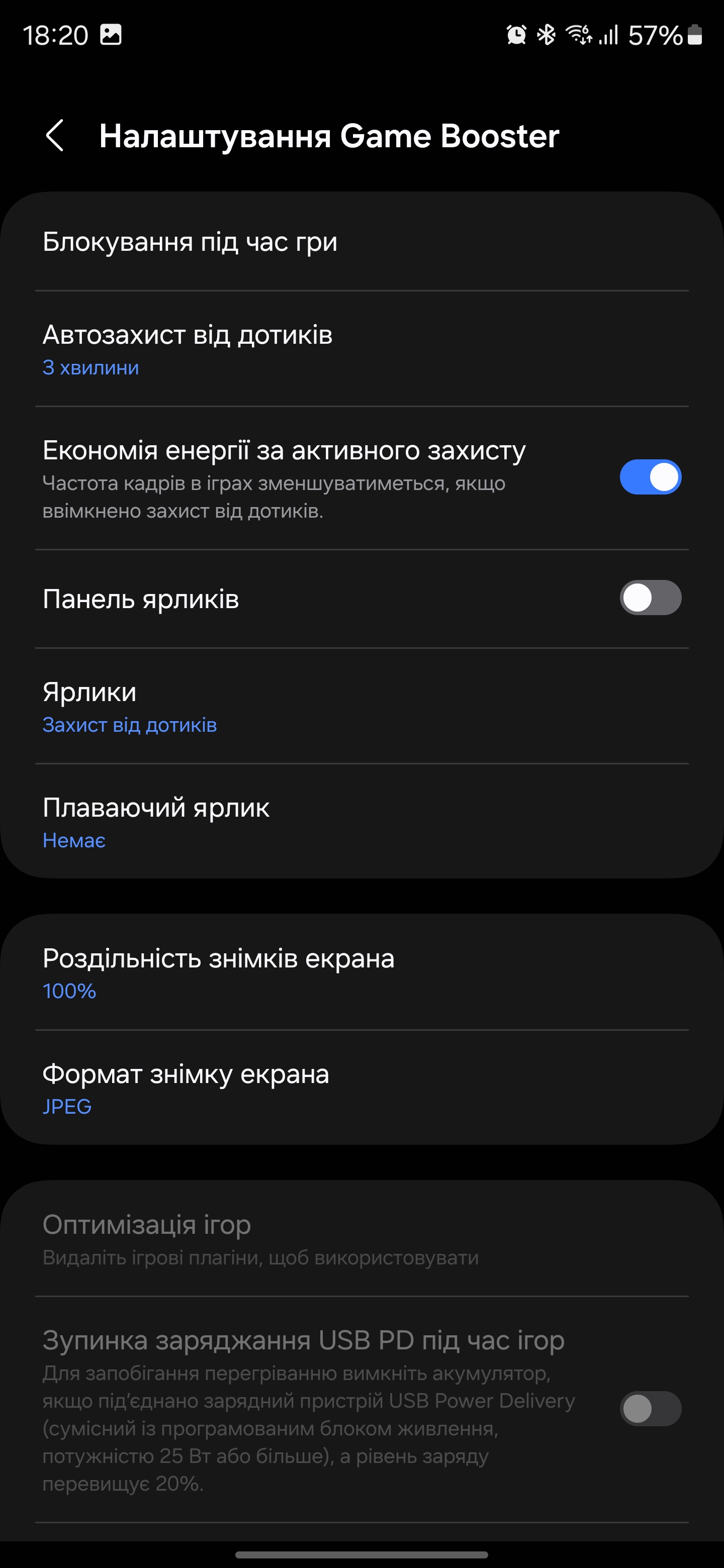
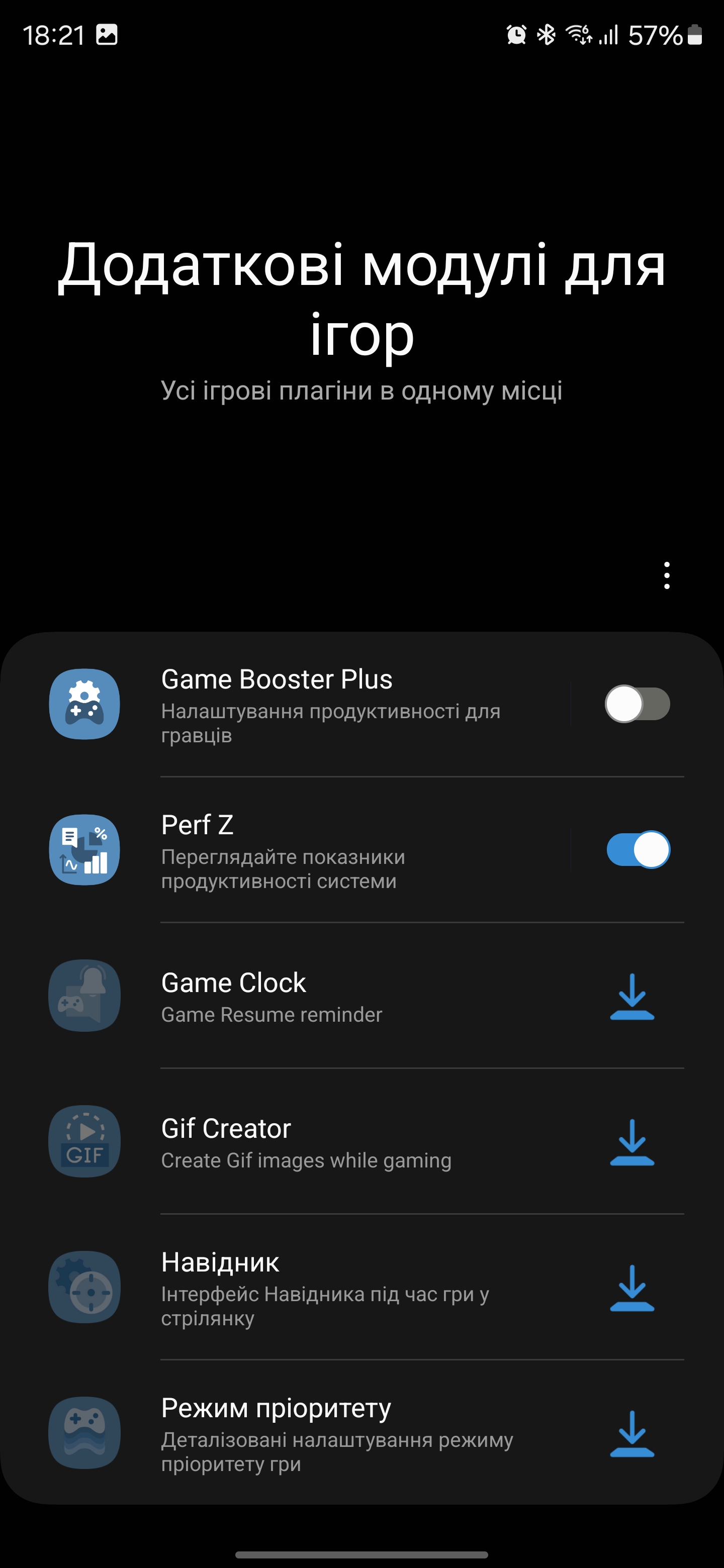

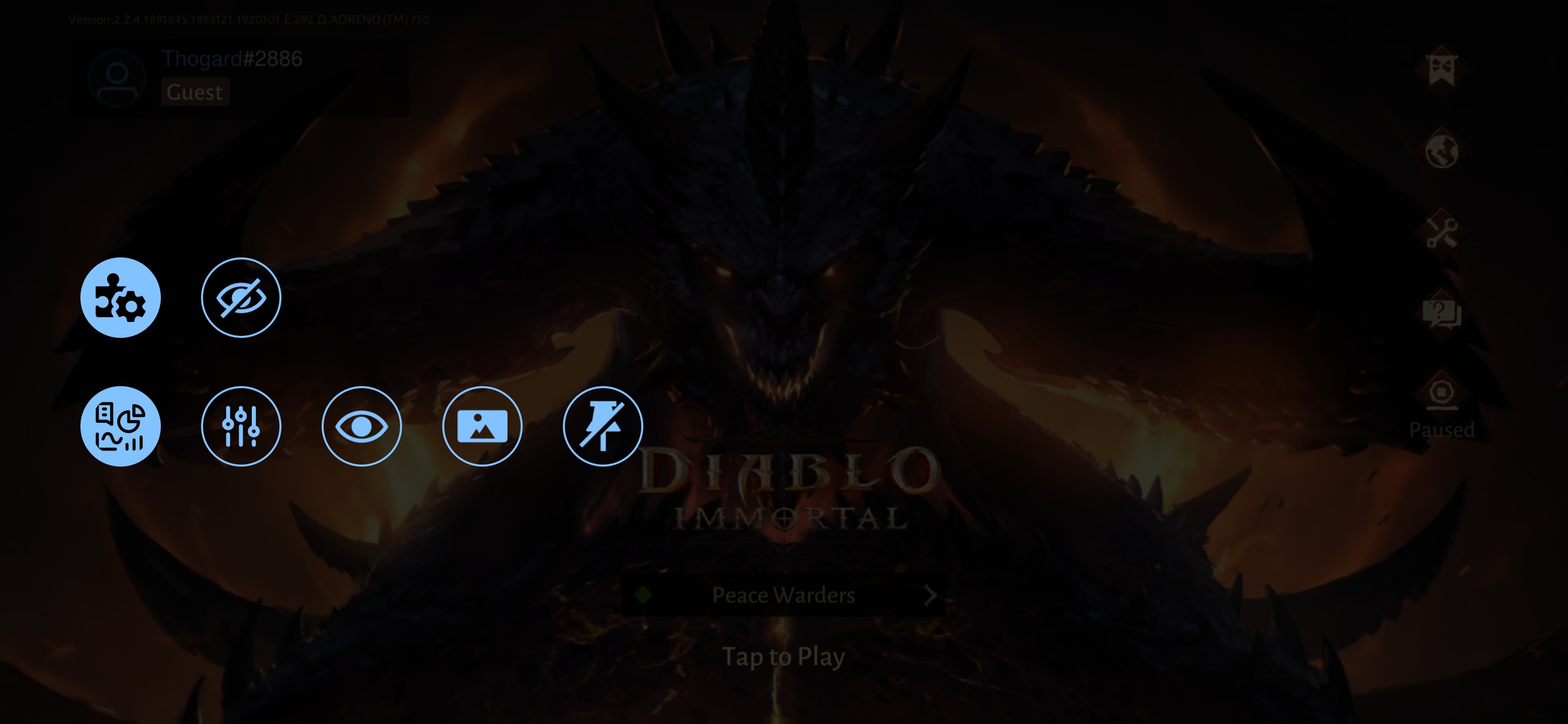

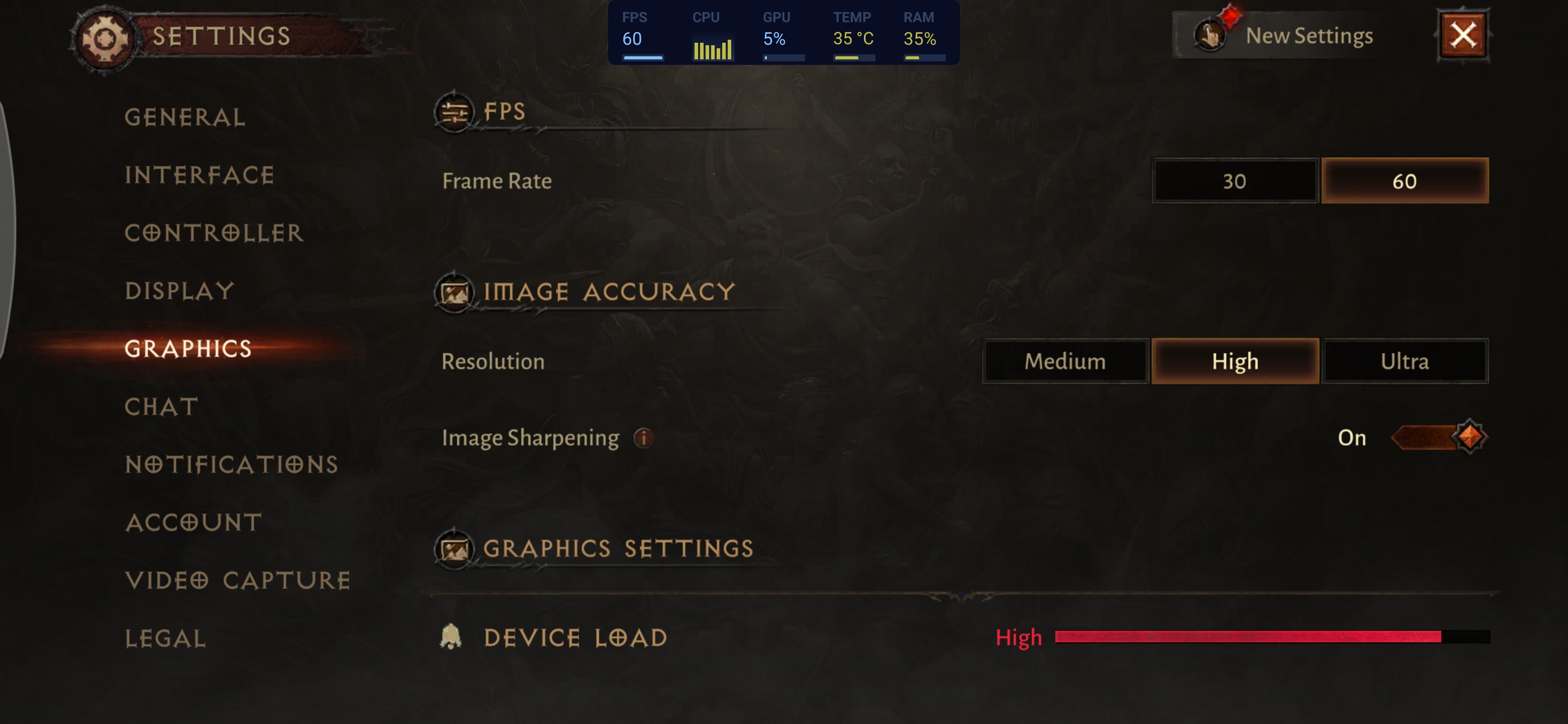





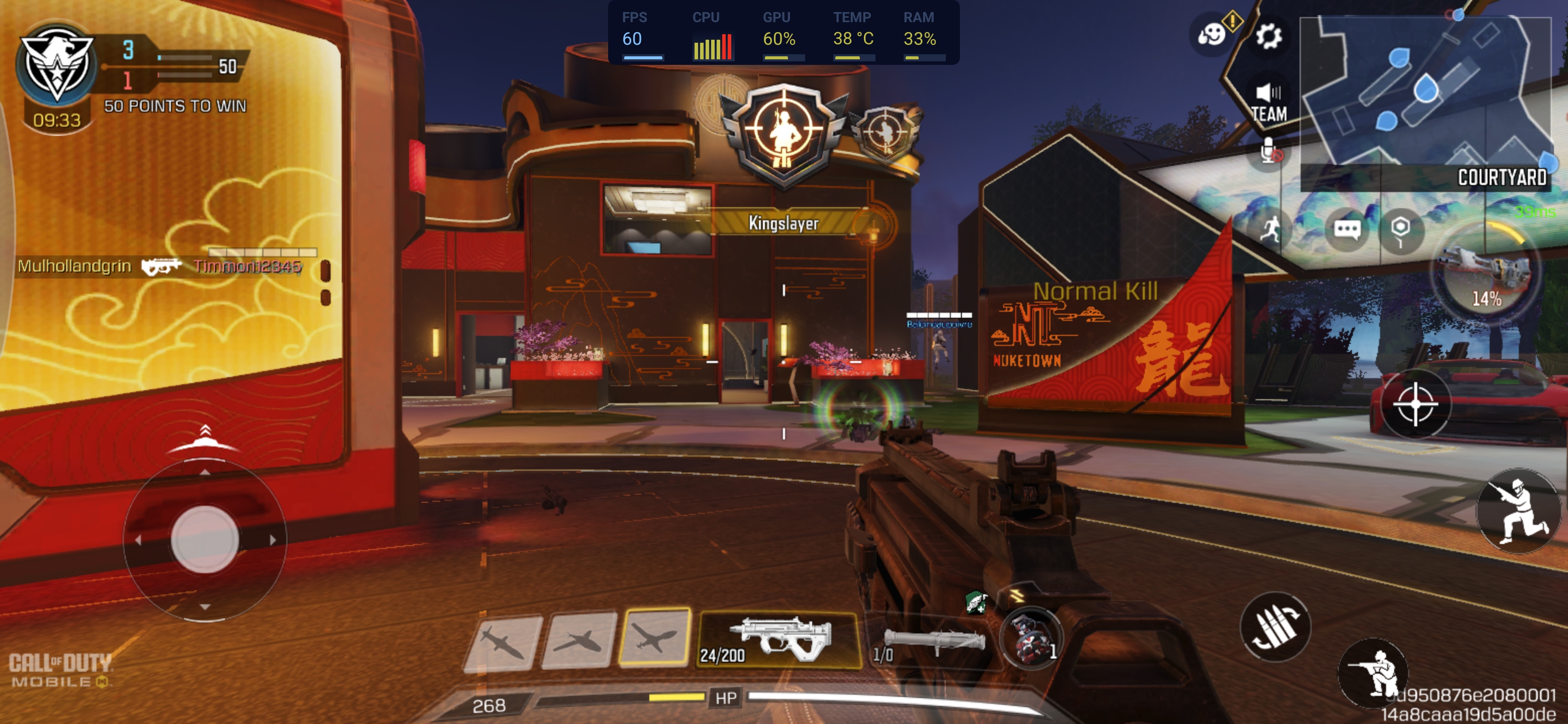
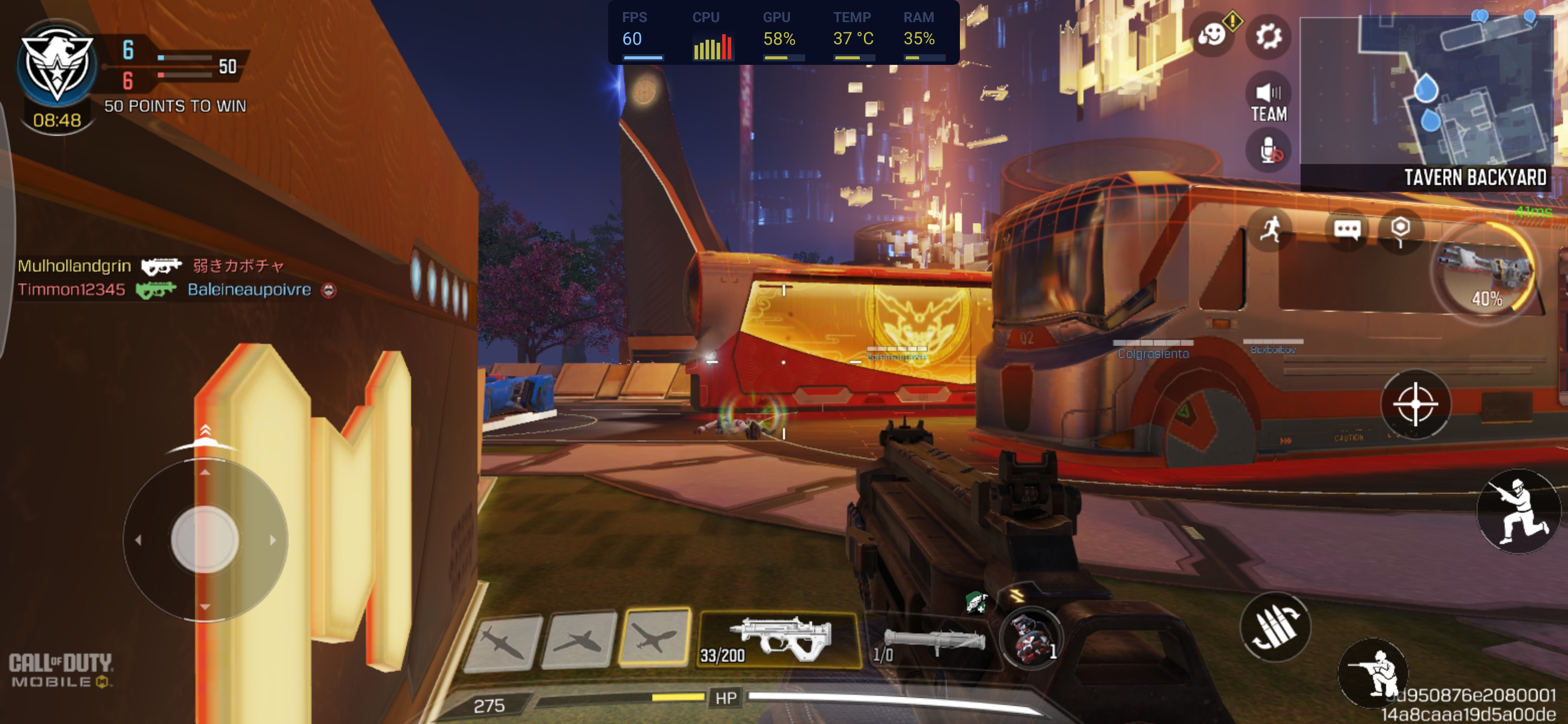
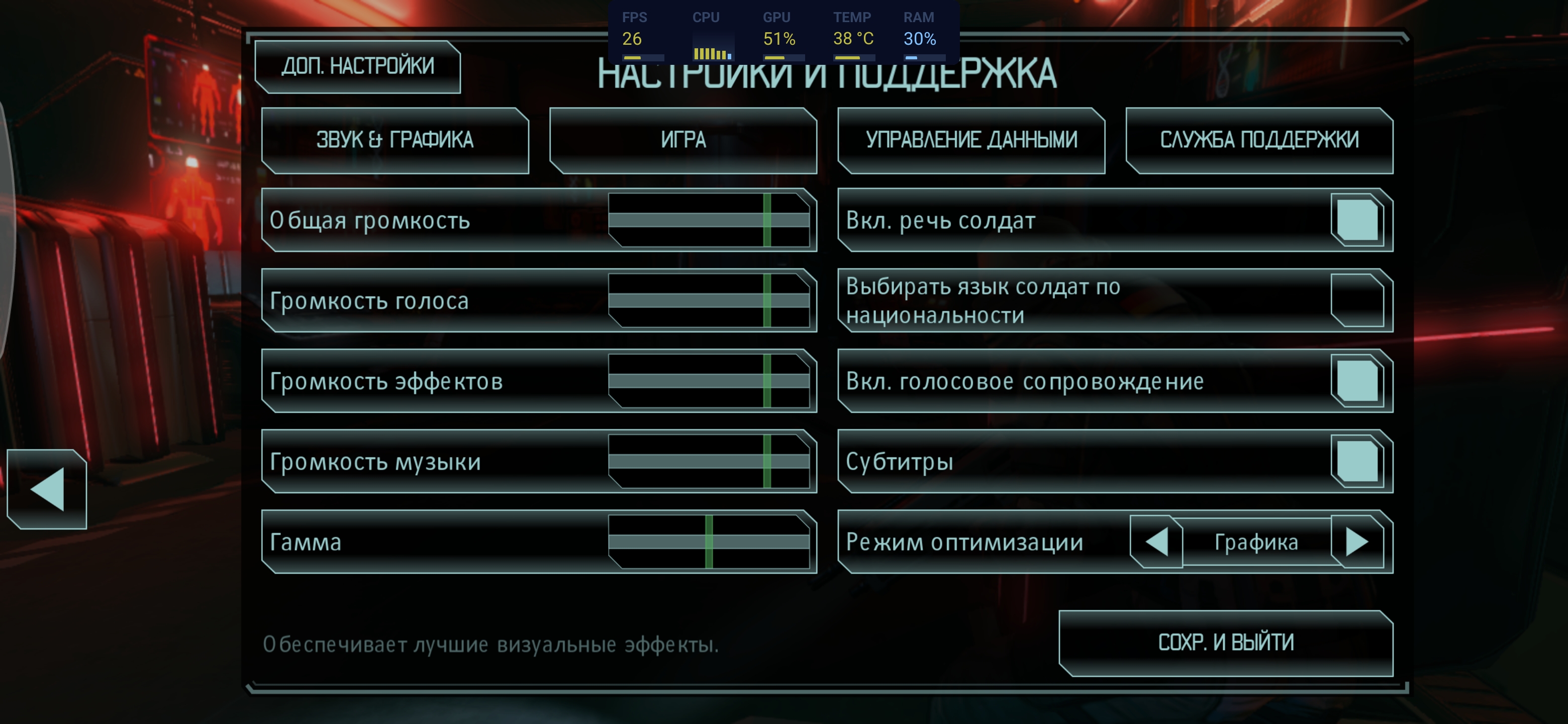





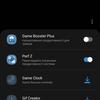















Communications Samsung Galaxy S24 Ultra
Samsung Galaxy S24 Ultra is equipped with tri-band Wi-Fi 802.11 a/b/g/n/ac/6e/7, Bluetooth 5.3 LE with aptX, aptX HD, LDAC, NFC codecs for contactless payment and Ultra Wideband (UWB). To determine the position, the smartphone uses global positioning systems GPS, GLONASS, GALILEO, BDS, QZSS.

Sound quality Samsung Galaxy S24 Ultra
The smartphone can play stereo sound, as in most modern models, for this purpose, the main and earpiece speakers are used. The sound is loud, quite good and has some low frequencies. Of course, as much as possible in a smartphone. There is support for virtual surround sound Dolby Atmos, equaliser, quality enhancer UHQ Upscaler (works only with branded headphones) and Adapt Sound to adjust the gain level to the user's age and hearing.
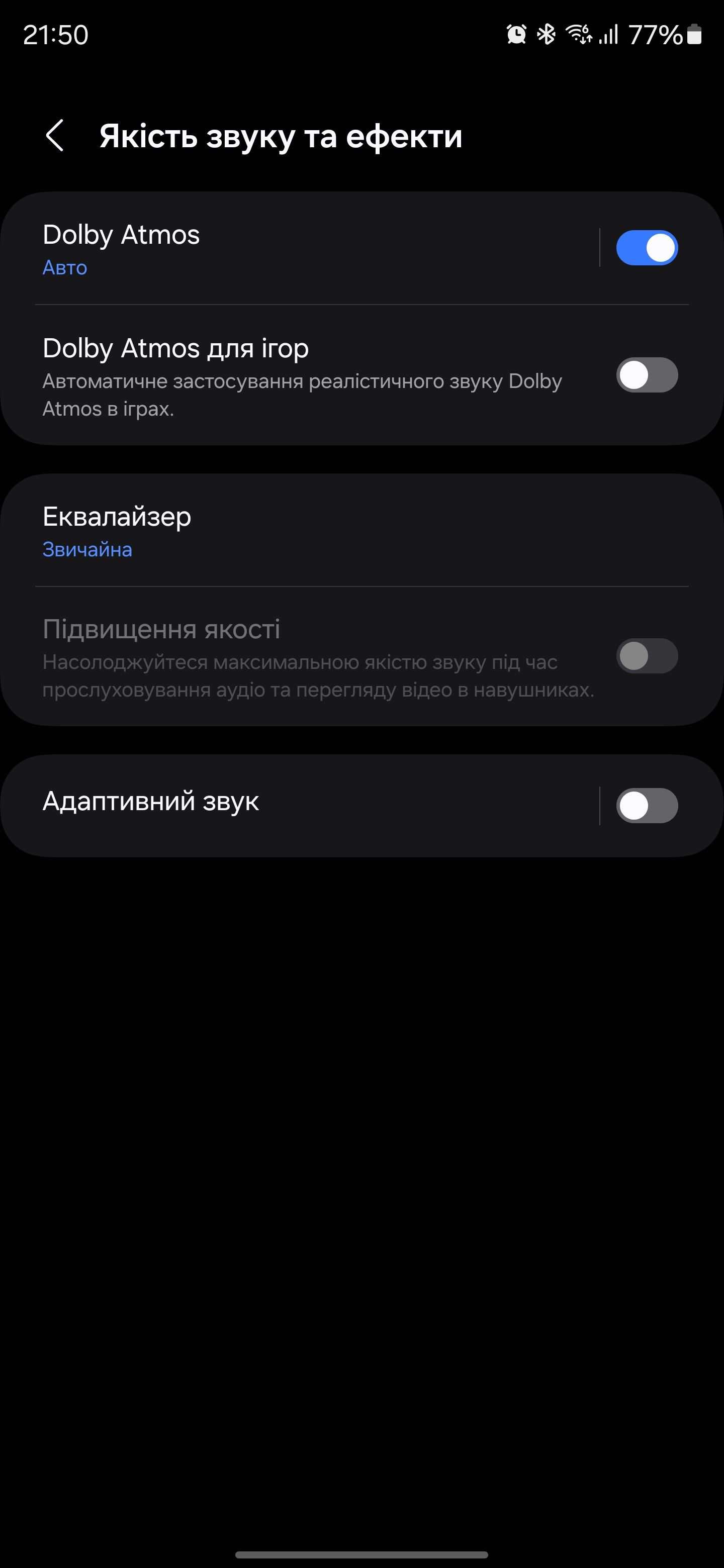
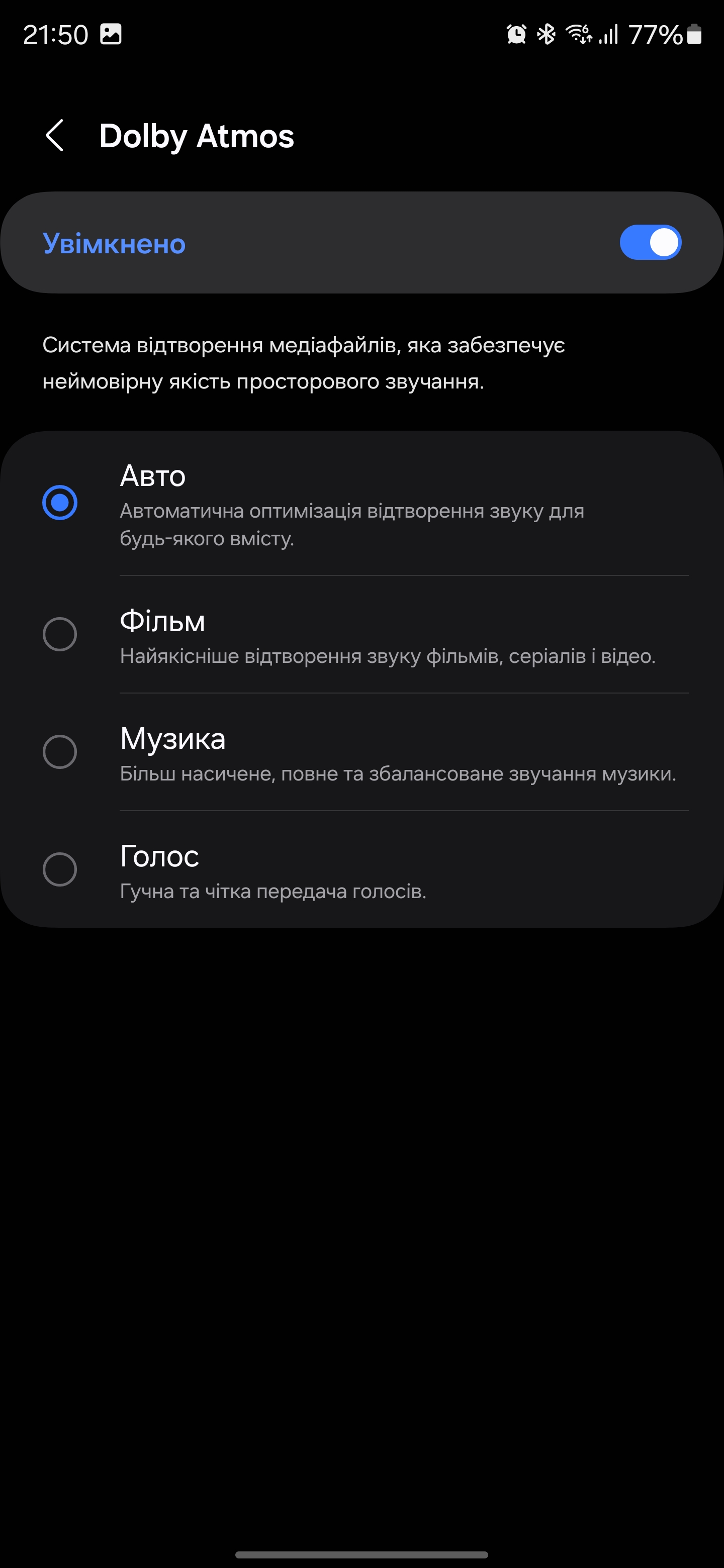
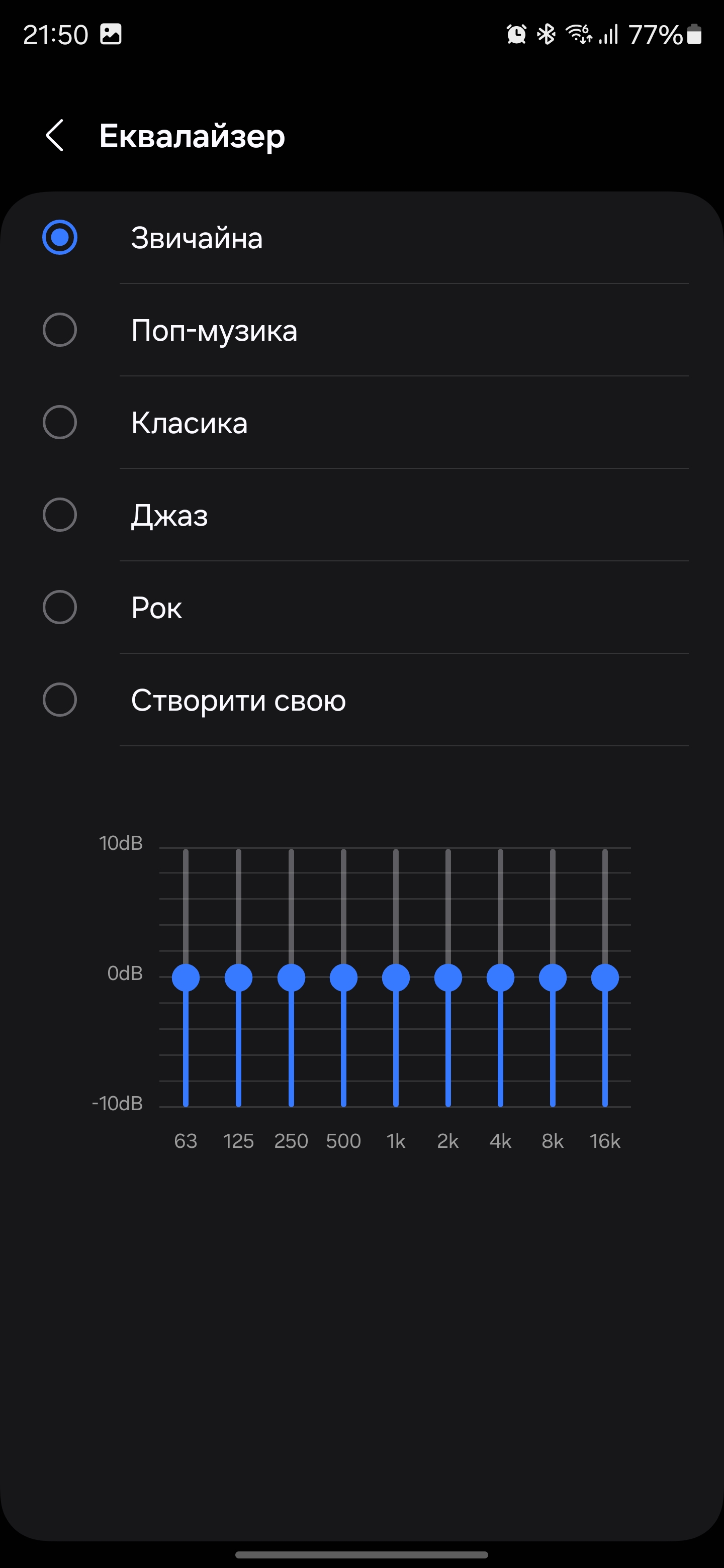





Samsung Galaxy S24 Ultra battery life Samsung Galaxy S24 Ultra has a 5000 mAh battery, similar to the previous model. Charging speeds are also unchanged: wired at 45W, wireless 15W and reverse wireless charging 4.5W. Only the smartphone arrived for review, without accessories. Therefore, it was not possible to check the maximum charging speed. The battery life, according to my own observations, has also changed, but not significantly. The smartphone lasts a day on a single charge without any problems in everyday use. Approximately 20-30 minutes of calls, browser, YouTube, messengers, email, social networks, about an hour of music via Bluetooth and fairly active use of the camera. If you add games and benchmarks, you'll have to charge the smartphone in the evening.


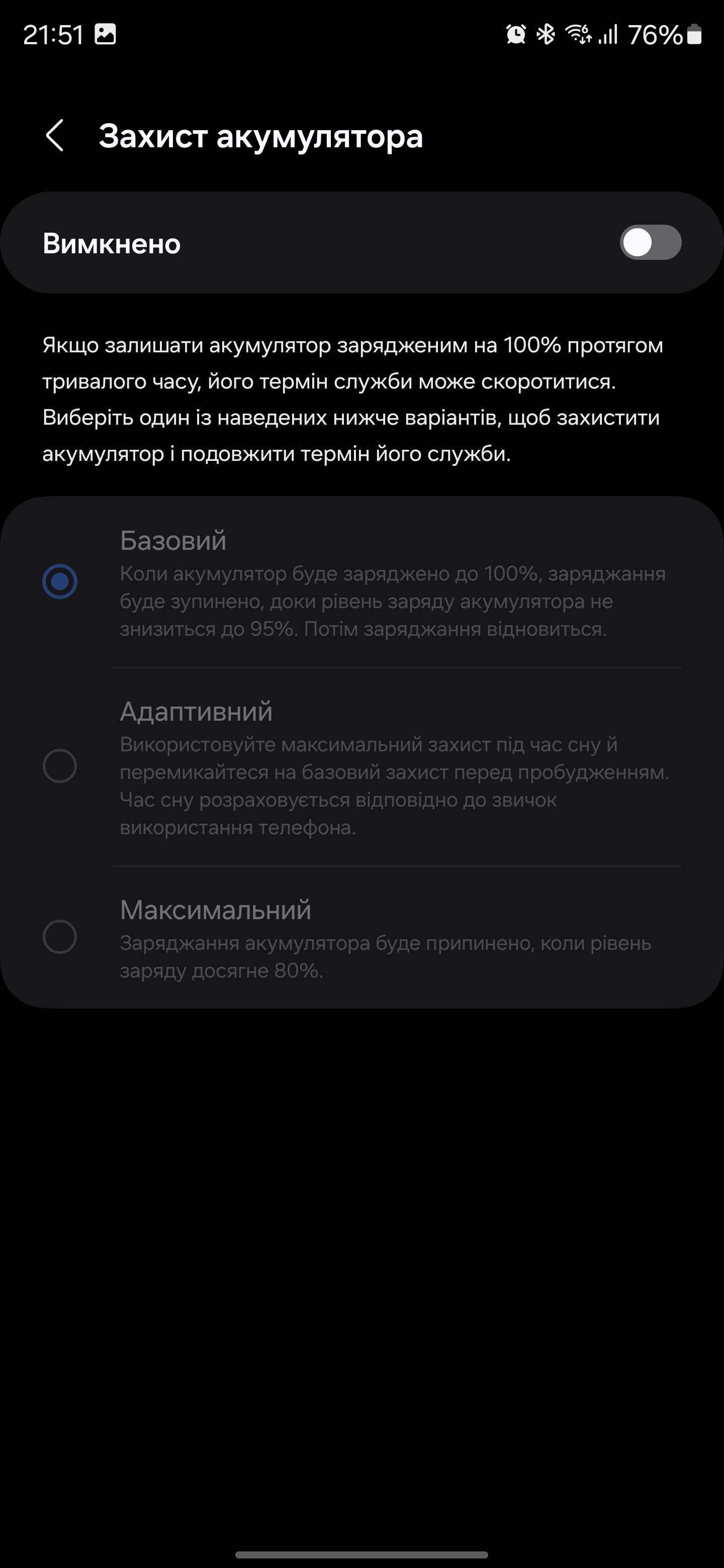







How user-friendly is the Samsung Galaxy S24 Ultra interface and what is Galaxy AI?

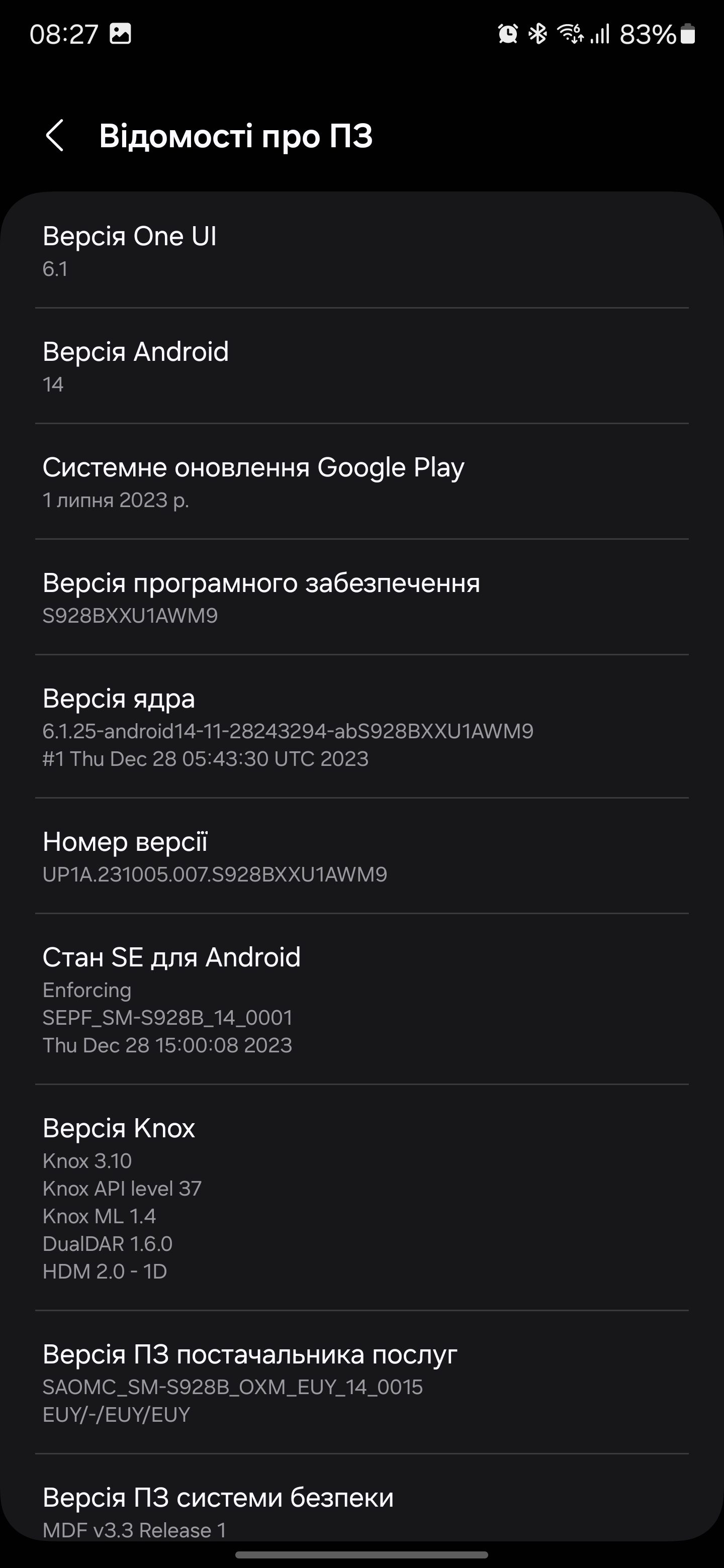




Samsung Galaxy S24 Ultra runs on Android 14 version with the proprietary OneUI 6.1 shell. Recently, gg reviewed the Samsung Galaxy S23 FE smartphone with the OneUI 6.0shell. In fact, the main difference between OneUI 6.1 and Galaxy AI is in the functions of working with artificial intelligence (neural networks and machine learning). So, everything is familiar and will be absolutely familiar to an Android user. We have desktops, widgets, a separate application menu, gesture and button options for navigating the system. The shell allows you to change the appearance of the interface very flexibly, including themes, colour schemes, wallpapers, etc.


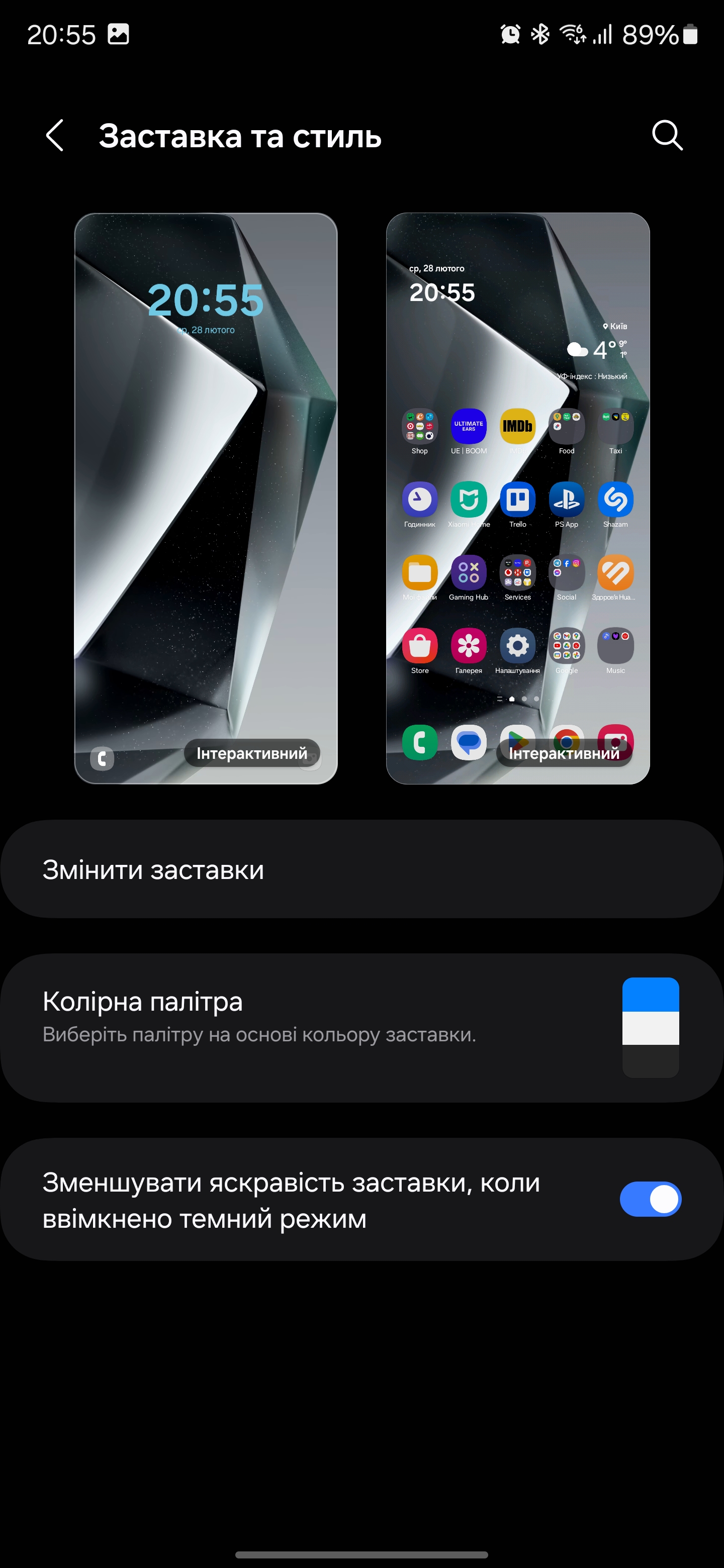


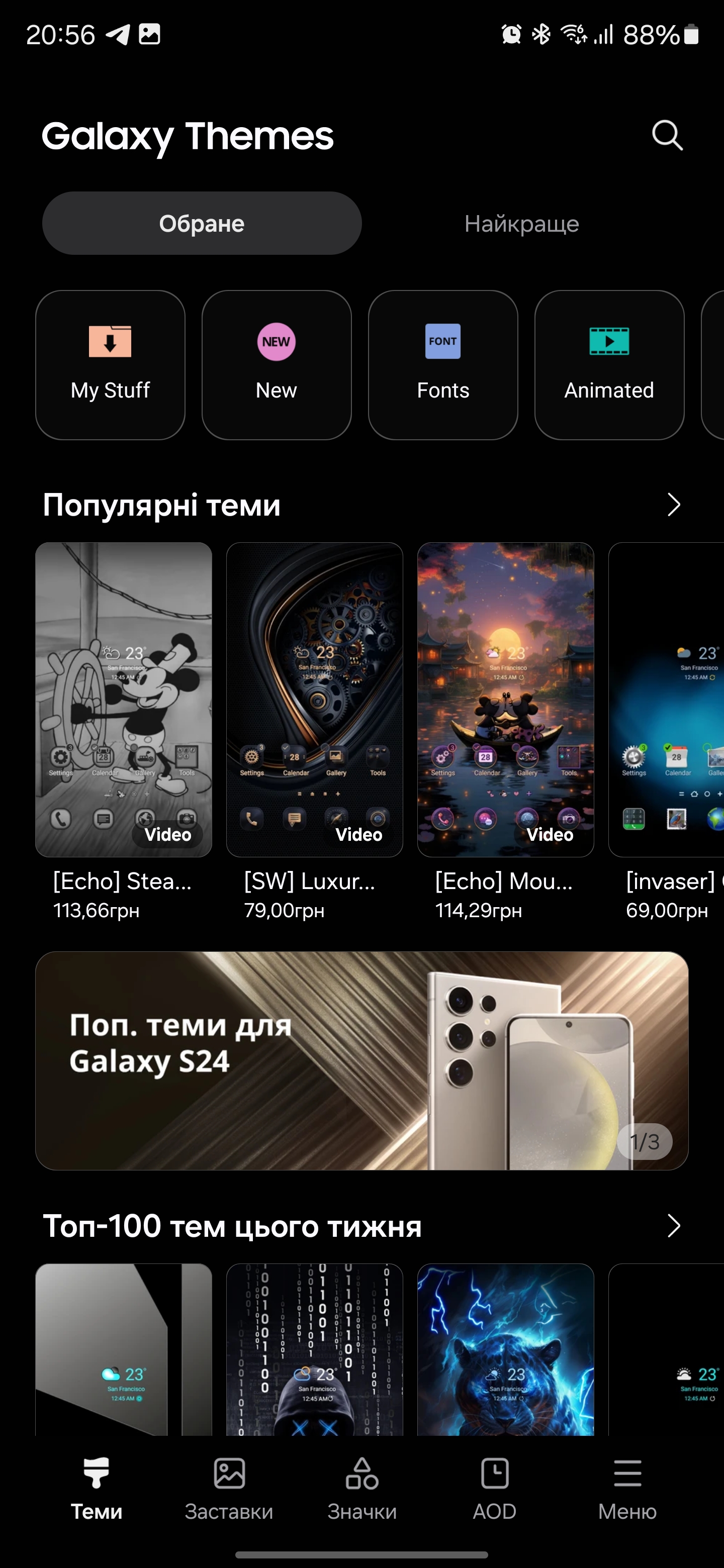
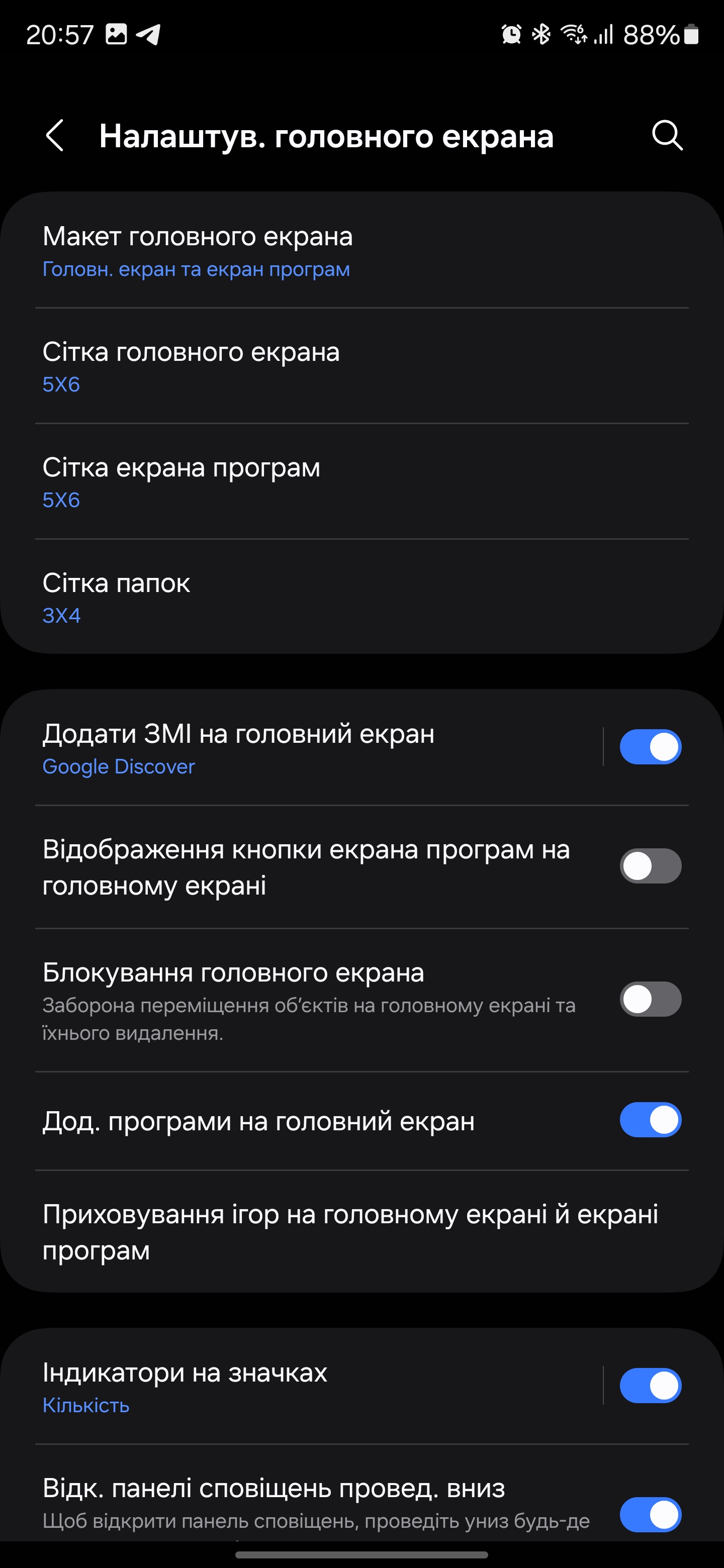


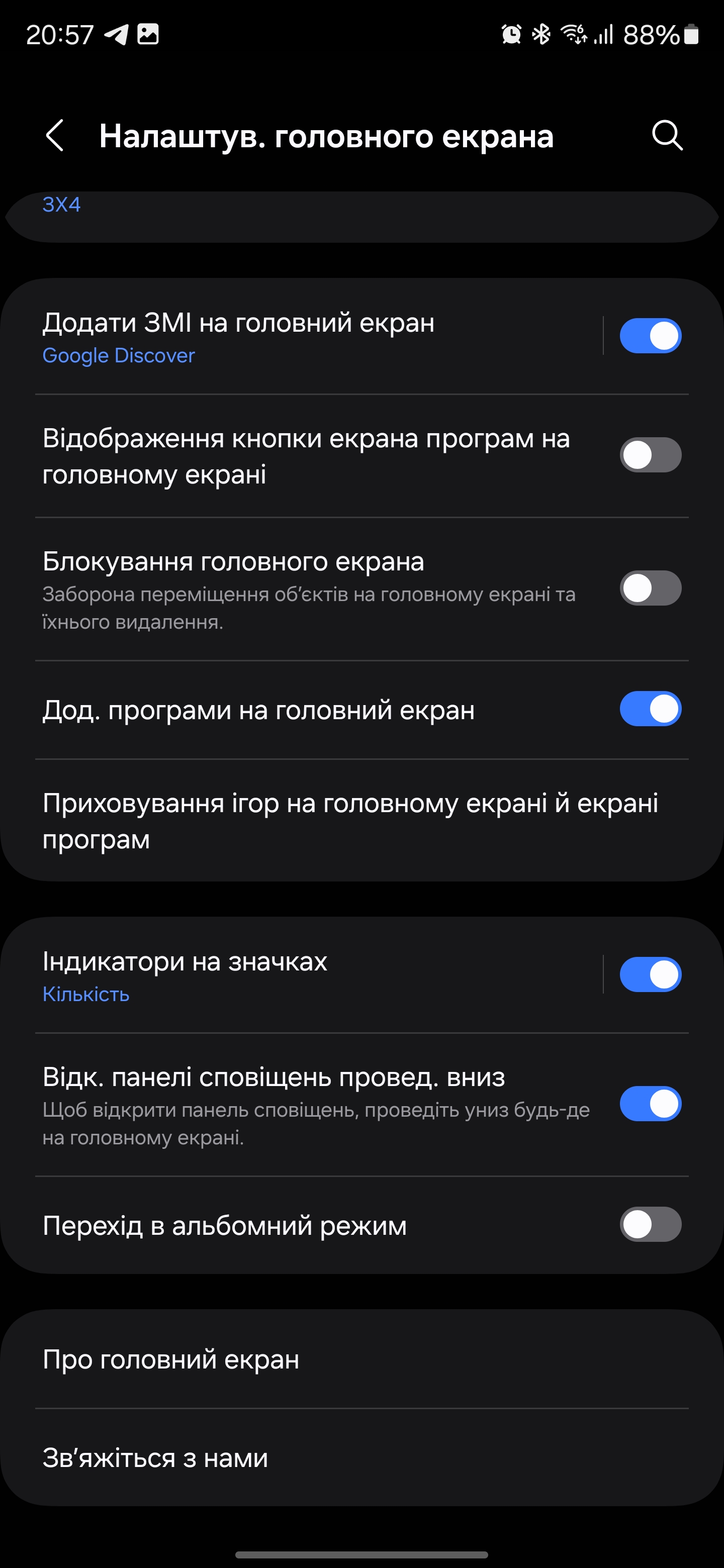


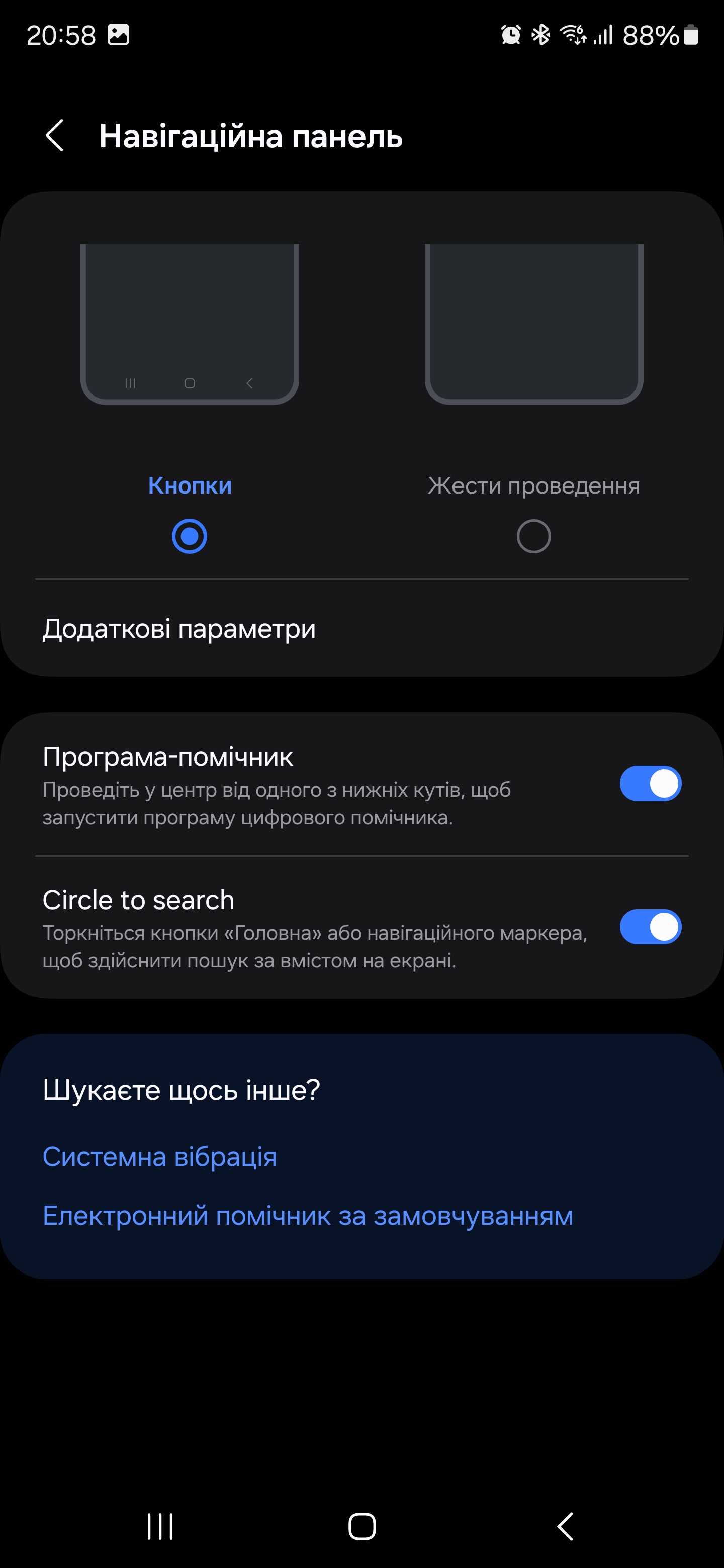


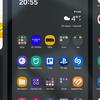
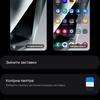

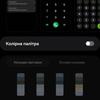



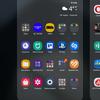





The functional application manager is familiar from previous Samsung models. A standard horizontal card carousel with the ability to close all applications, switch to split screen mode and launch applications in a window.
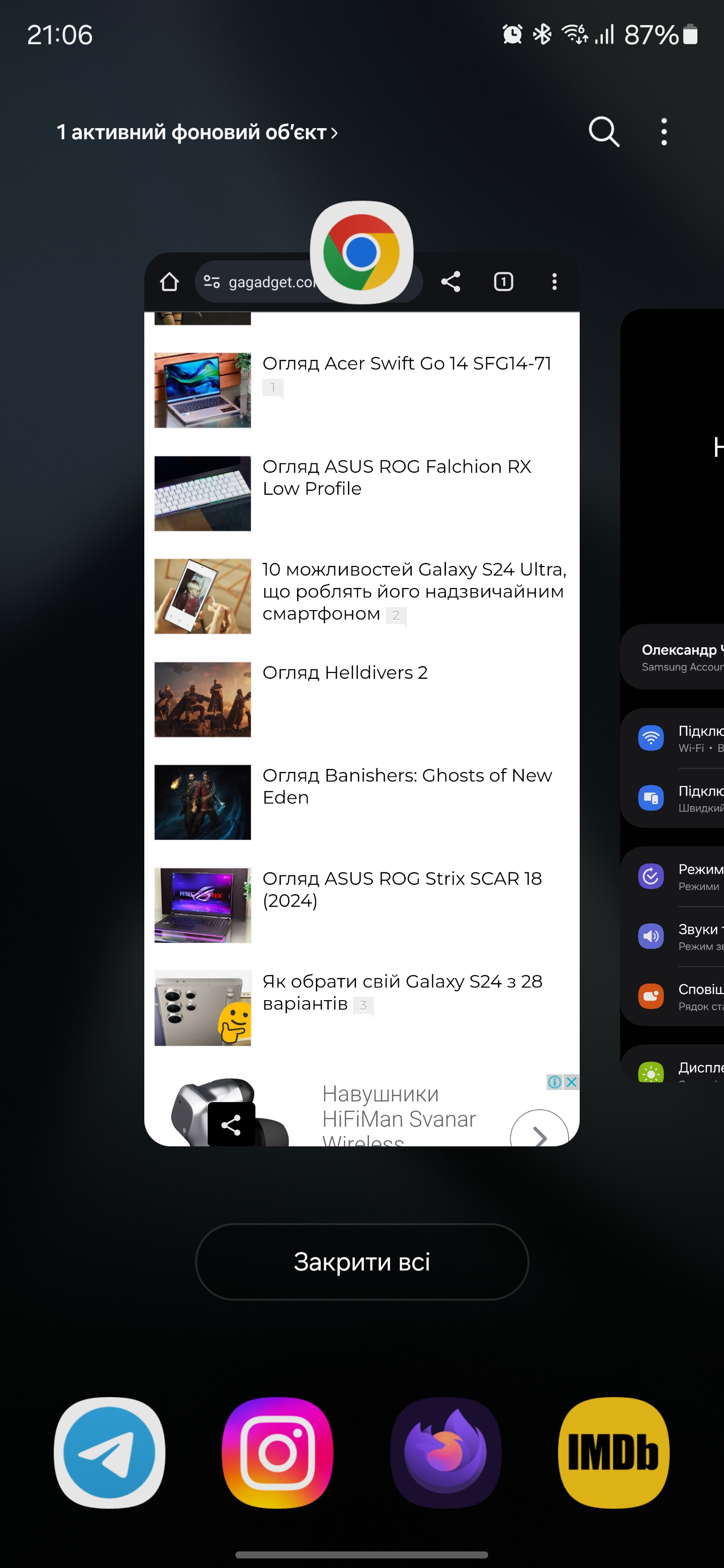

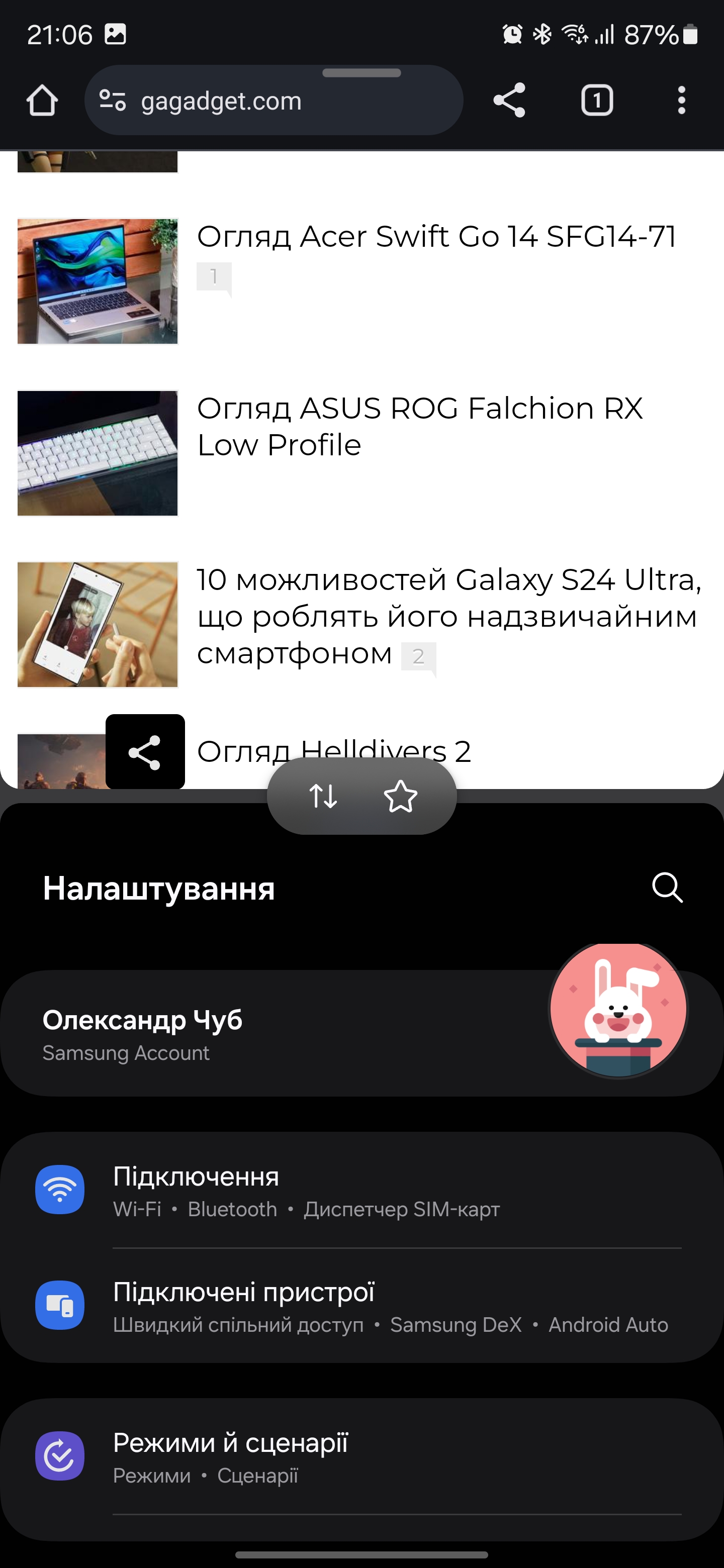






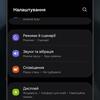


Edge sidebars that have not changed for many years:

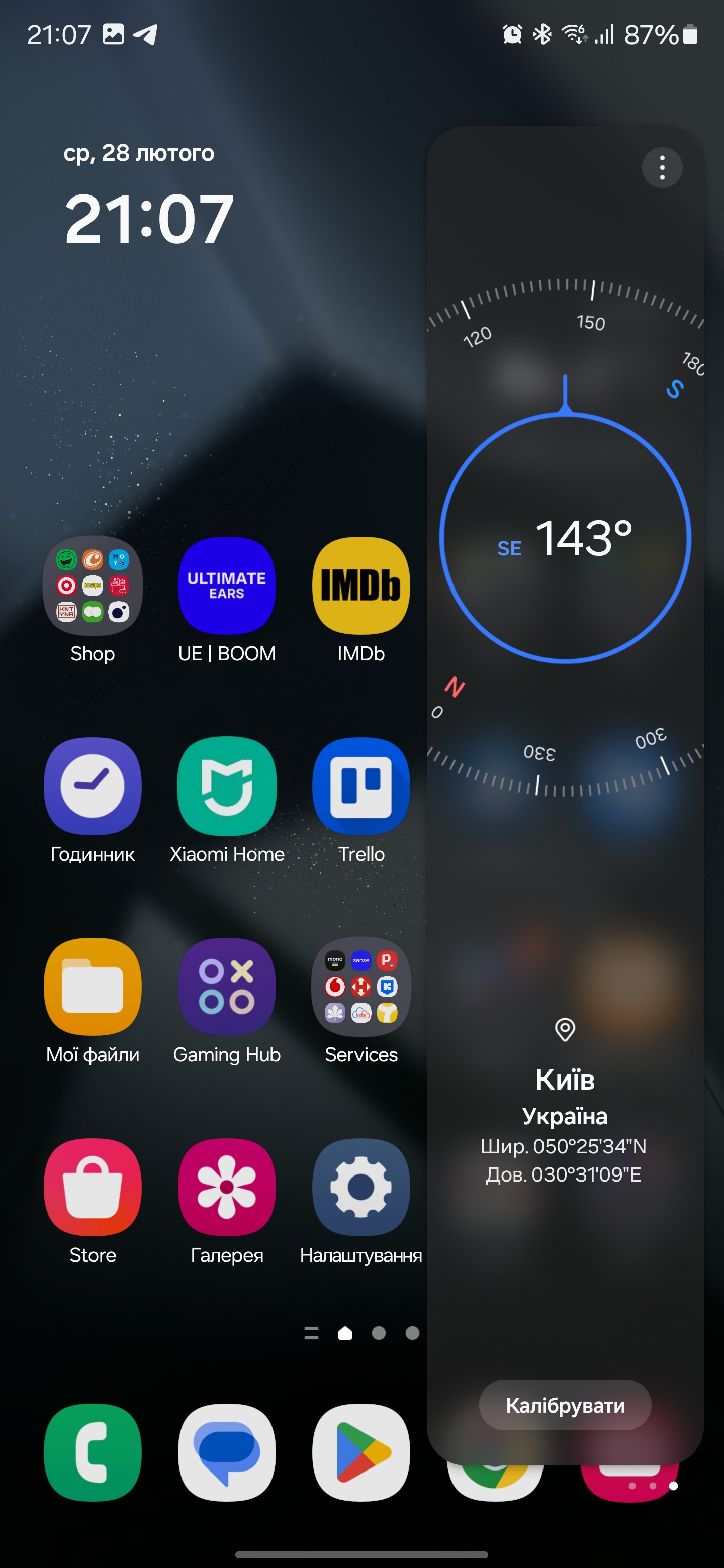
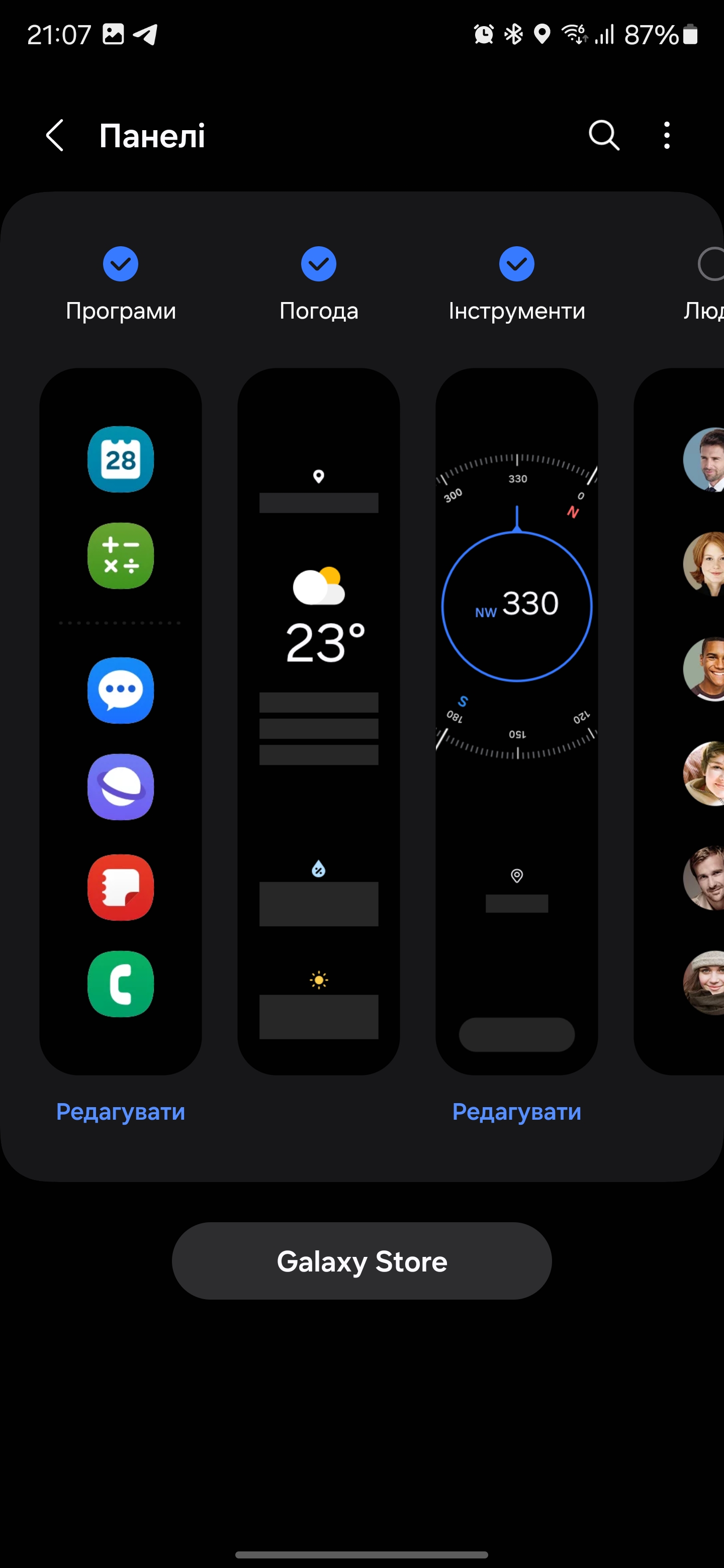



In the advanced features section, there are some gesture controls to quickly switch to split screen mode, open an application in a window, switch to one-handed operation, etc. But the most interesting thing here is the Intelligent Tools menu, which is responsible for all Galaxy AI functions, as well as the option to handle all these functions only on a smartphone, without a network.

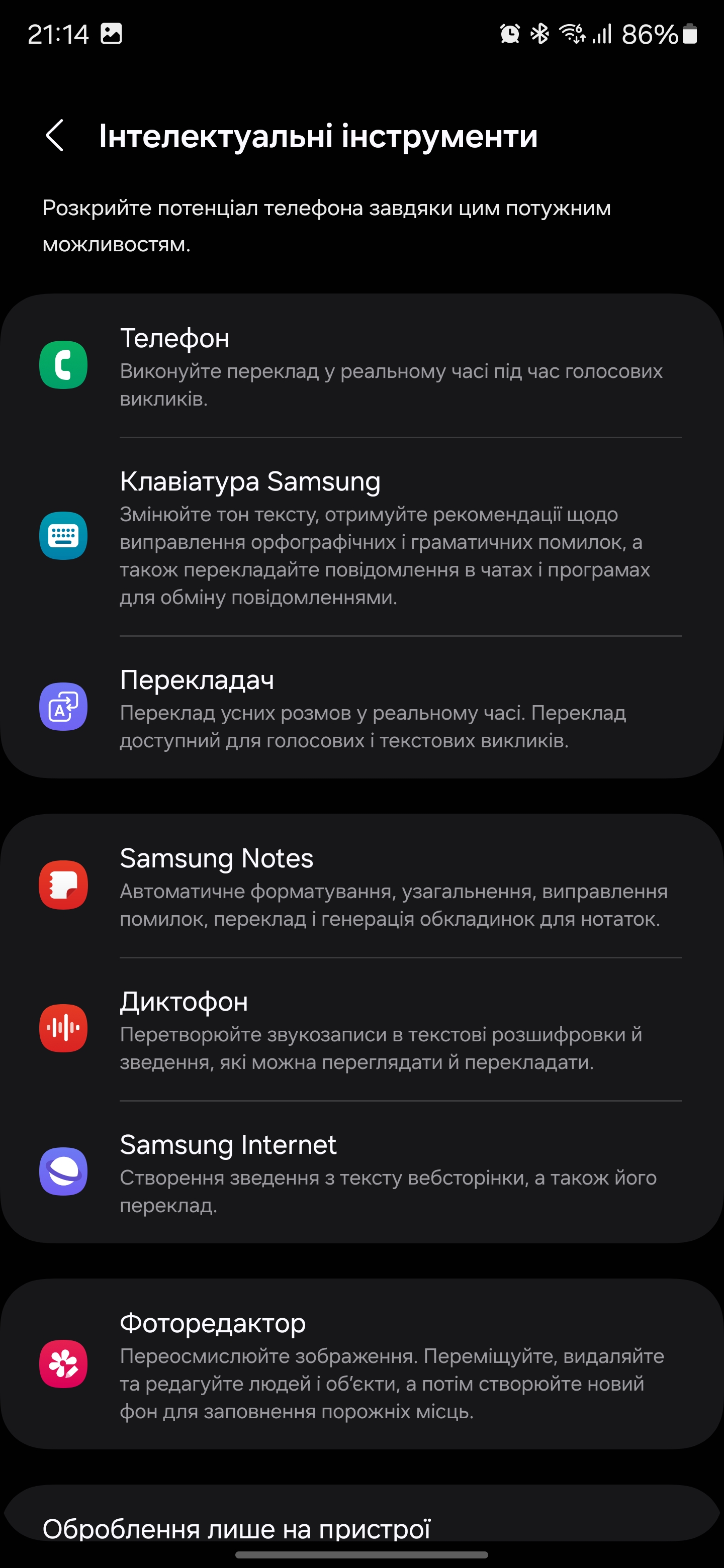
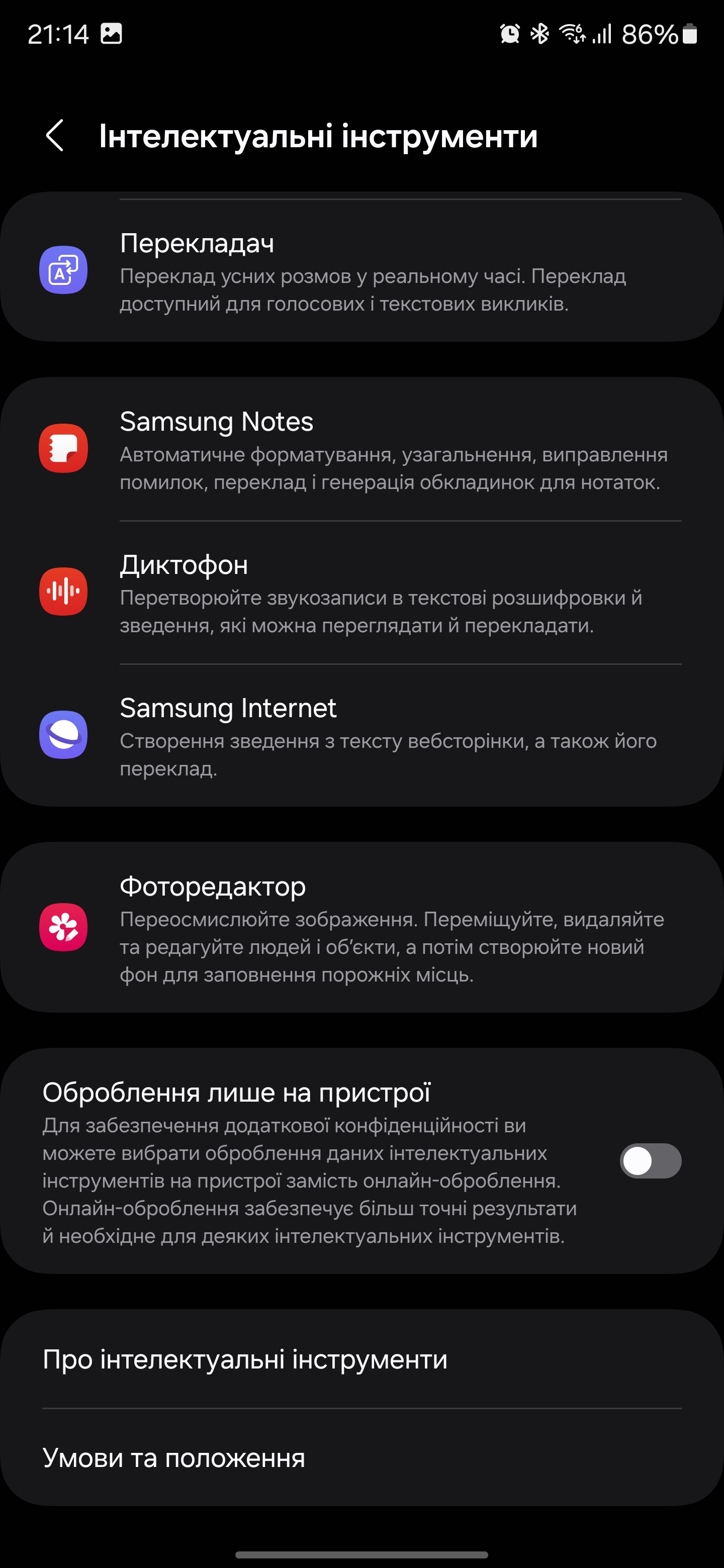


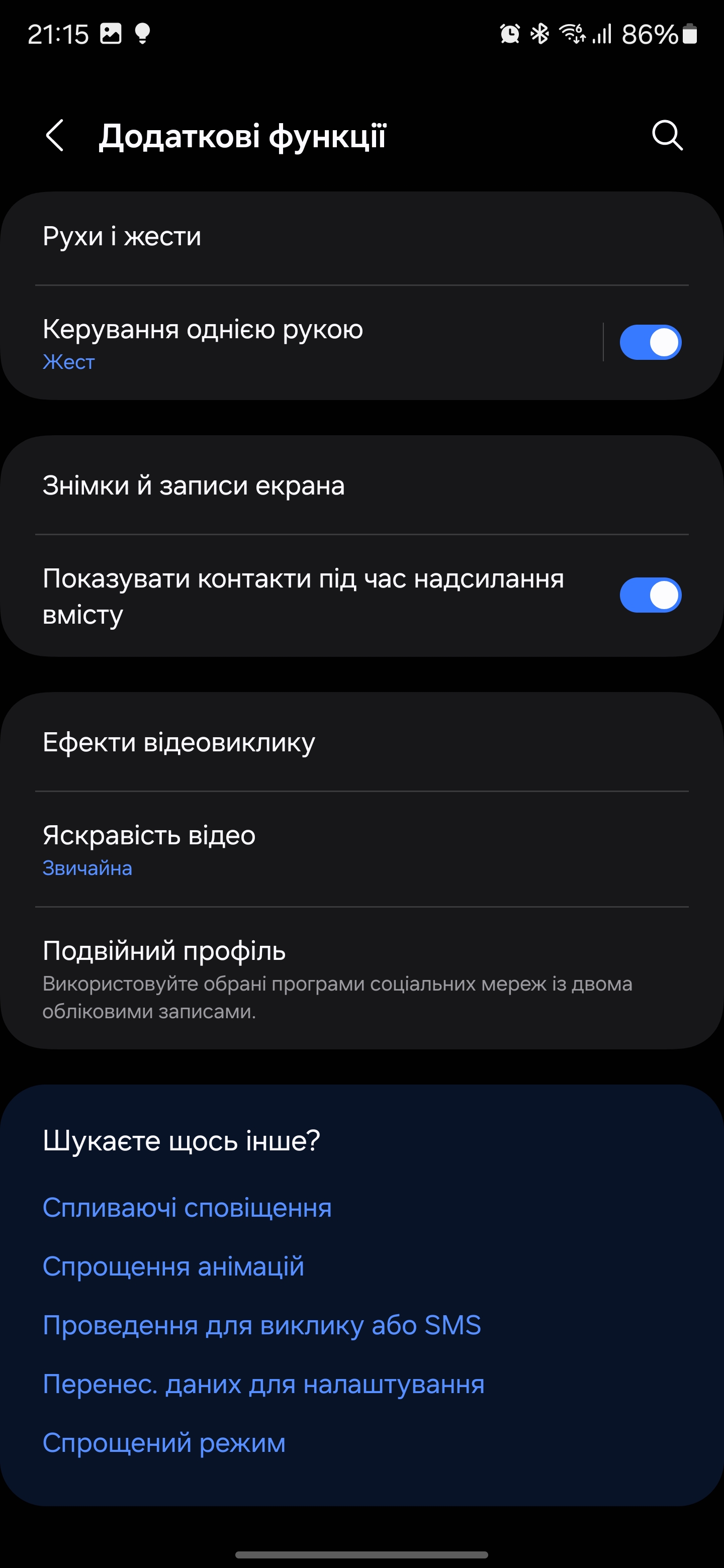






The Dex desktop mode still supports connectivity to monitors, TVs, and PCs via cable or Miracast.

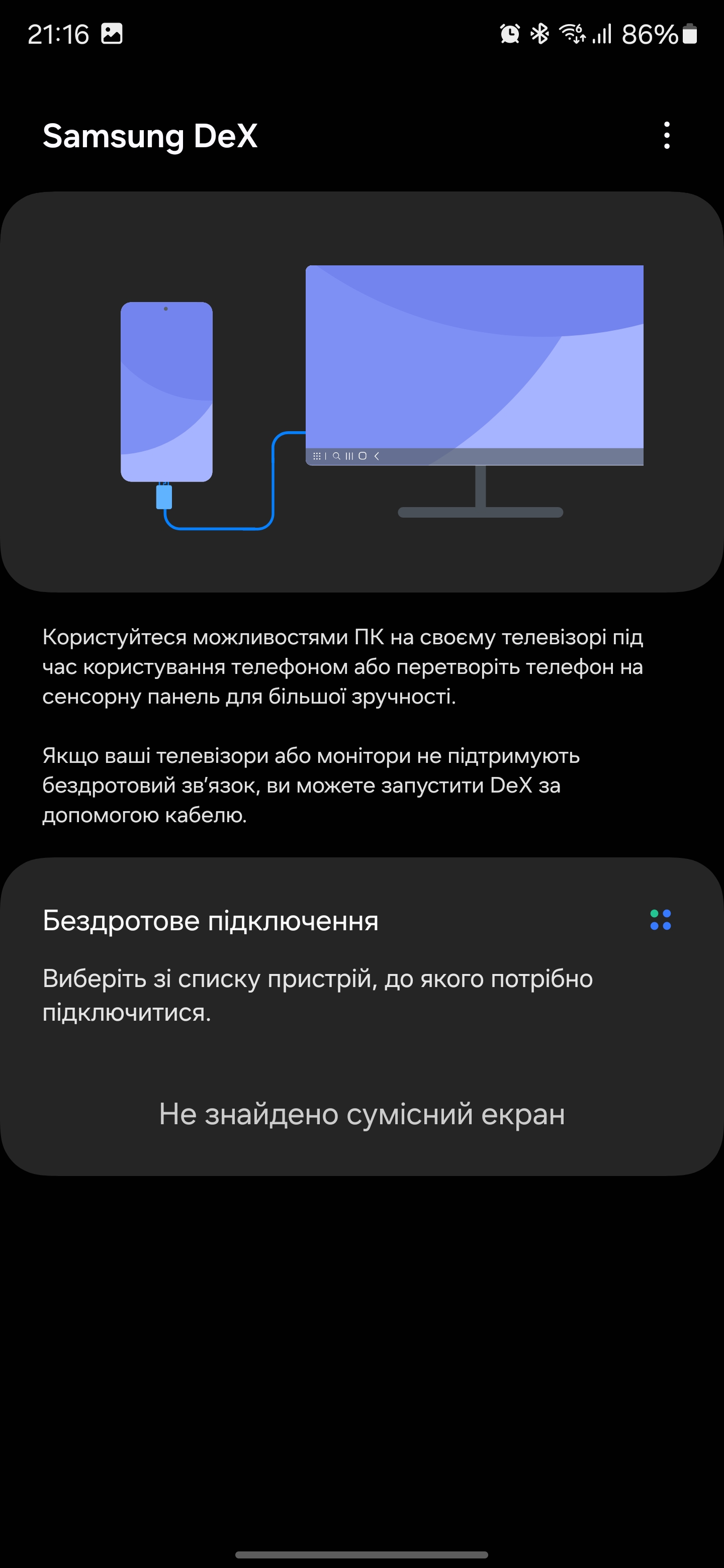




But the main feature of OneUI 6.1 is Galaxy AI. In recent years, we have already seen many applications of so-called artificial intelligence, neural networks, large language models, and machine learning in various ways. This includes image enhancement or generation, translation from different languages, formatting or zoning of texts, etc. In general, this is all available in different forms in different applications or services. Samsung has decided to combine all of this into the Galaxy AI platform on its smartphones and thus improve the user experience of its smartphones. And most of these features will be available offline. You can read more about all Galaxy AI features in our separate article. Today, we will only mention the main features in general terms. Samsung's updated keyboard has built-in functions that use neural networks and can help with text formatting. When communicating with friends, this is not so important. But when communicating with strangers or in business correspondence, the ability to stylistically transform text into more formal or business-like versions can be useful.
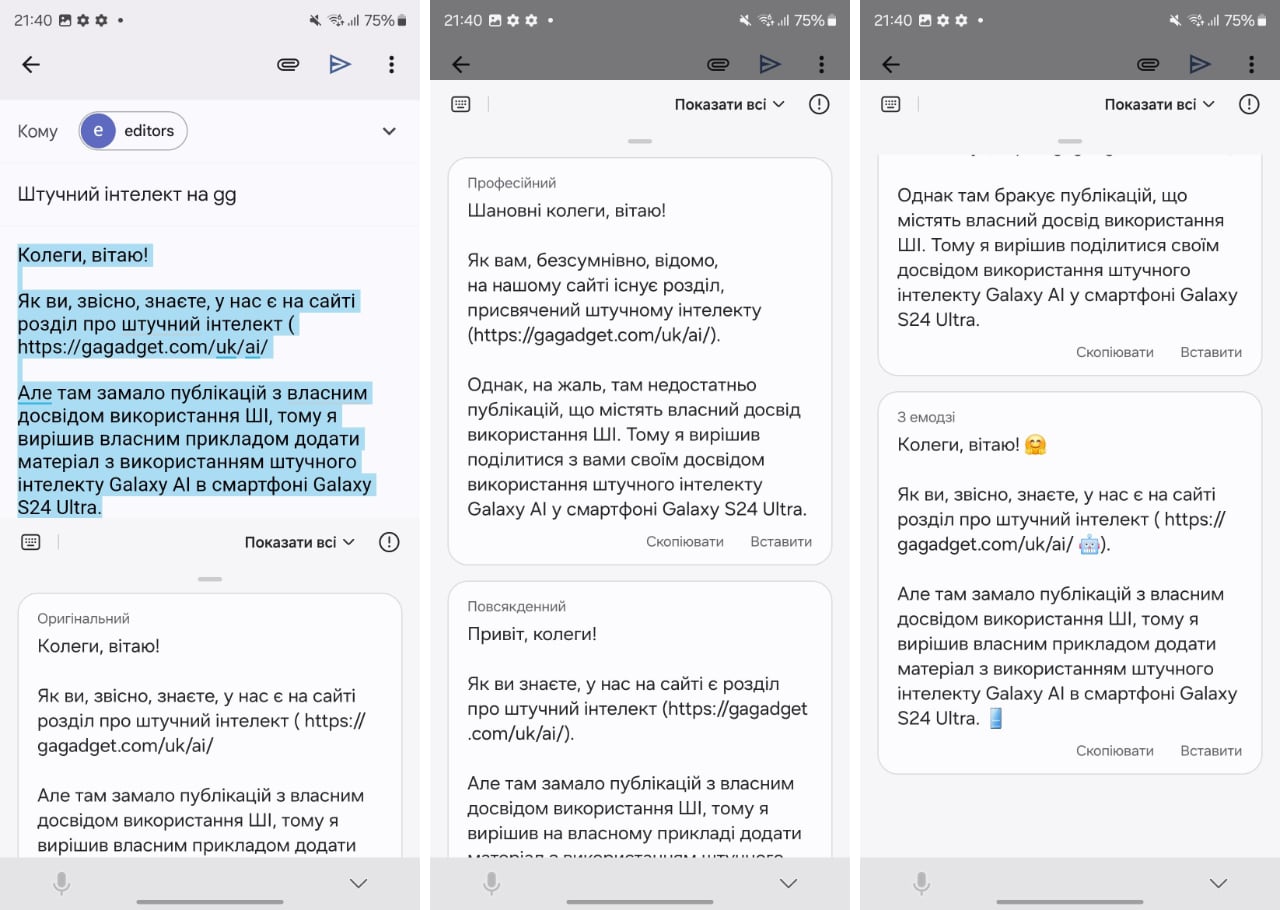
Samsung Notes has received many additional features. Now you can automatically organise all your notes, format them in a more convenient and tidy way, or make short summaries of selected text, which can also be arranged in the form of main points.
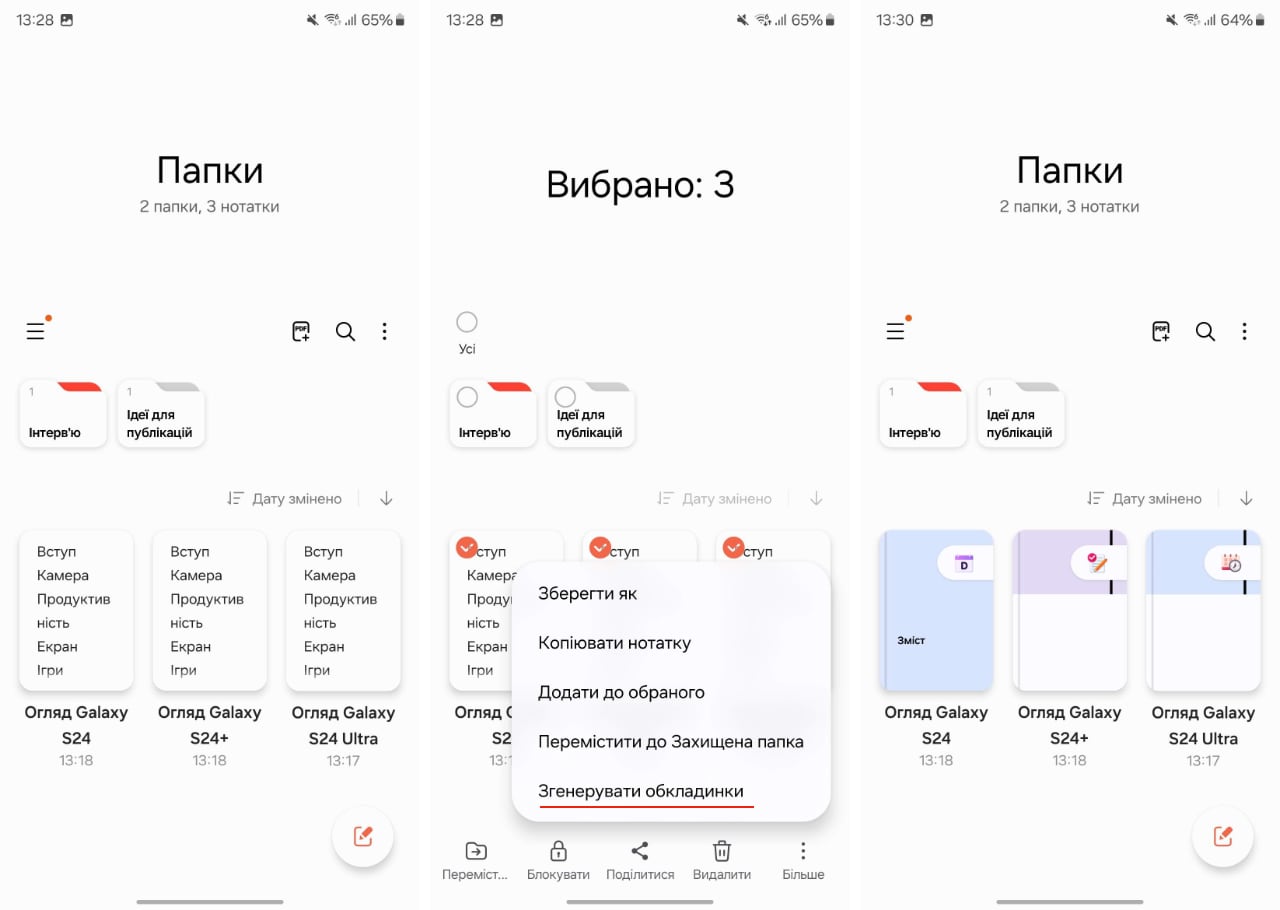
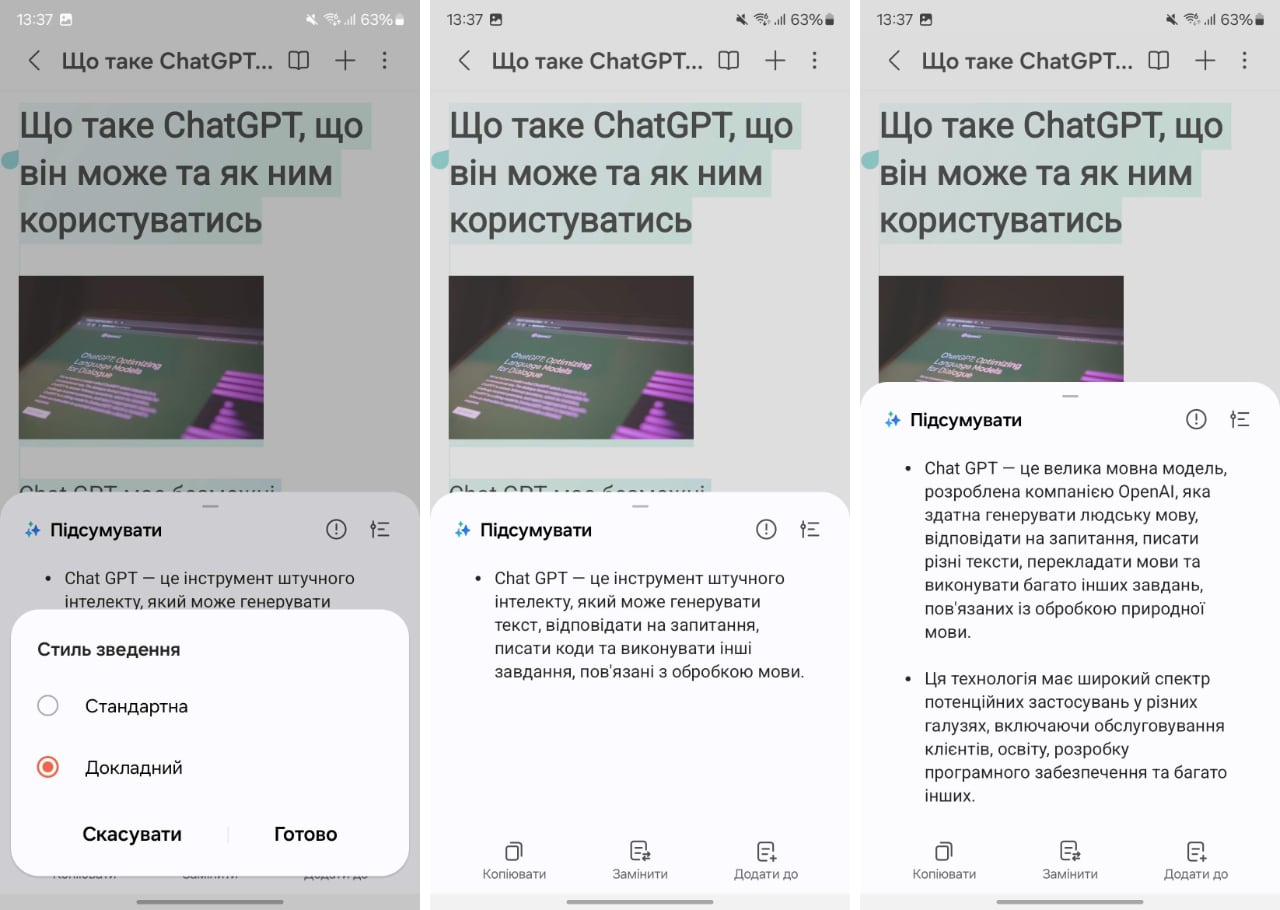
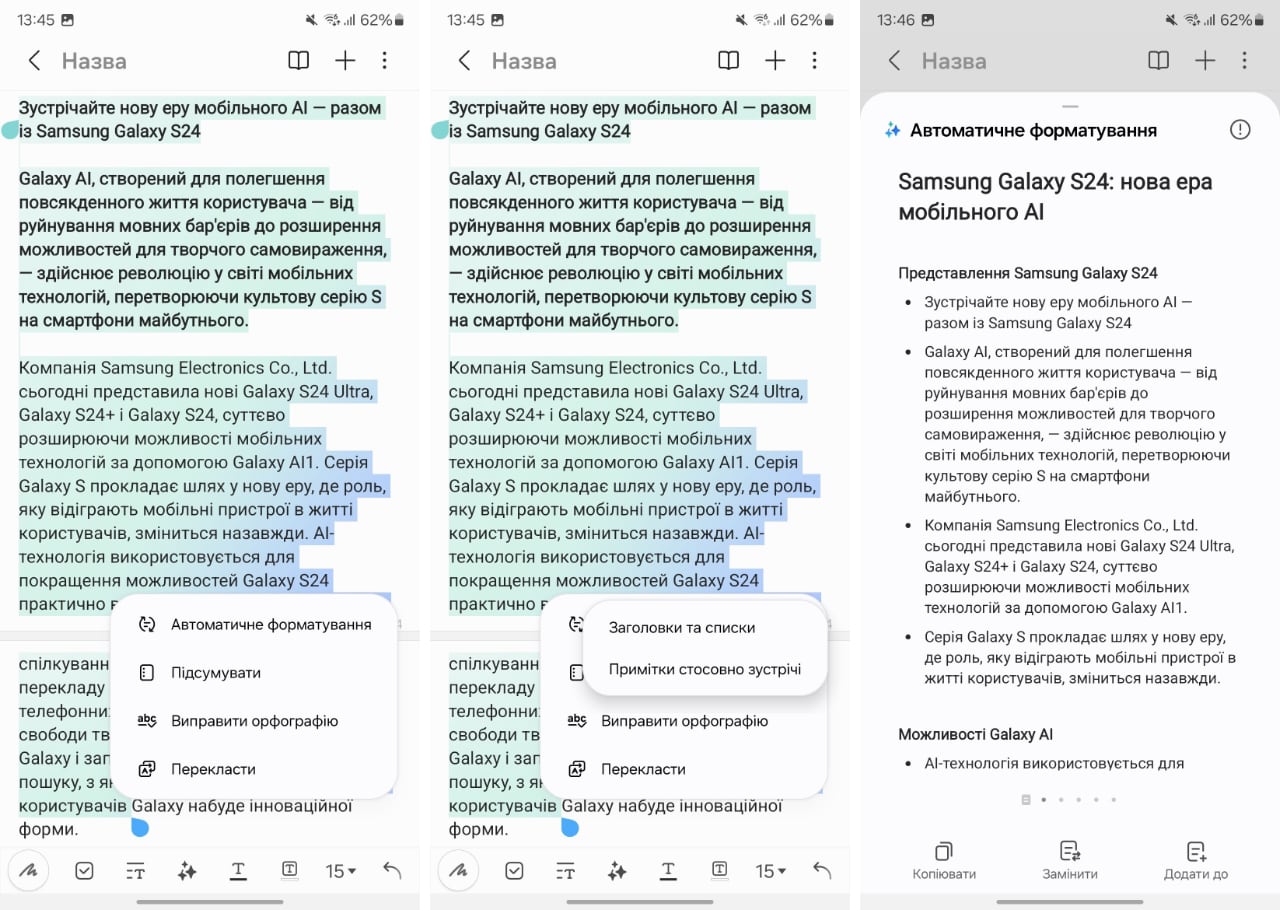
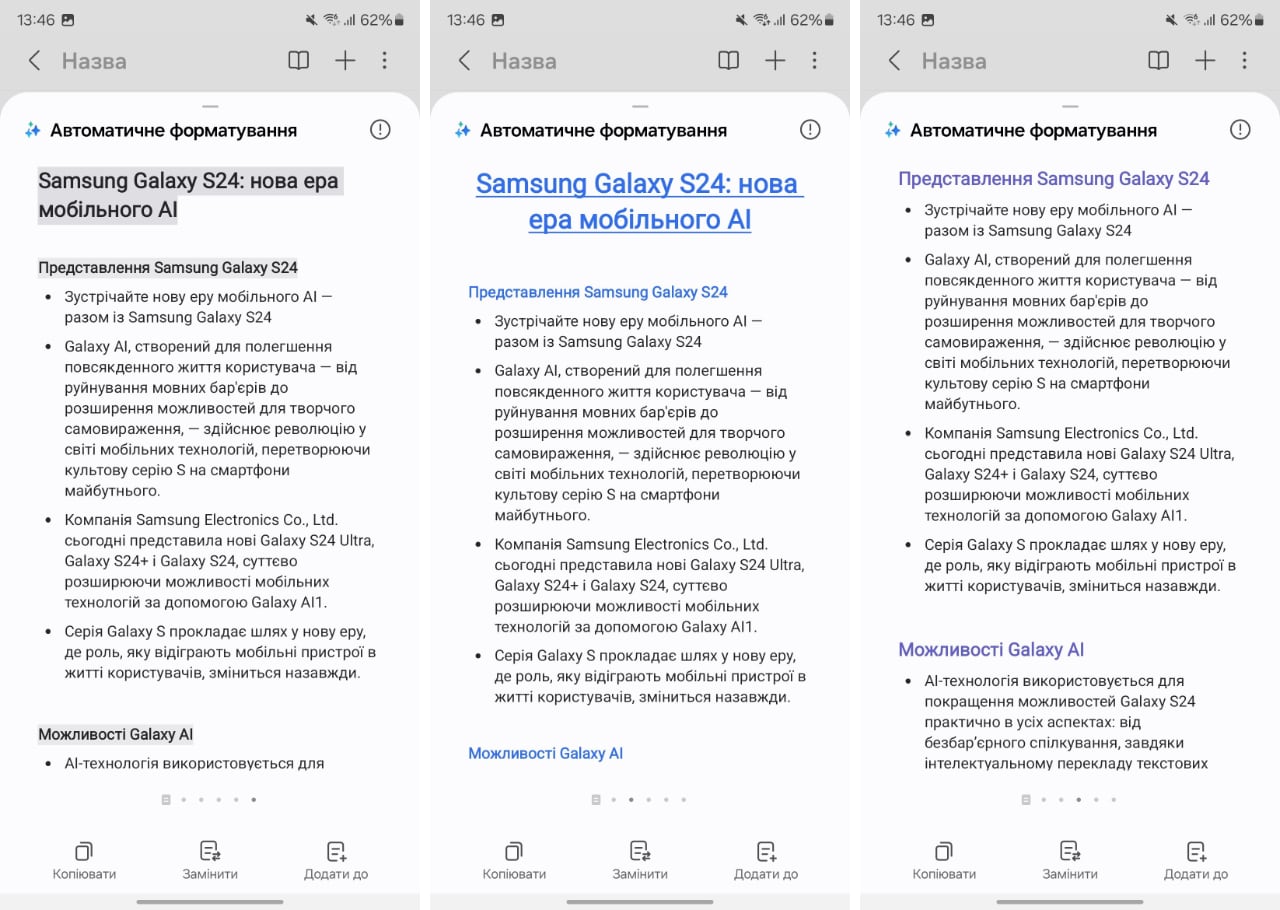




The real-time translation of phone calls looks more advanced. This will make life easier for those who regularly communicate with foreigners, especially if they are business calls. So far, not all languages are supported, but Samsung is working on expanding the list.
The Transcript Assist feature can also be useful. It allows you to turn a recorded phone call, office meeting, or interview into text. And then we return to the ability to automatically generate summaries and highlight the most important points.

Galaxy AI is also useful for cameras and pictures. Thanks to Photo Assist processing, you can fix a blocked horizon. At the same time, Galaxy AI adds some pieces instead of cropping them. Although it doesn't always work well. You can also use Photo Assist to remove excessive glare from surfaces.
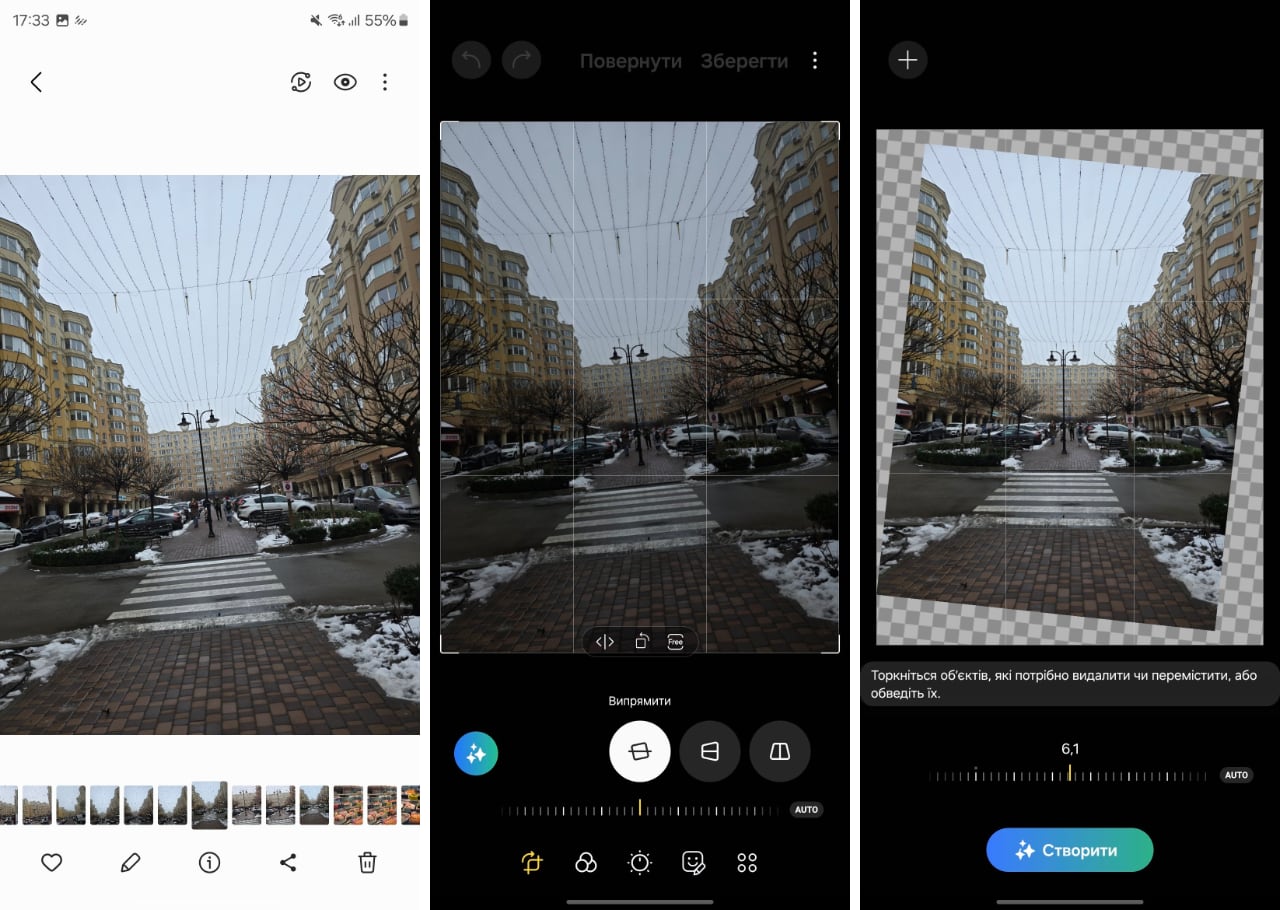
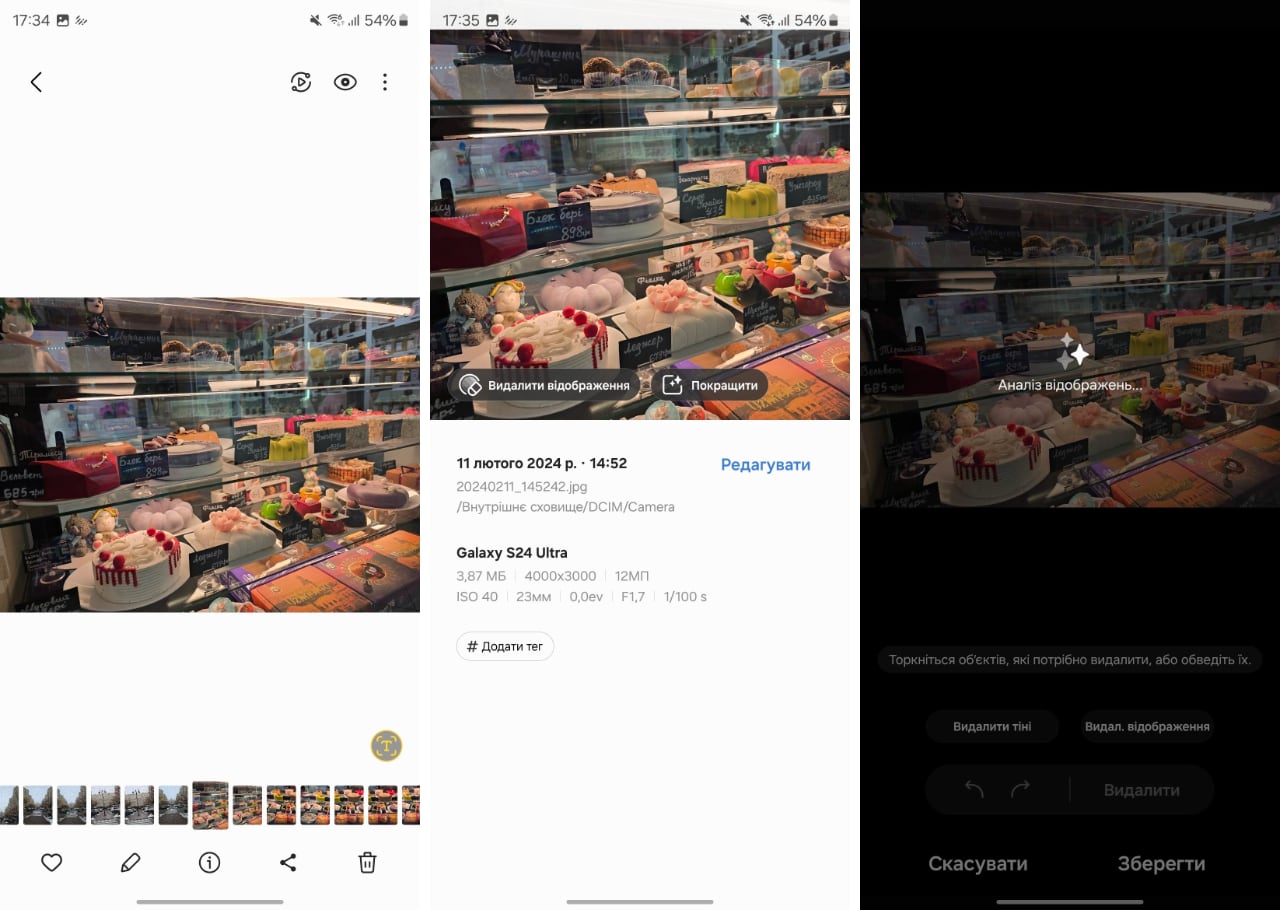


The Circle to Search feature can also be useful. This is a search for any object anywhere in your smartphone. That is, the function works in any application or in the interface in general. It is launched by a long touch on the Home button, or on the bottom of the display in the gesture navigation option. Then you simply circle the desired area.
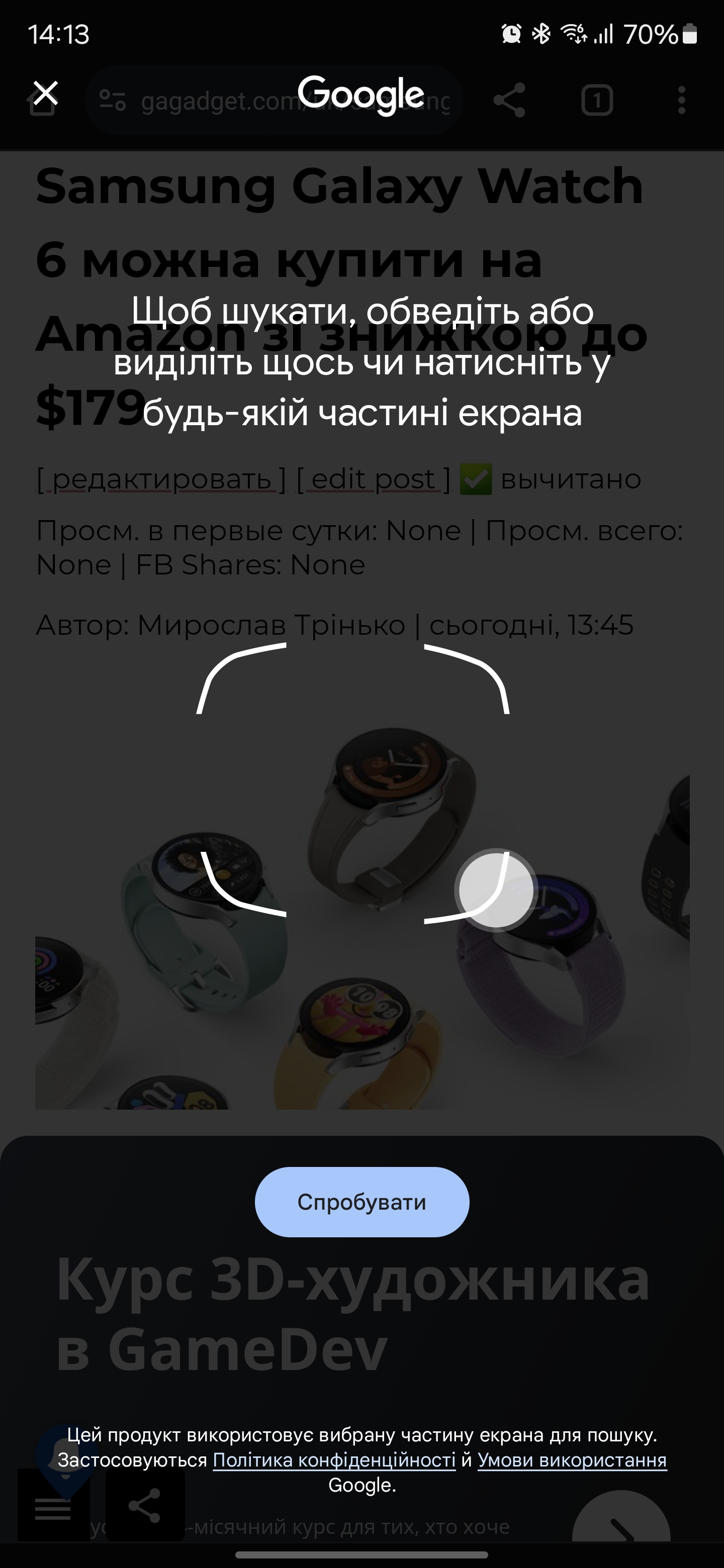



So far, Galaxy AI features are hardly a revolution. But they are really convenient and in some situations they can be extremely useful and in general we can say that they "improve the quality of life" in a smartphone.
What can the S Pen do in Samsung Galaxy S24 Ultra?
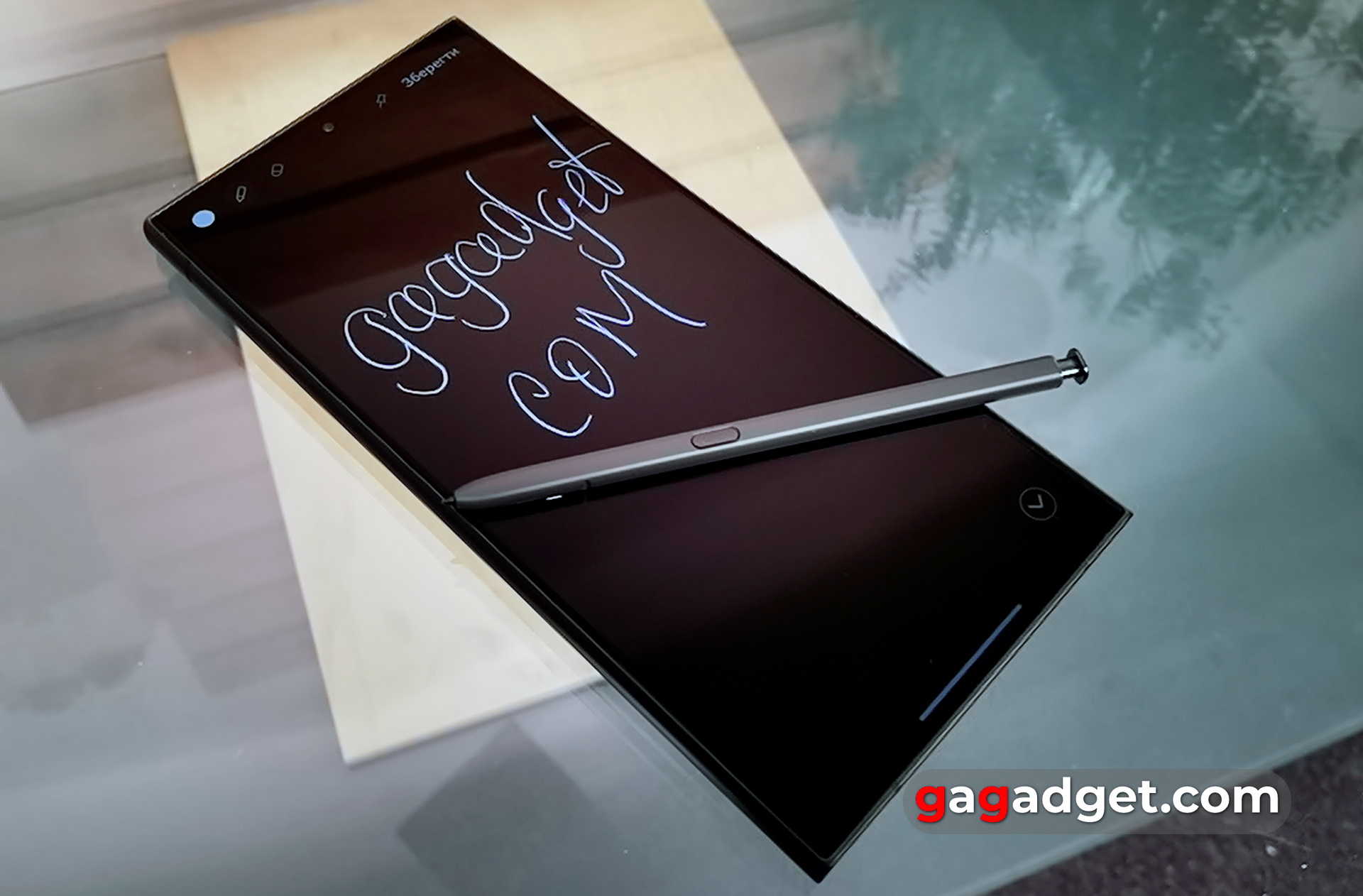
The S Pen has not changed since the previous generation. It is able to recognise up to 4096 pressure levels and angle of inclination. The S Pen is equipped with a Bluetooth LEmodule, gyroscope, accelerometer, and a single mechanical button. The pen can be used as a remote control. In different apps, you can configure different gestures with the stylus in the air: switching tracks, pause, play in the player, zoom, switch cameras and switch camera modes, etc.
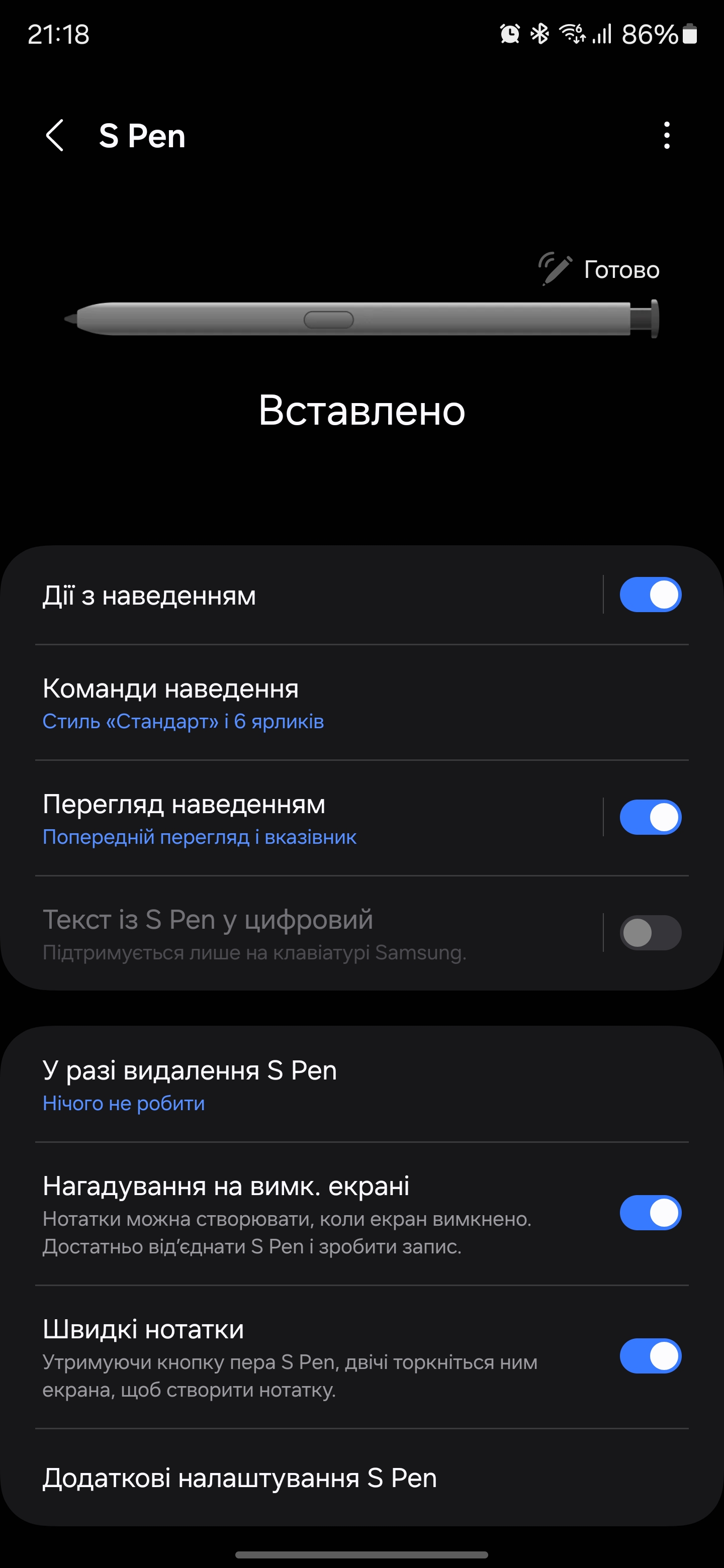
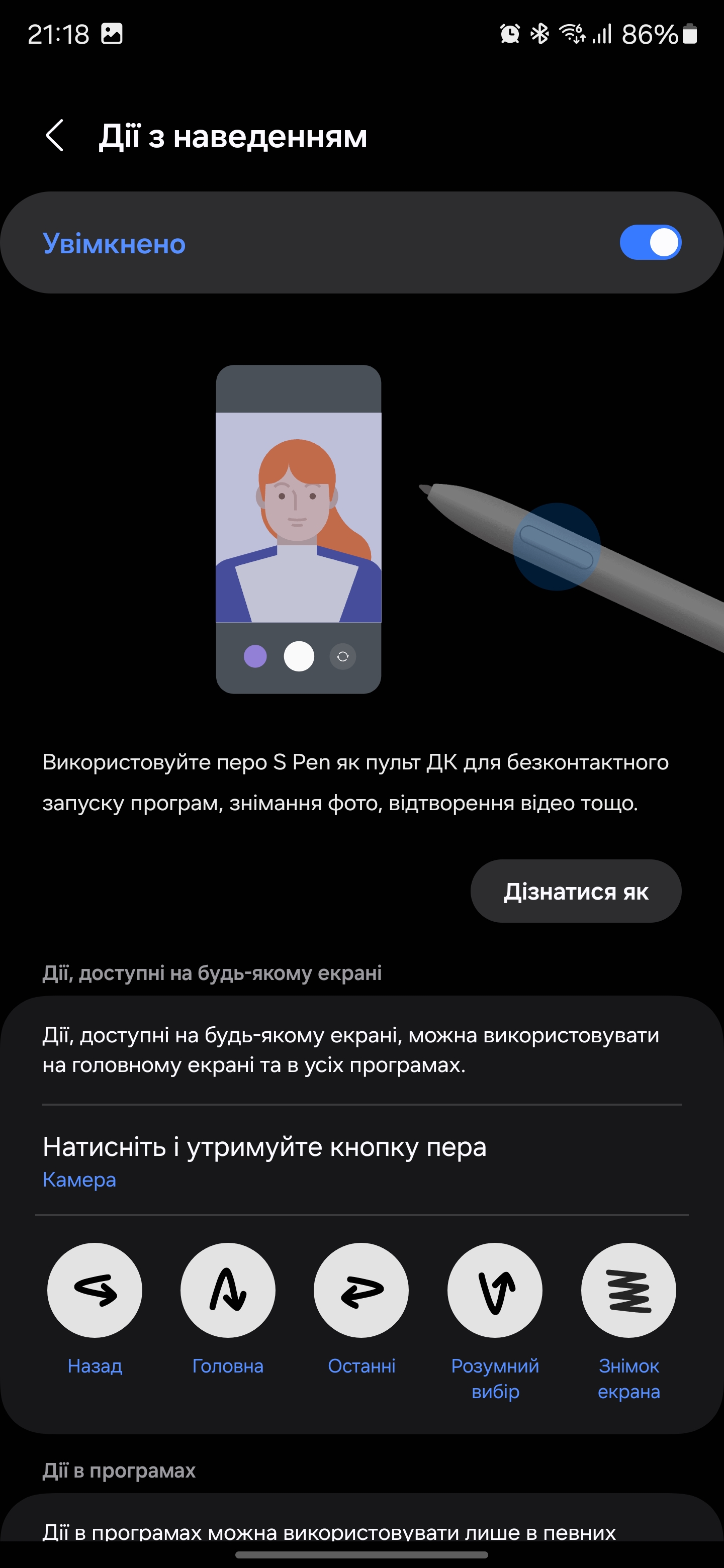



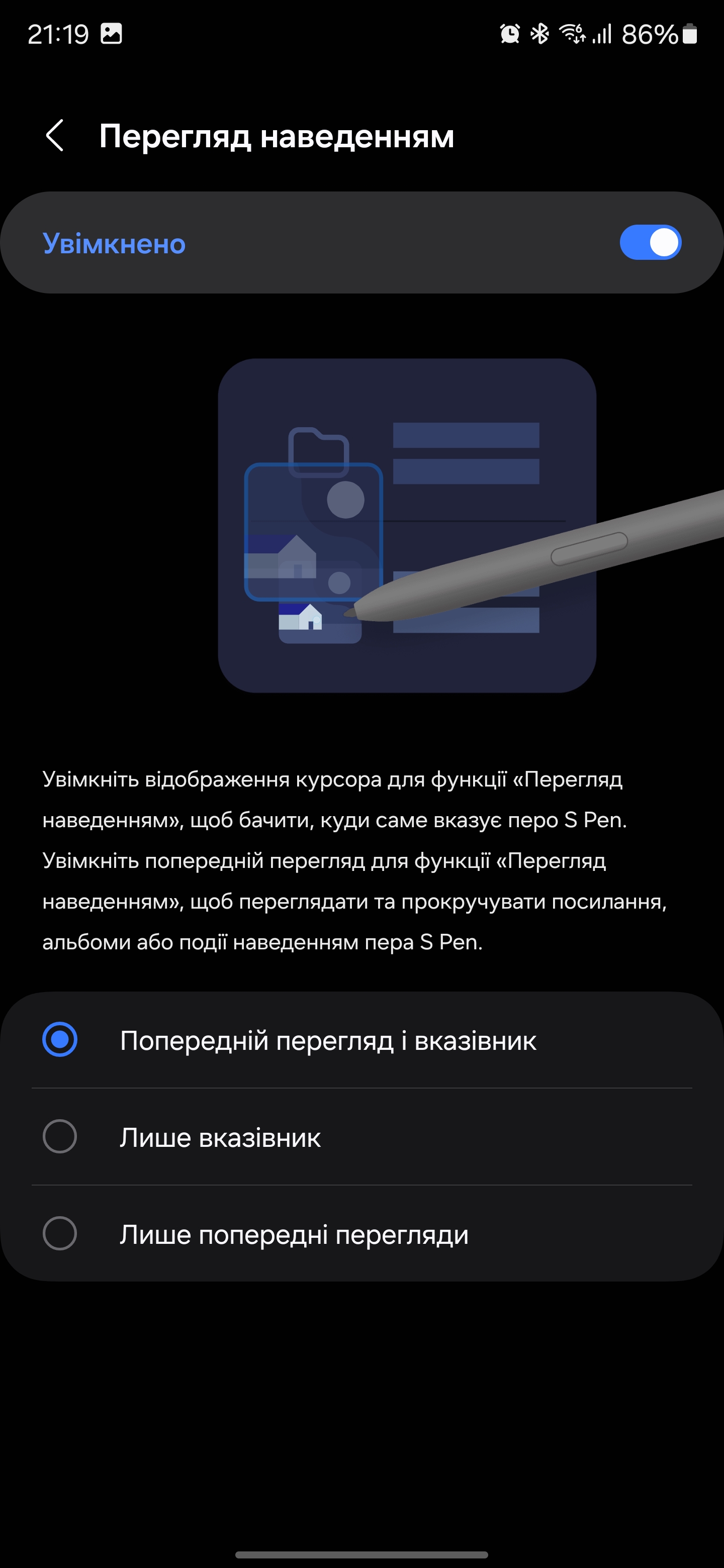
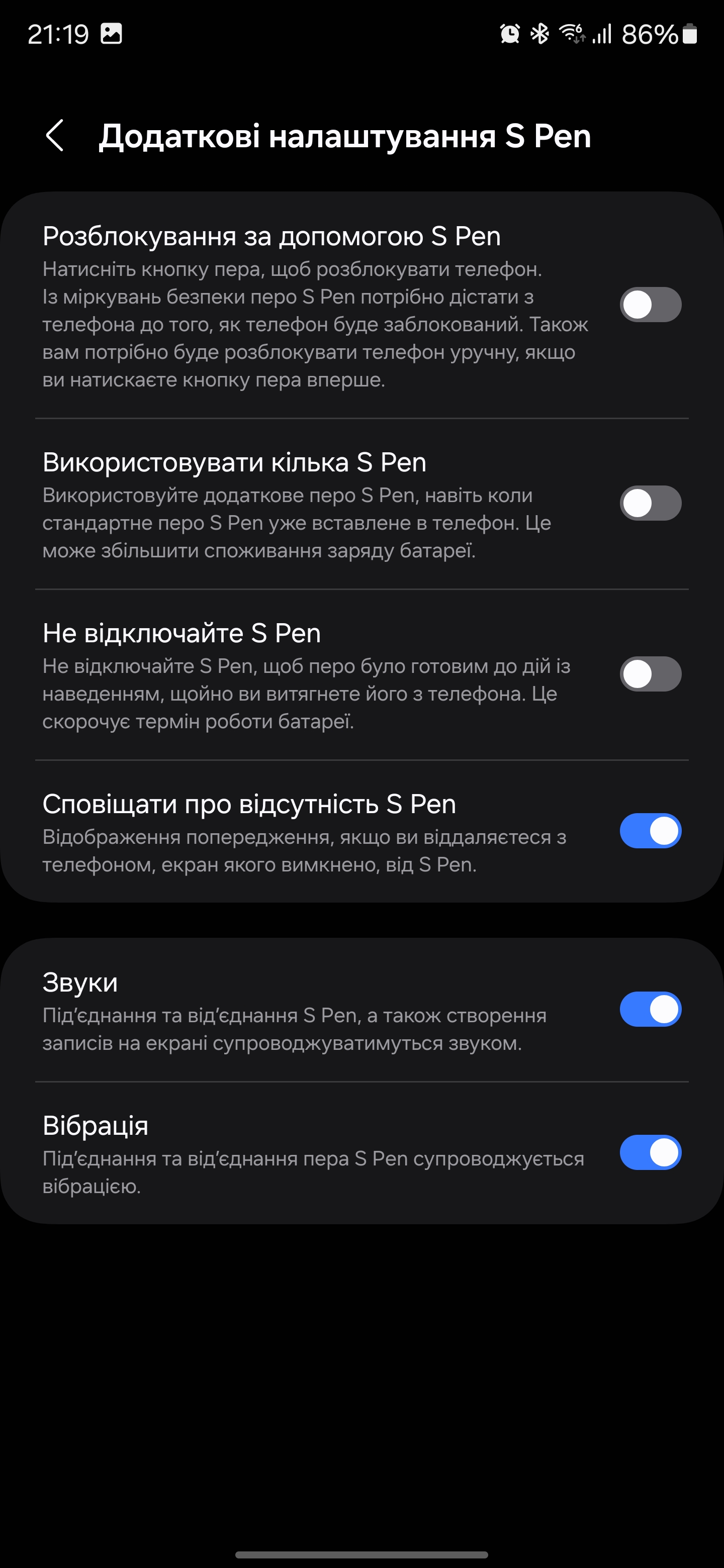




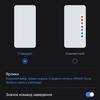


There is handwriting recognition, an on-screen translator, live messages, notes and the standard PENUP app for drawing.
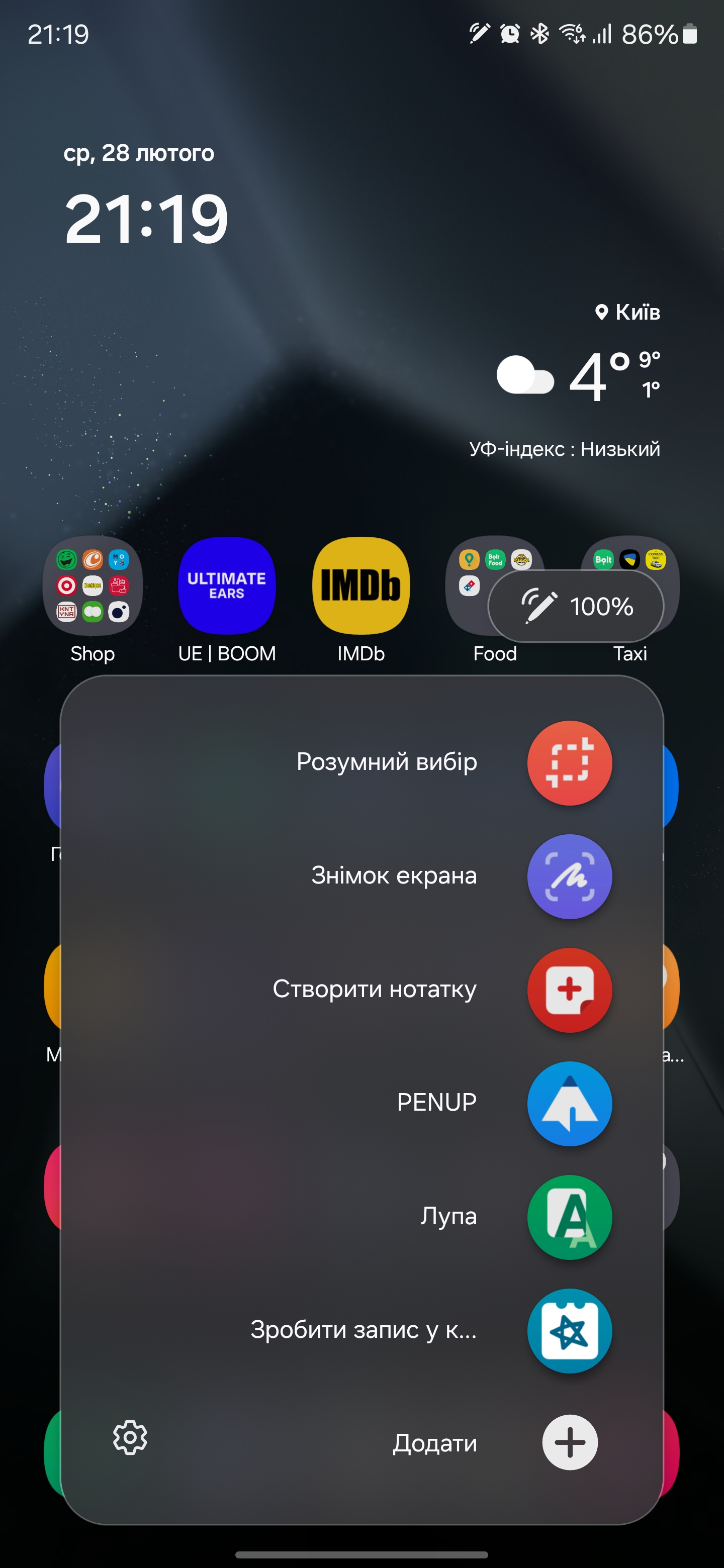

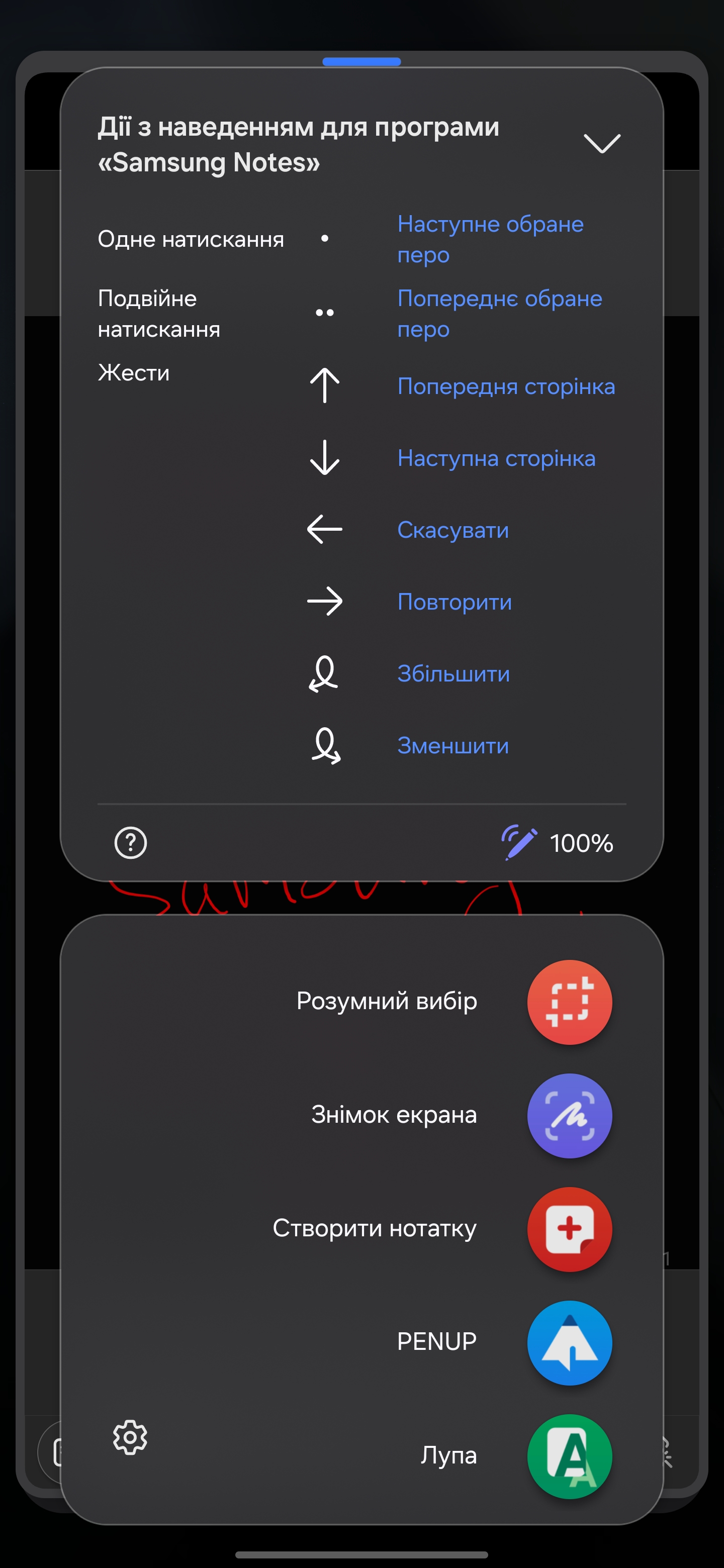

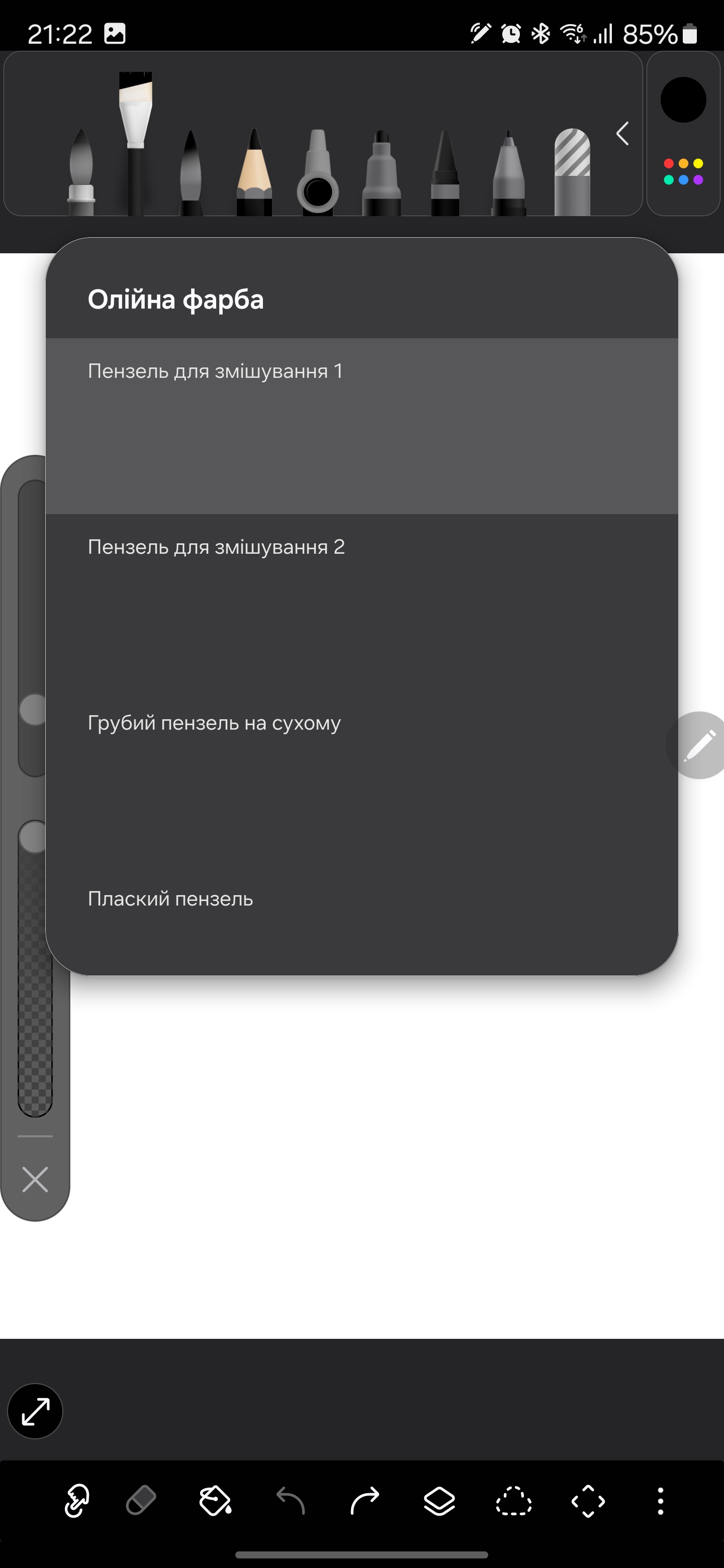







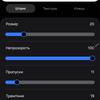

How good are the cameras?
The camera set has not changed much from the last generation. There are four of them at the back and they actually cover any needs or whims of even an experienced user. The main module has a resolution of 200 megapixels. Of course, in the standard mode, the connection of 16 pixels to one works and the standard resolution is 12 MP. Additionally, there are 50 and 200 MP modes. The main module has f/1.7 optics, 23 mm EDF, 1/1.3" sensor size, 0.6 µm, Dual Pixel PDAF phase detection autofocus and optical stabilisation with an increased correction angle in all directions compared to the previous year's model. The ultra-wide-angle camera has a resolution of 12 MP, f/2.2 optics, 13 mm, 120° viewing angle, 1/2.55" sensor size and 1.4µm pixel size. It also has Dual Pixel PDAF autofocus. The first telephoto module remains unchanged: 10 MP f/2.4, 70 mm, 1/3.52", 1.12µm, Dual Pixel PDAF, OIS and three times zoom. And the periscopic telephoto module has been changed. Instead of a 10-megapixel 10x module, a 50-megapixel module with a 5x zoom is now used. But thanks to the higher resolution and larger physical size, even with a 10x zoom, the photos are better. The front camera is 12 MP with f/2.2 aperture, 25 mm EFE, and phase detection autofocus. The maximum video resolution is 8K 30 FPS.
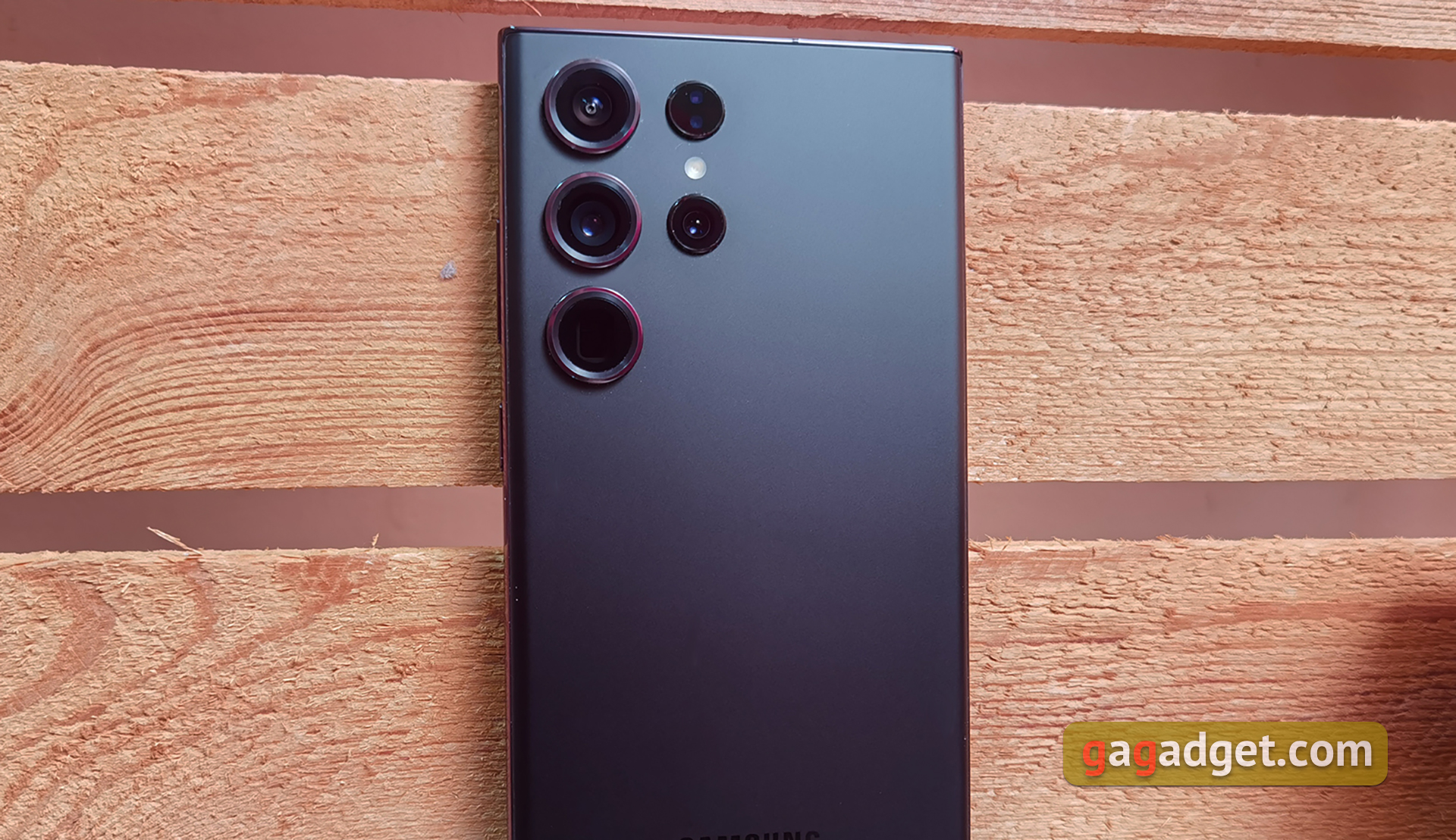
The camera app has a familiar look and feel. The carousel of modes is customisable: you can select the desired modes from the "More" section. All the main controls are on the main screen, including flash settings, frame aspect ratio, resolution and video stabiliser, timer, auto frame enhancement and switching between the main cameras. There is also an Expert RAW mode for more advanced users with additional settings and modes. Including Astrophoto.
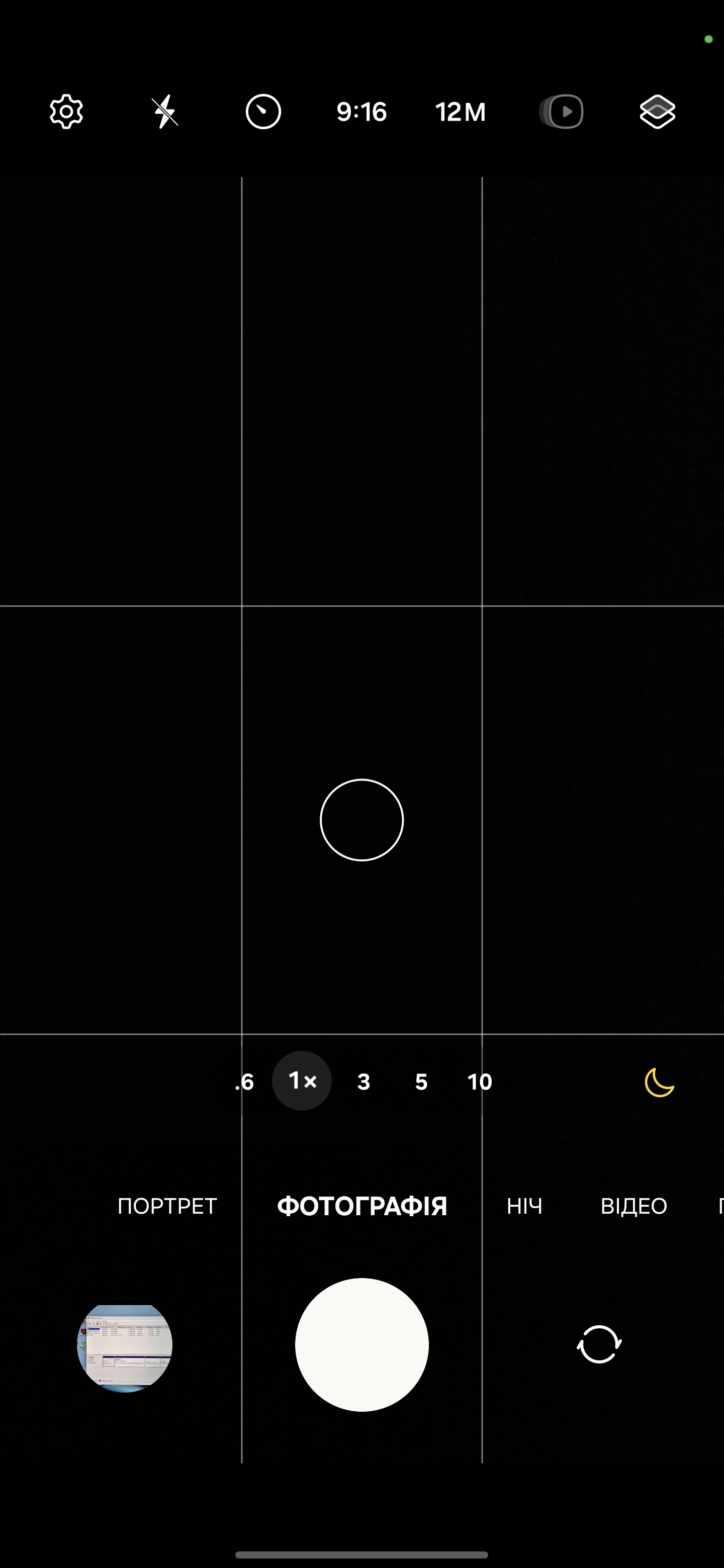


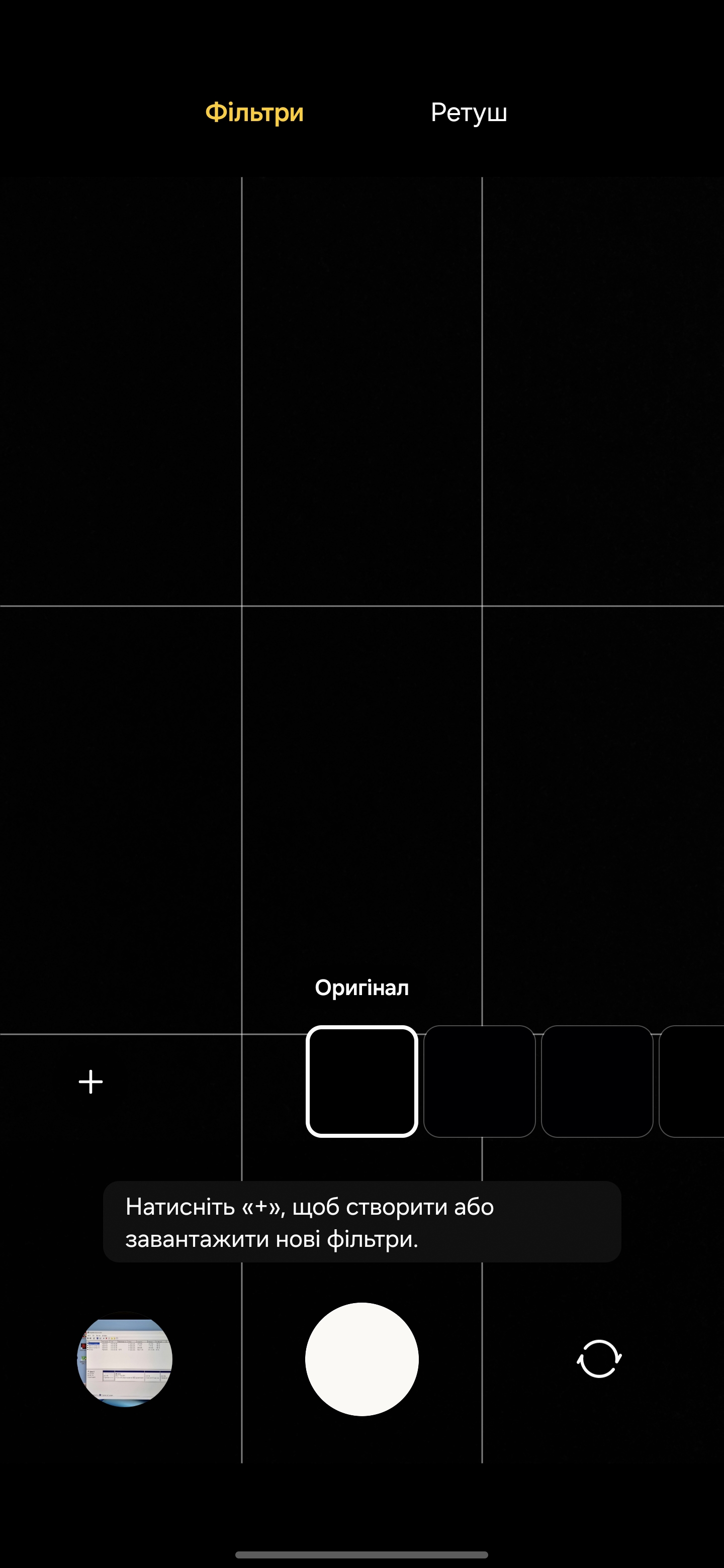

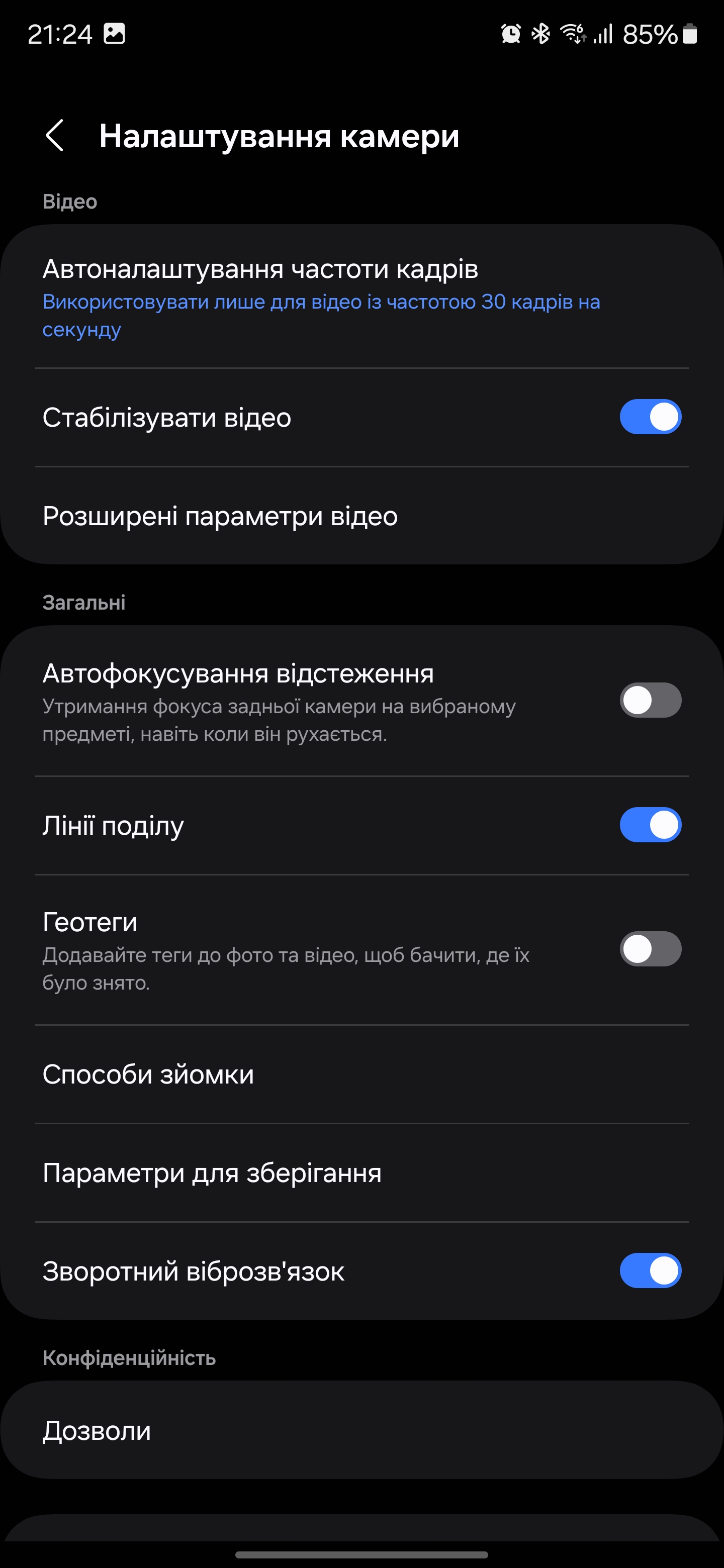
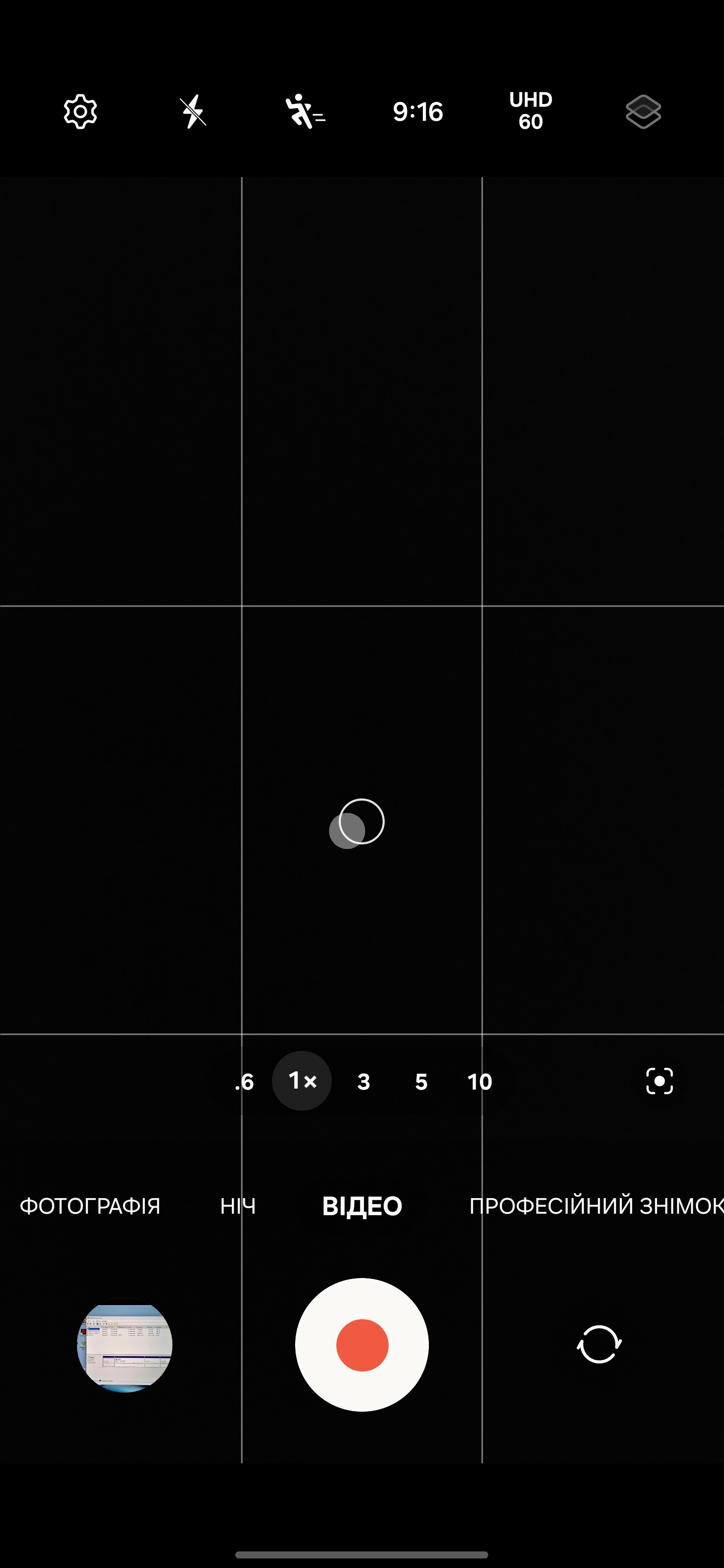
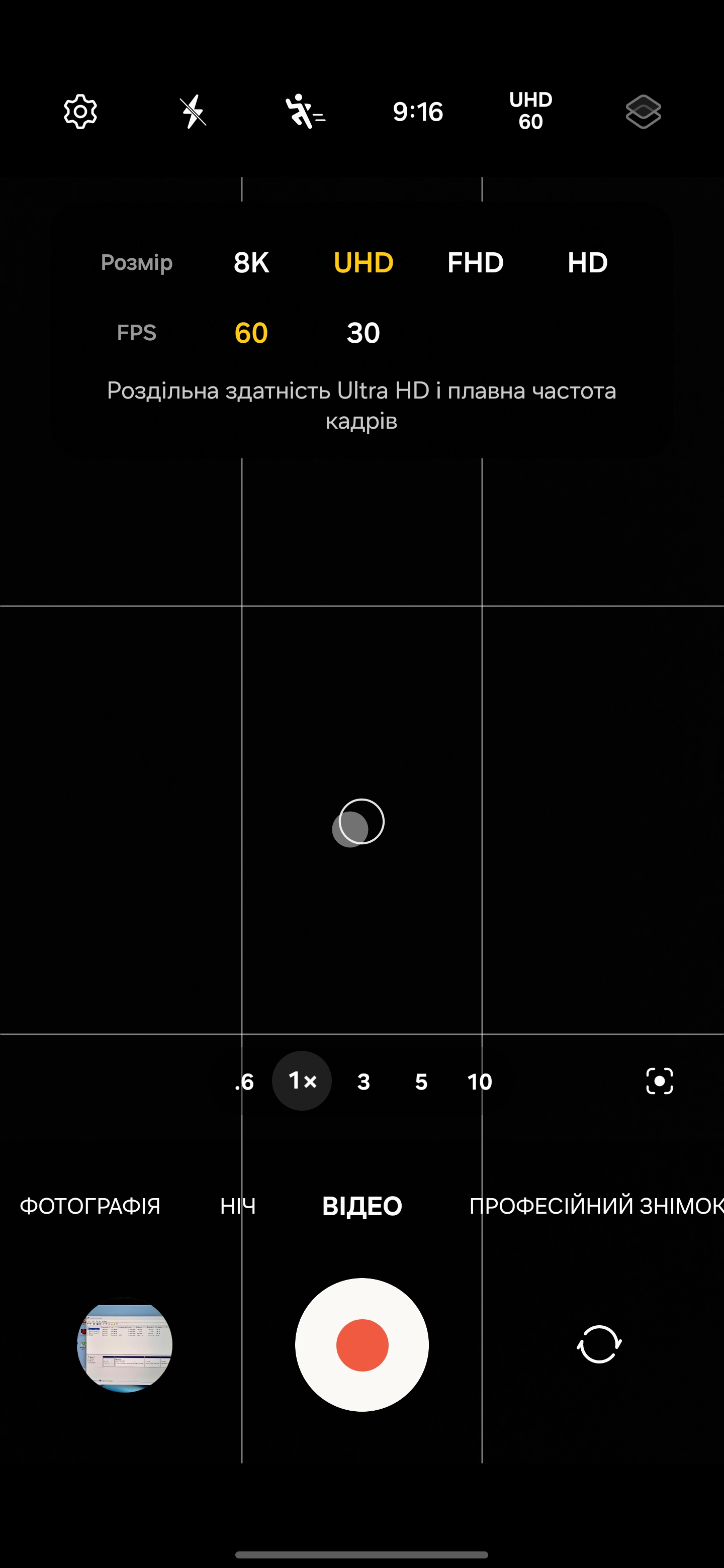

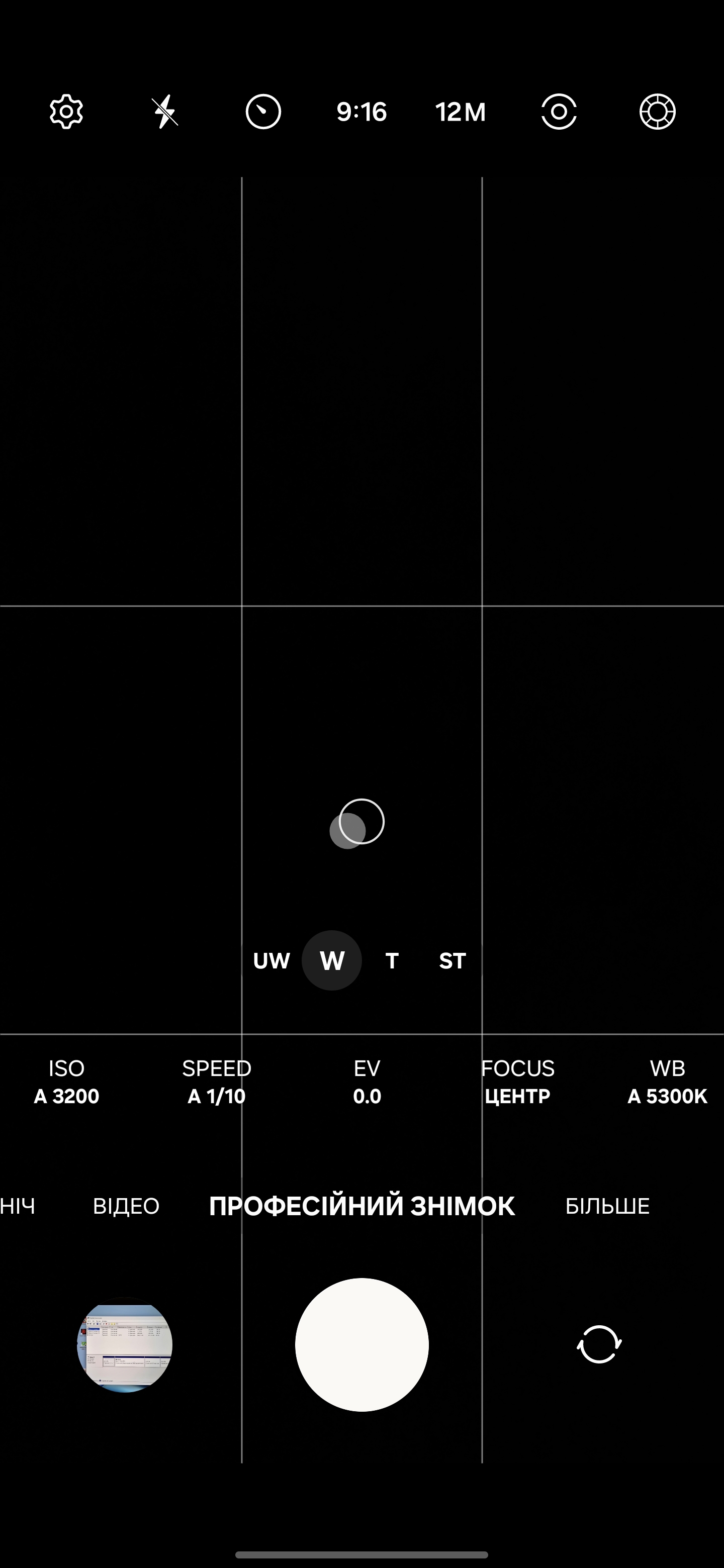
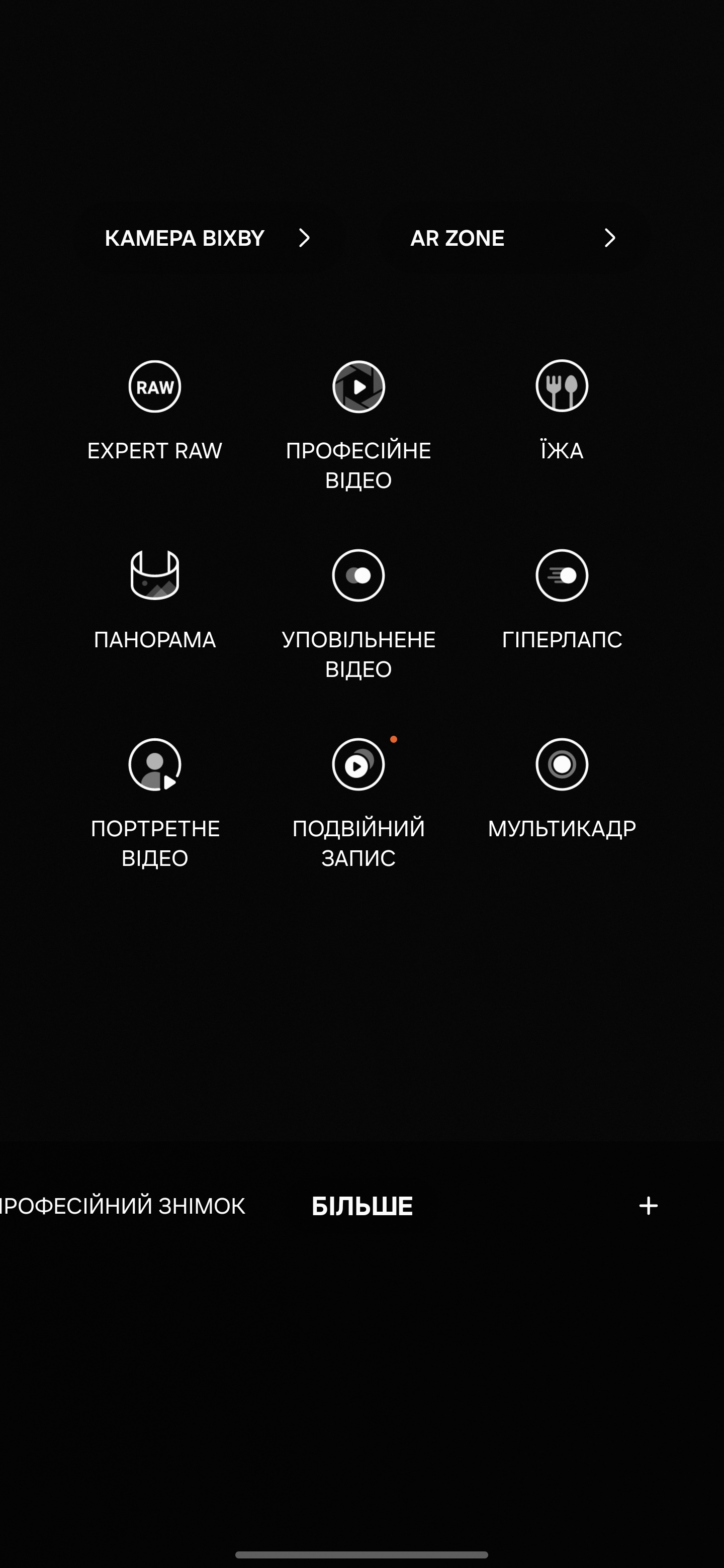
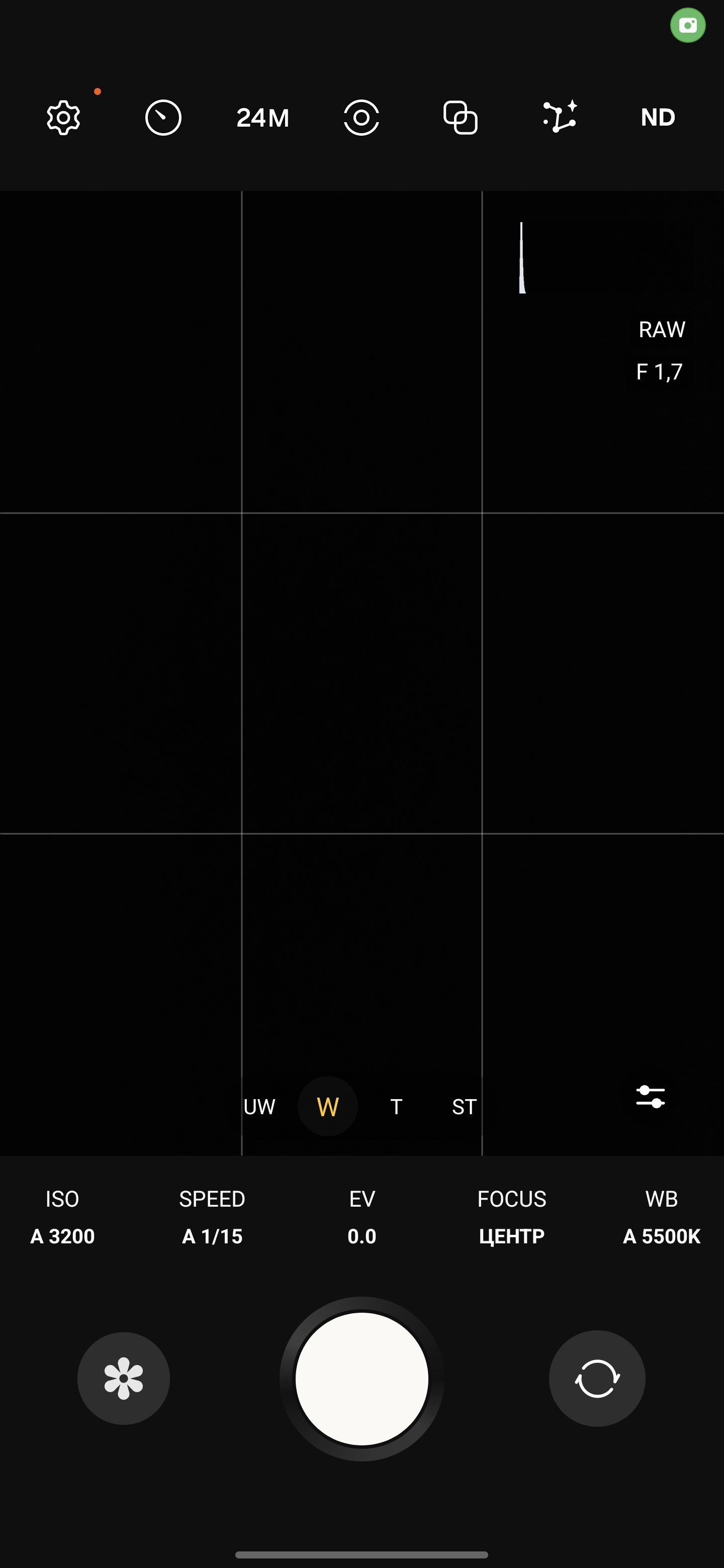


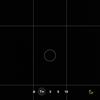







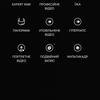

The Galaxy S Ultra line of smartphones has always been the most interesting in terms of photographic capabilities among Samsung smartphones and one of the most interesting in general. Samsung Galaxy S24 Ultra continues this tradition. All the cameras take great photos and, in fact, it's hard to find conditions in which it would be impossible to take a clear photo. The main 200-megapixel camera has a large physical sensor size and fairly bright optics. This, combined with the 16-pixel fusion technology, makes it possible to capture more light. As a result, photos are sharp and with excellent detail almost always. The colour reproduction is also mostly natural, with only a small amount of traces of processing algorithms in night photos.
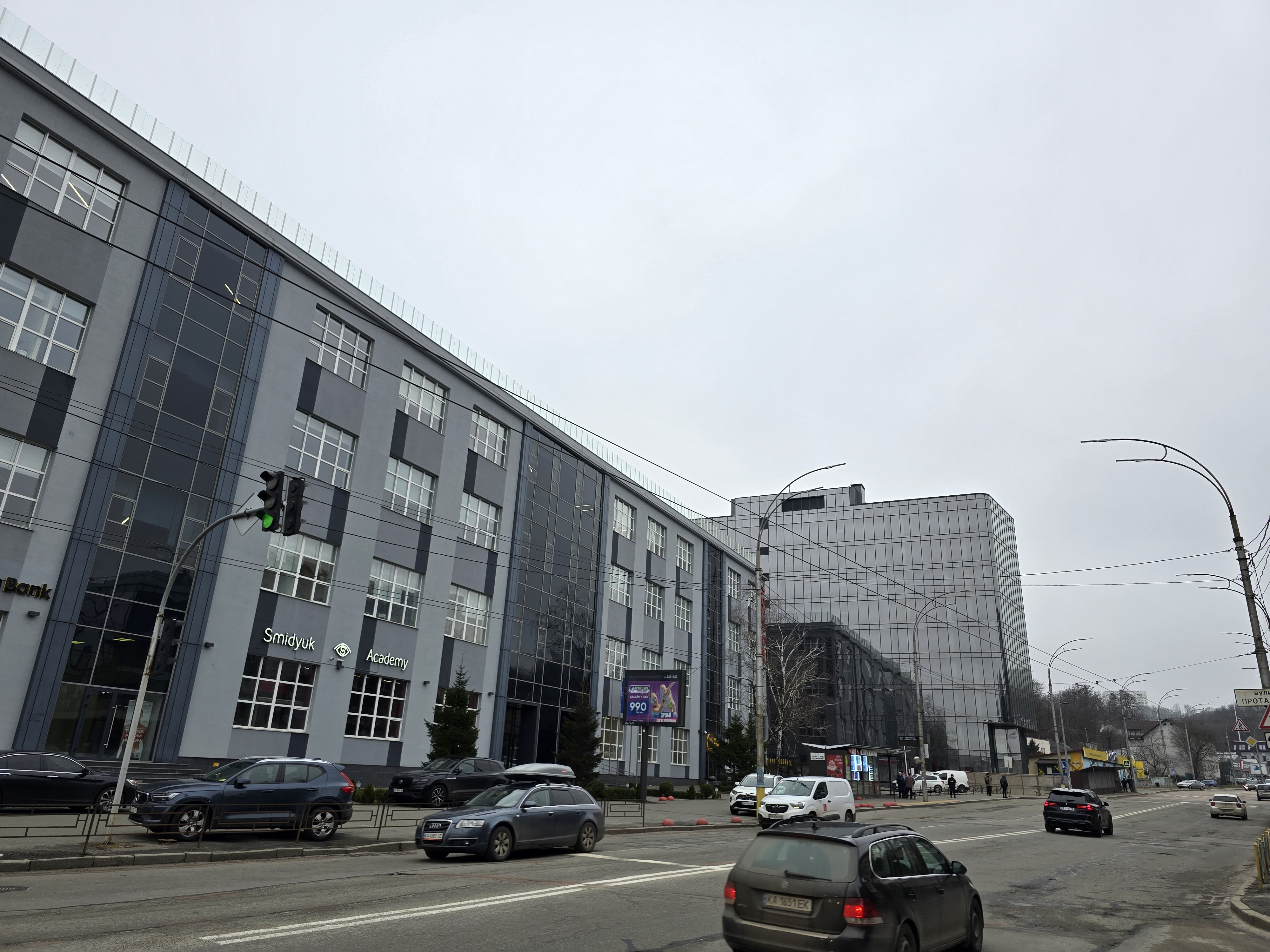
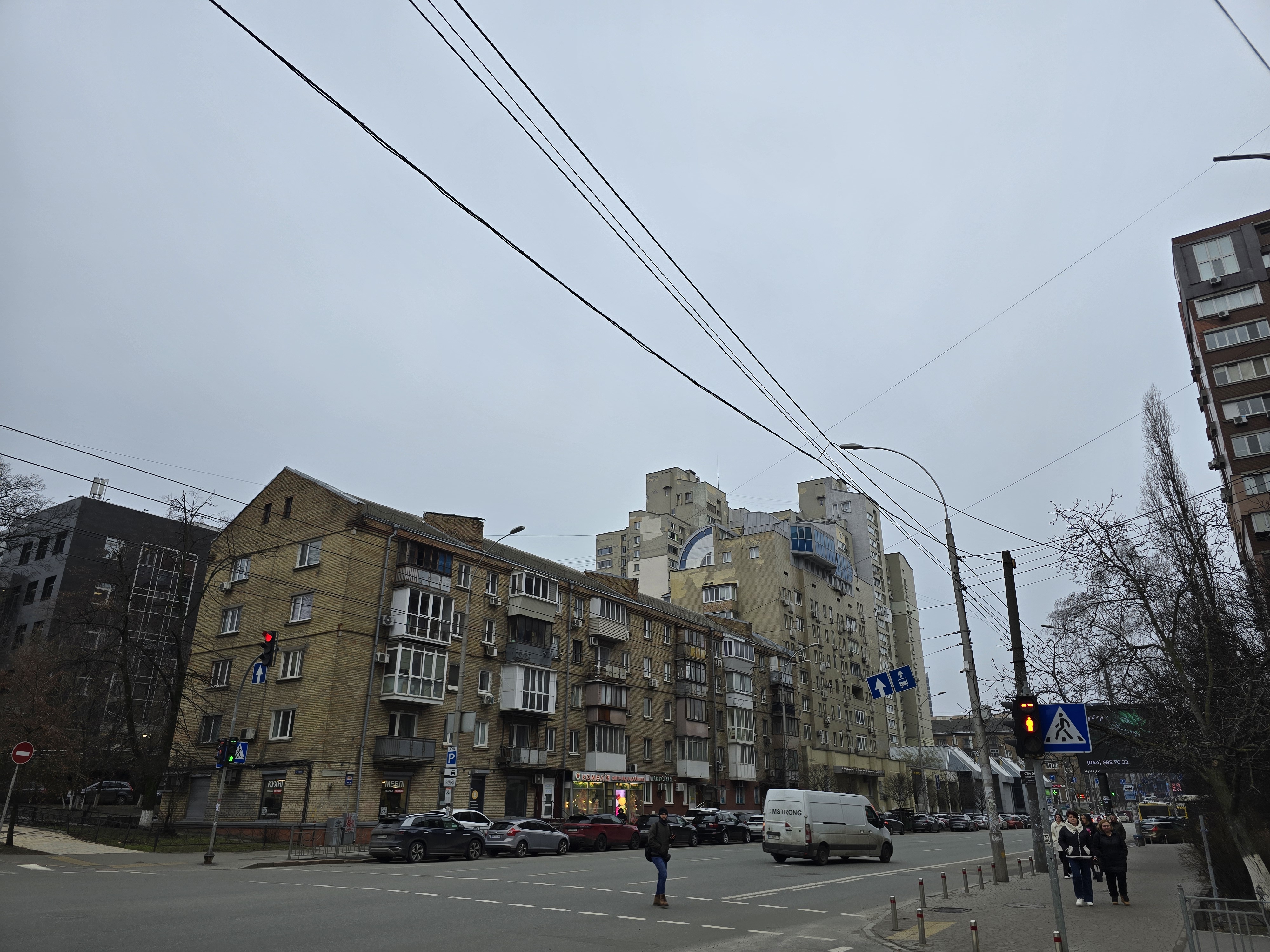
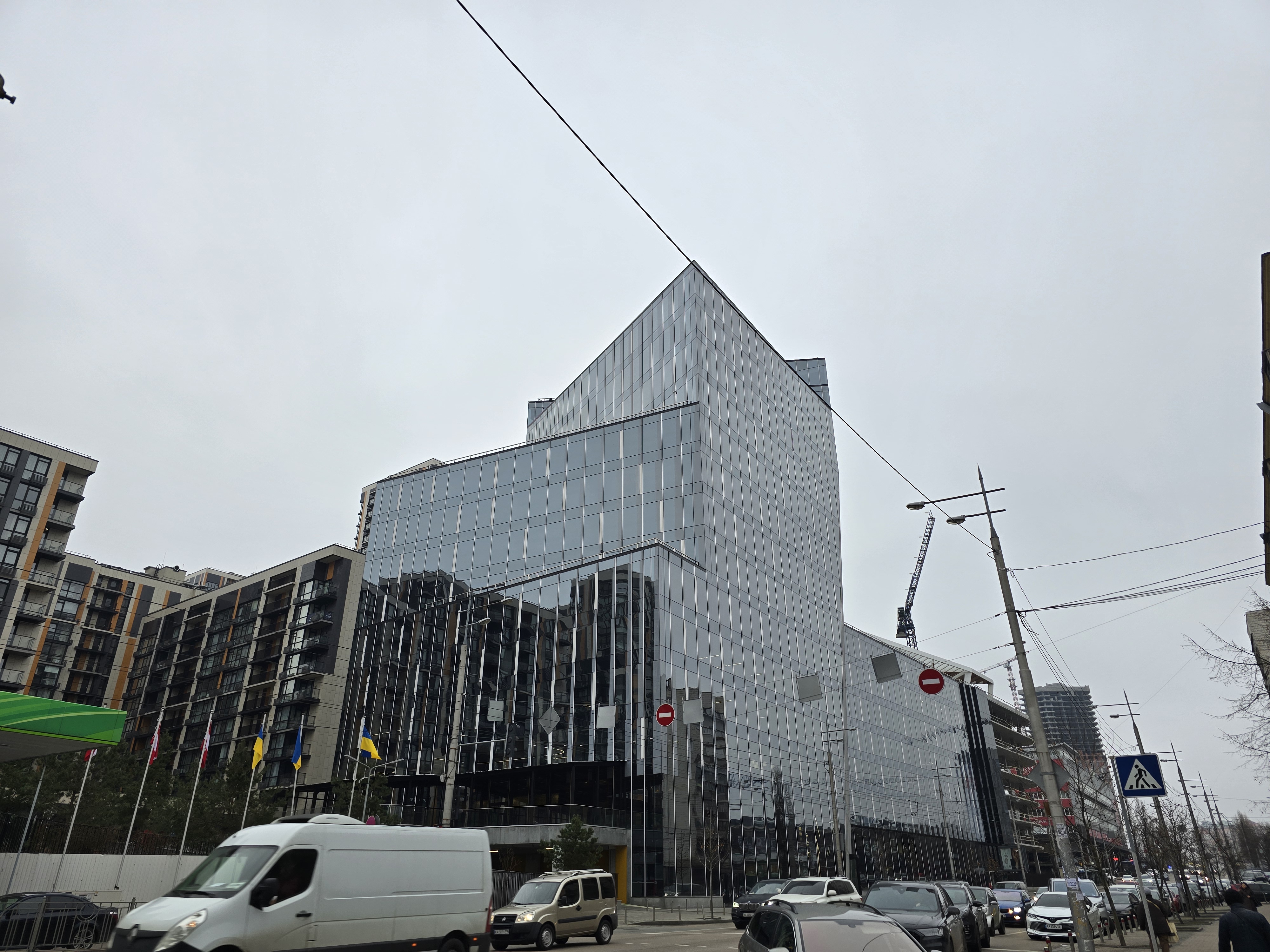
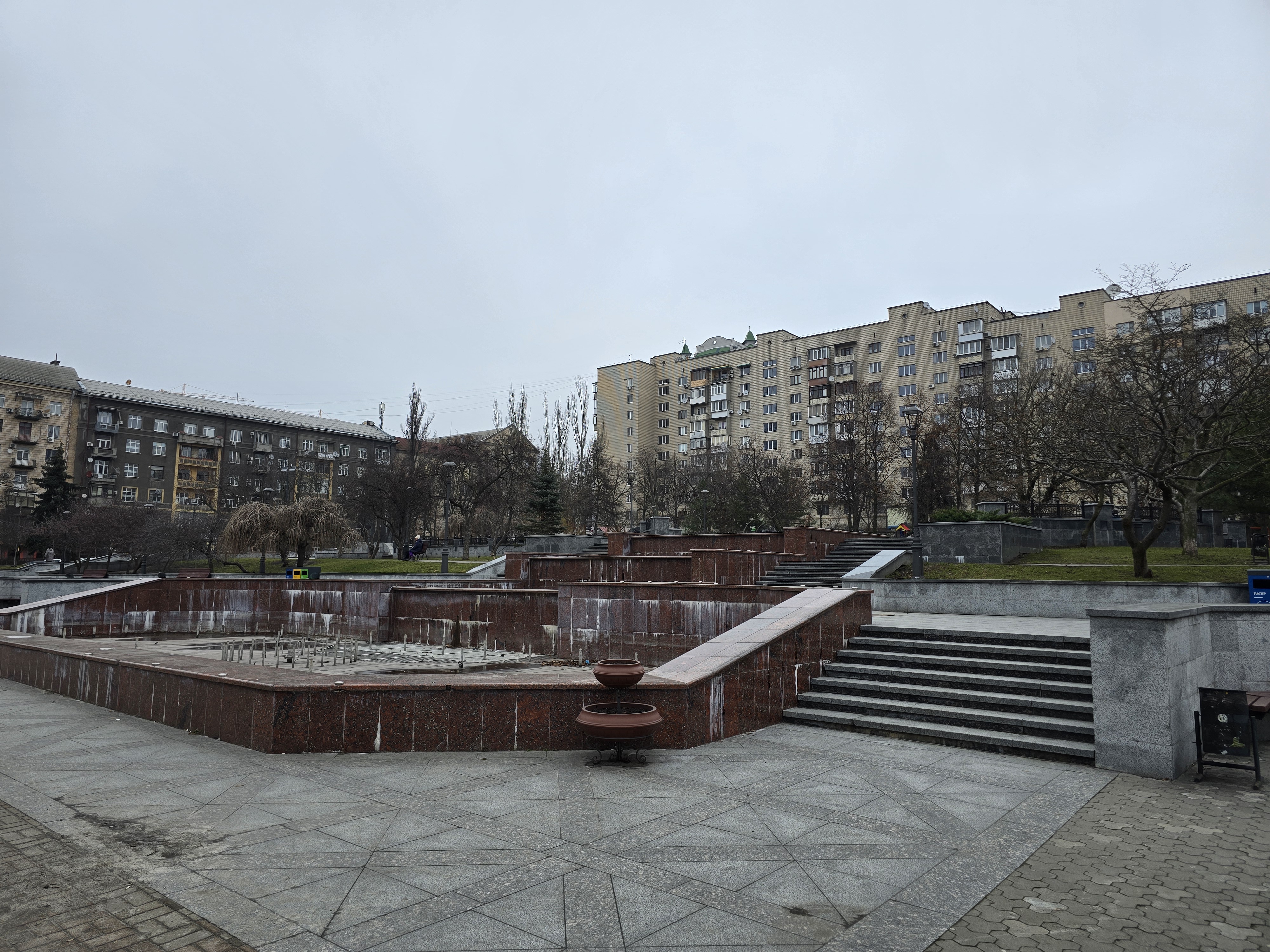
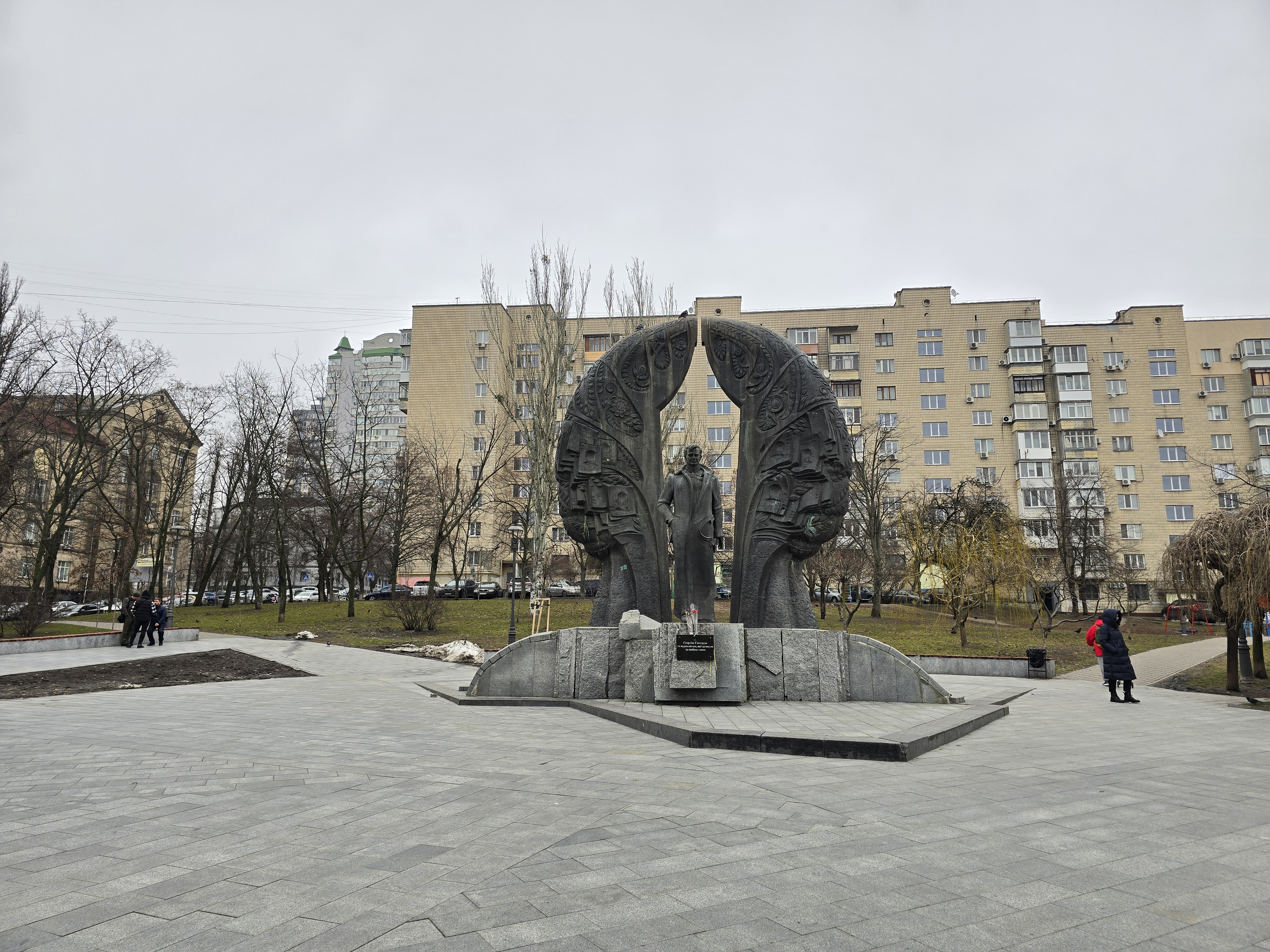







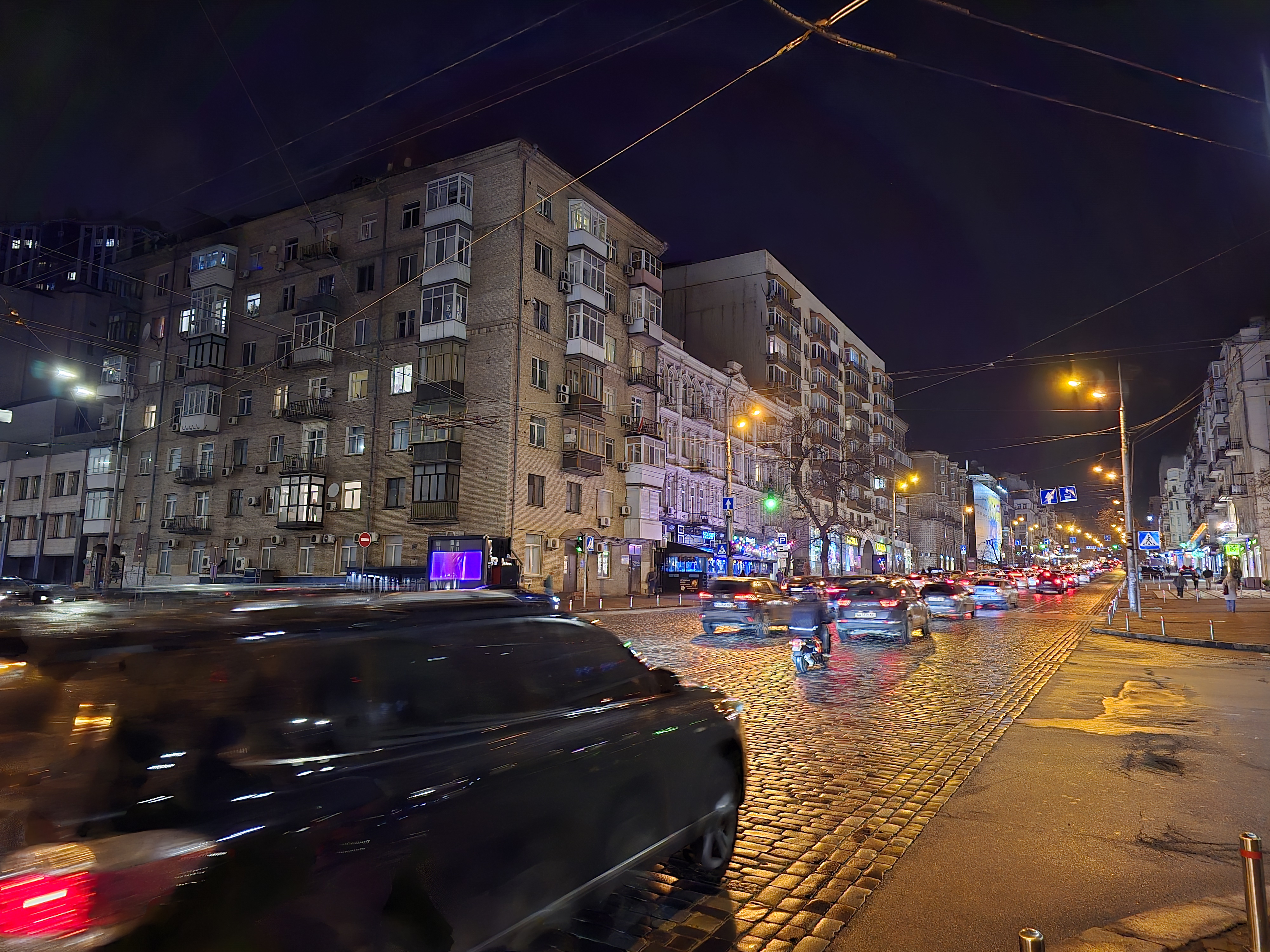

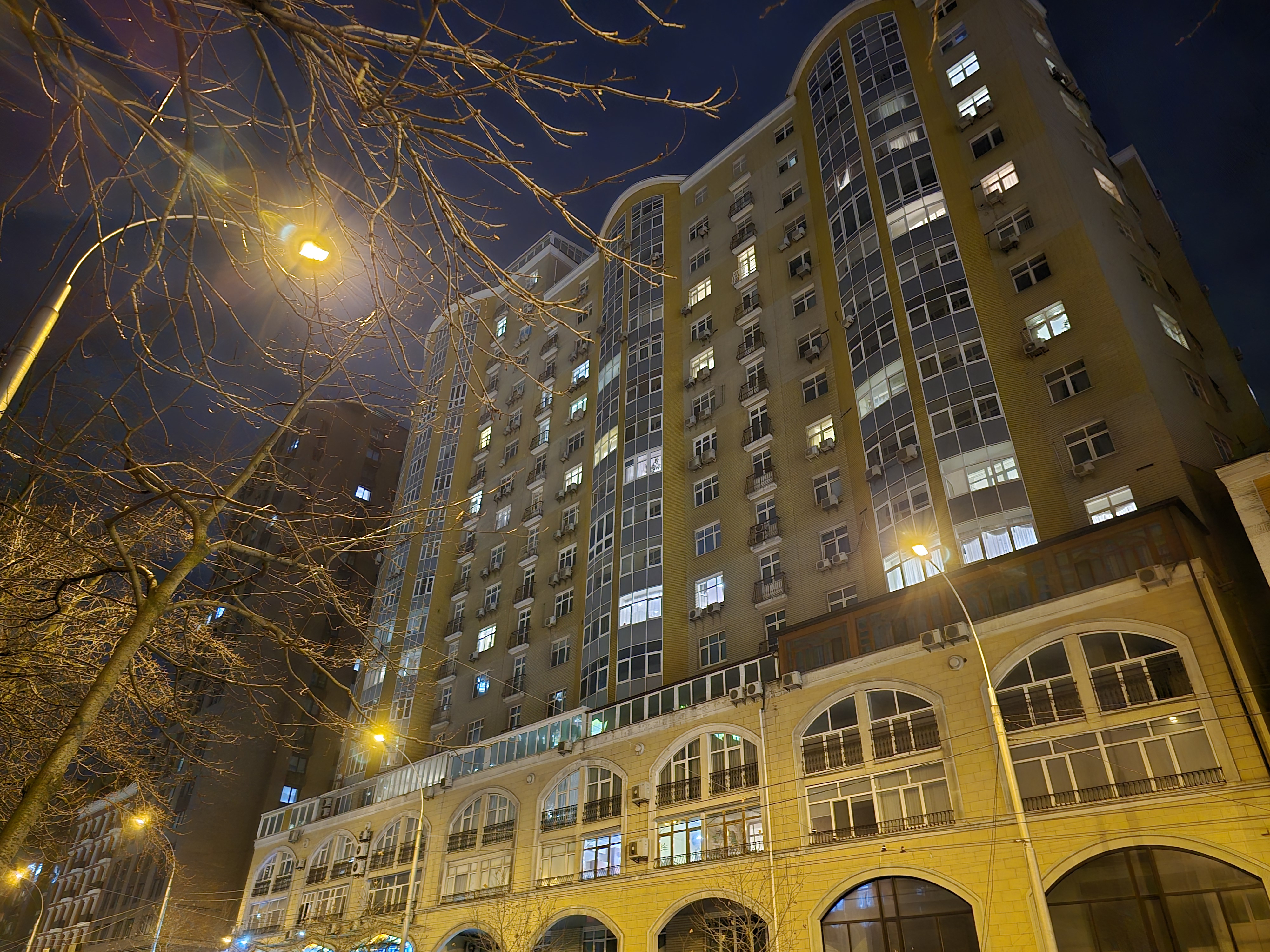


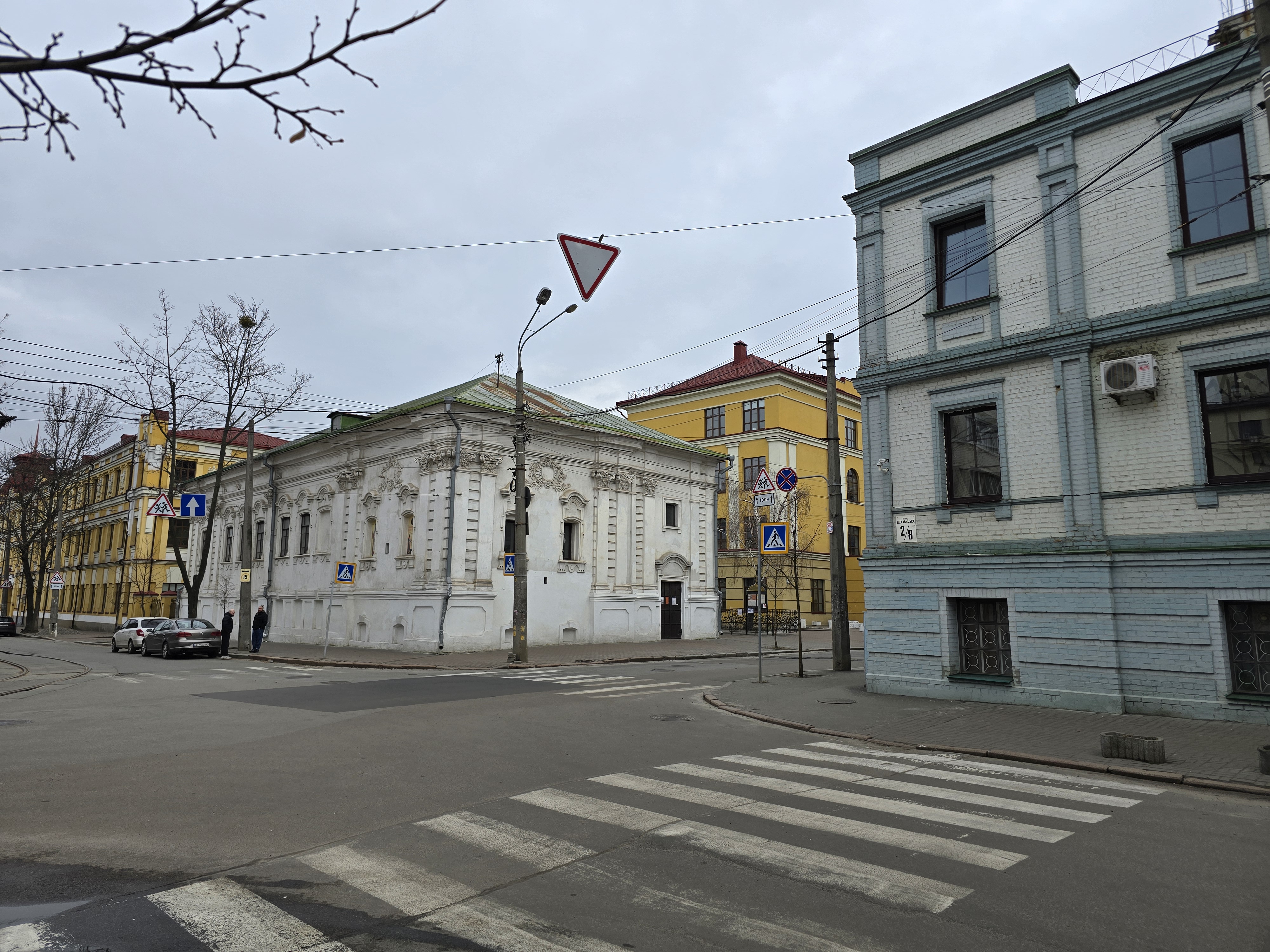






















The ultra-wide-angle camera generally loses out on detail and dynamic range, especially at night. But in general, there are no significant complaints about it either:
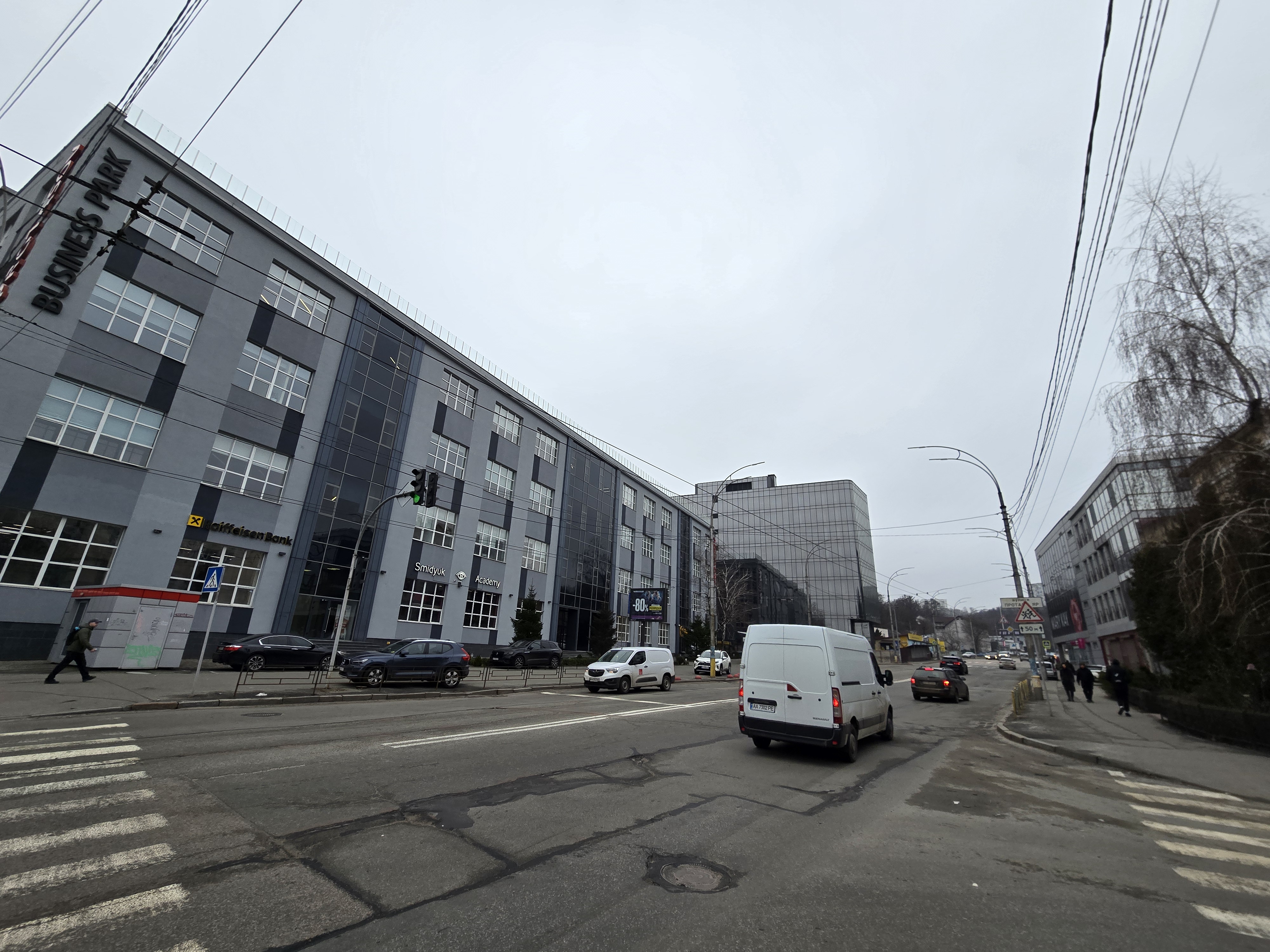
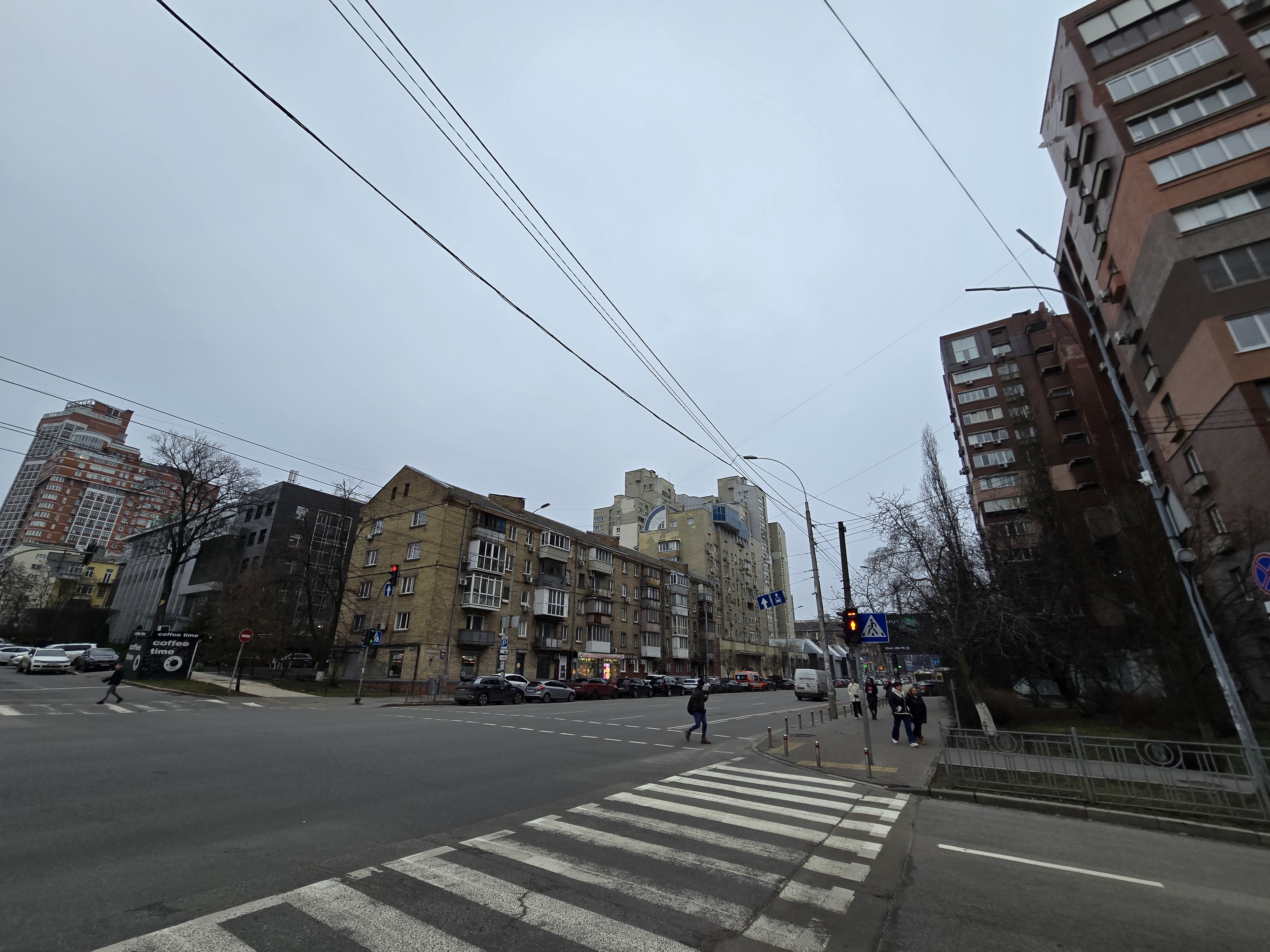

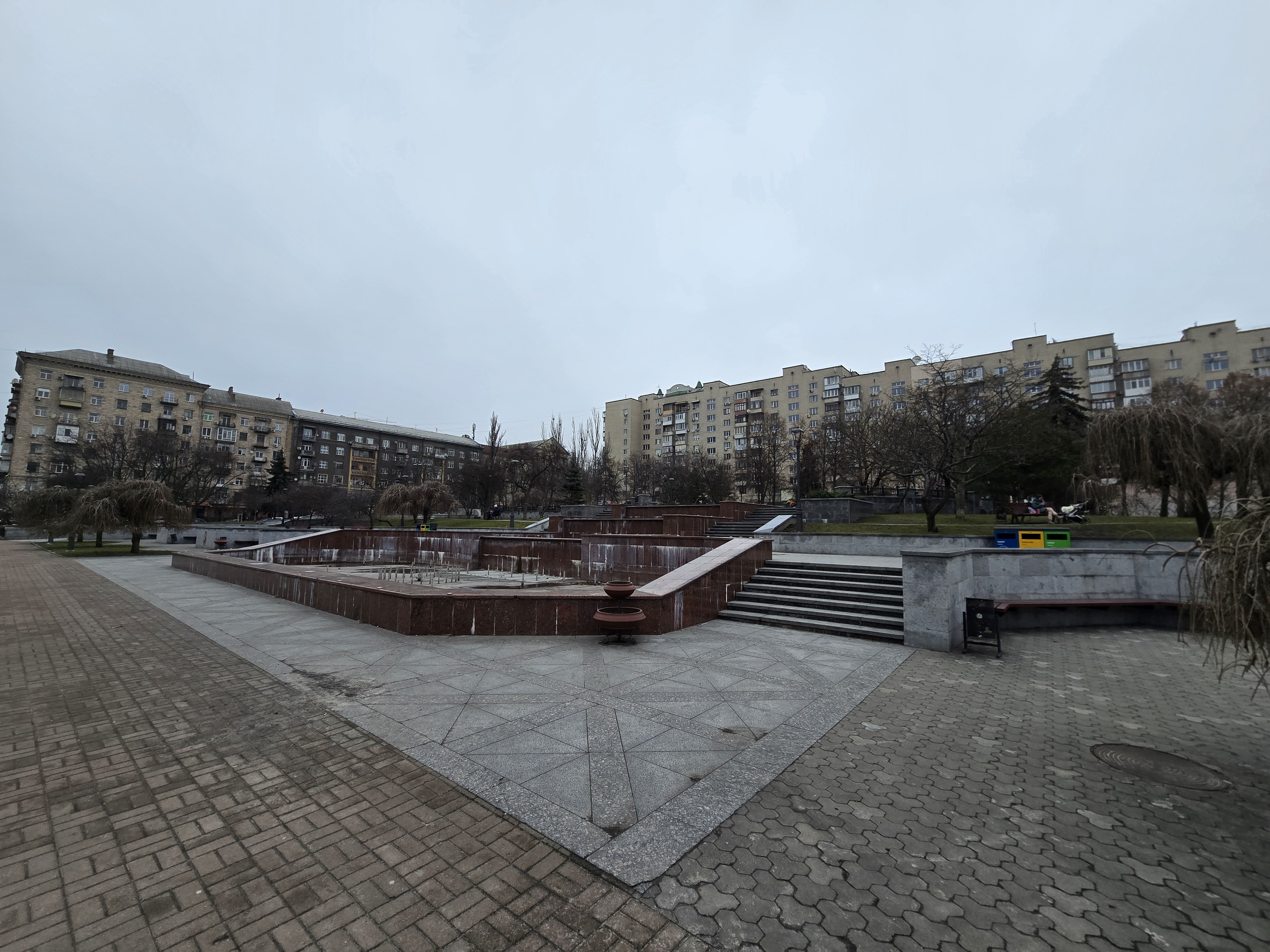
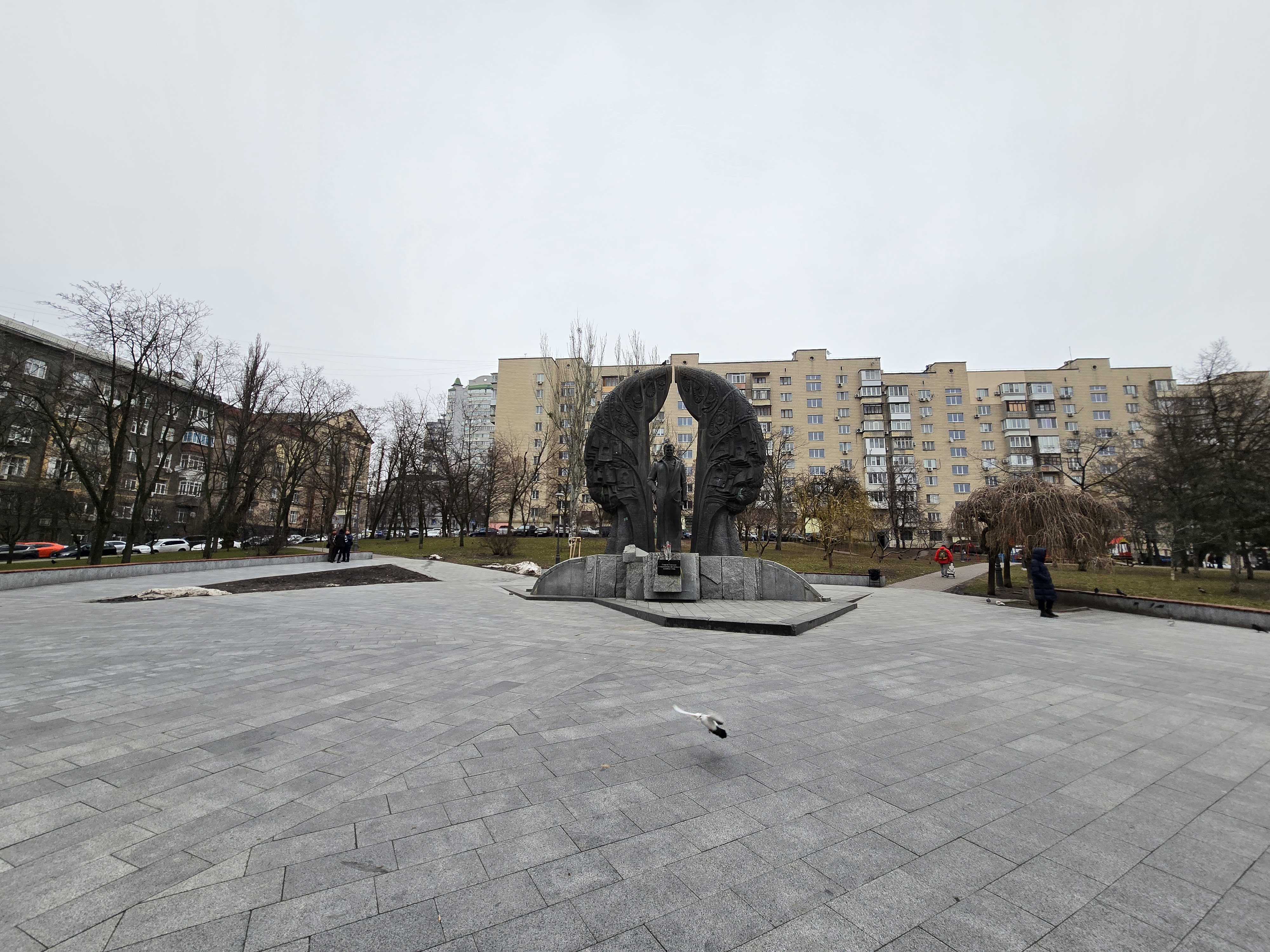

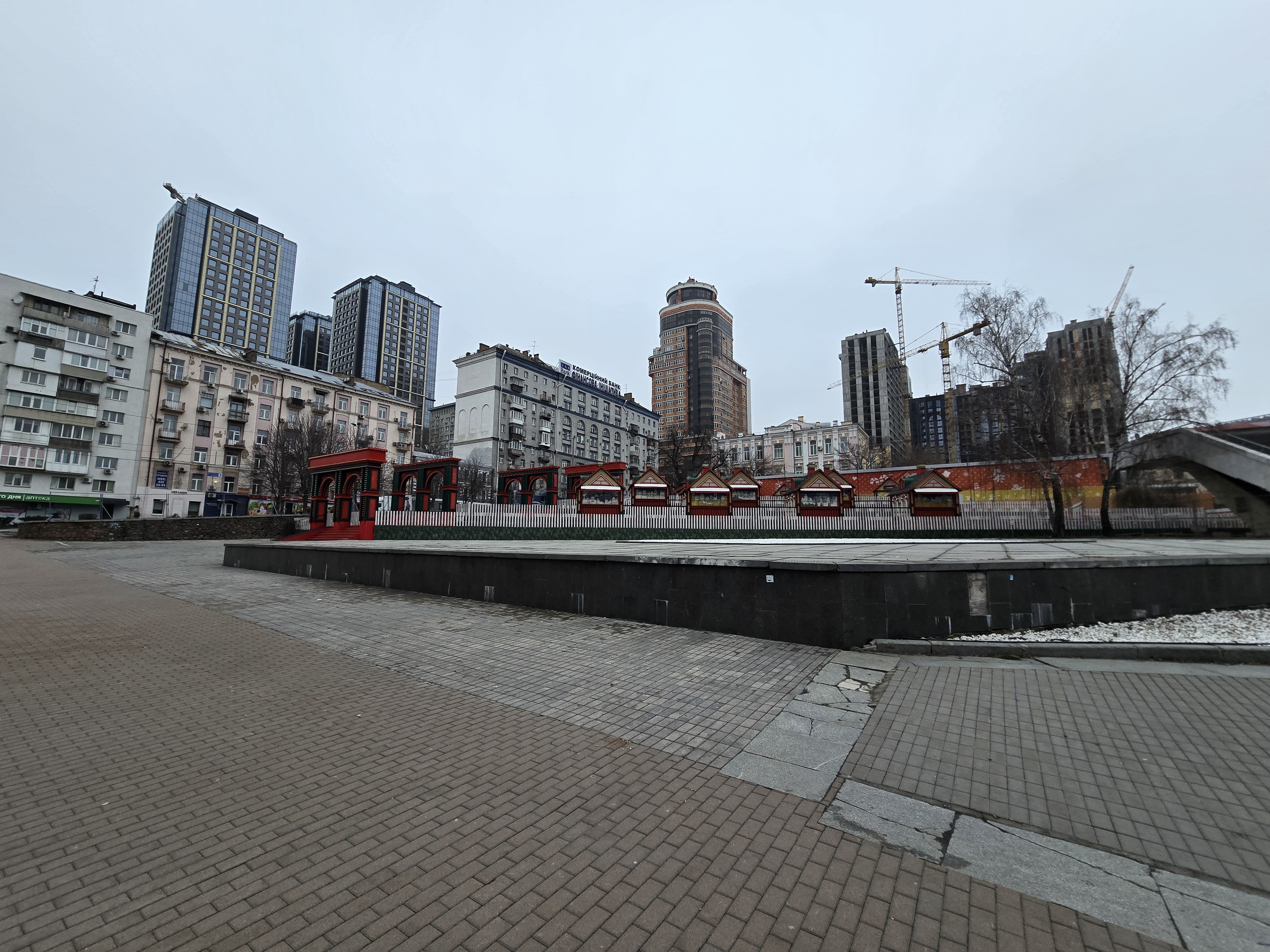
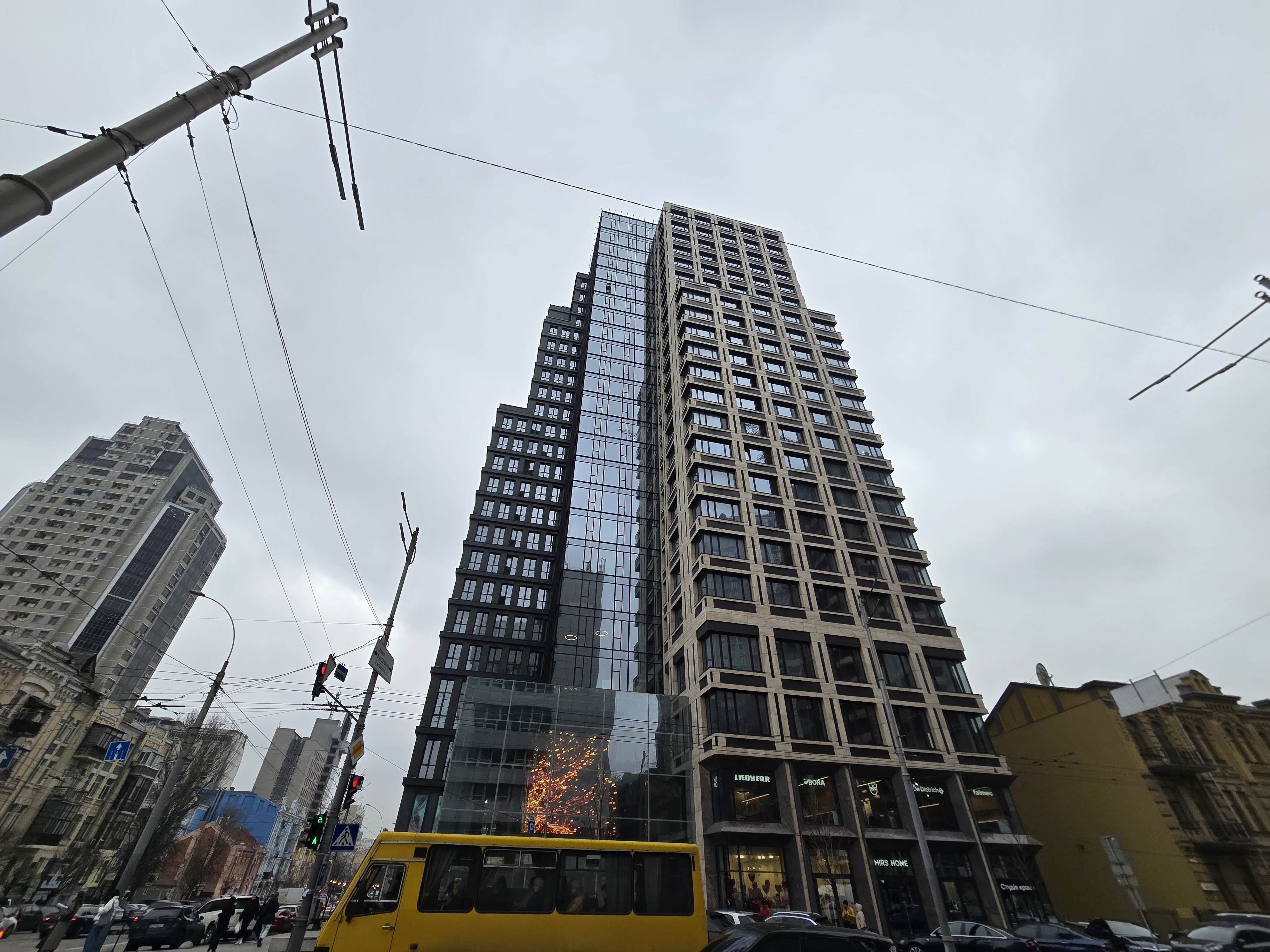

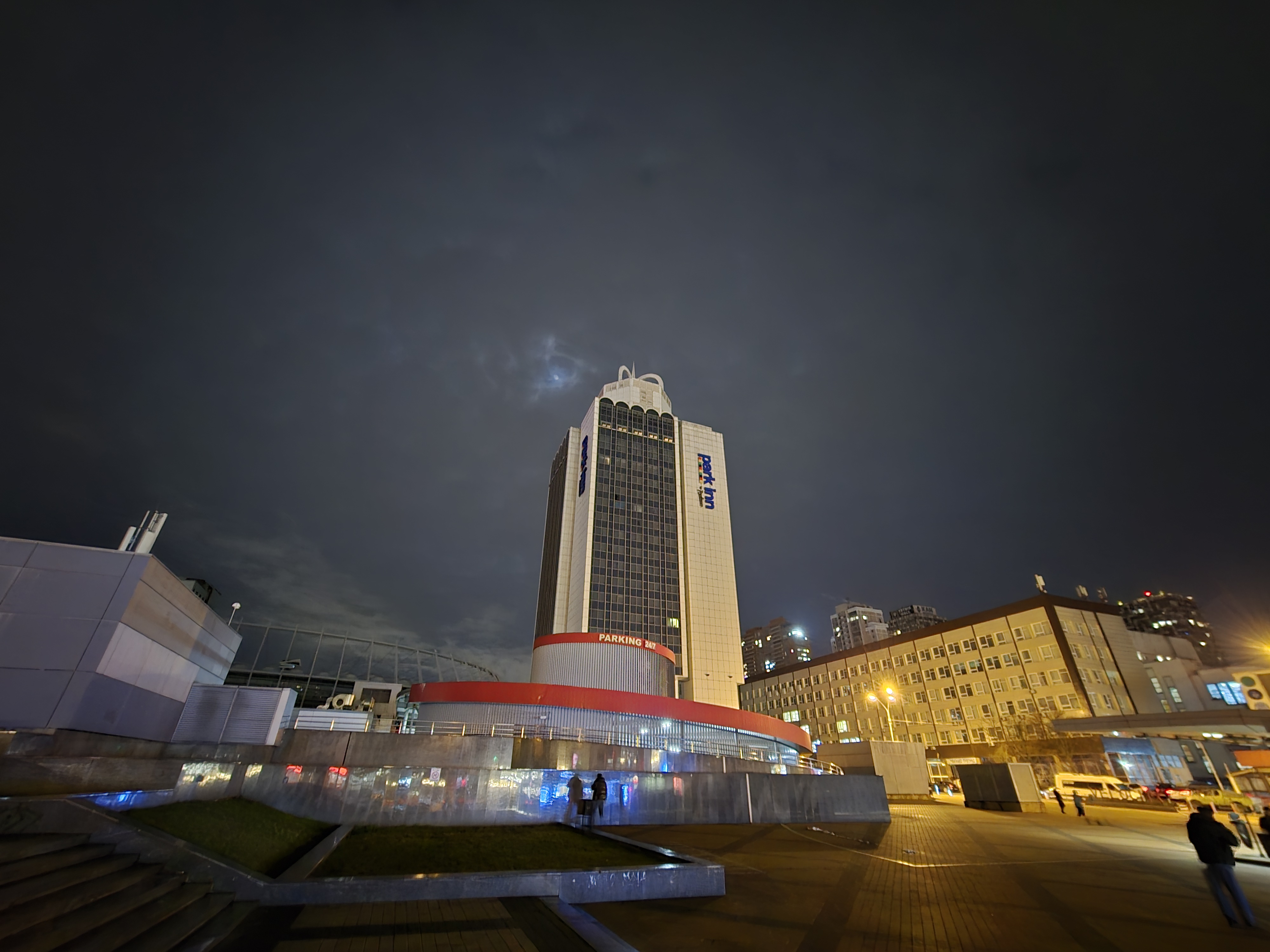

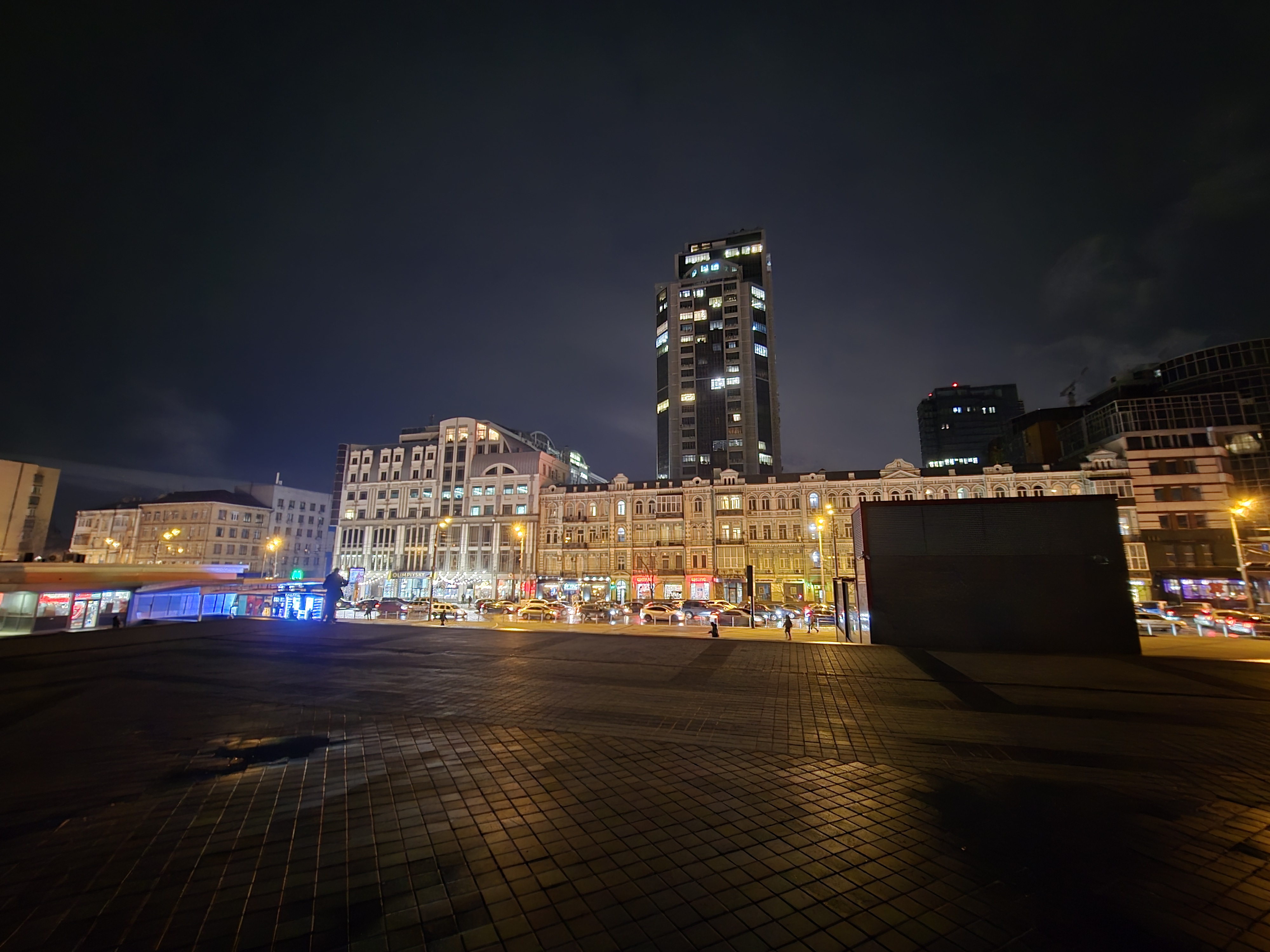
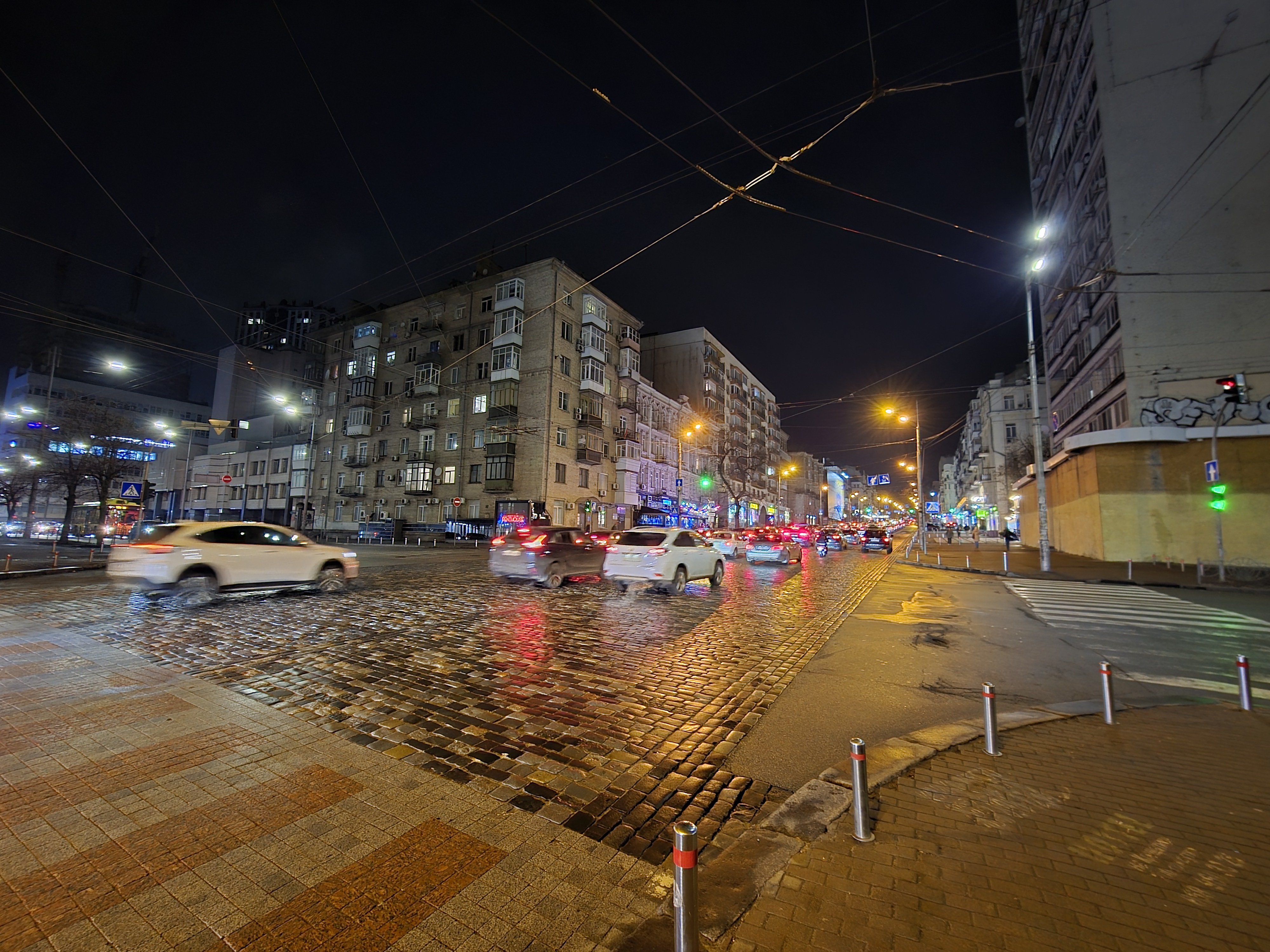

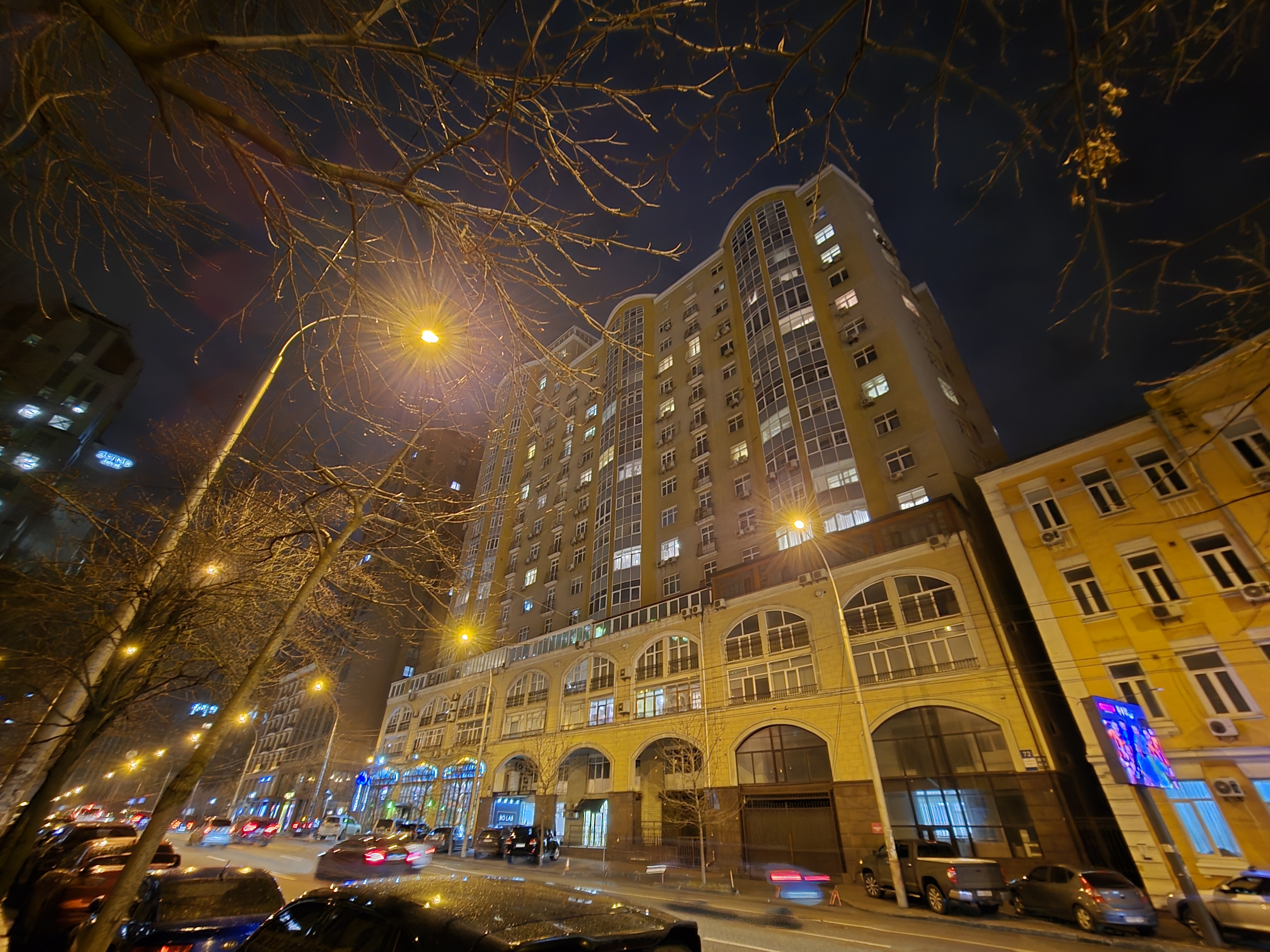

























The telephoto camera with 3x zoom performs well in most cases. In the evening, the detail does not drop significantly. The colour reproduction is not perfect, but it is closer to natural shades:
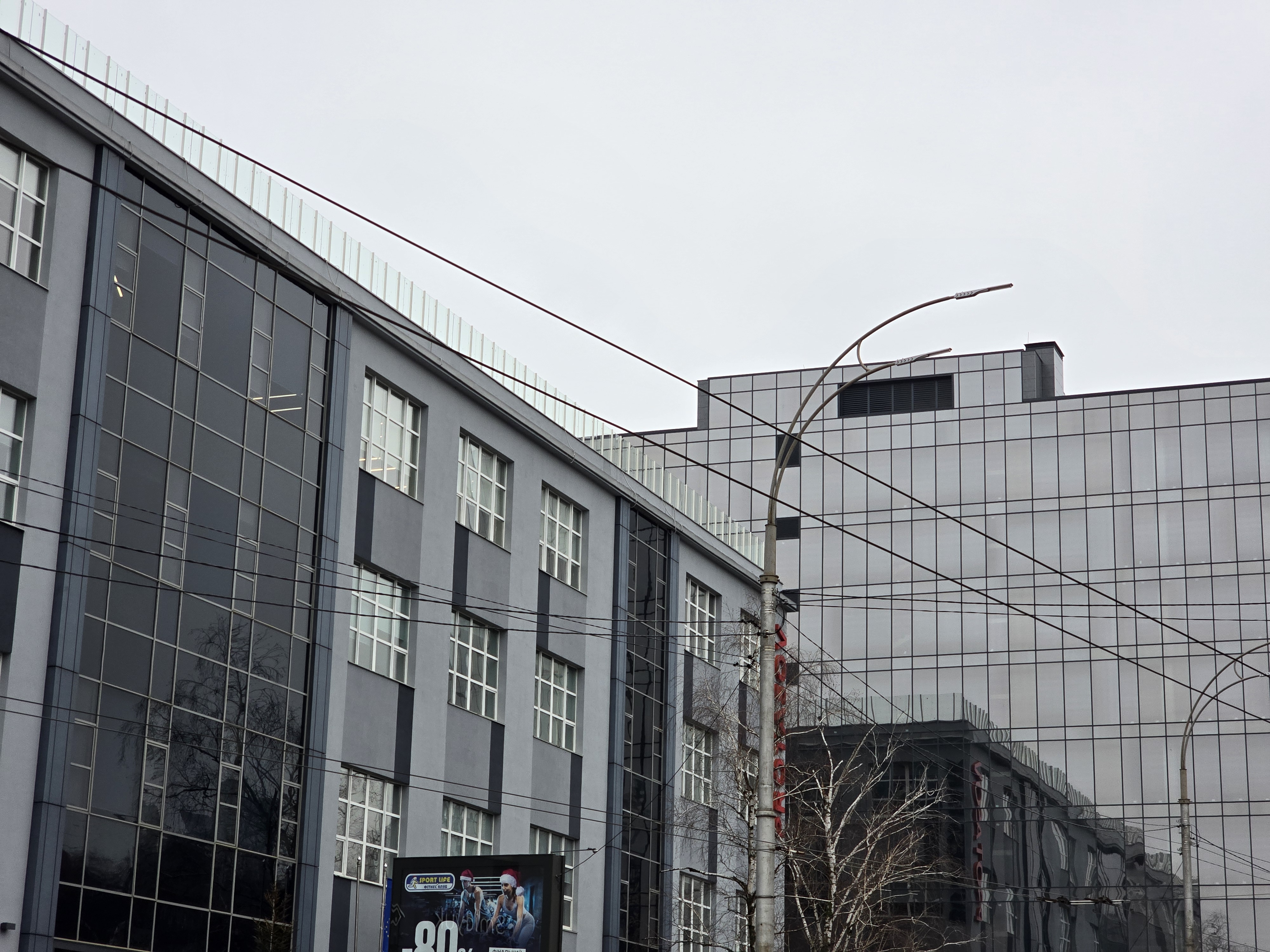
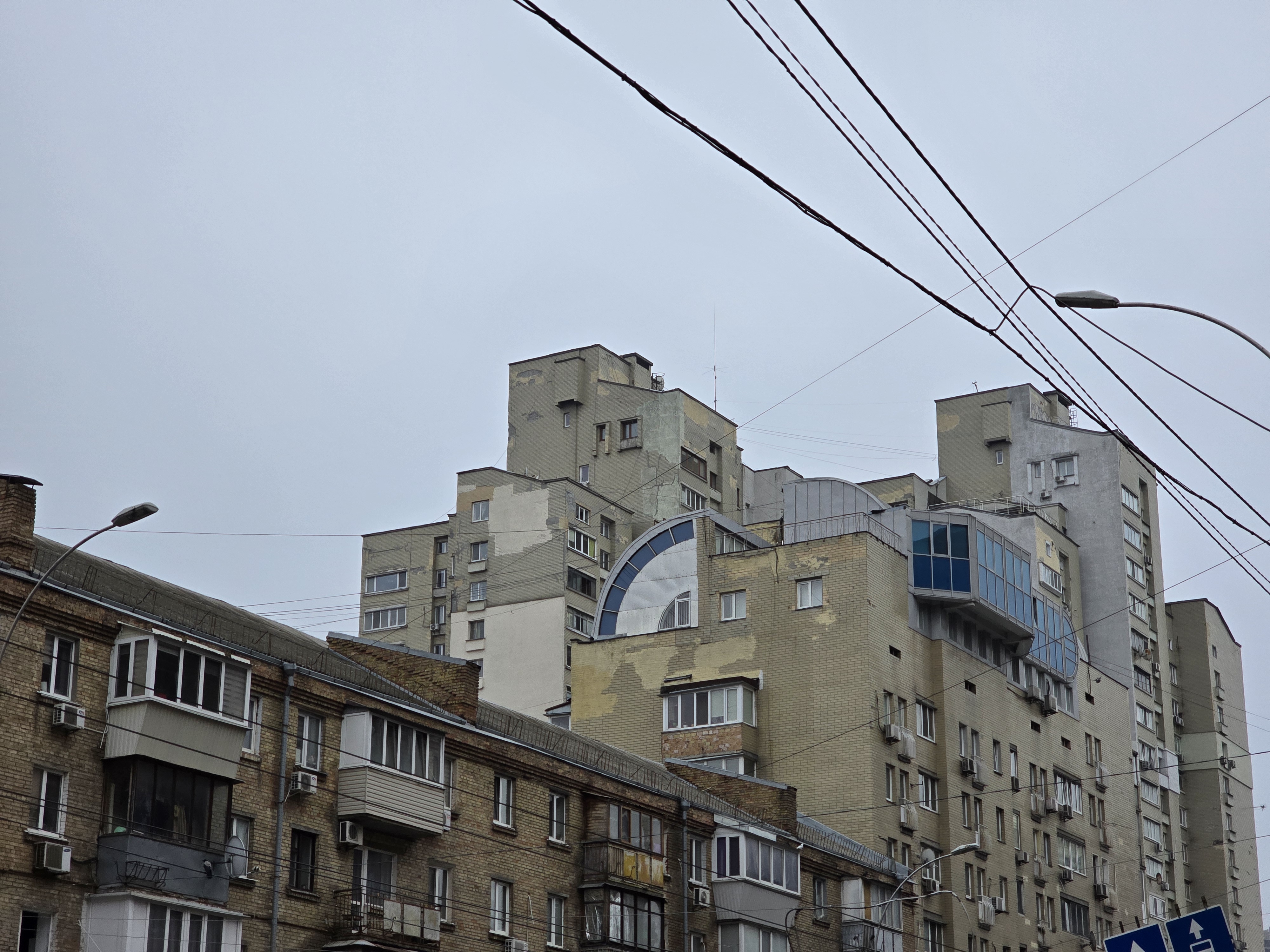









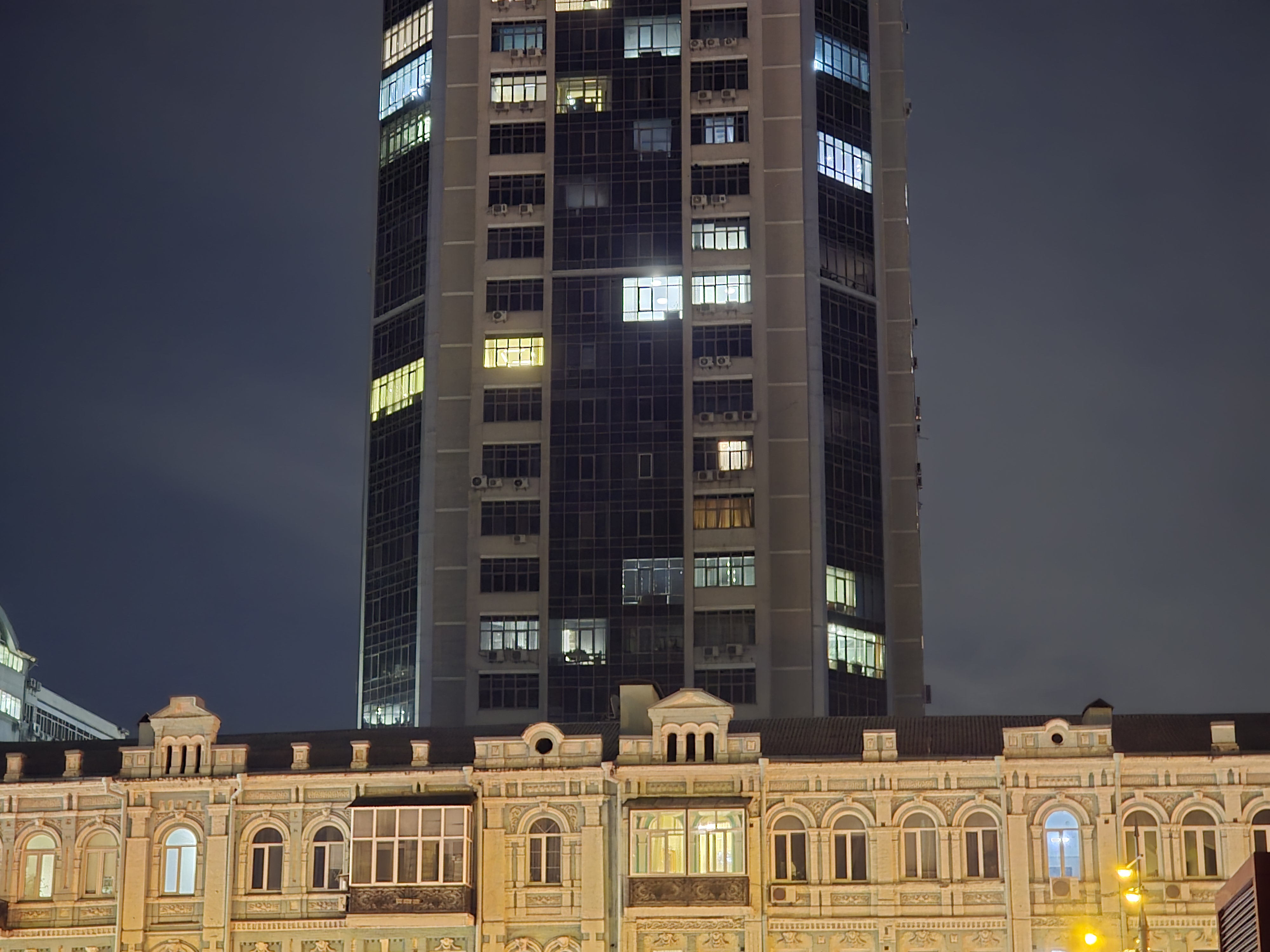
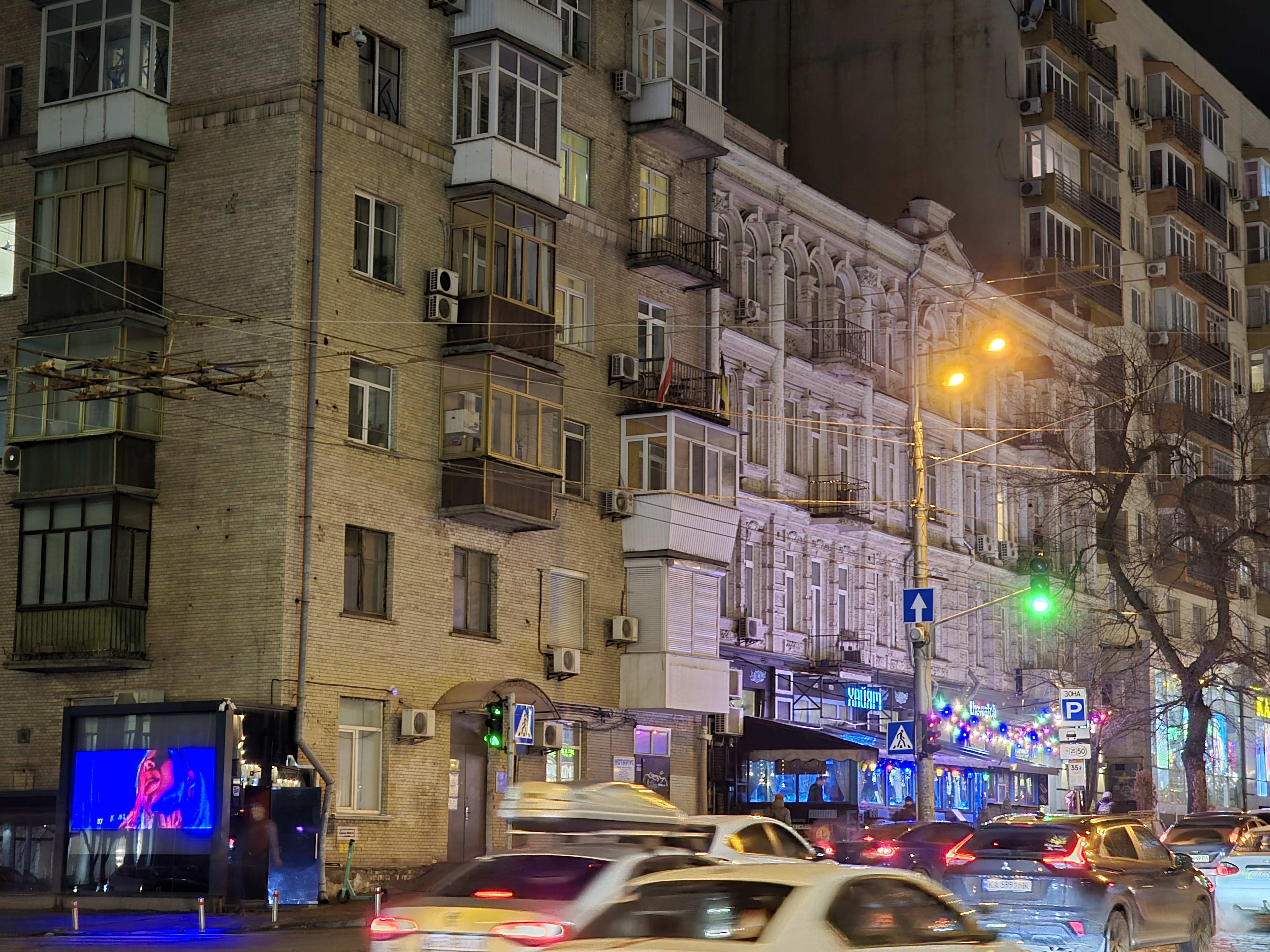
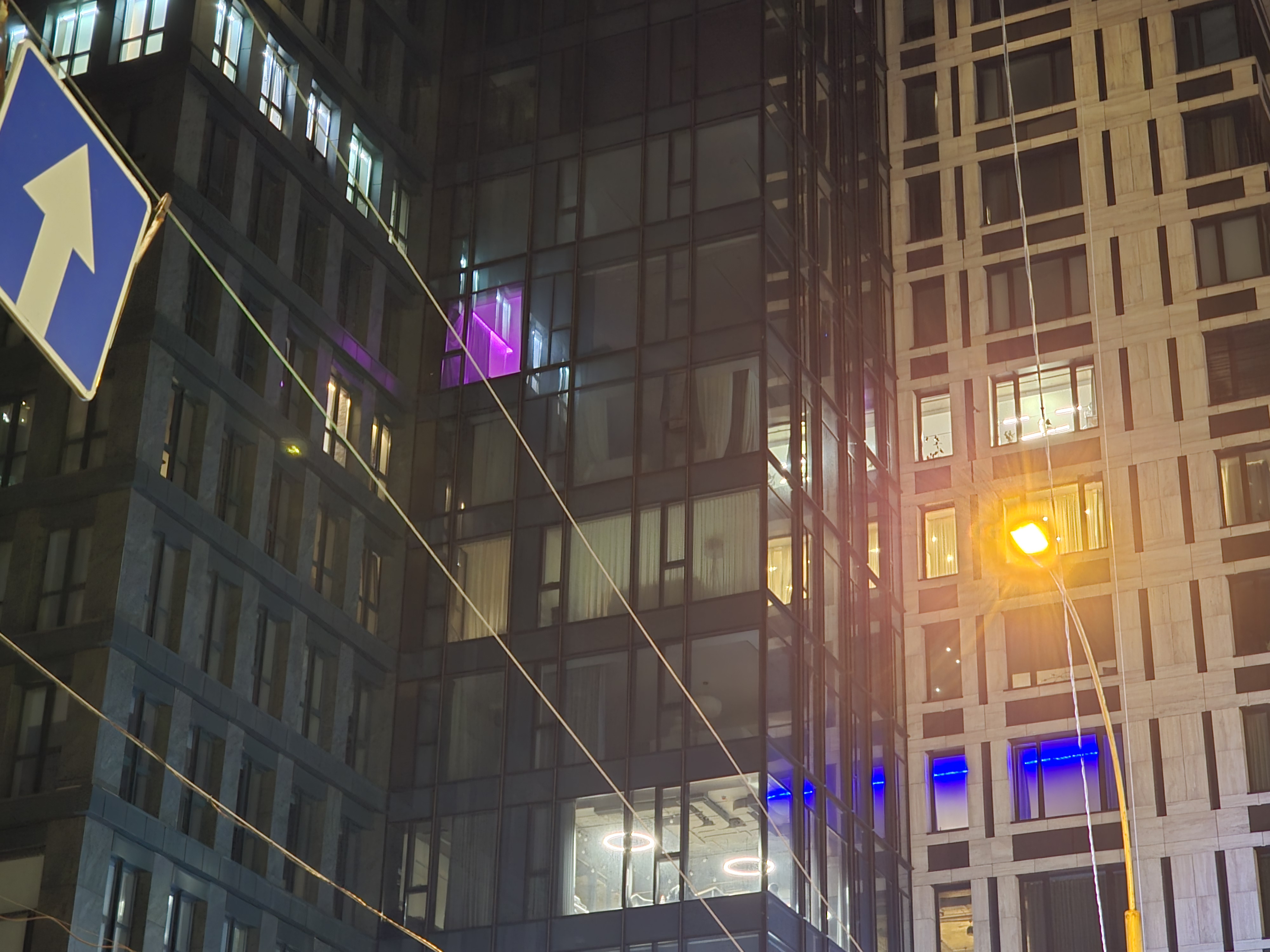

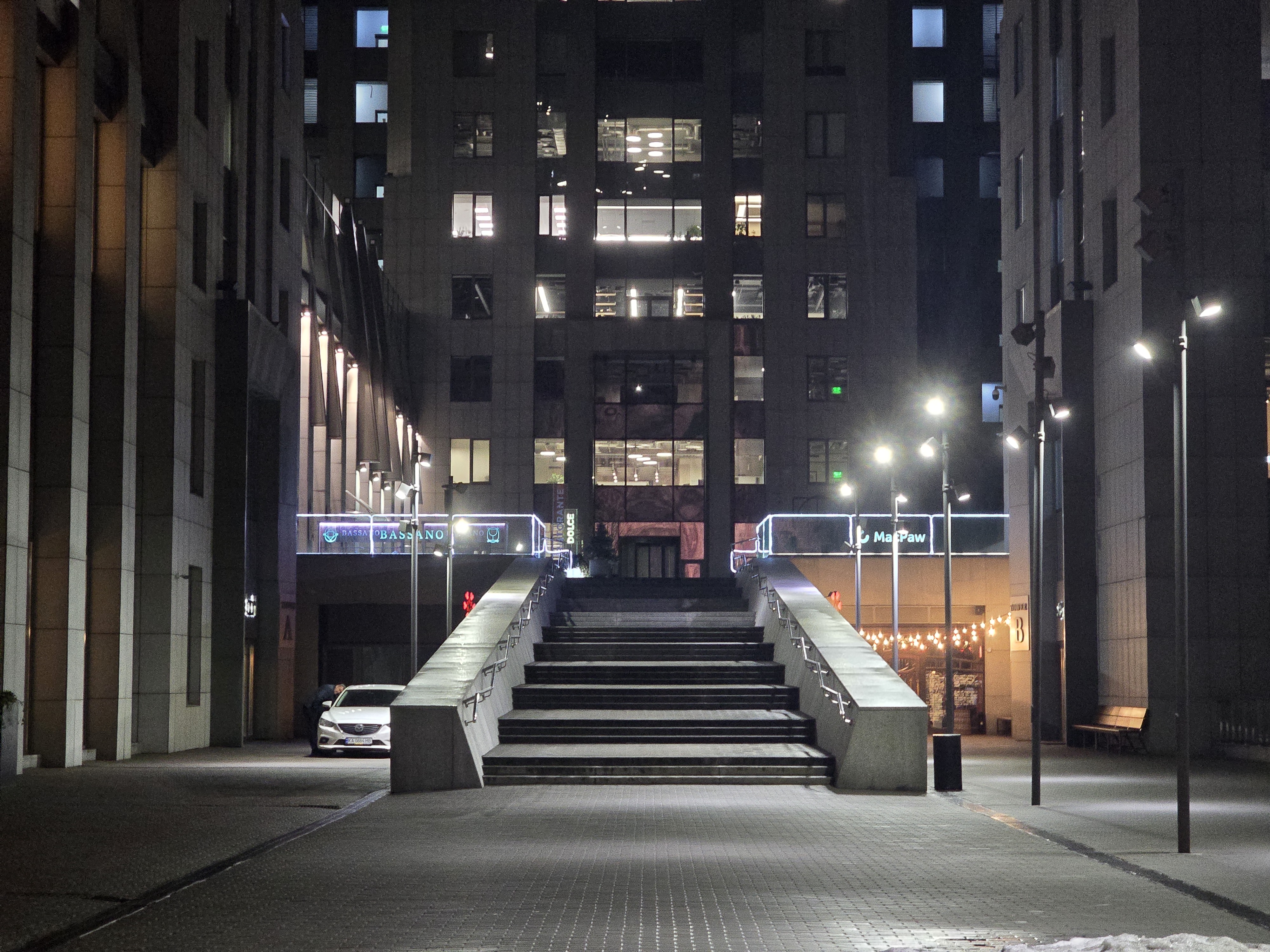


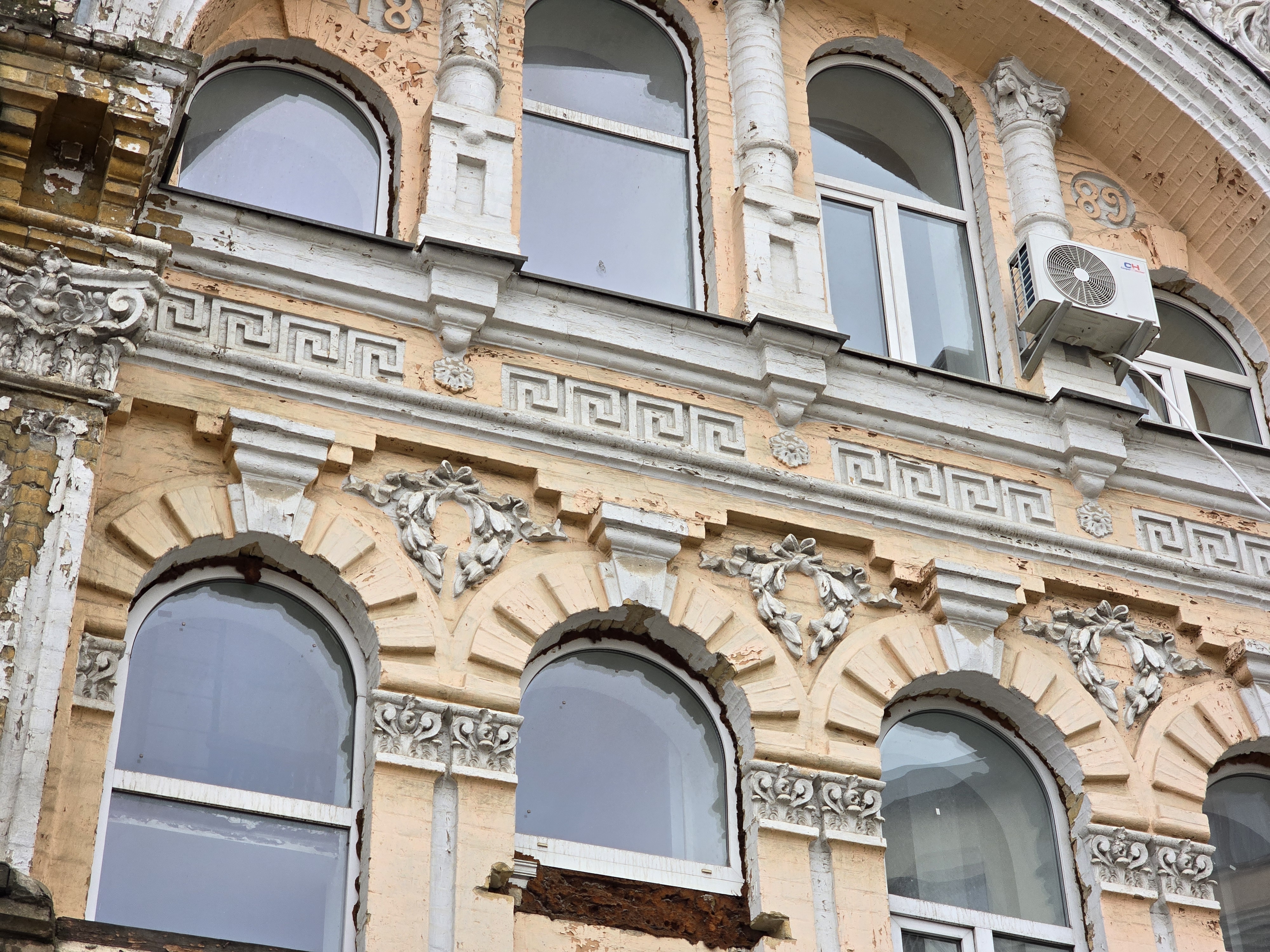





















As mentioned earlier, the periscopic telephoto camera has a native zoom of 5x. Even in low light, it makes good photos:
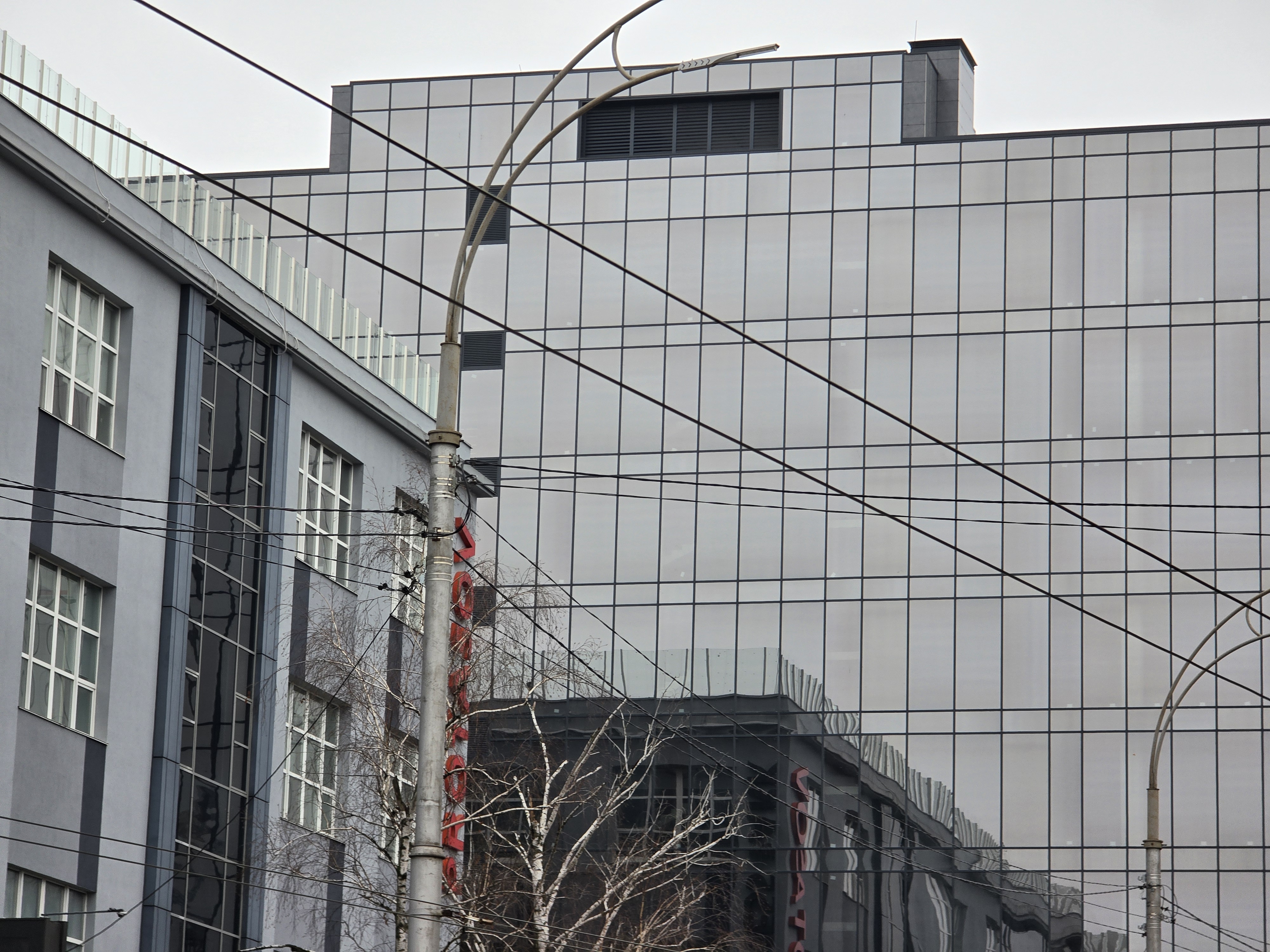
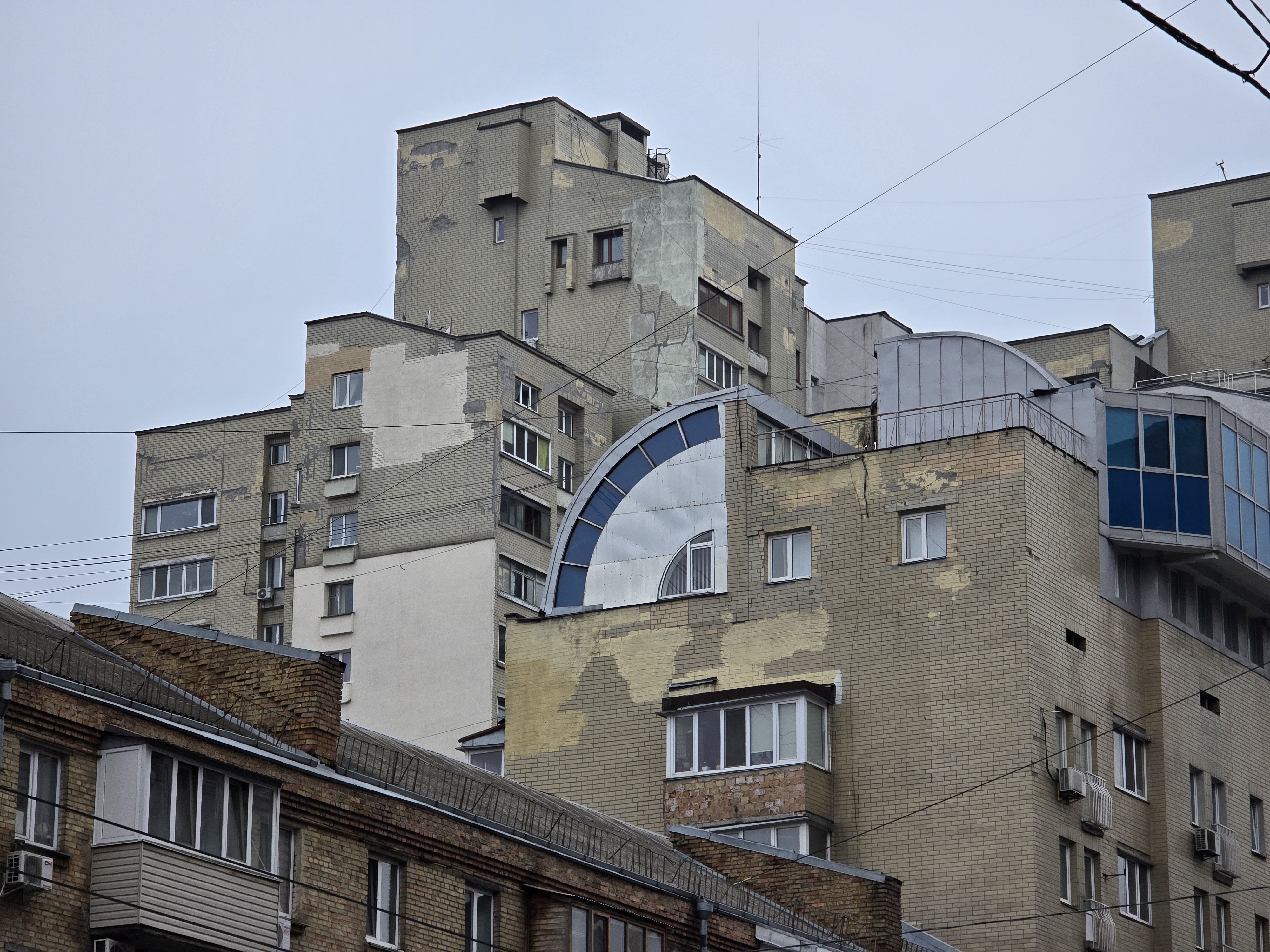








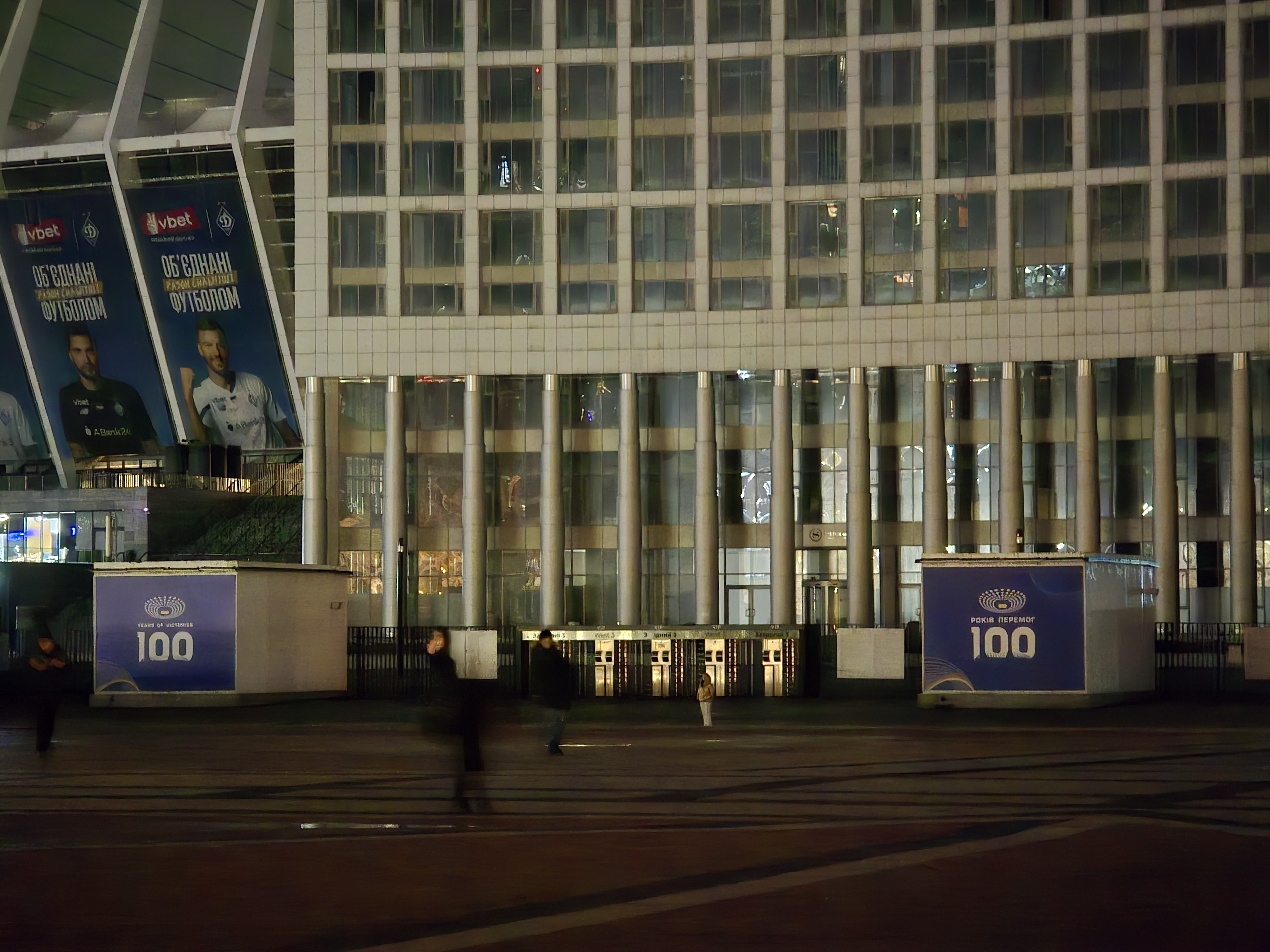
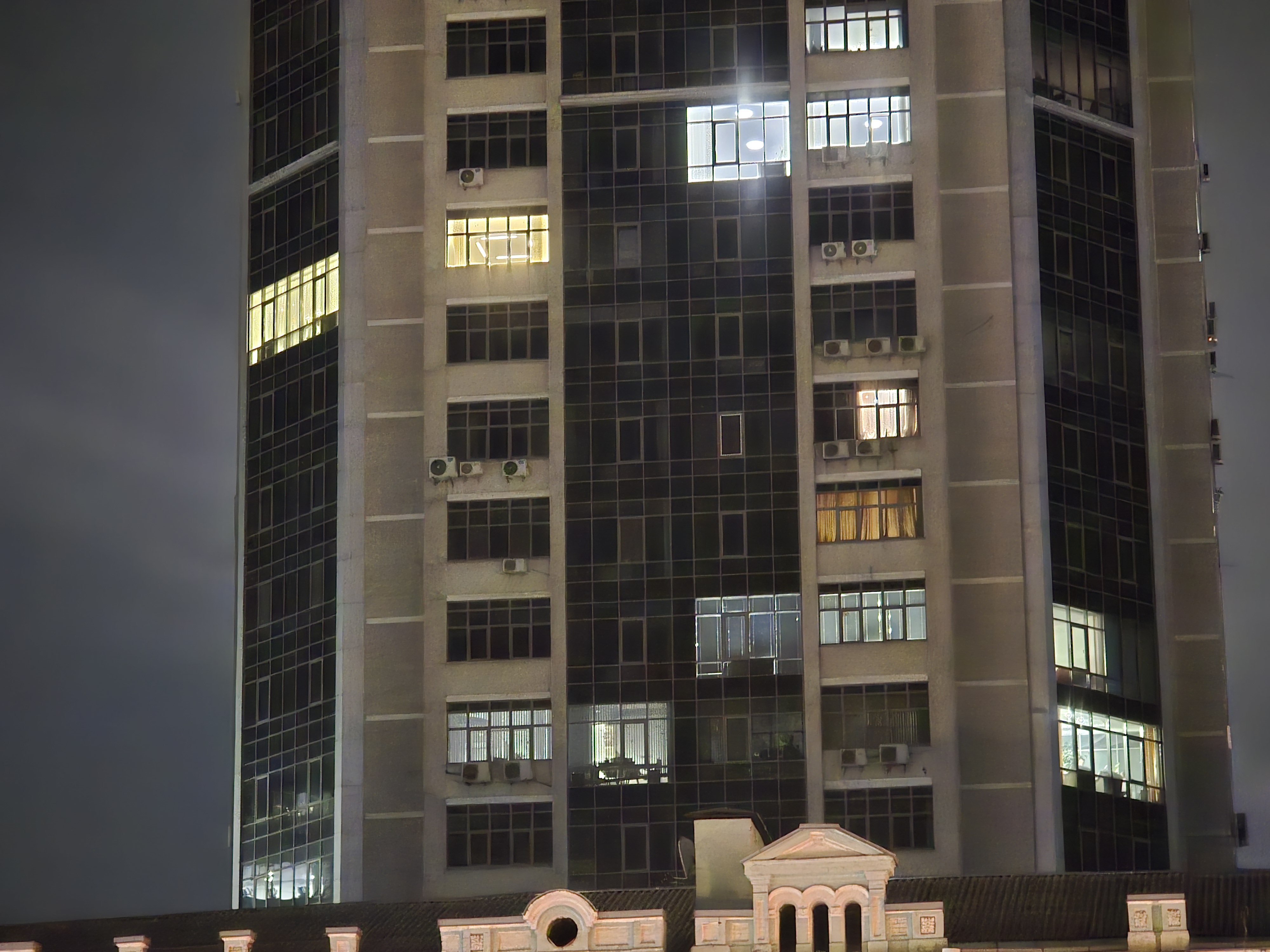




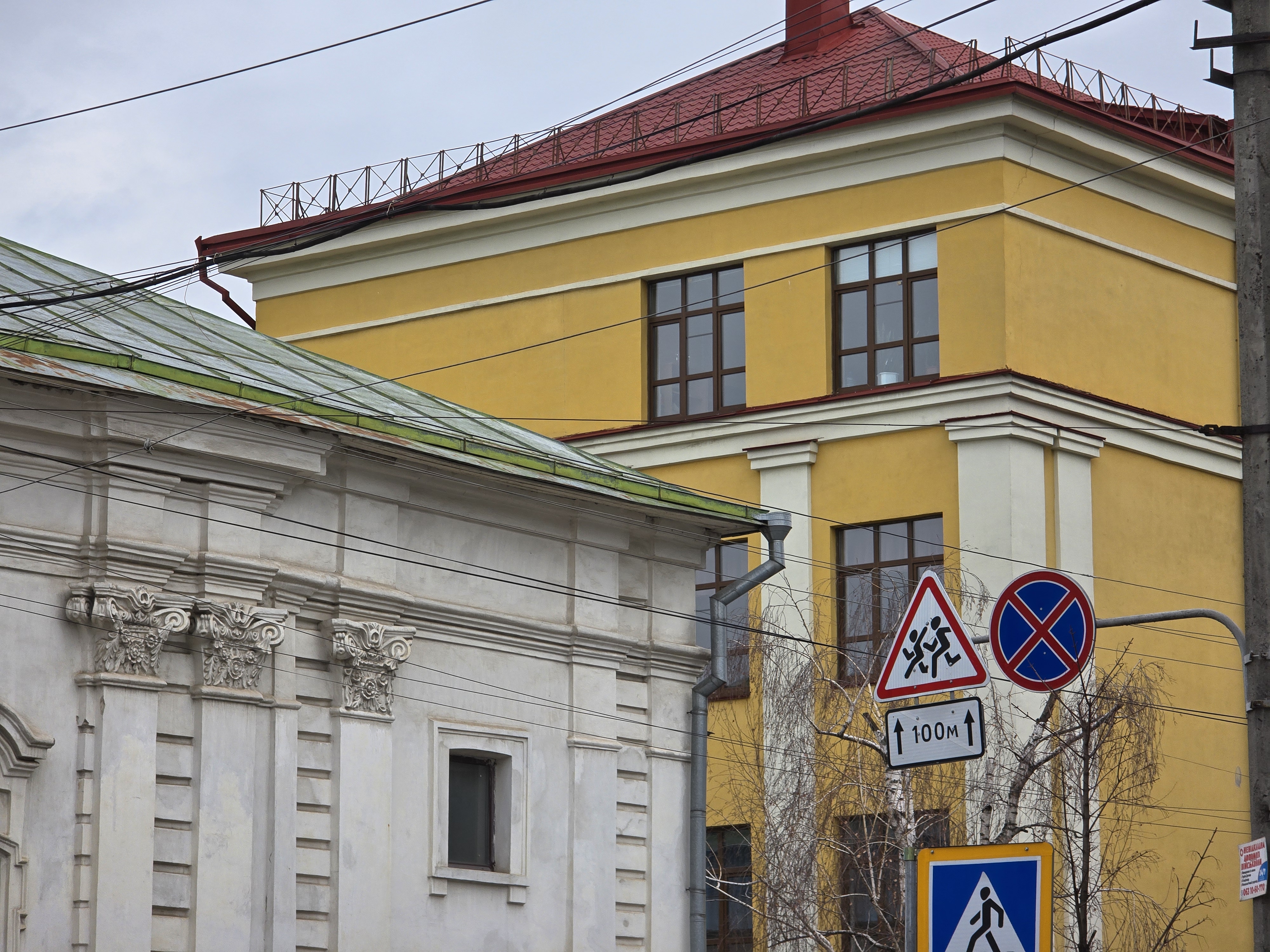























Due to the high resolution and physically larger sensor, the 10x digital zoom from the periscope camera also works very well. Noise is minimal and even in the evening you can take clear photos:
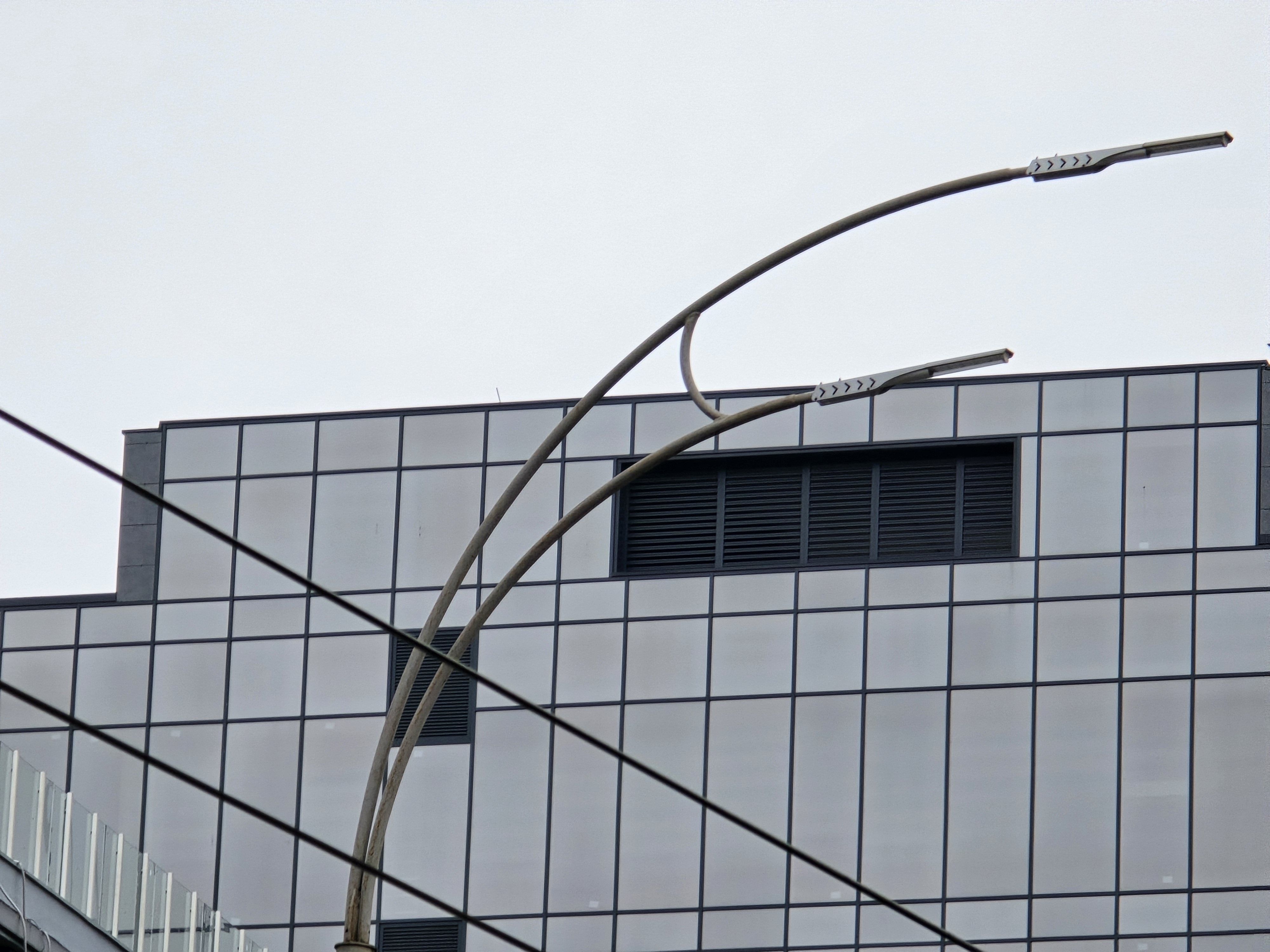




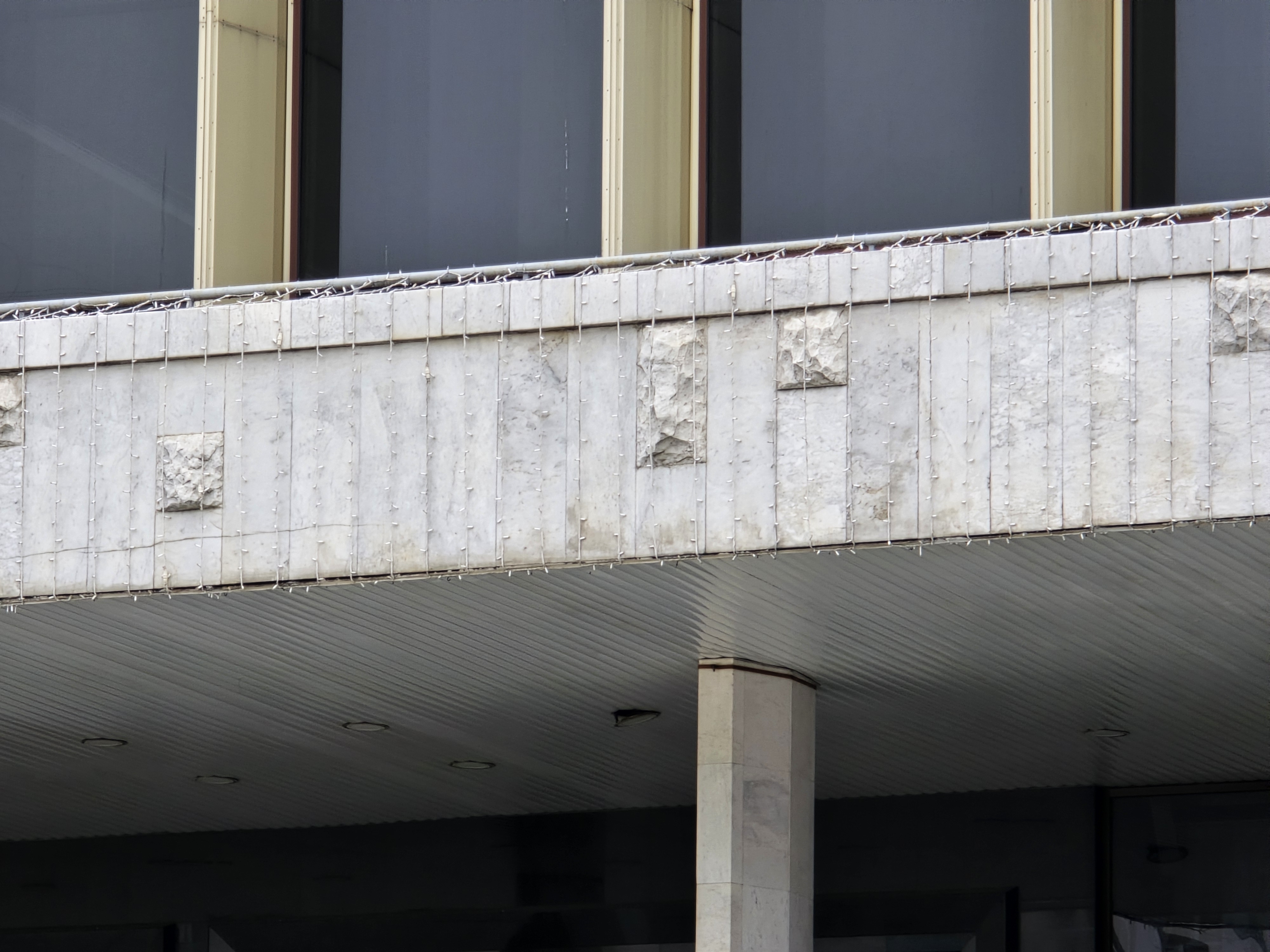

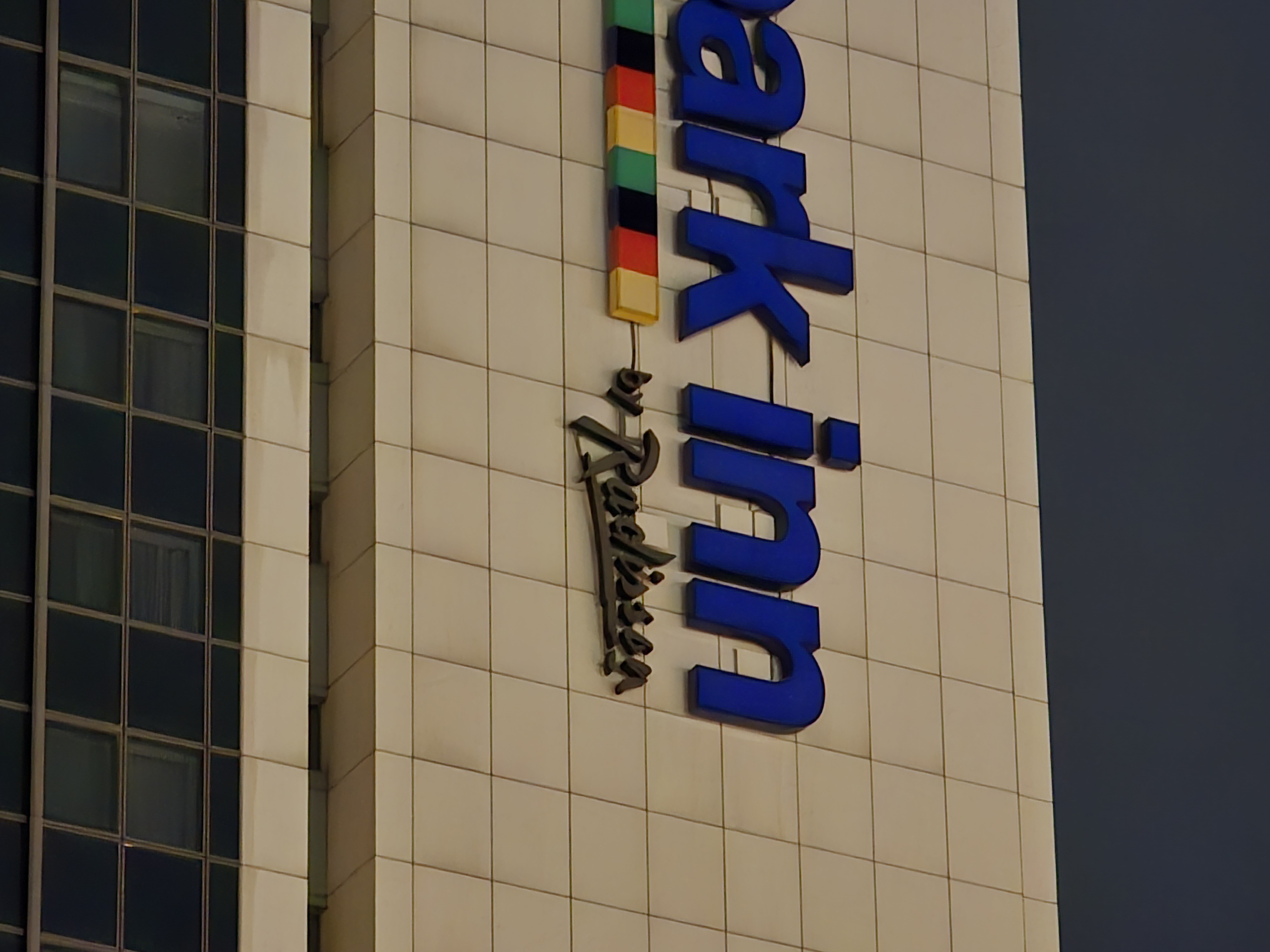







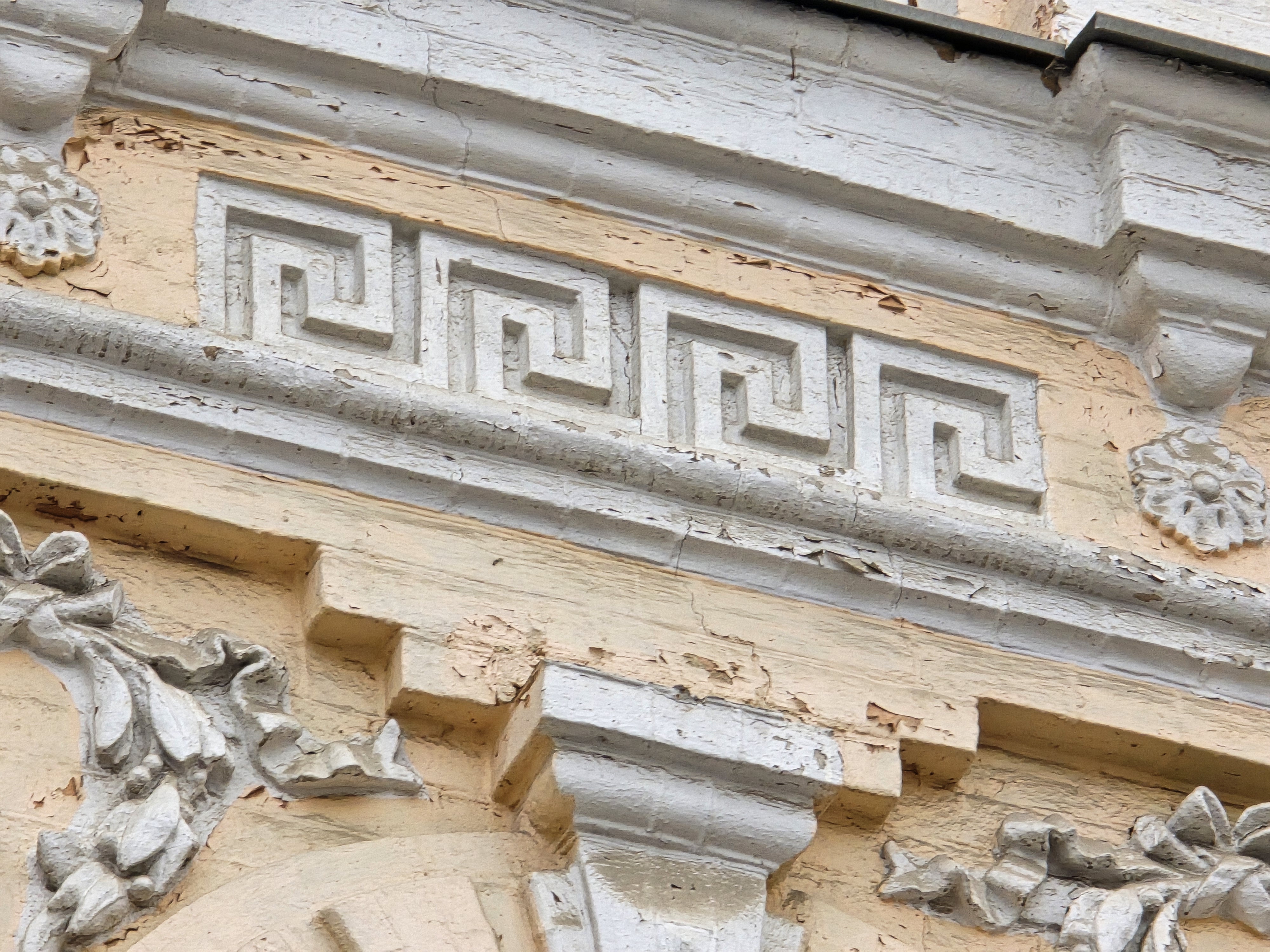






















Video on the smartphone is of high quality, stabilisation works well at 4K 60 FPS:
- Bright AMOLED display with Gorilla Glass Armour and anti-reflective layer
- Top-of-the-line Qualcomm Snapdragon 8 Gen 3 processor
- Excellent cameras with a maximum range of features
- Digital S Pen with additional features
- A set of interesting and useful Galaxy AI features based on machine learning and neural networks
To sum up: four things you need to know about the Samsung Galaxy S24 Ultra.
- The Samsung Galaxy S24 Ultra is one of the most technologically advanced and functional smartphones available today.
- It is equipped with a super-powerful Qualcomm Snapdragon 8 Gen 3 processor.
- The rear camera system is versatile and takes great pictures in any situation.
- The smartphone is equipped with one of the best displays available.
Samsung Galaxy S24 Ultra and Galaxy S23 Ultra specs comparison:
| Specifications | ||
|---|---|---|
| Samsung Galaxy S24 Ultra | Samsung Galaxy S23 Ultra | |
| Display | Flat Dynamic LTPO AMOLED 2x, 6.8 inches, 3120x1440 (aspect ratio 19.5:9), 505 ppi, HDR10+, 1-120 Hz, Gorilla Glass Armor, peak brightness 2600 nits | Curved on the sides Dynamic LTPO AMOLED 2x, 6.8 inches, 3088x1440 (aspect ratio 19.3:9), 500 ppi, HDR10+, 1-120 Hz, Gorilla Glass Victus 2, peak brightness 1750 nits |
| Body | dimensions: 162.3 x 79 x 8.6 mm, weight: 232 g |
dimensions: 163.4x78.1x8.9 mm, weight: 234 g |
| Processor | 64-bit 4nm Qualcomm Snapdragon 8 Gen 3, 1x3.3 GHz Cortex-X4, 5x3.2 GHz Cortex-A720, 2x2.3 GHz Cortex-A520, Adreno 750 graphics, 1 GHz | 64-bit 4nm Qualcomm Snapdragon 8 Gen 2 Mobile Platform for Galaxy, 1x3.36 GHz Cortex-X3, 2x2.8 GHz Cortex-A715, 2x2.8 GHz Cortex-A710, 3x2.0 GHz Cortex-A510, Adreno 740 719 MHz graphics |
| RAM | 12 GB LPDDR5x | 8/12 GB |
| Flash memory | 256/512 GB/1 TB UFS 4.0 | 256/512 GB/1 TB UFS 4.0 |
| Camera | 200 MP (f/1.7, 23 mm EFE, 1/1.3", 0.6 µm, Dual Pixel PDAF, OIS); periscopic telephoto 50 MP (PDAF, OIS, 5x zoom); telephoto 10 MP (f/2.4, 70 mm, 1/3.52", 1.12µm, Dual Pixel PDAF, OIS, 3x zoom); ultra-wide-angle 12 MP (f/2.2, 13 mm, 120˚, 1/2.55", 1.4µm, Dual Pixel PDAF); flash, video 8K@30fps, 2160p@60fps, 1080p@240fps, 720p@960fps; front camera: 12 MP (f/2.2, 25 mm, PDAF) |
200 MP (f/1.7, 23 mm ECF, 1/1.3", 0.6 µm, Dual Pixel PDAF, OIS); periscopic telephoto 10 MP (f/4.9, 230 mm ECF, 1/3.52", 1.12 µm, Dual Pixel PDAF, OIS, 10x zoom); telephoto 10 MP (f/2.4, 70 mm, 1/3.52", 1.12µm, Dual Pixel PDAF, OIS, 3x zoom); ultra-wide-angle 12 MP (f/2.2, 13 mm, 120˚, 1/2.55", 1.4µm, Dual Pixel PDAF); flash, video 8K@30fps, 2160p@60fps, 1080p@240fps, 720p@960fps; front camera: 12 MP (f/2.2, 25 mm, PDAF) |
| Wireless technologies | Wi-Fi 802.11 a/b/g/n/ac/6e/7 (tri-band), Bluetooth 5.3 LE, NFC | Wi-Fi 802.11 a/b/g/n/ac/6e (tri-band), Bluetooth 5.3 LE, NFC |
| GPS | GPS, A-GPS, GLONASS, BDS, GALILEO | GPS, A-GPS, GLONASS, BDS, GALILEO |
| Battery | 5000 mAh, non-removable, 45W fast charging, 15W wireless charging, wireless reverse charging | 5000 mAh, non-removable, 45W fast charging, 15W wireless charging, reverse wireless charging |
| Operating system | Android 14 + One UI 6.1 | Android 13 + One UI 5.1 |
| Sim-card | 2xNanoSIM | 2xNanoSIM |
| Optional | S Pen, IP68 dust and water protection, ultrasonic in-screen fingerprint scanner, Samsung Wireless DeX | S Pen, IP68 dust and water protection, ultrasonic in-screen fingerprint scanner, Samsung Wireless DeX |

